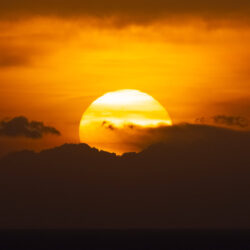After breakfast at the Crowne Plaza Sapporo, we headed to Maruyama Park and the Hokkaido Shrine. After, we explored the city center where we saw preparations for the annual Sapporo Snow Festival. We had lunch and dinner and saw some of the city’s winter illuminations.
Morning
After waking up at the ANA クラウンプラザホテル札幌 Crowne Plaza Sapporo, we headed downstairs for breakfast.
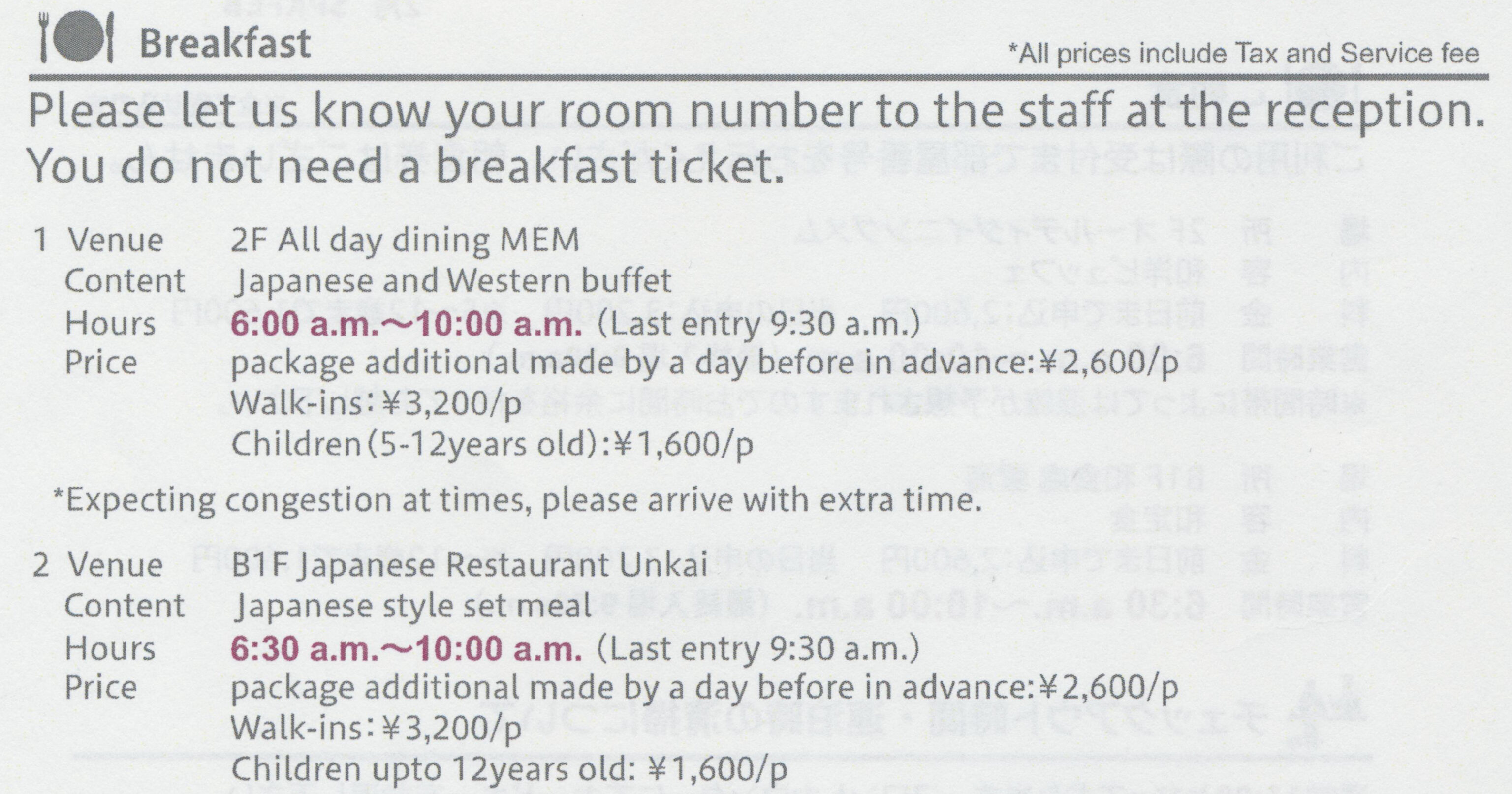
There are two breakfast options, one is in the basement and serves a Japanese style set breakfast. The other, on the second floor, is buffet style. We opted for the buffet style as we wanted the increased variety that typically comes with a buffet.
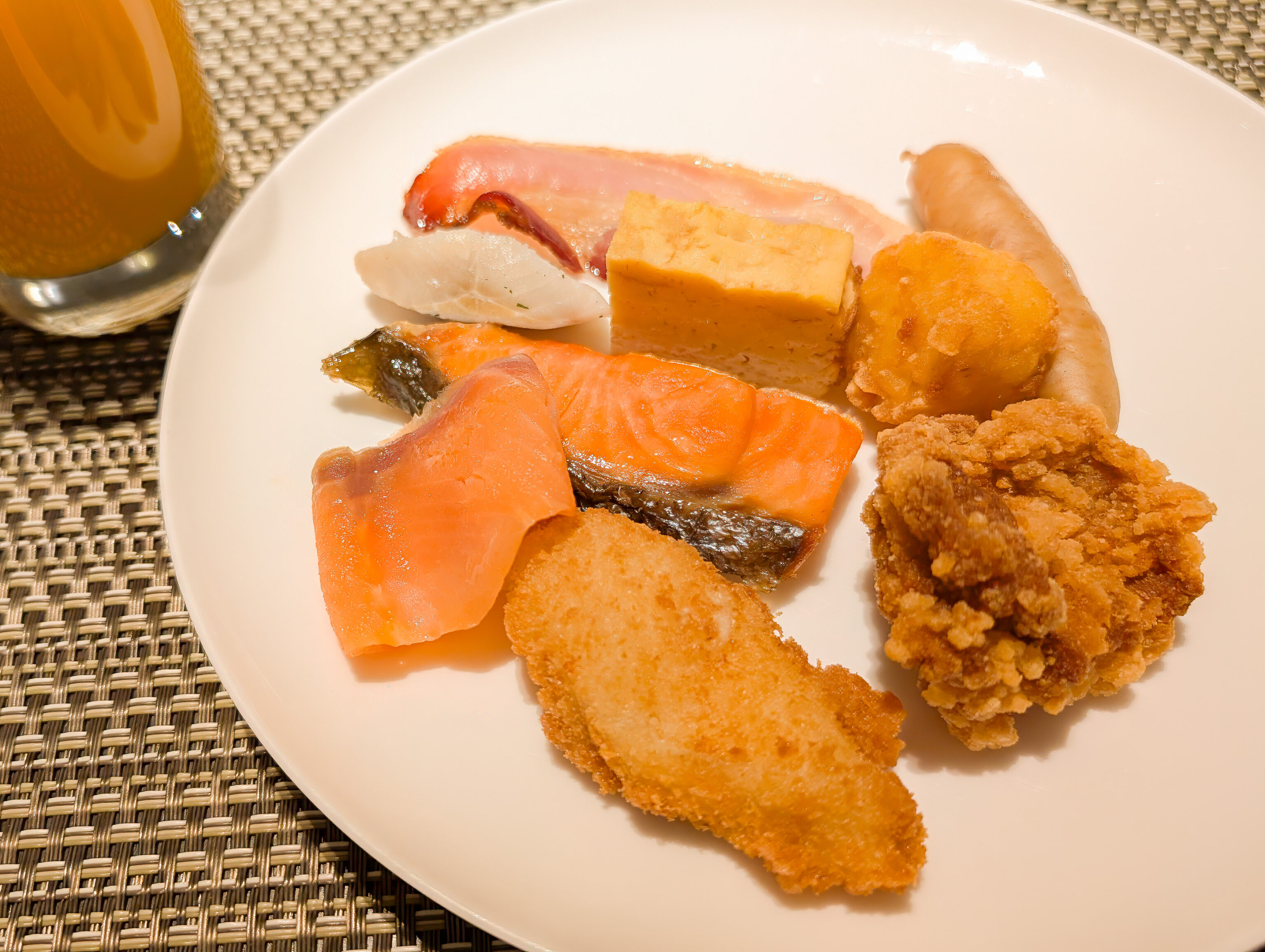
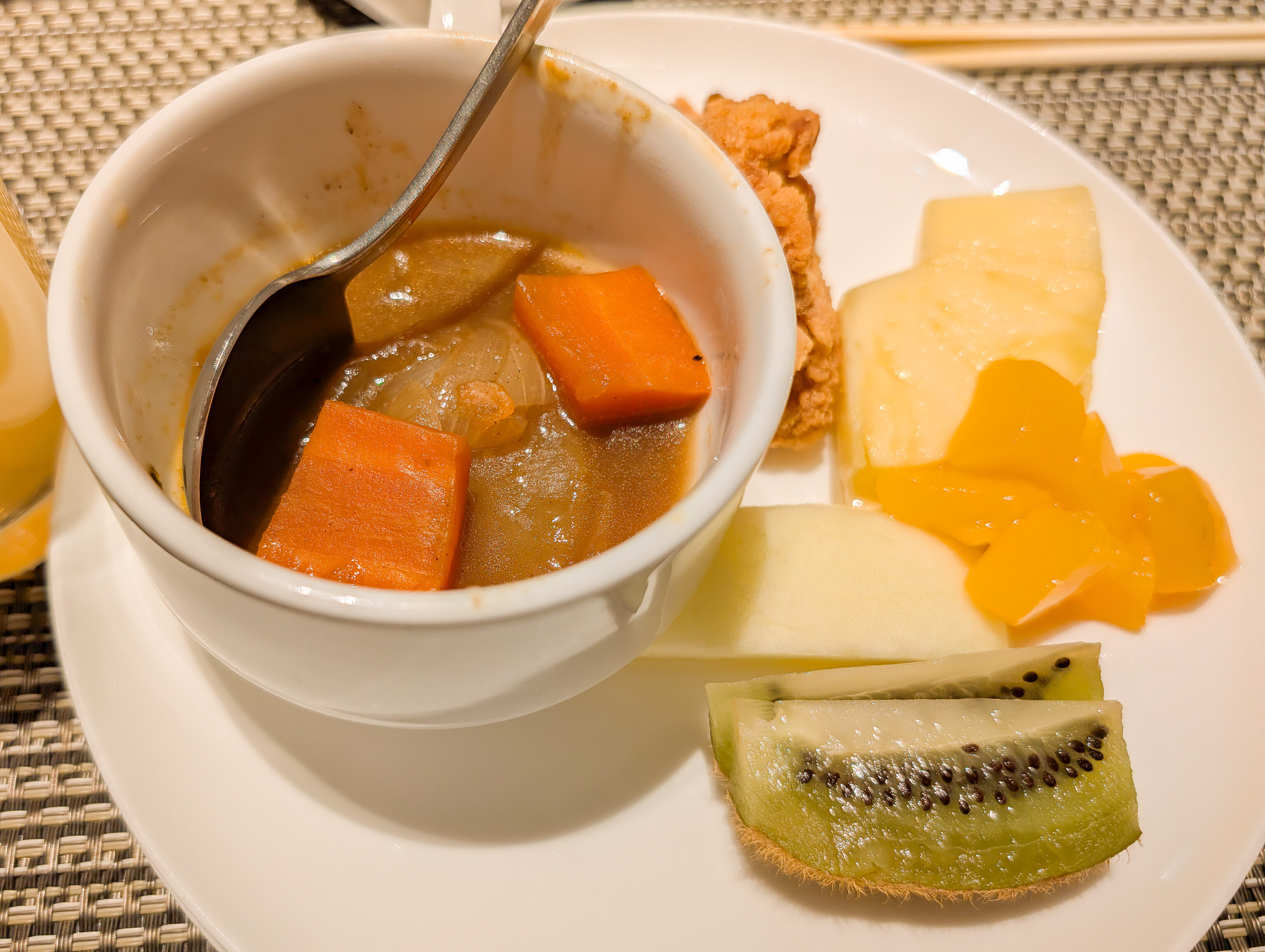
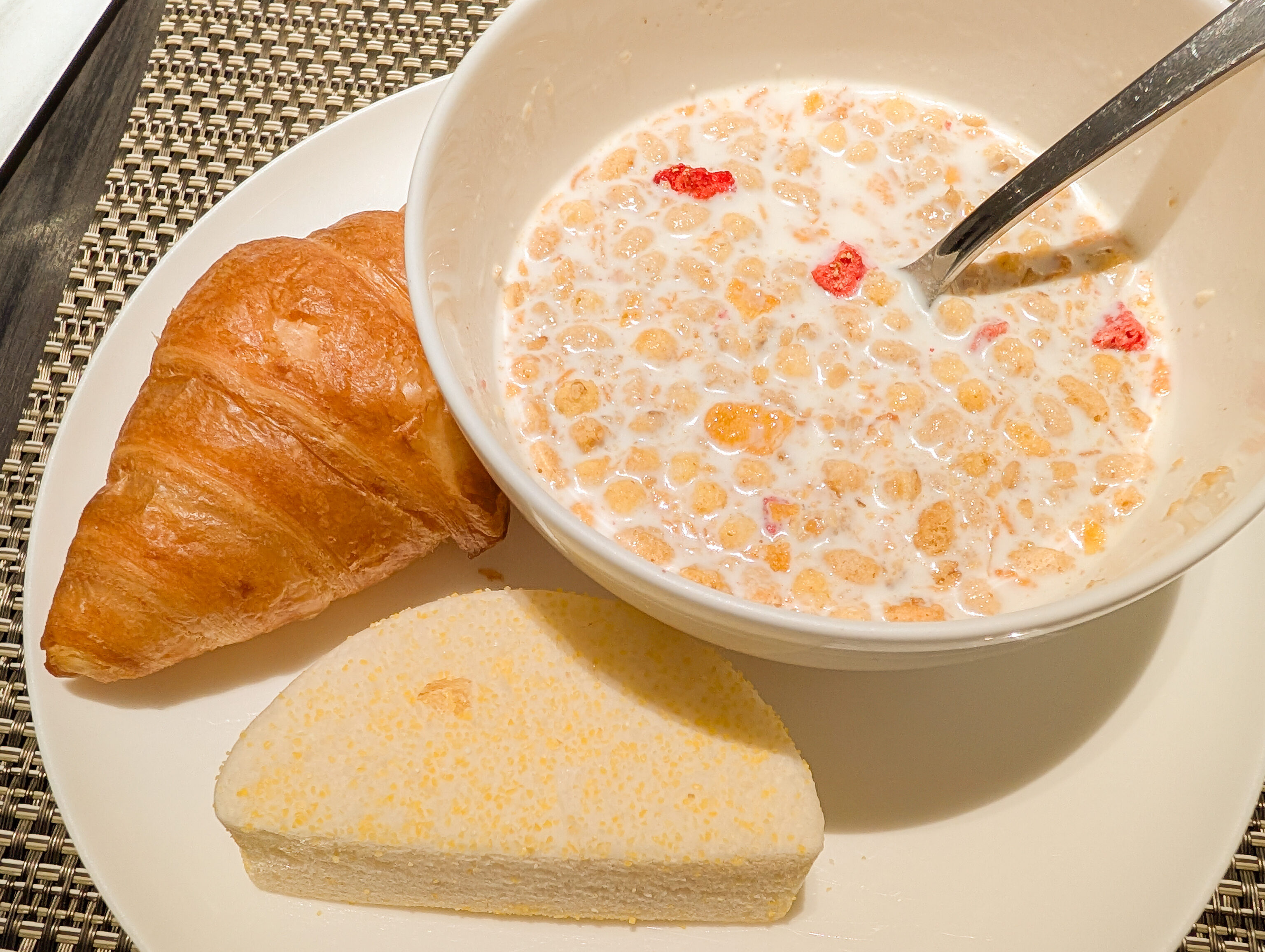
It was kind of mediocre by Japanese breakfast buffet standards, though at least there was a reasonable selection.

We headed back to the room to get ready to head out for the day.
Maruyama Koen
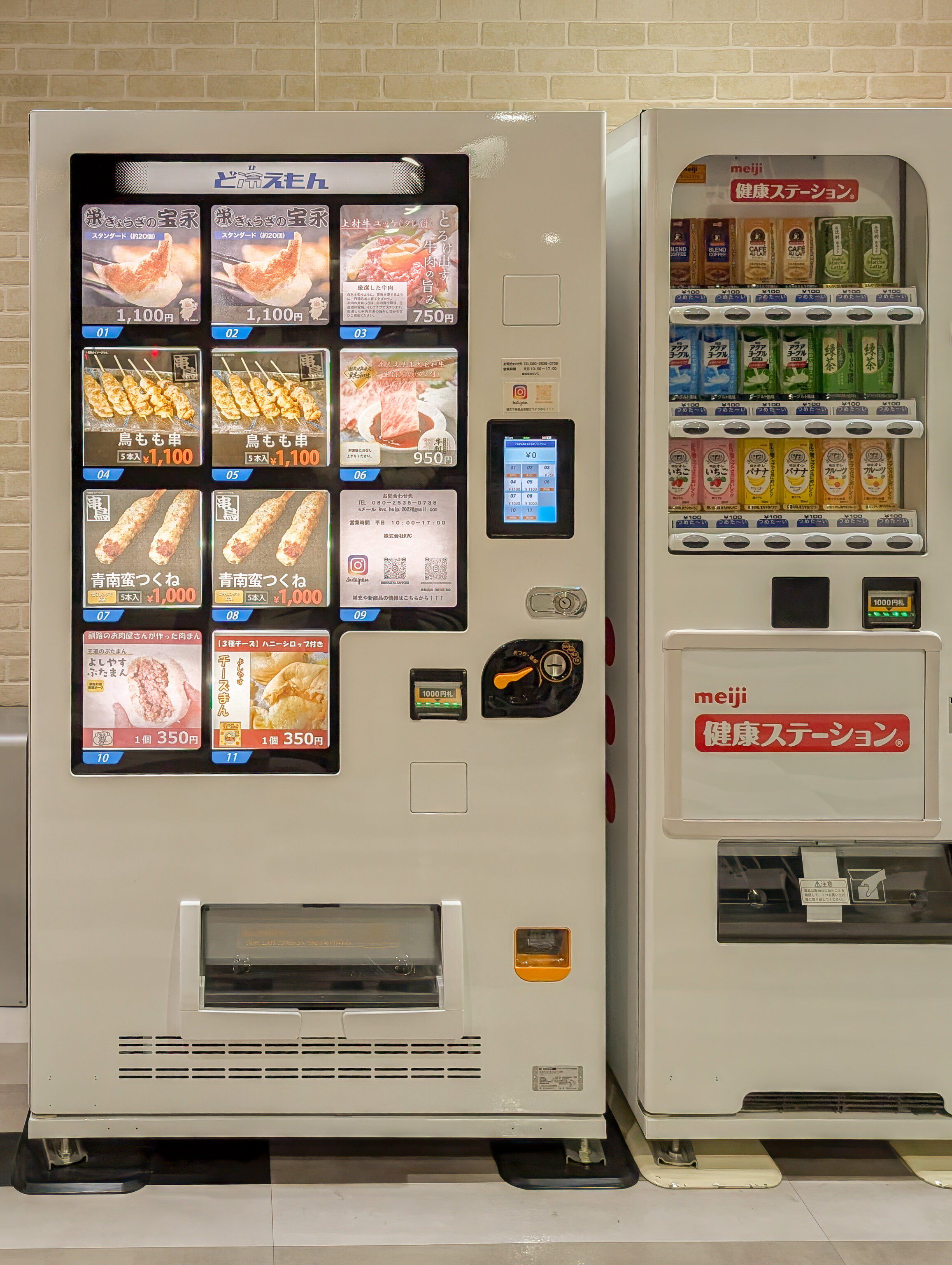
We took the subway over to to the 円山公園駅 Maruyama Park Station, on the west side of the city’s downtown area and at the foothills of the mountains to the west.
After arriving at the station, we noticed this vending machine that sells various hot snack food items like yakitori! We definitely haven’t seen this kind of vending machine before!
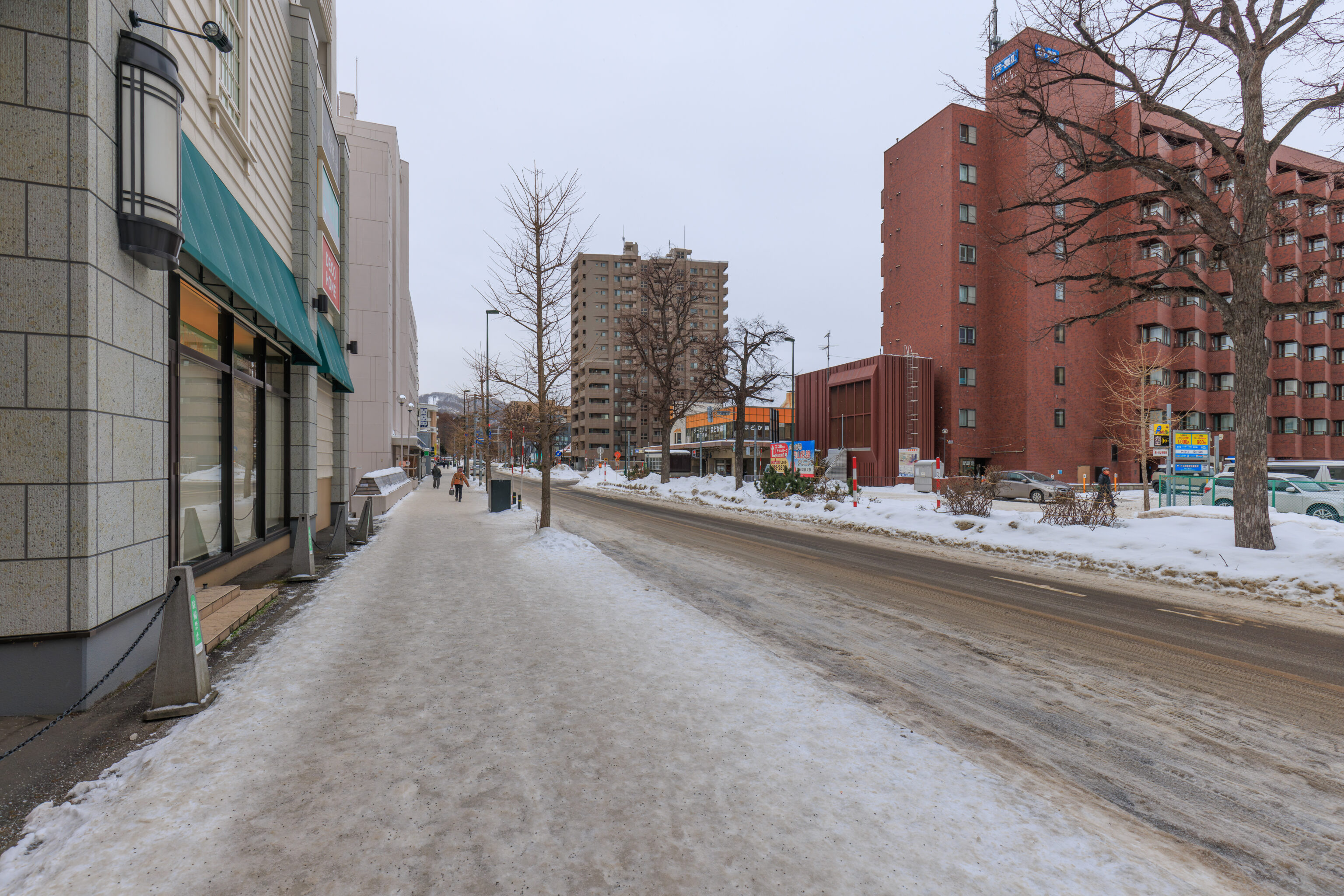
After going up to surface level, we took an elevator and ended up in an indoor shop area which wasn’t open for business yet. A worker directed us to the door so we could get out of the building! Once outside, we started walking on the snow covered sidewalk to the west.
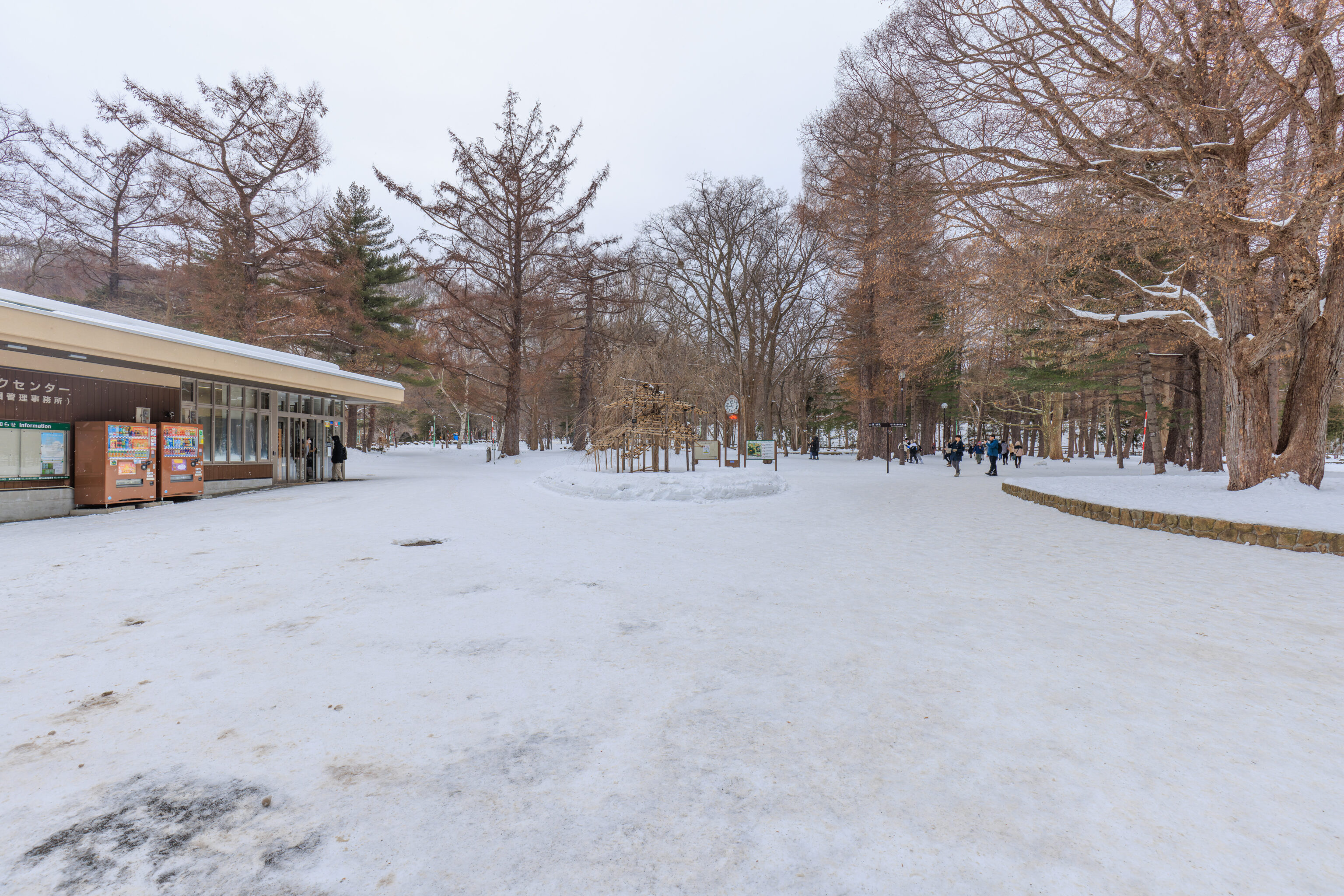
A few blocks later, we were at 円山公園 Maruyama Park.
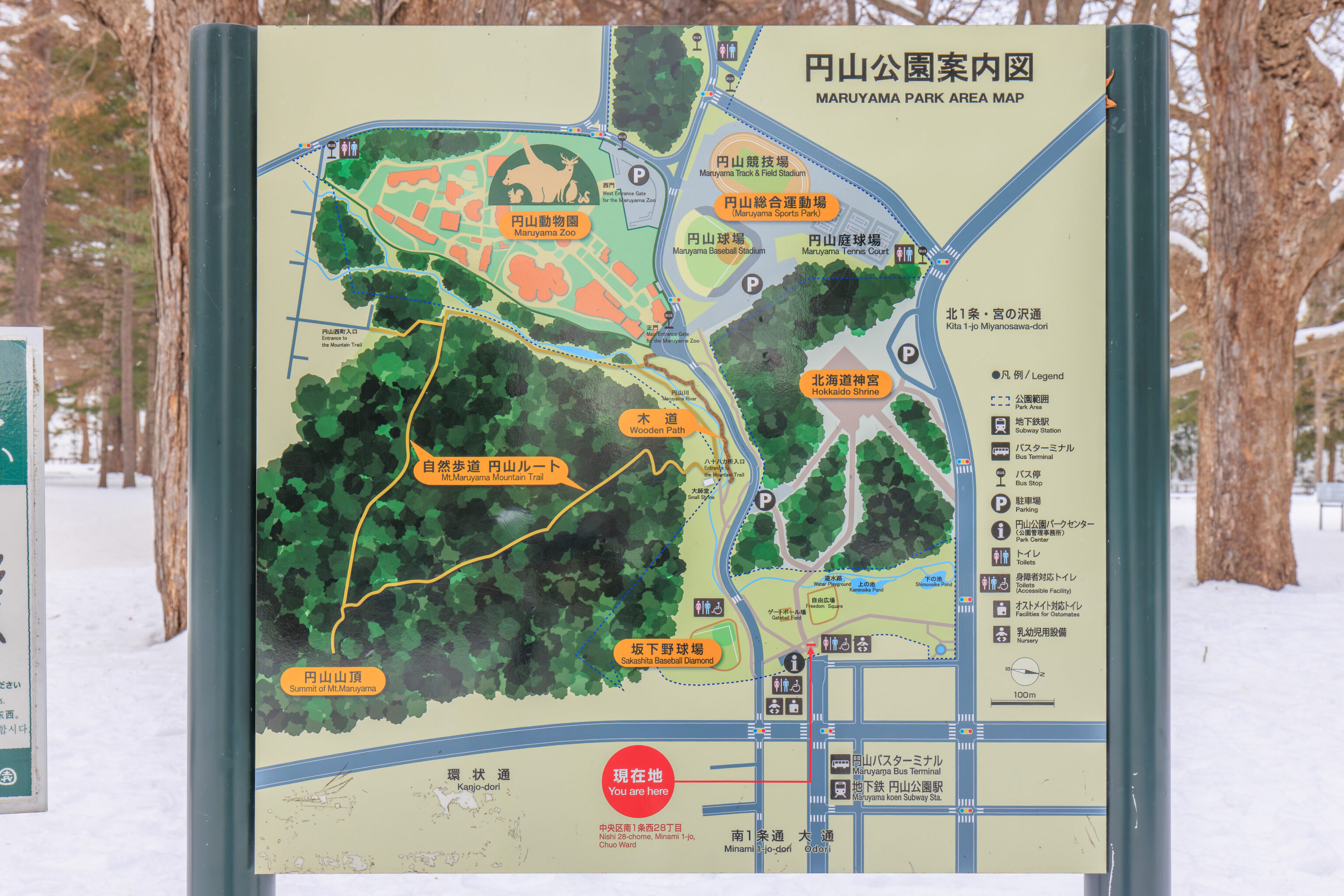
This map was useful! We’re headed to the 北海道神宮 Hokkaido Shrine, also known as the 札幌神社 Sapporo Shrine, within the park.
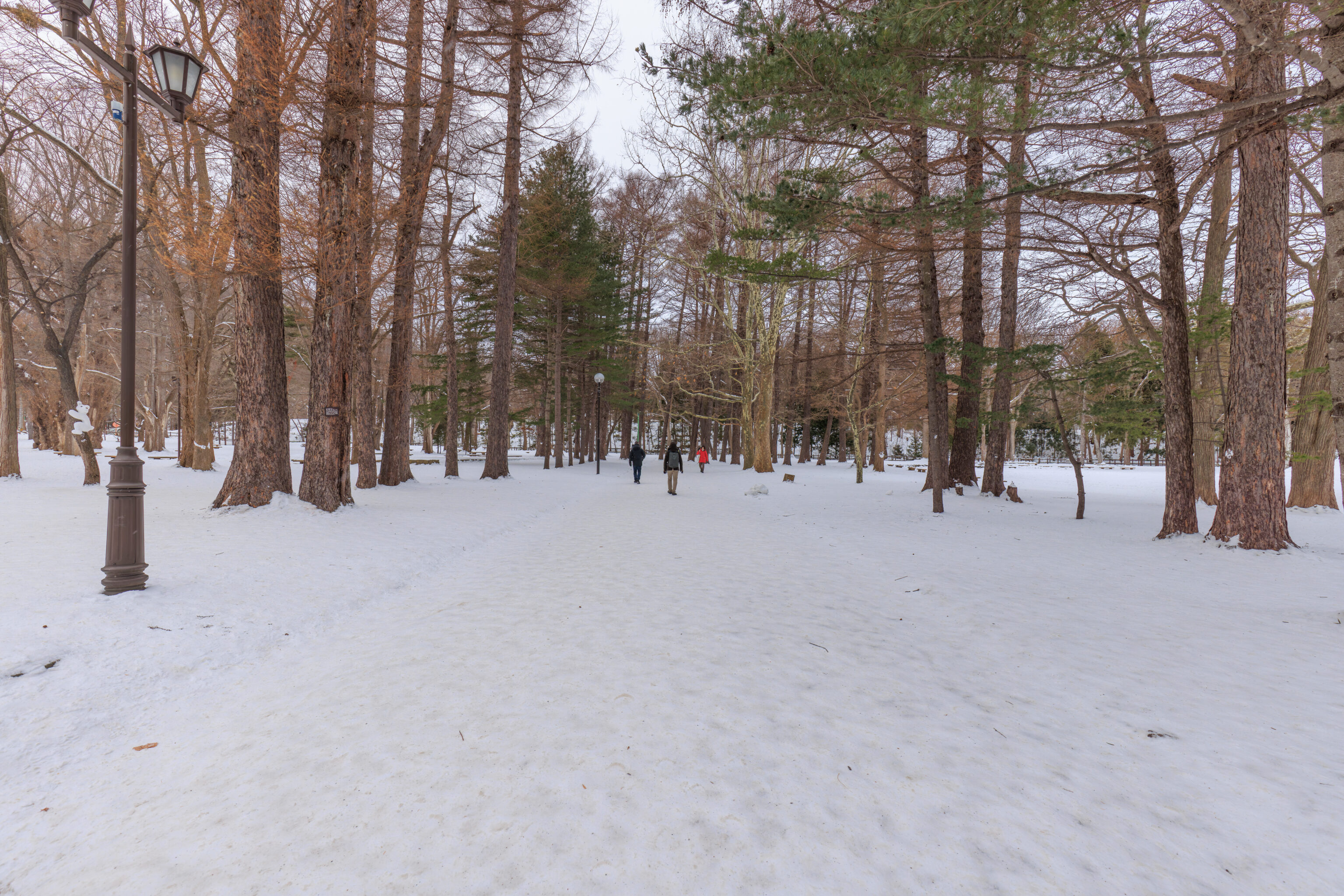
We walked into the lightly forested area ahead.
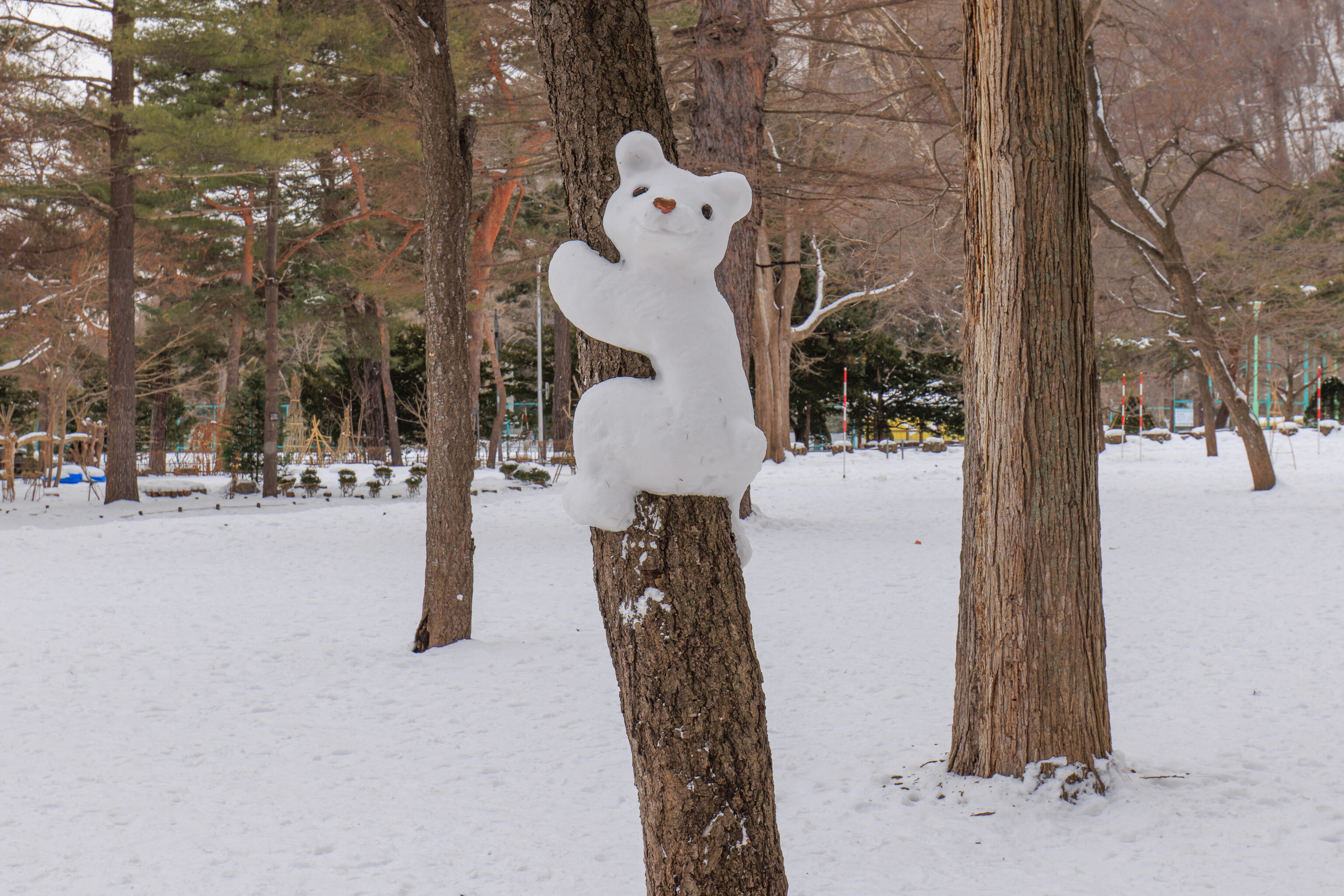
Careful observers would have noticed this snow bear, a native species of Hokkaido, in the previous photo to the left of the path!
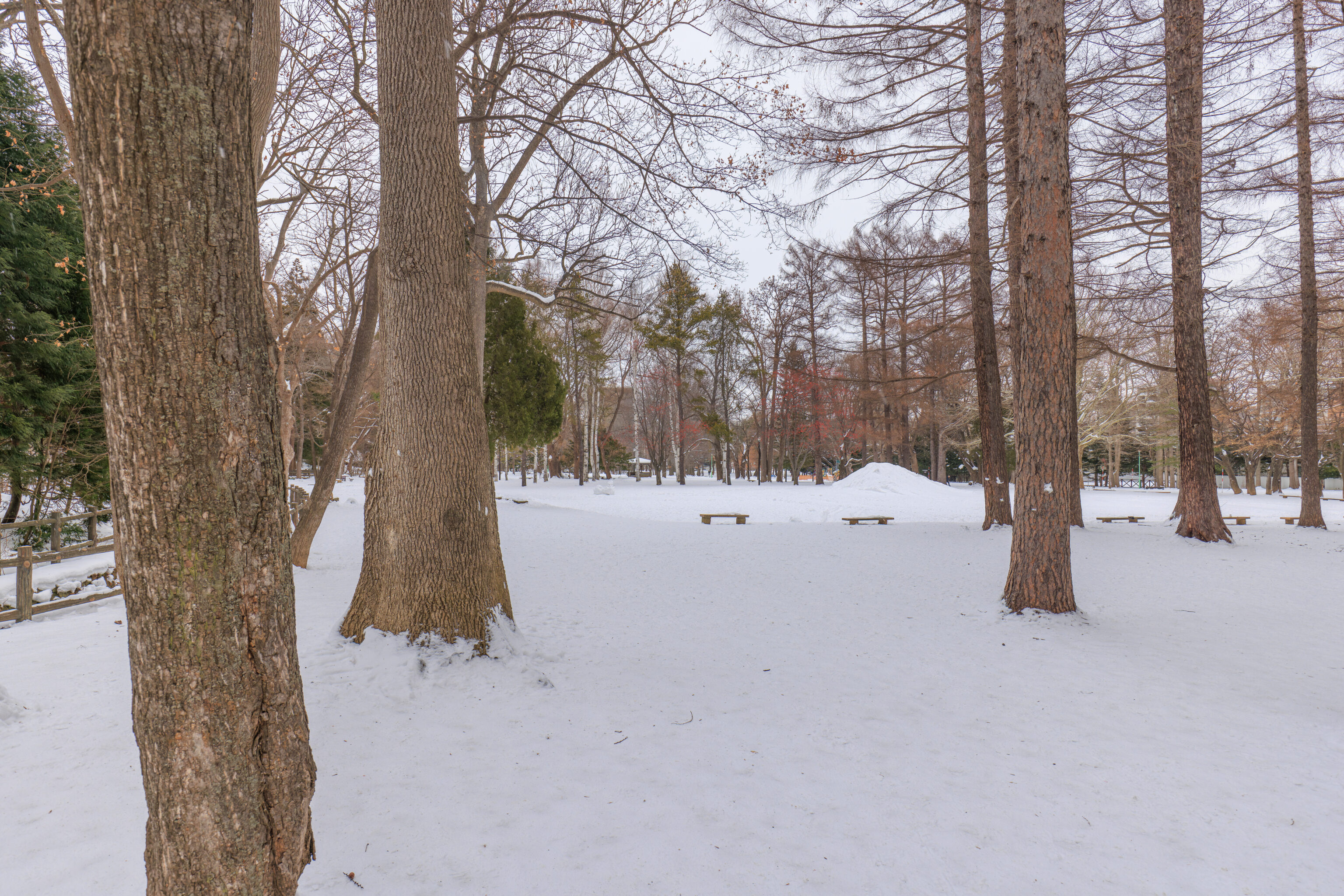
To the right, there was an open space with benches and a small mound of snow. This seems to be the Freedom Square indicated on the map?
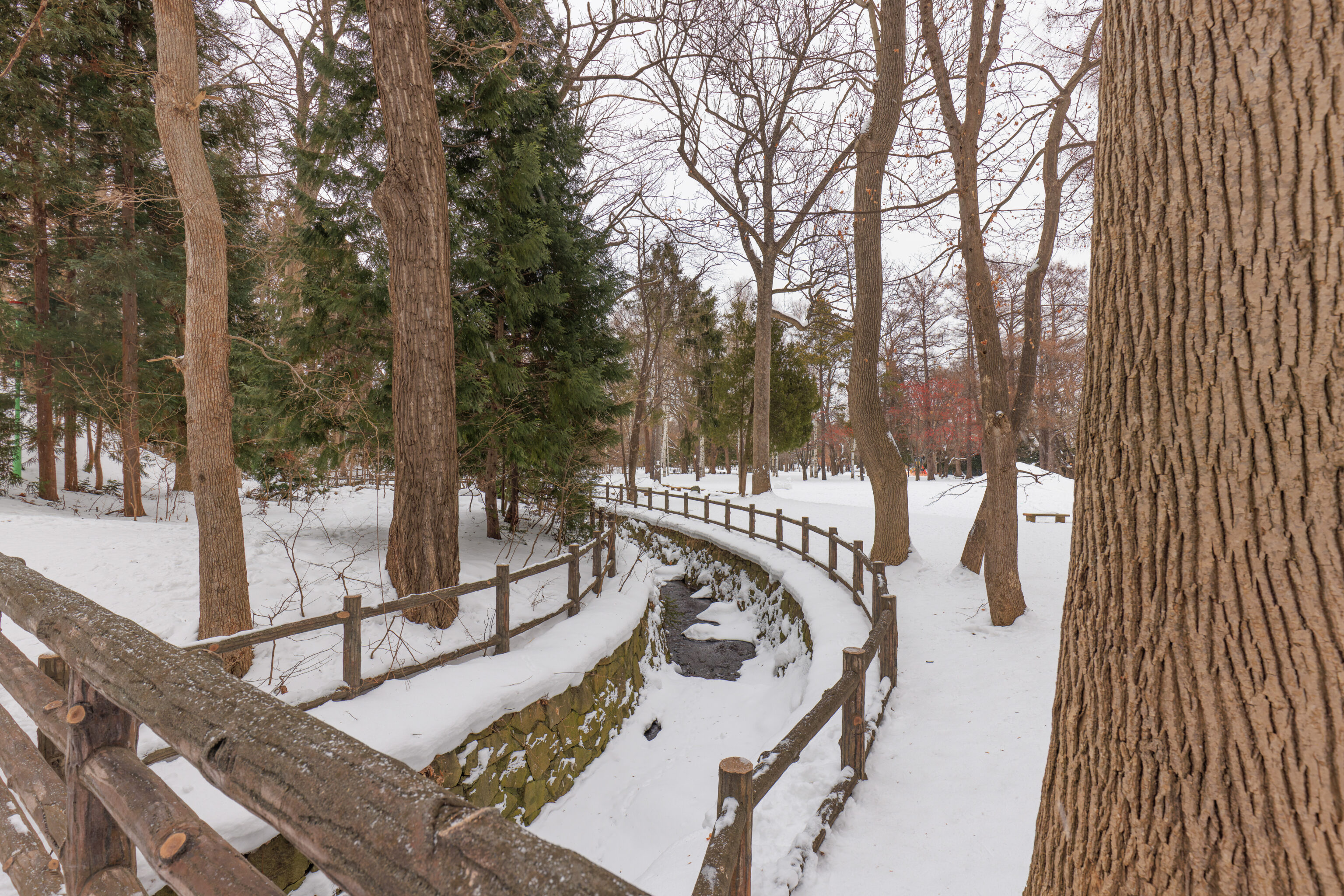
We continued on, crossing over a small stream.
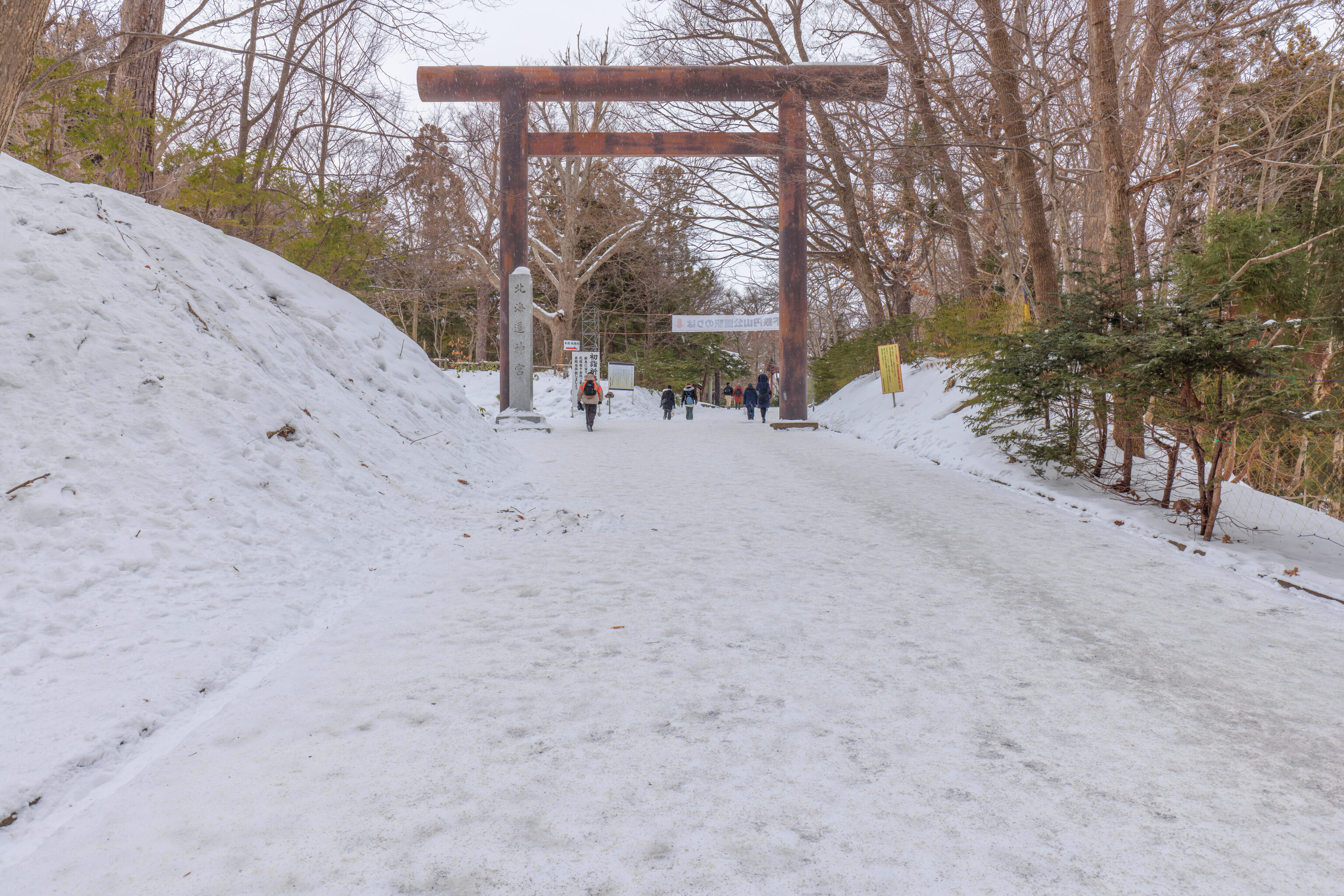
We ascended up a hill and passed under the large metal torii ahead.
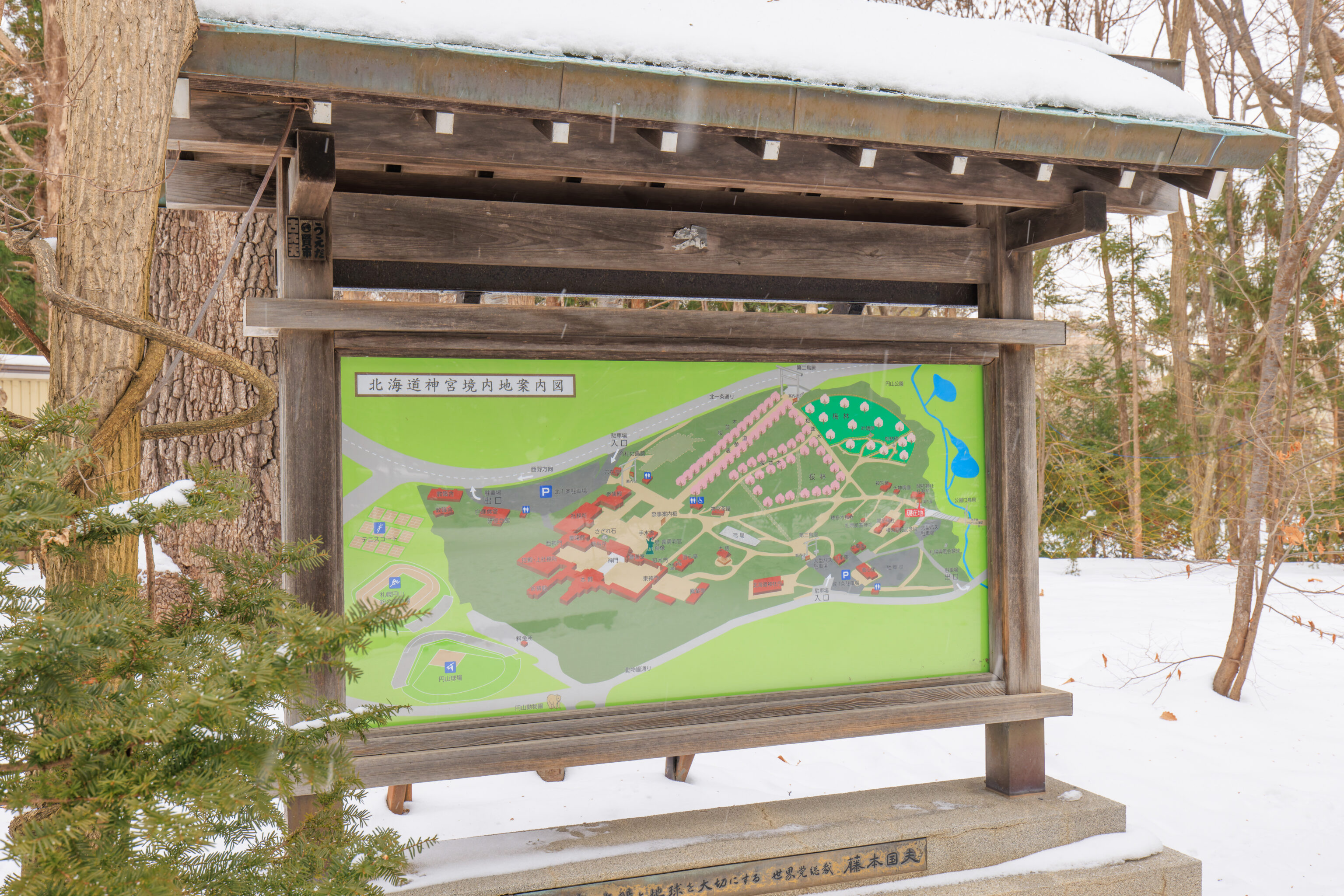
A sign provided a detailed map of the Hokkaido Shrine. It appears that there are many cherry trees lining the paths.
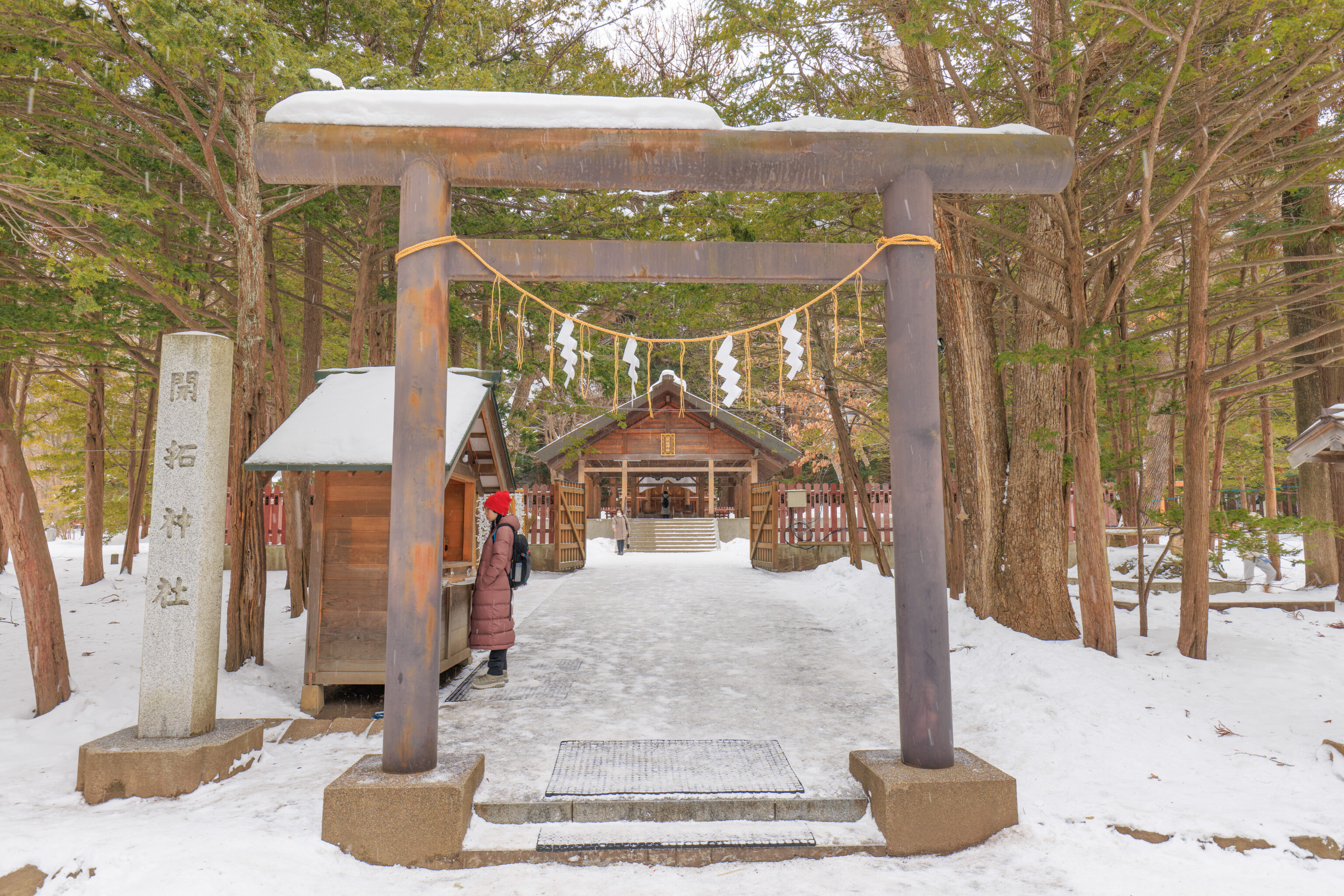
We passed by a small shrine, again with a metal torii.
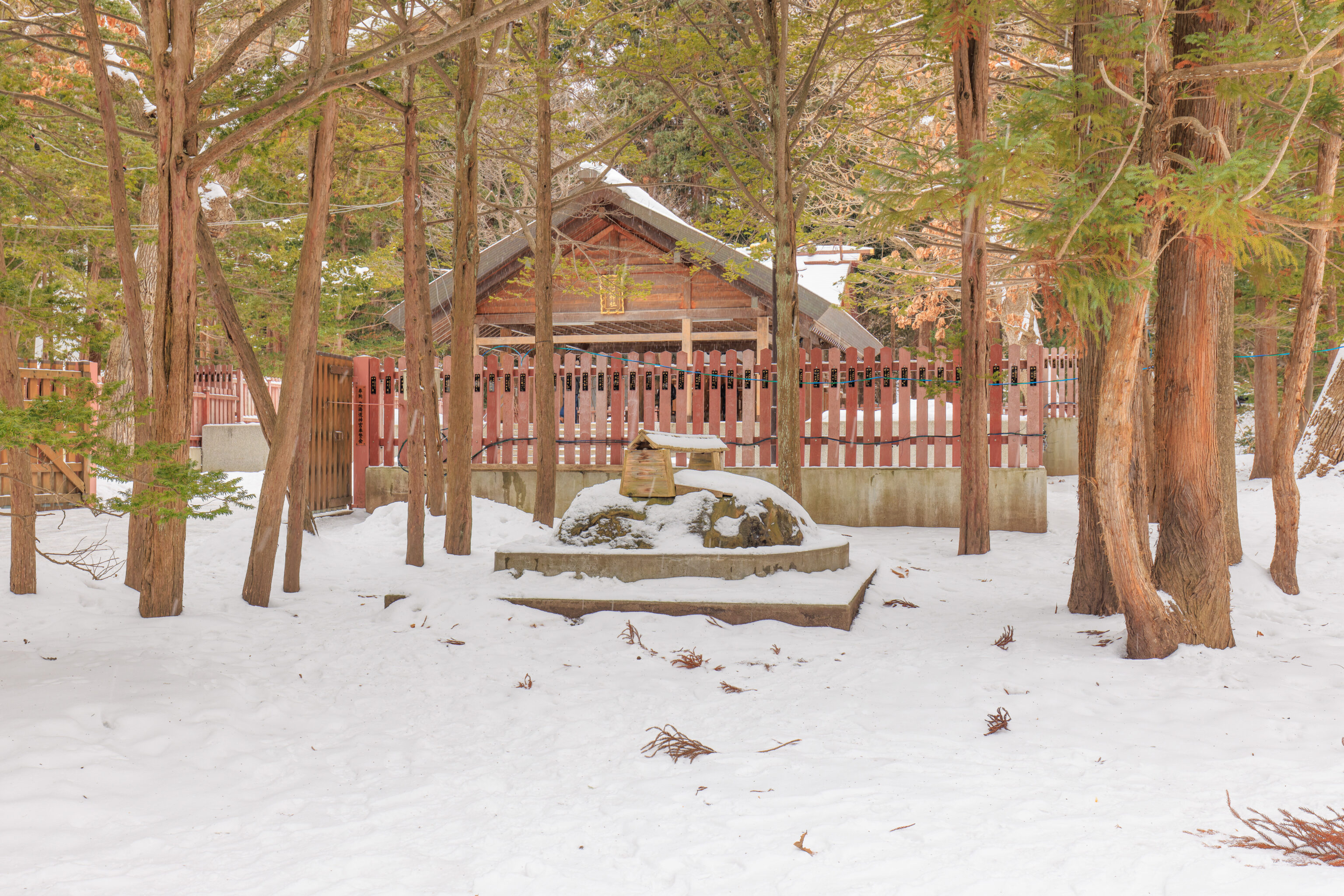
This seems like it could be a well?
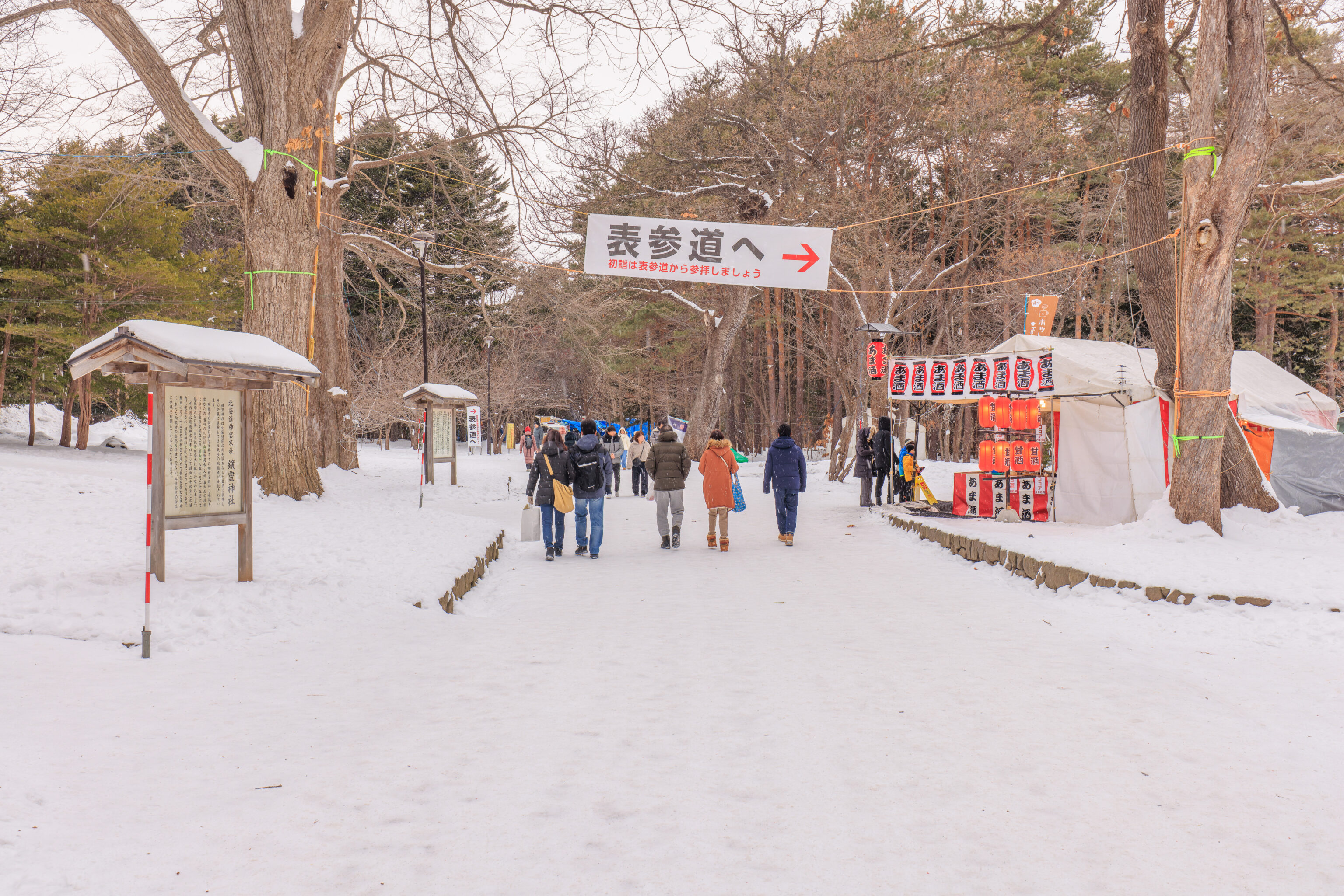
We saw a few food vendors ahead.
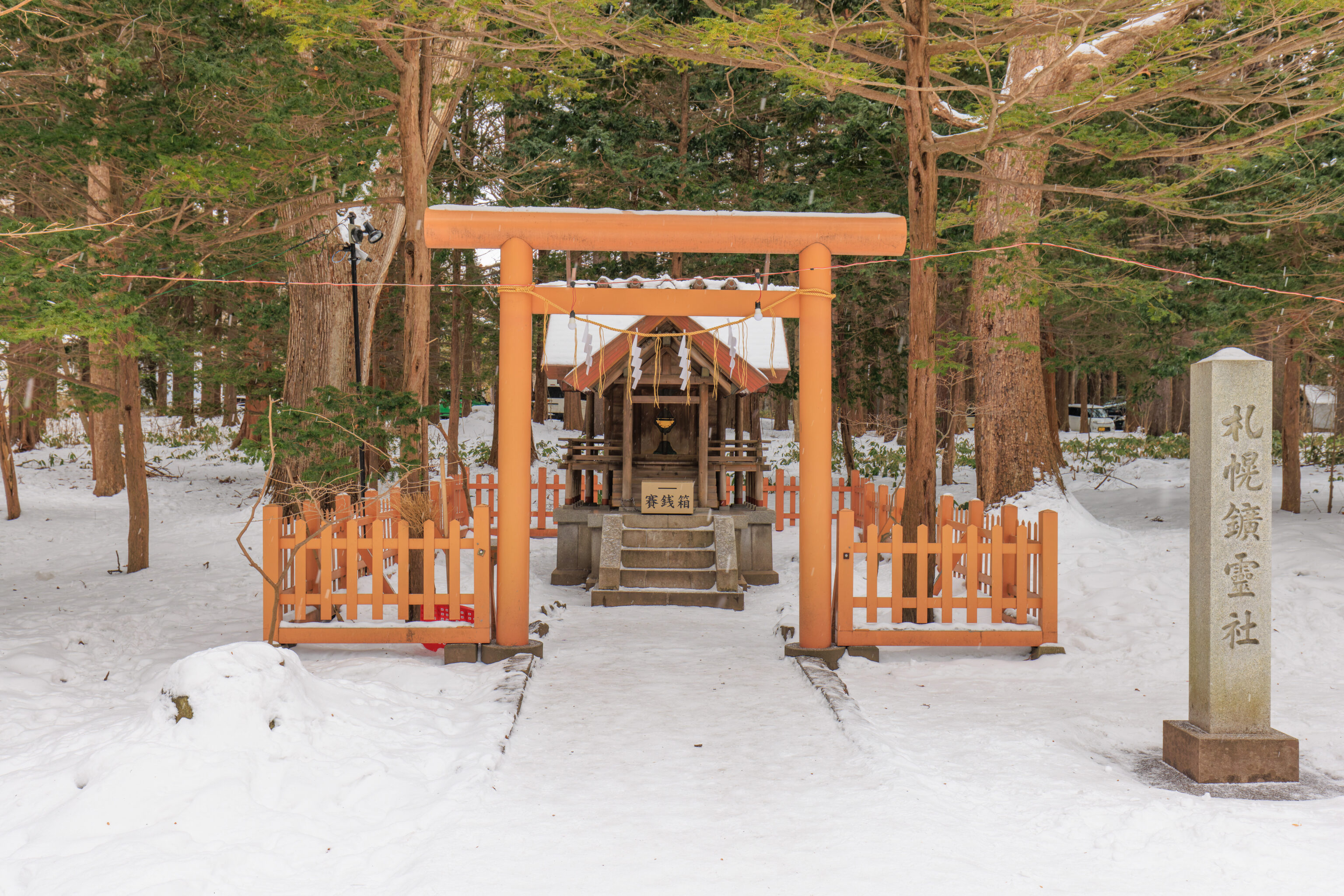
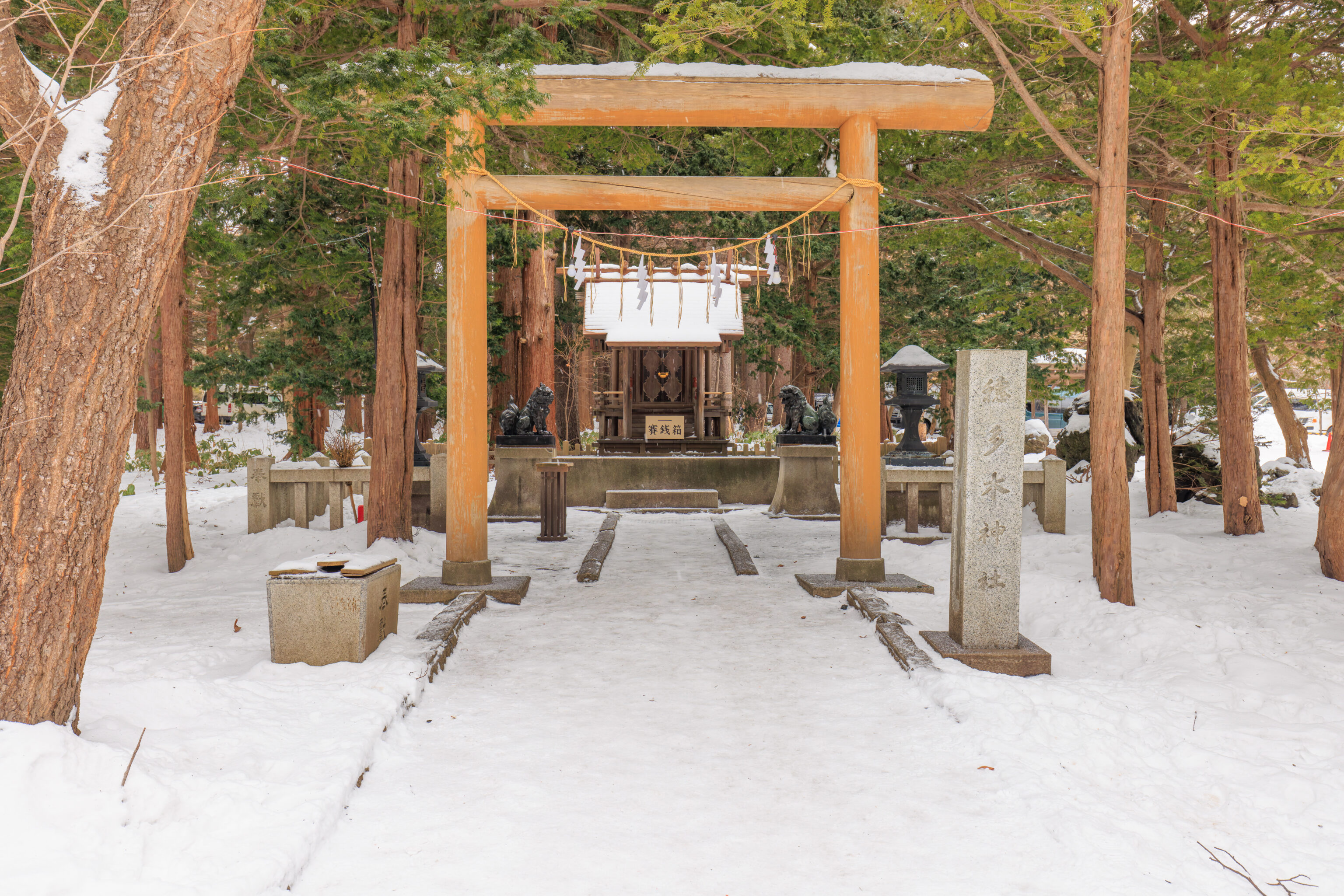
We continued on passing by a small shrine with yet another metal torii and then one with a wooden one.
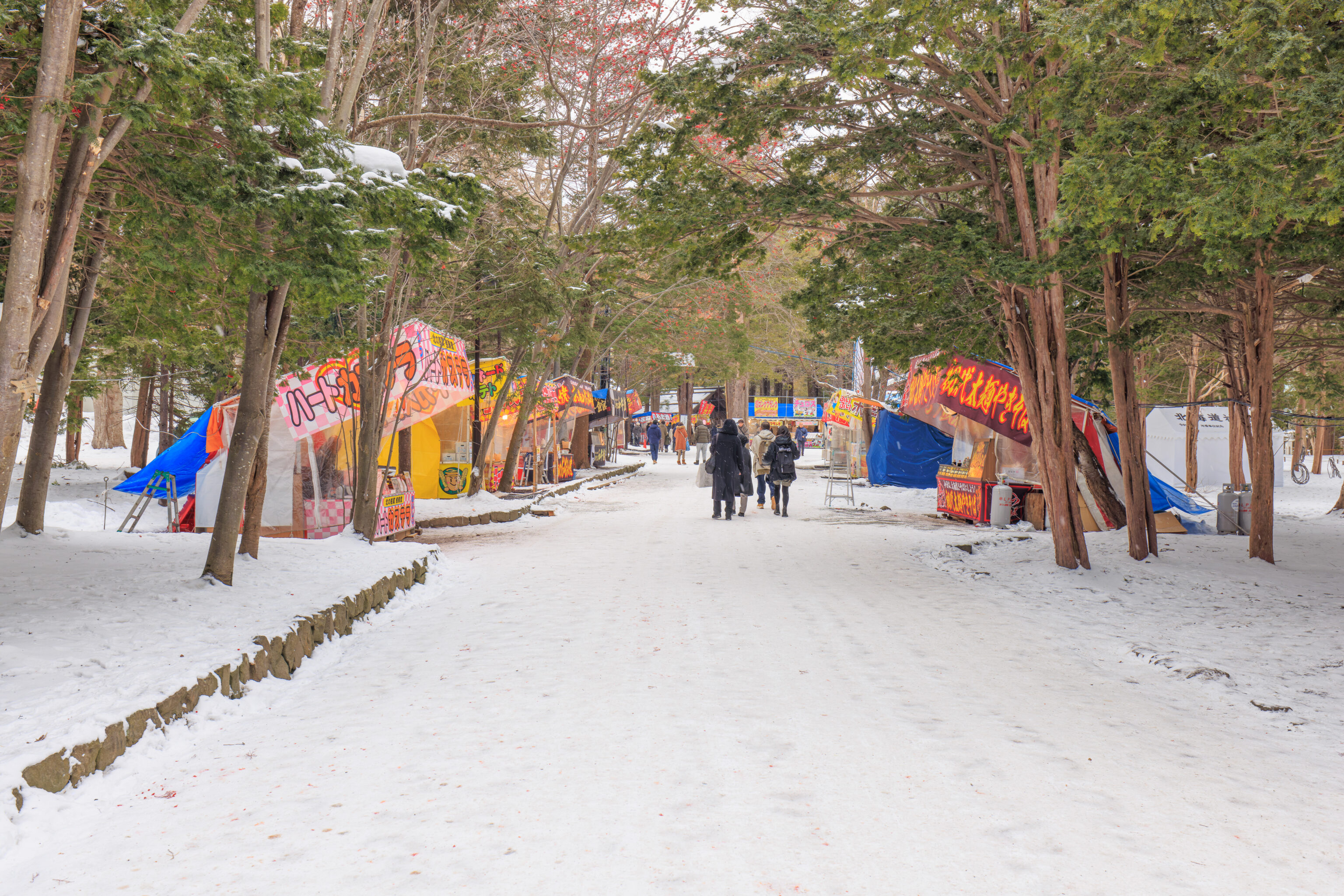
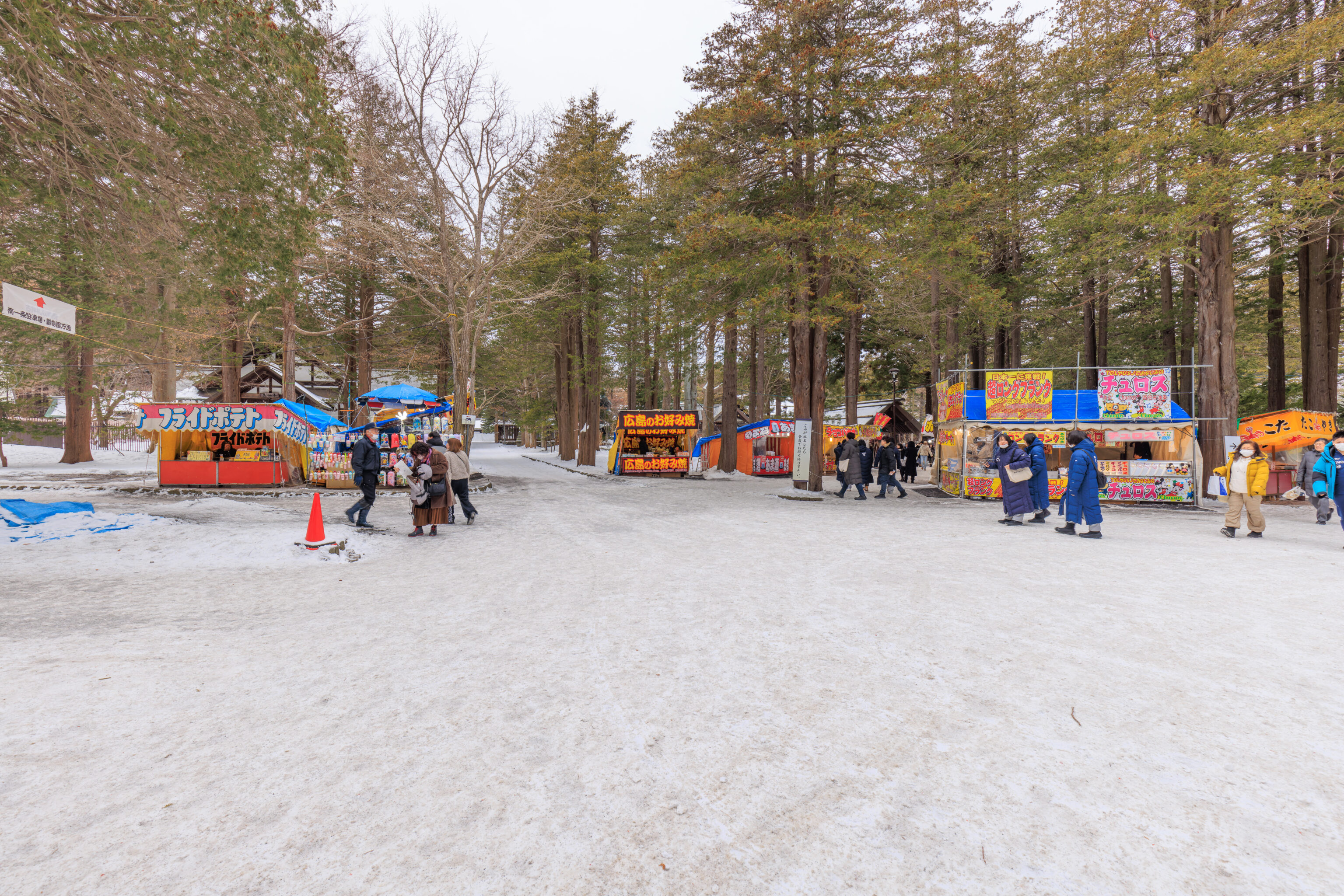
We came upon even more food vendors.
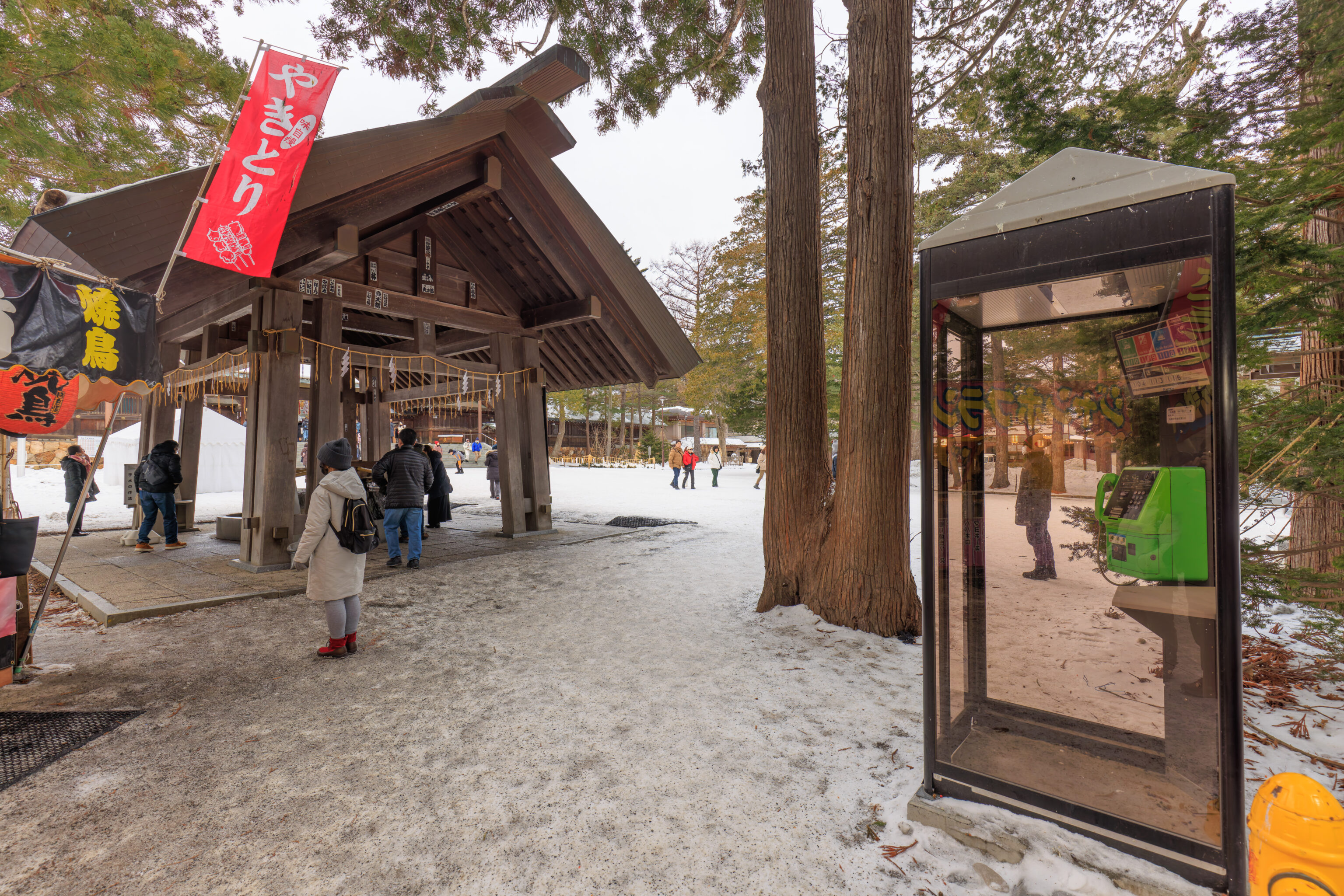
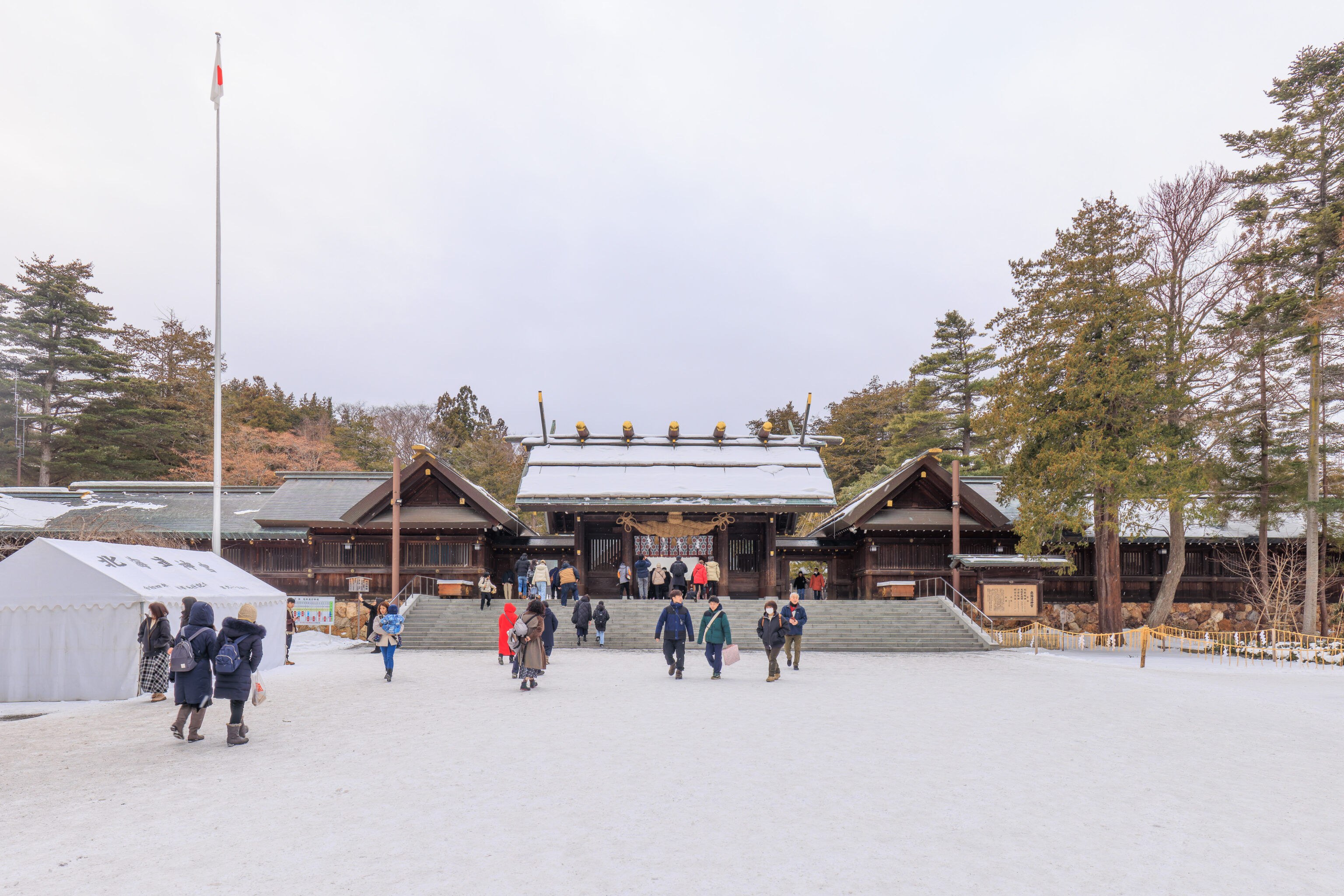
We then reached the main shrine area.
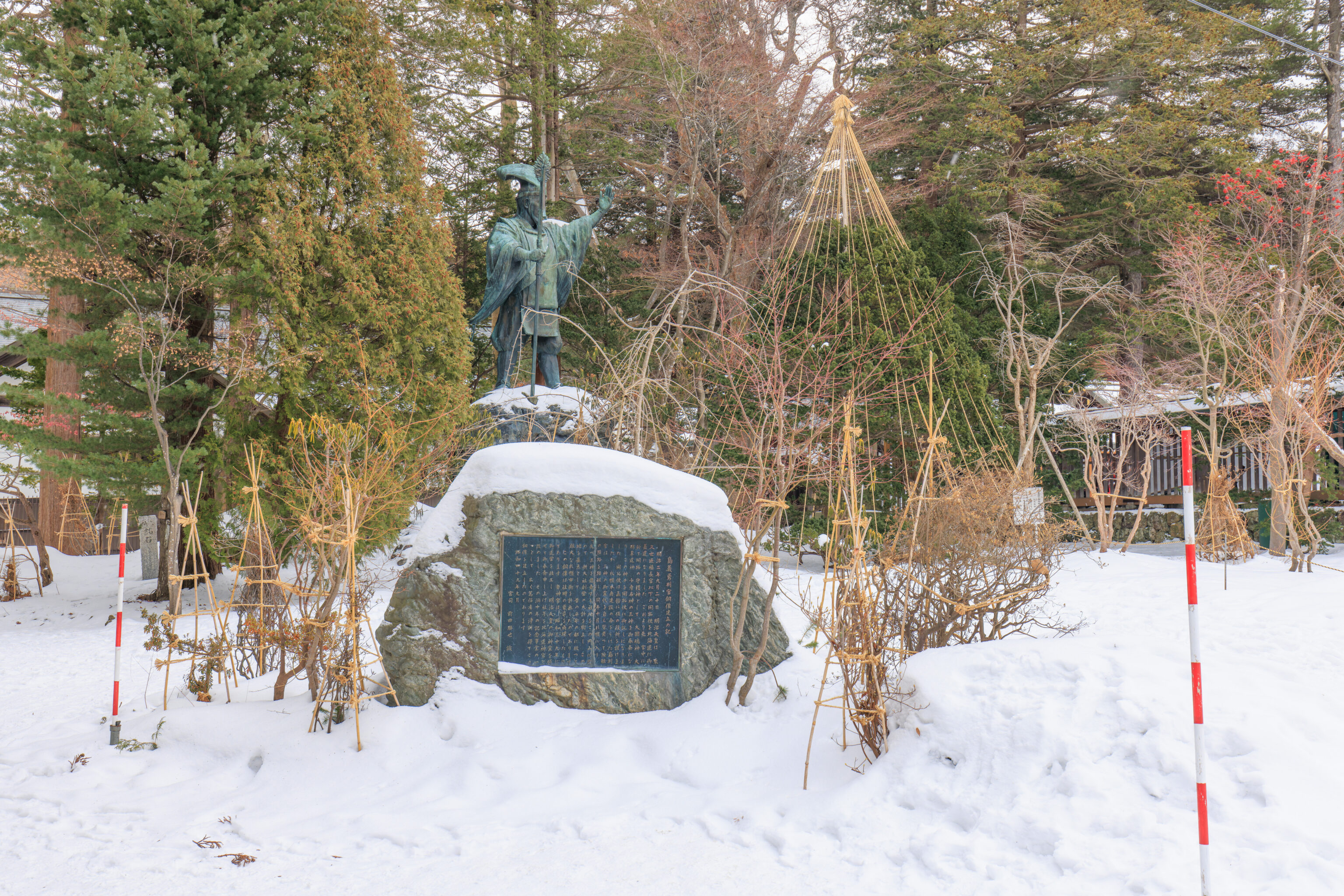
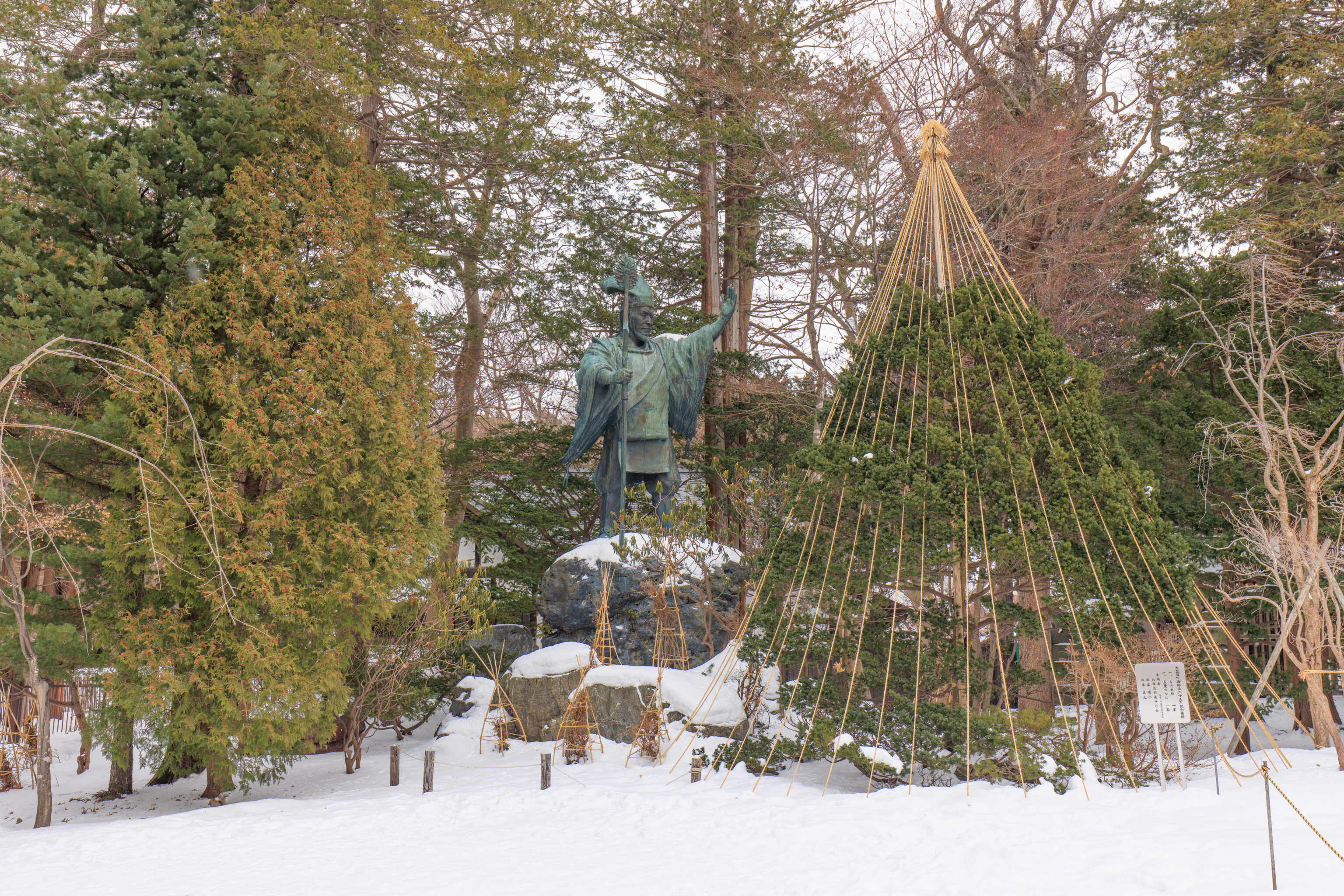
This bronze statue is of Shima Yoshitake, a former samurai and considered as one of the founders of Sapporo during the Meiji era.
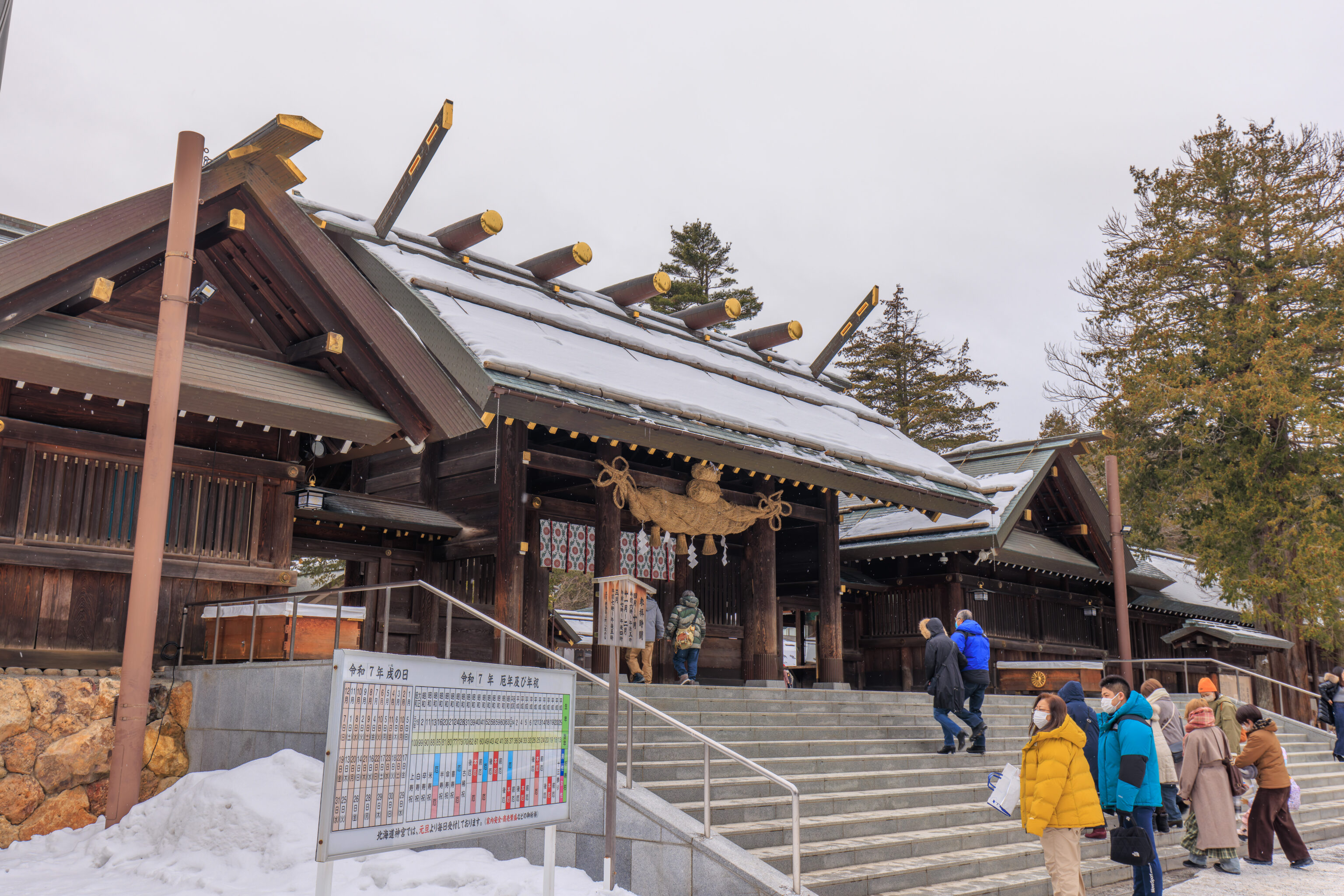
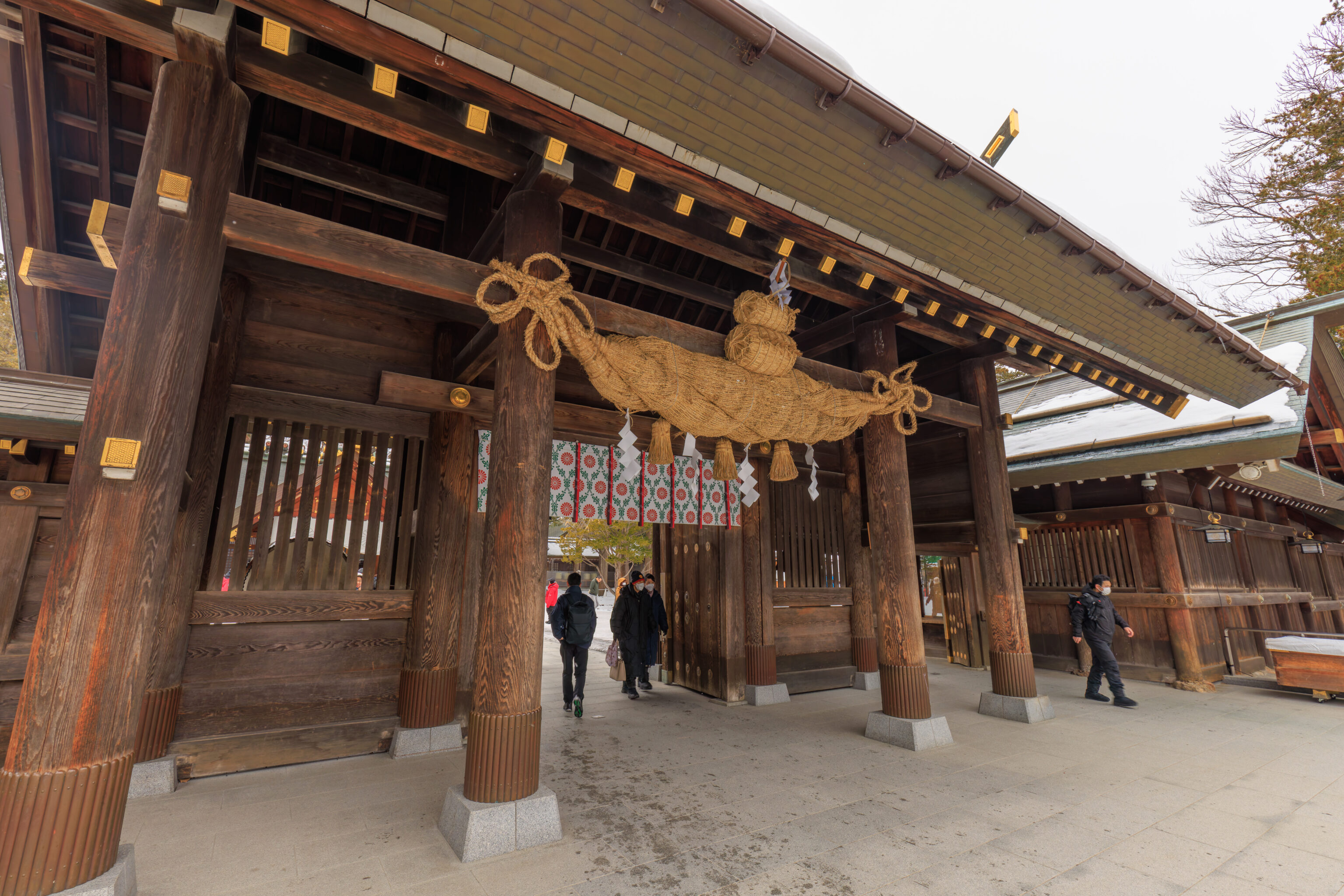
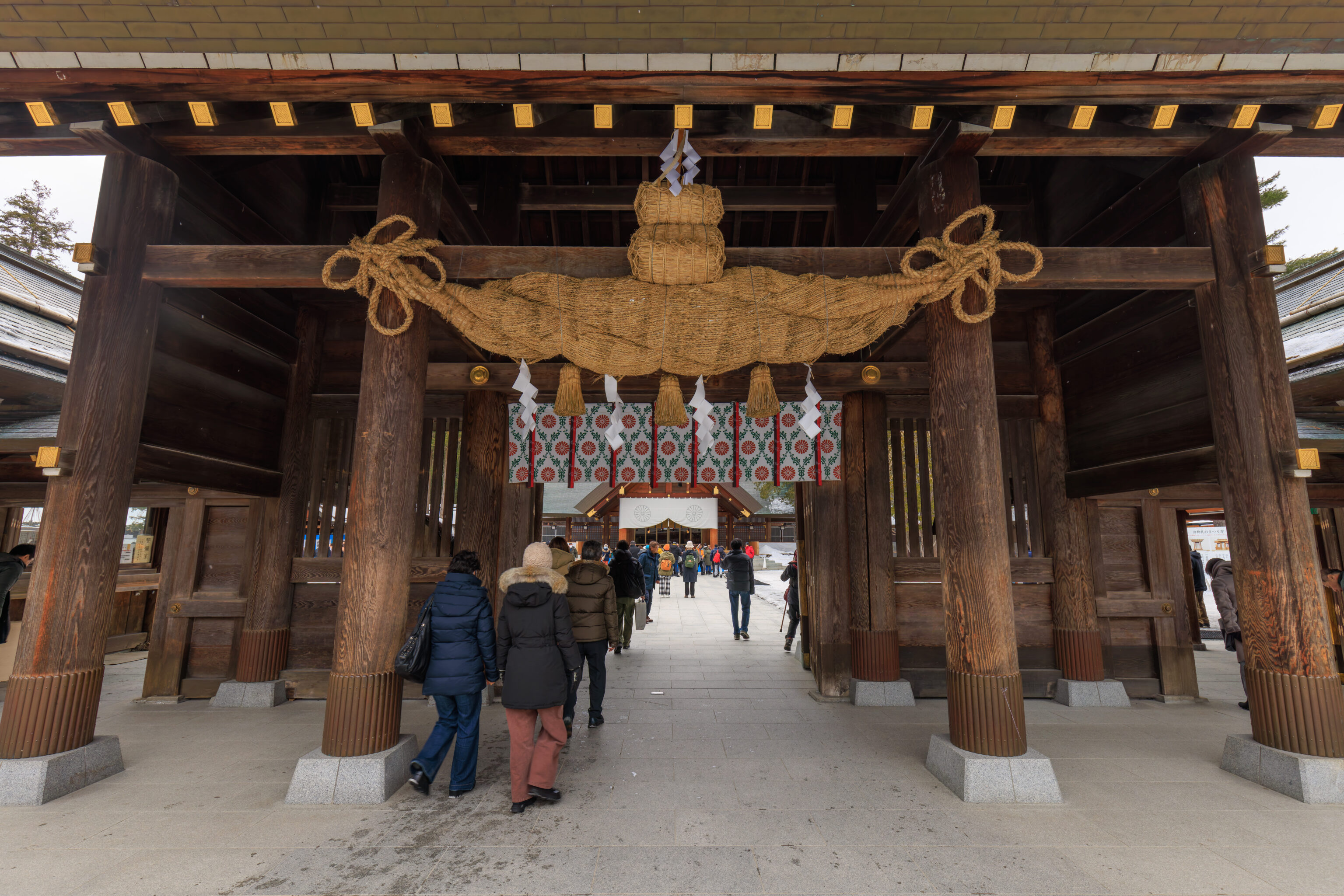
We continued on to enter the shrine through its main gate.

The view from the gate looking back out. We entered through a path on the right side.
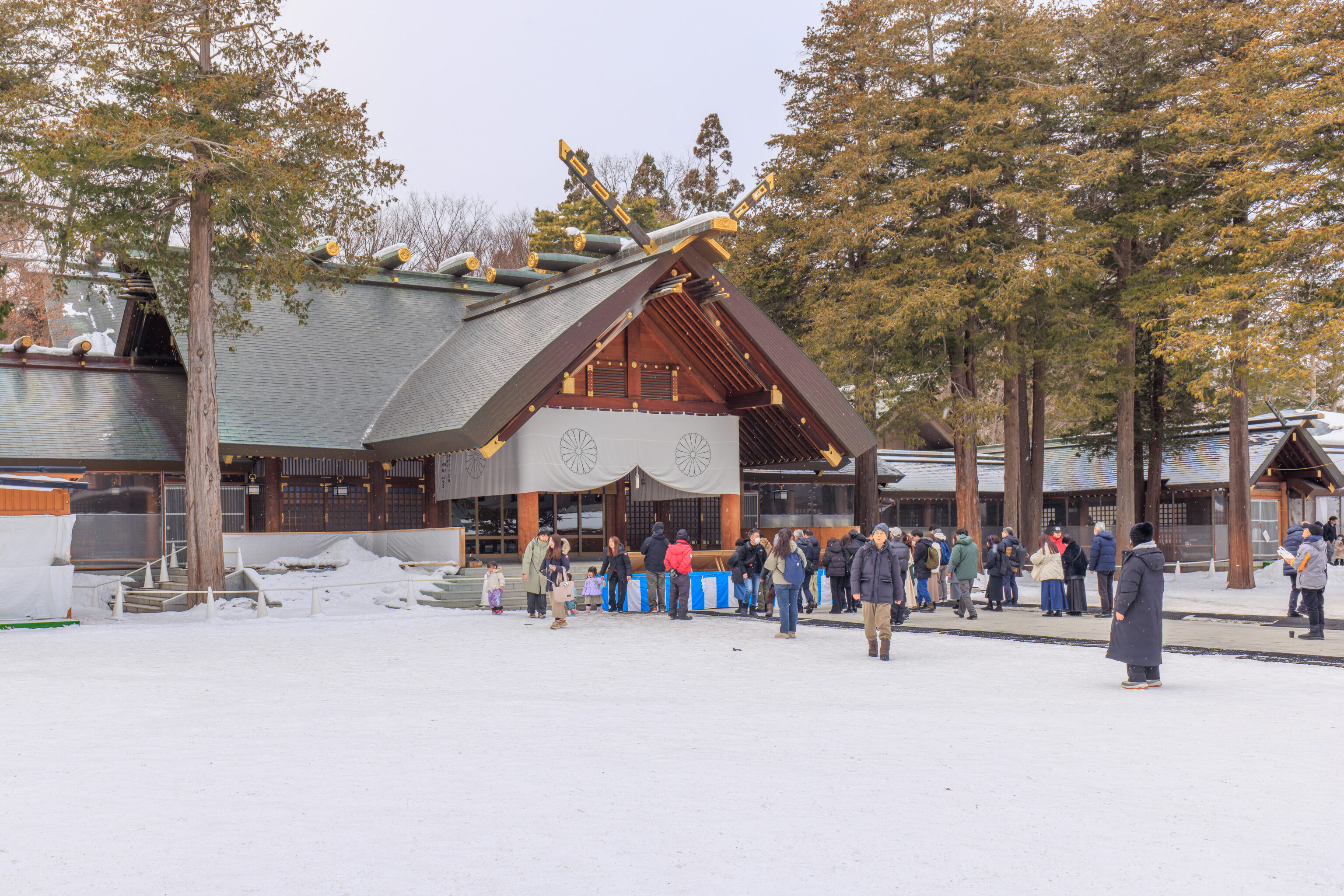
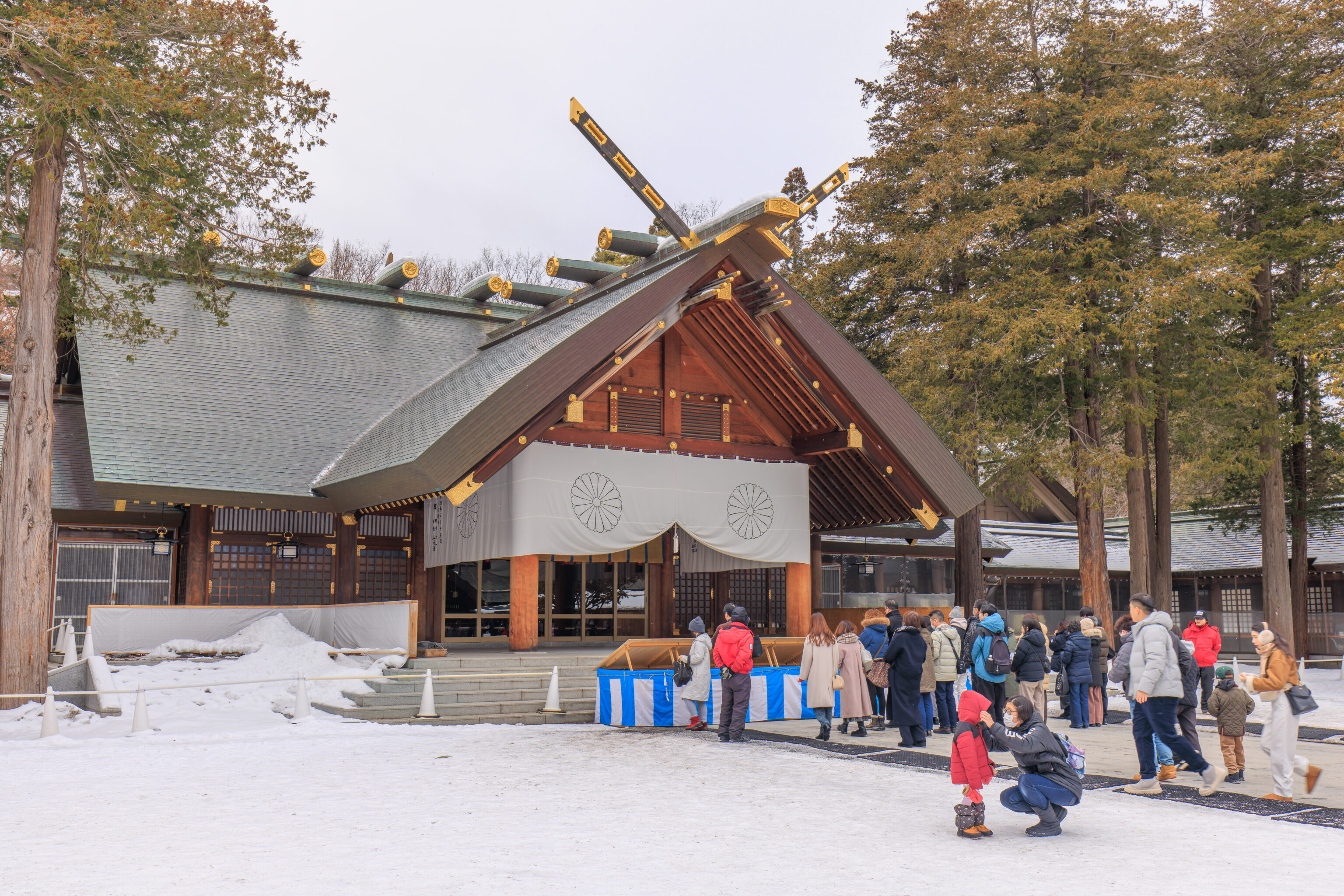
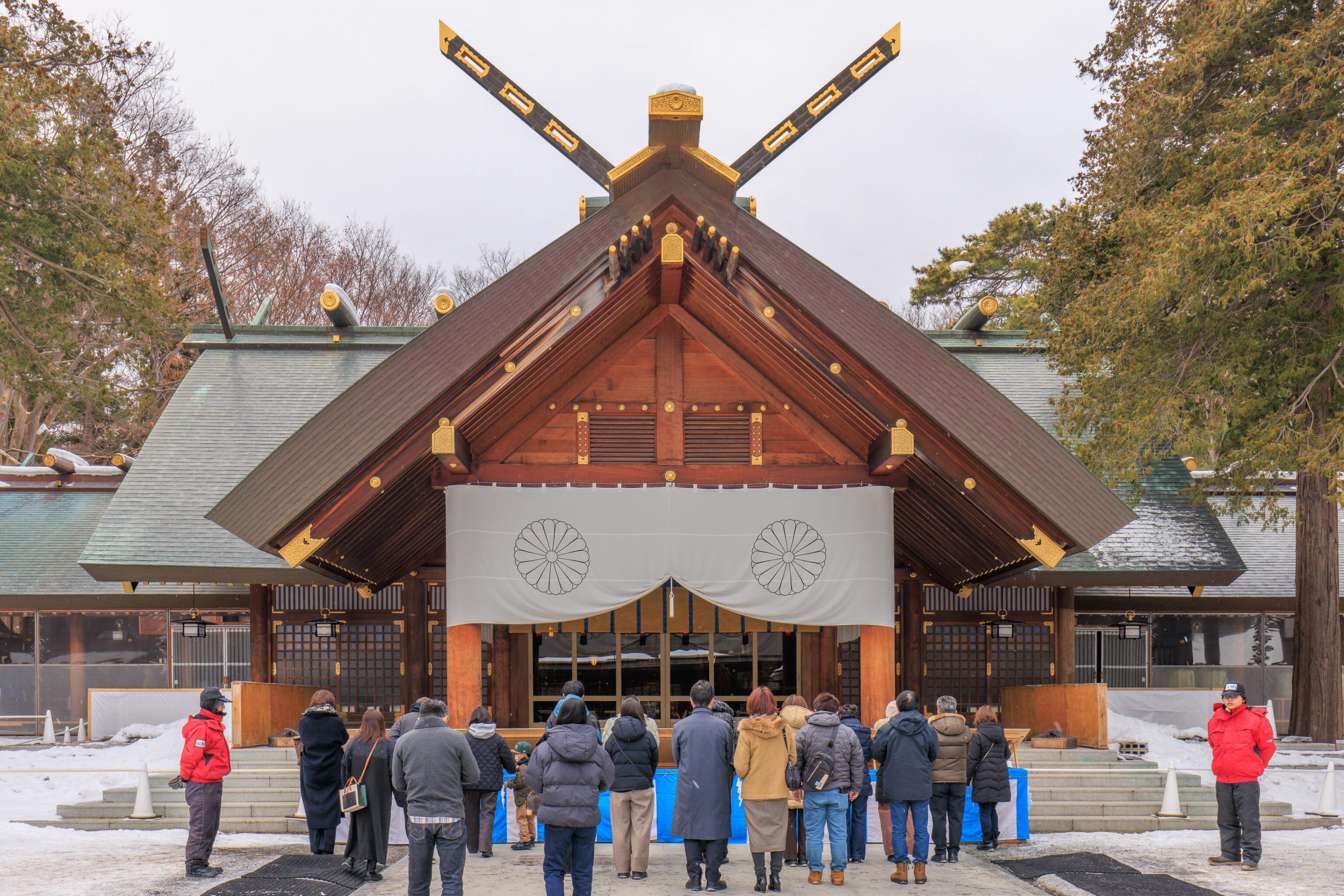
It was busier here than we thought it would be!
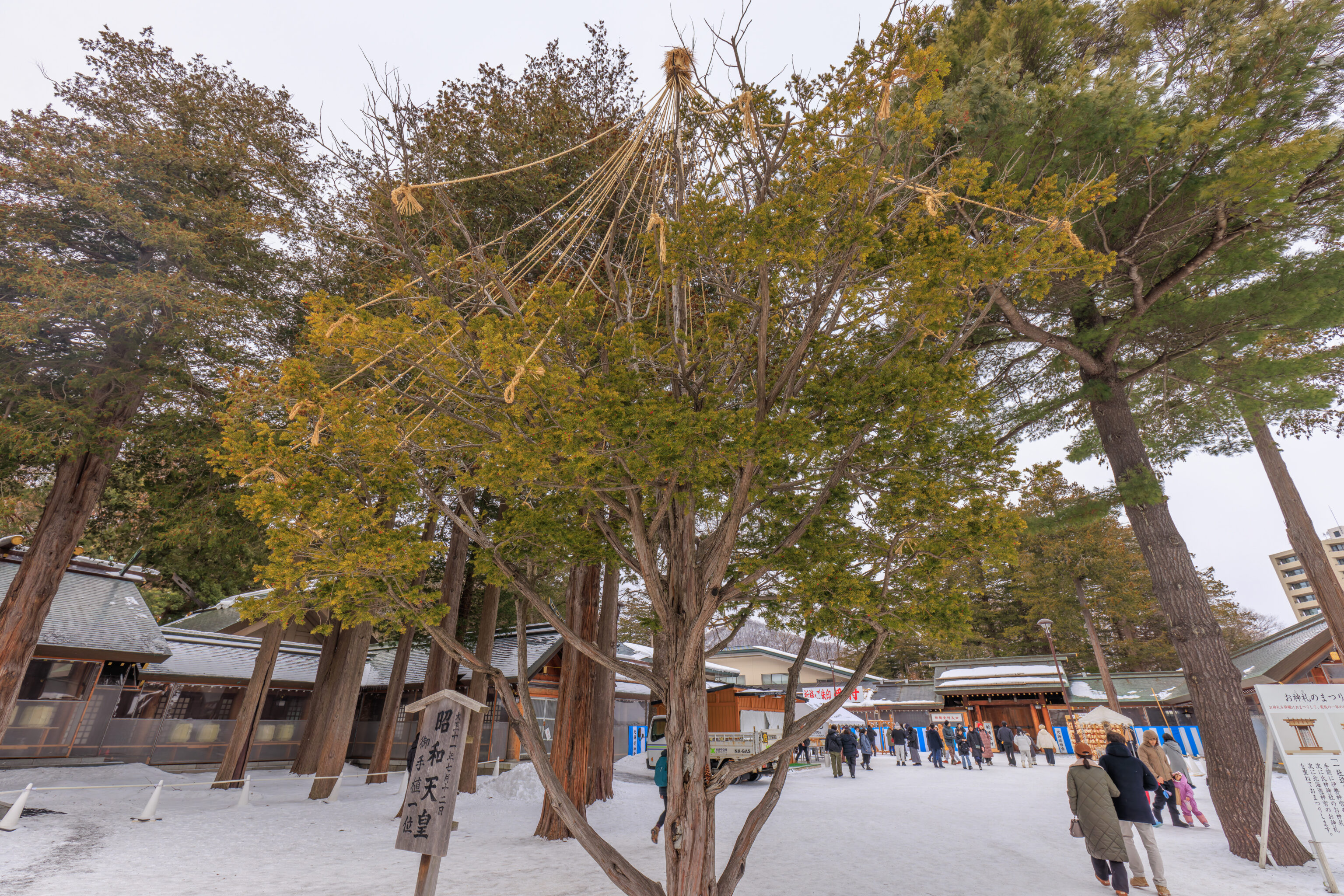
This tree was planted by the future Emperor Showa on July 12th, 1922.
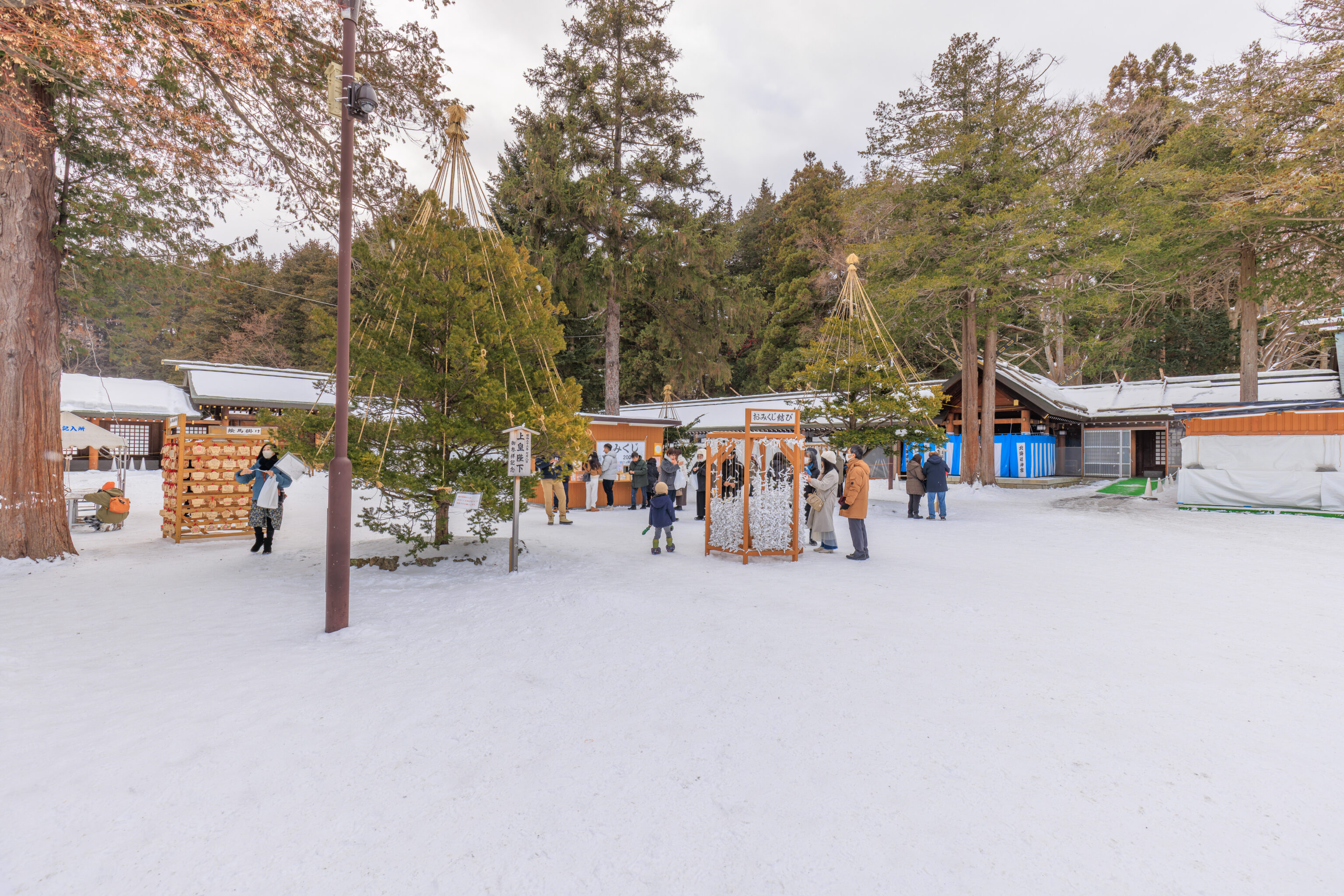
The main shrine area was pretty large so although it was busy, it wasn’t crowded.
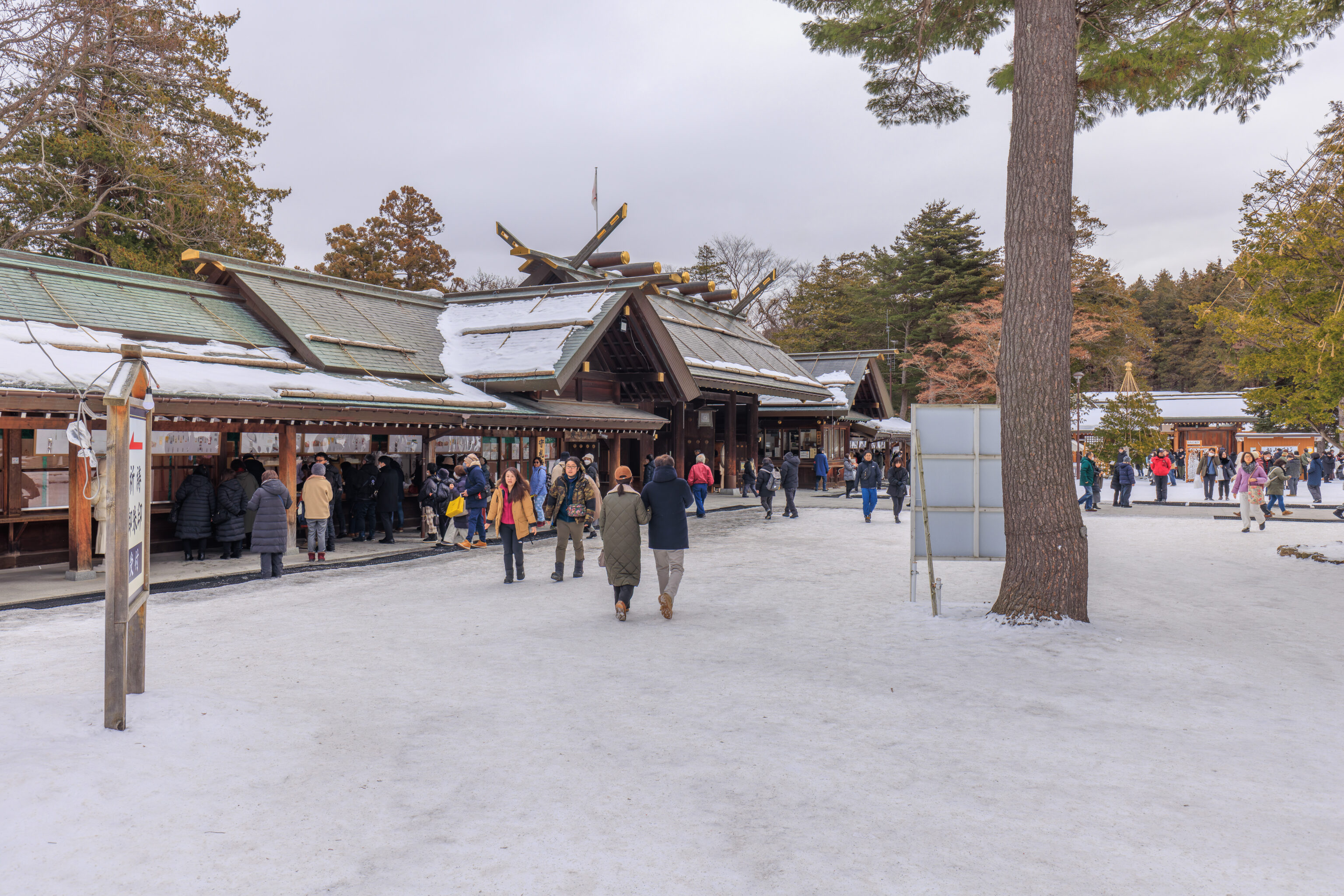
We returned to the main gate to exit the shrine.
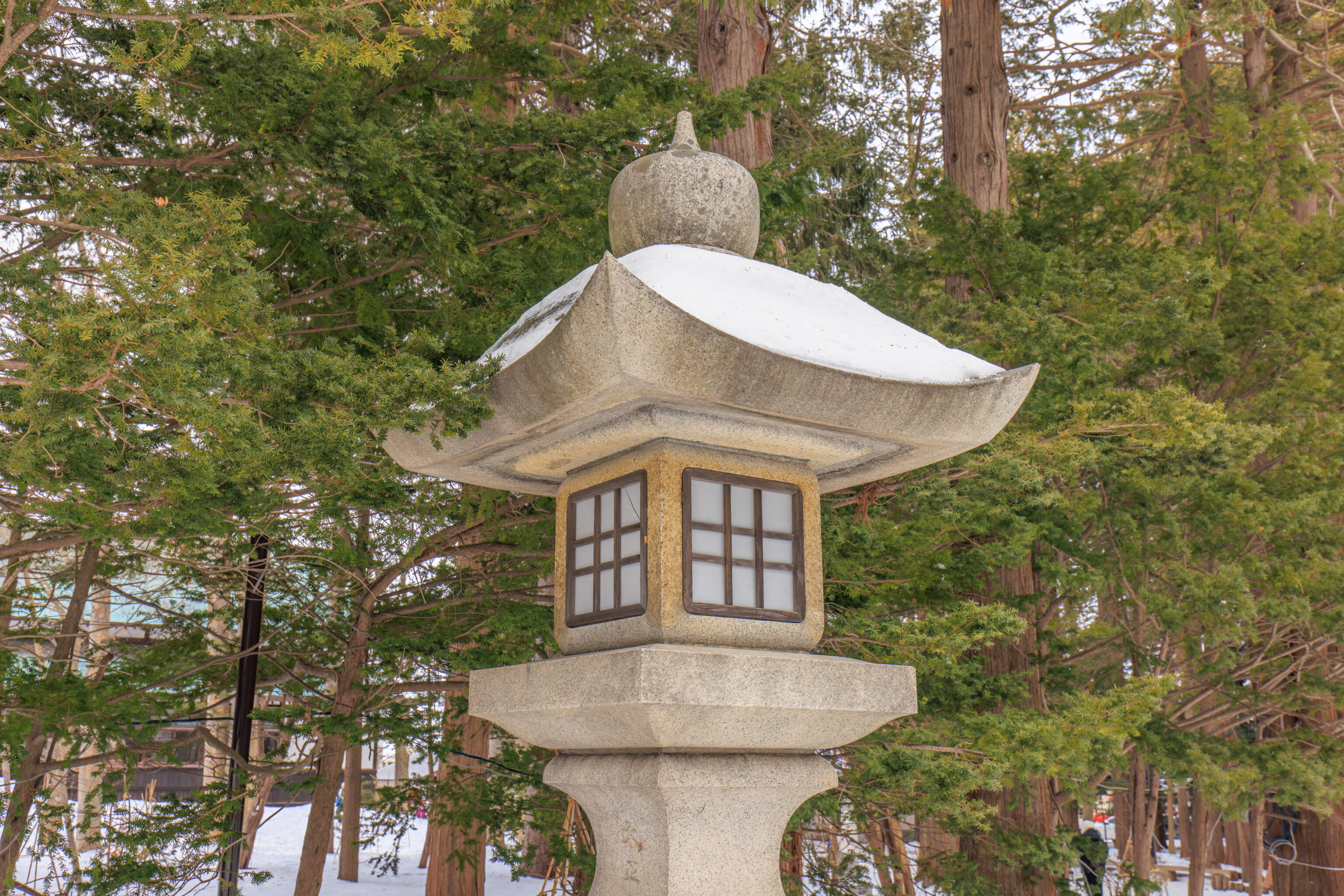
A stone lantern that we passed by outside of the gate.
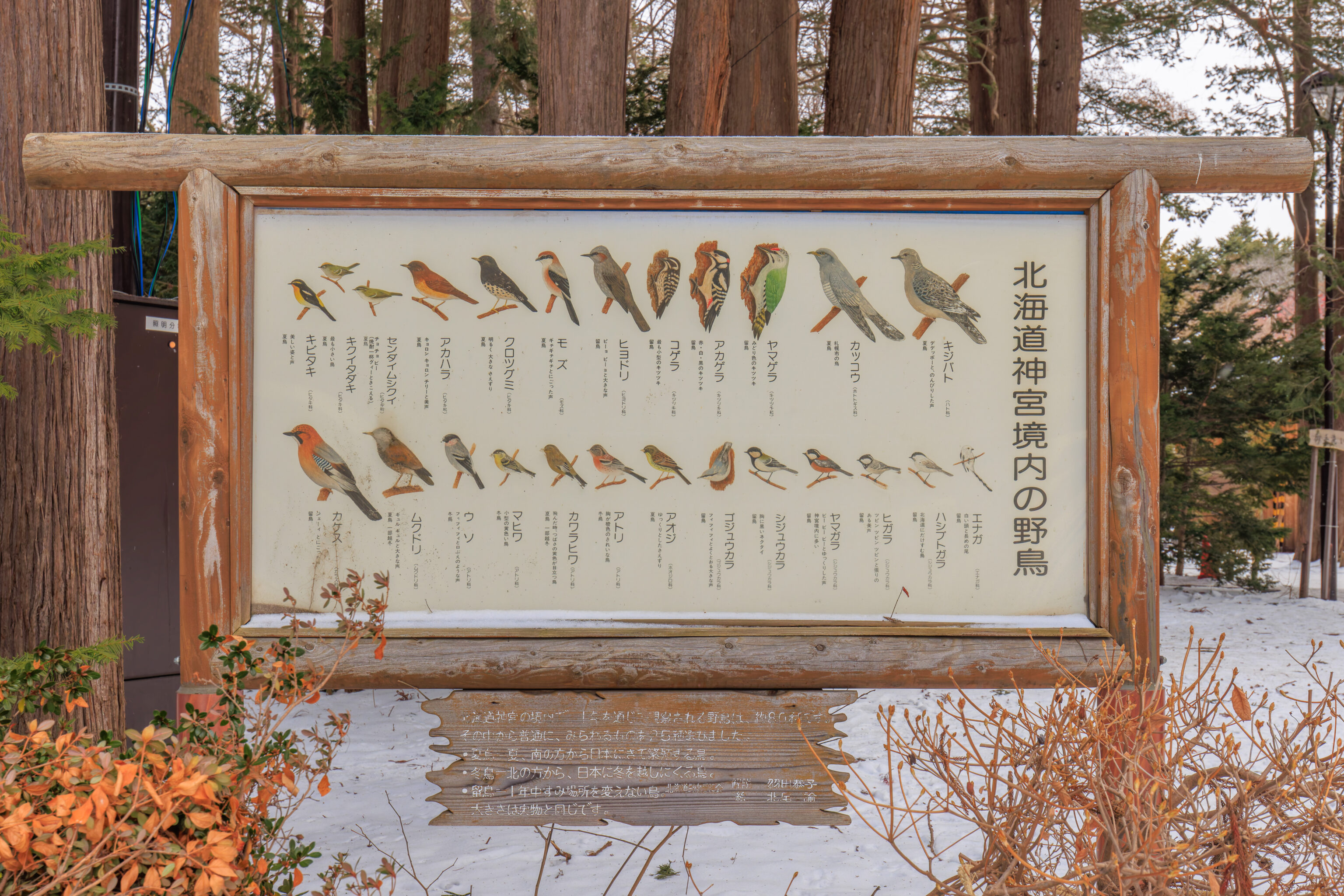
This sign identifies some of the bird species that can be found here! While we generally aren’t familiar with Japanese birds, we do recognize most of these body shapes and general coloring from our local US east coast species.
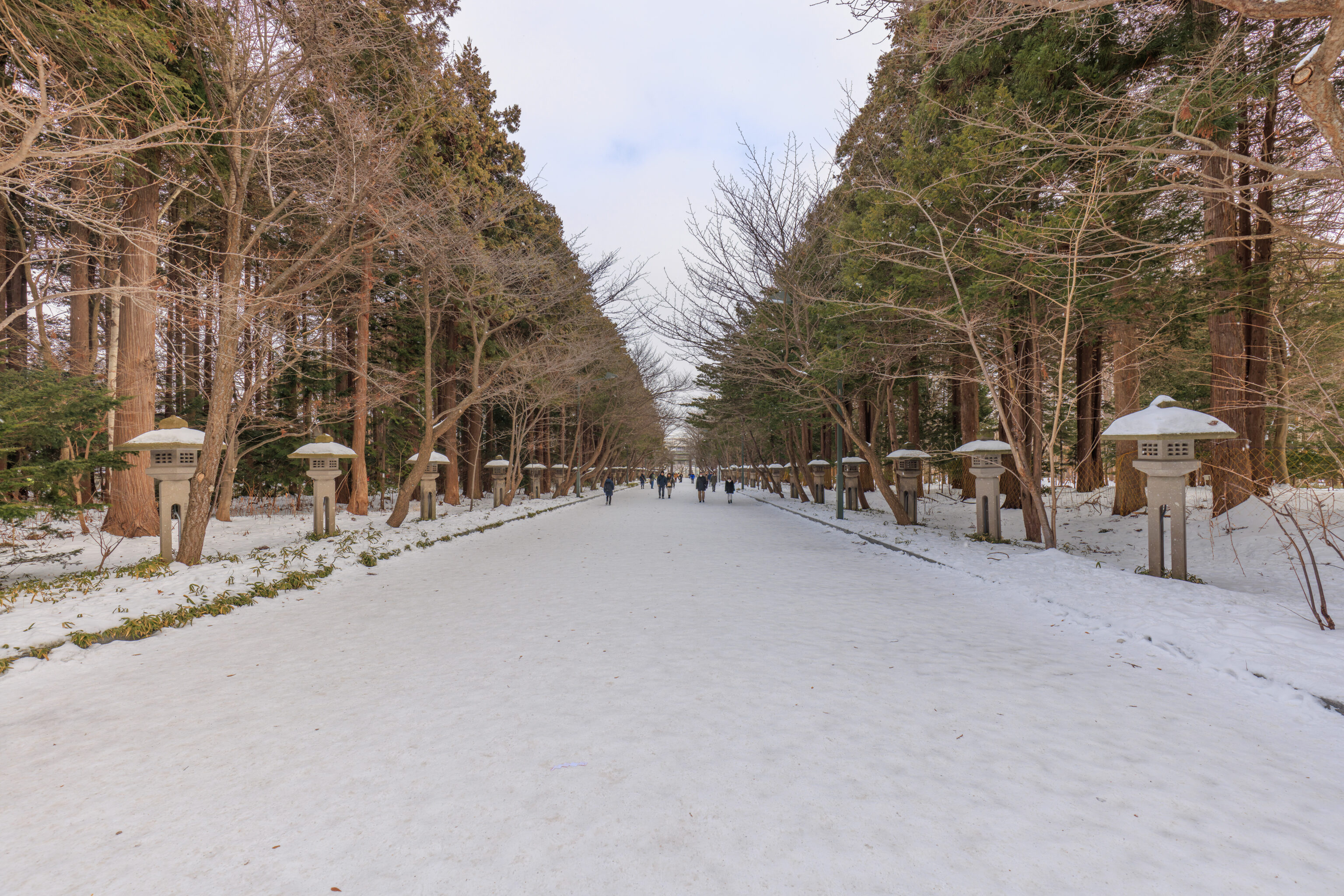
We walked down the main path in front of the shrine’s main gate. It was lined with trees and stone lanterns.
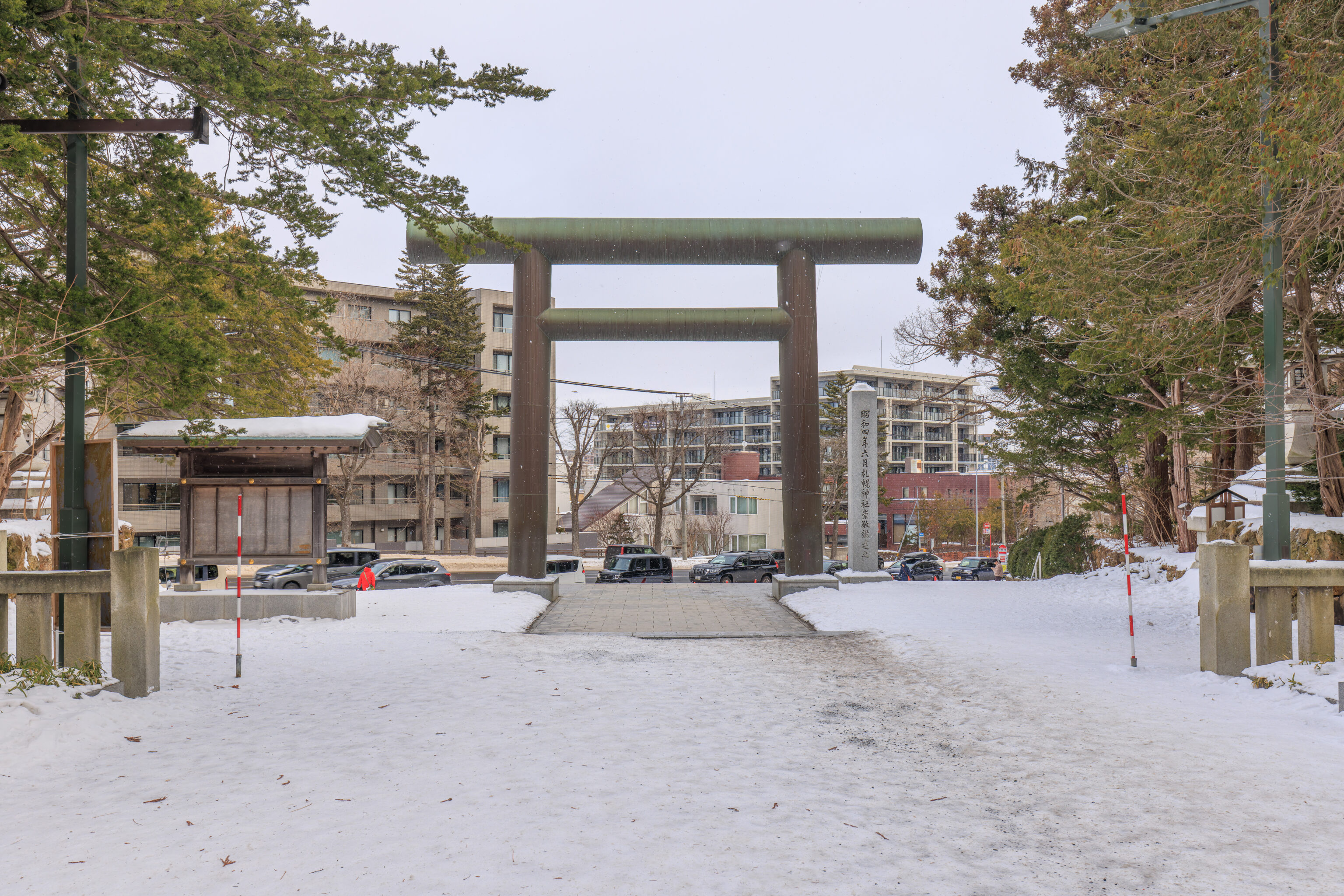
We arrived at yet another metal torii on the north edge of the shrine and park grounds.
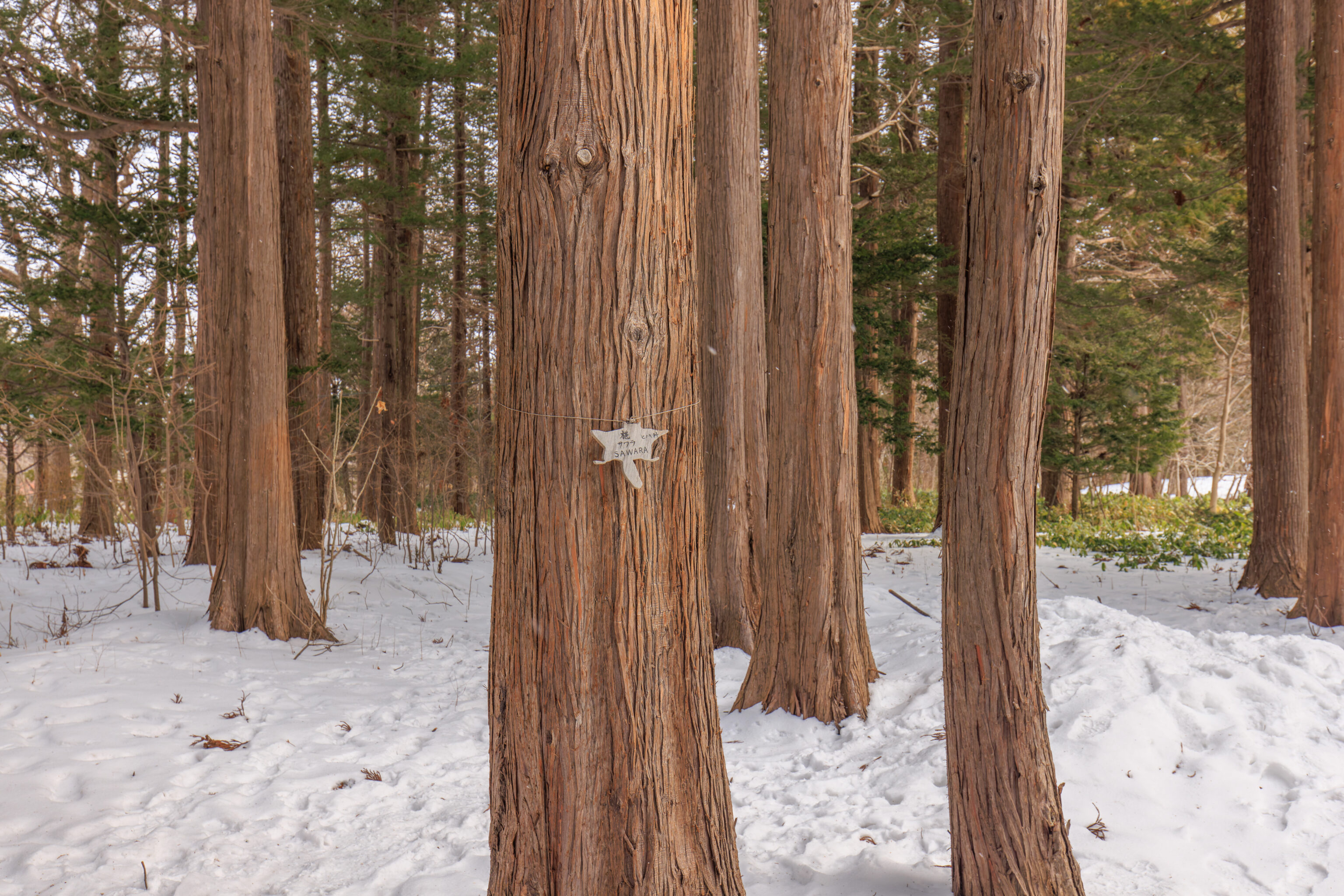
This tree had a little flying squirrel sign identifying its species as a Sawara.
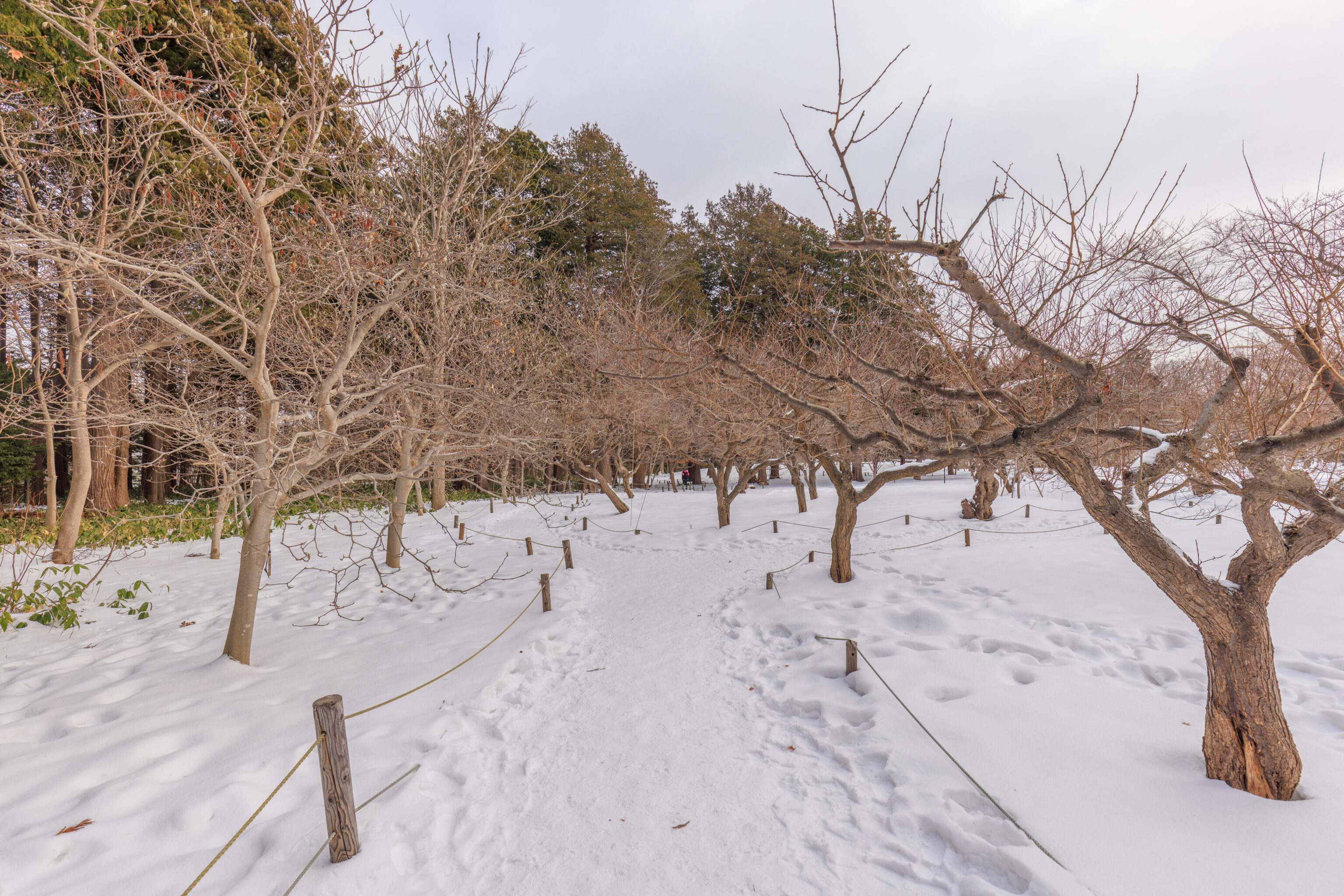
Rather than exit the shrine and park, we turned to the right and walked into a smaller park area at the edge of the shrine grounds.
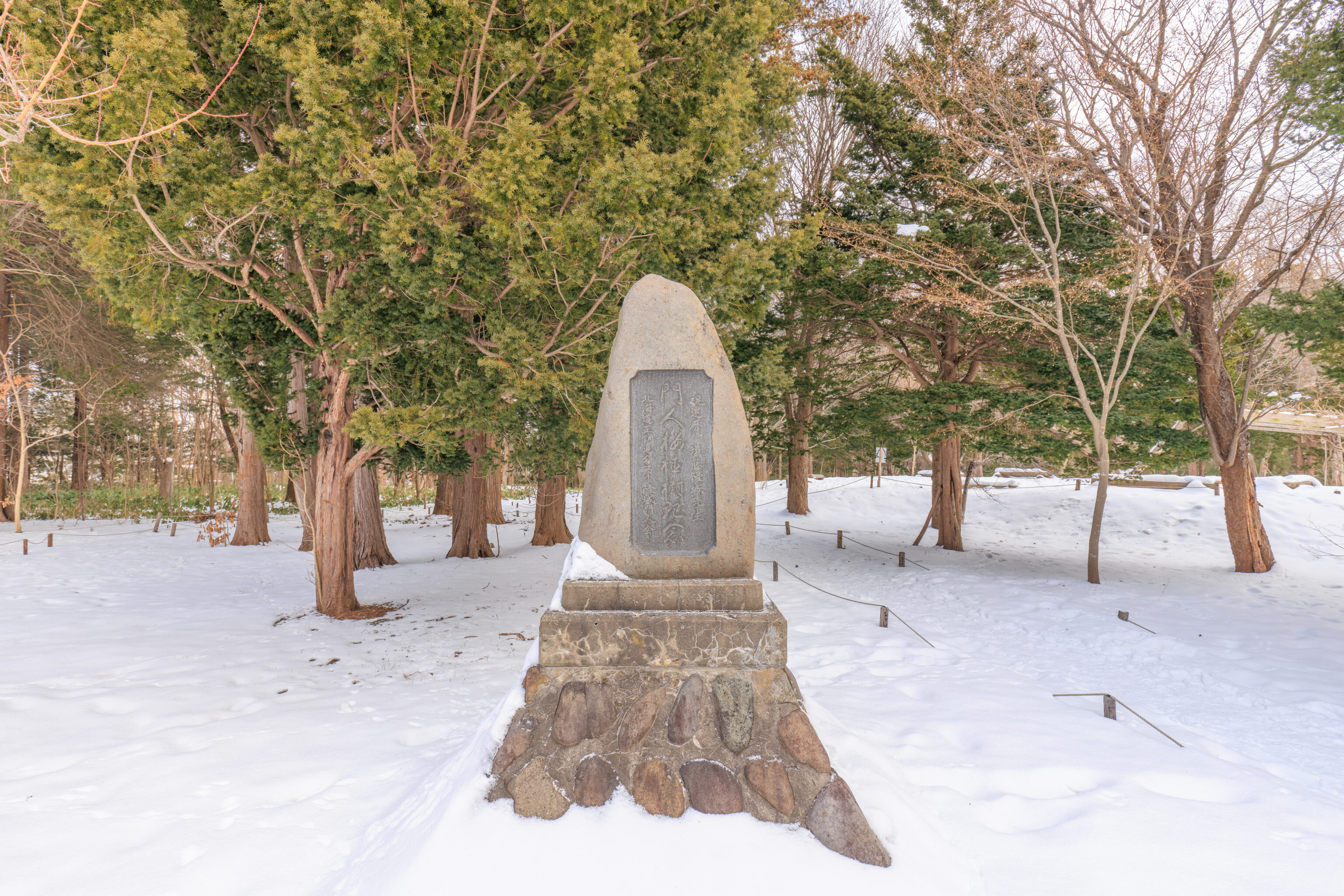
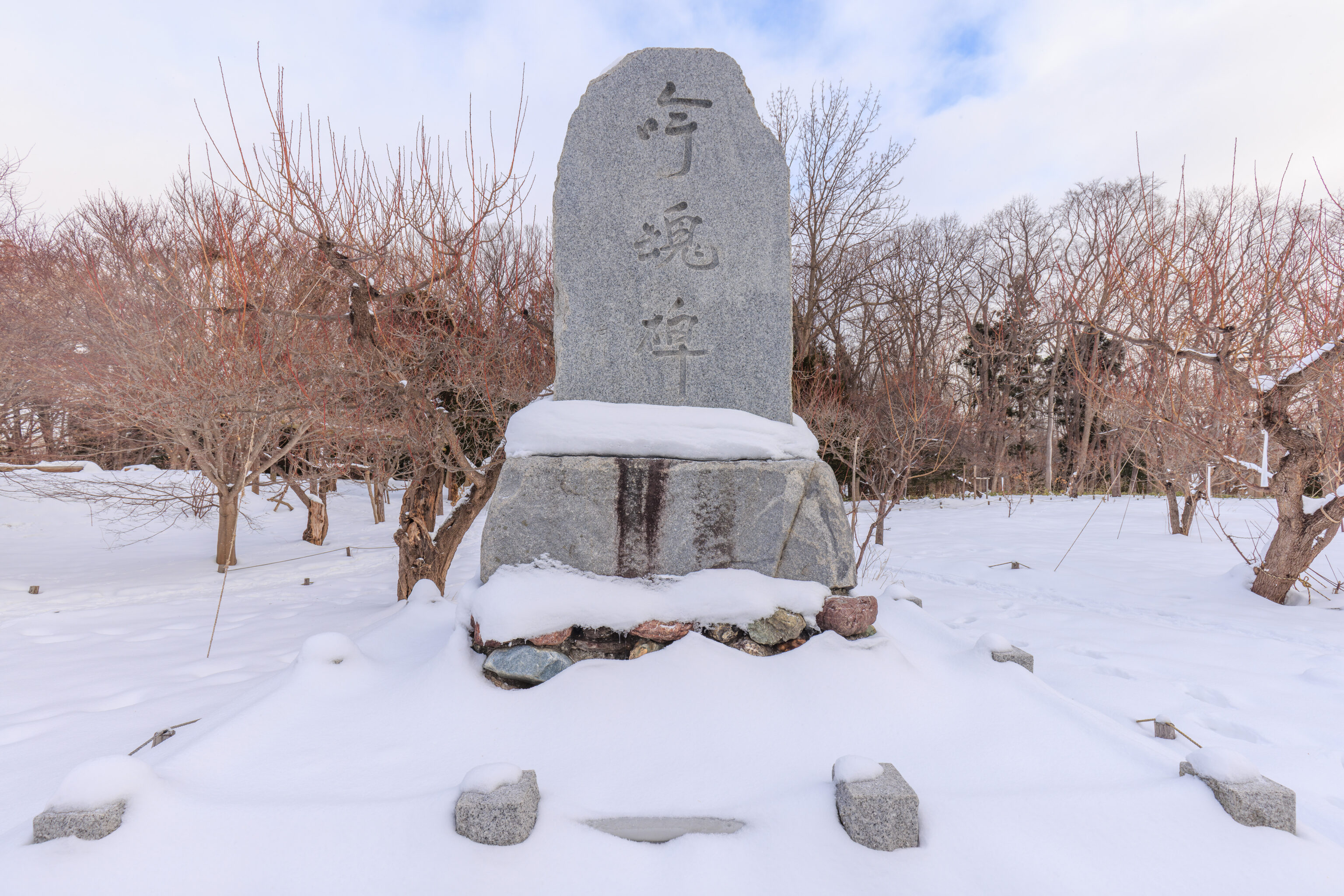

There were a few stone monuments within this area. Ultimately, we returned to the entrance that we originally arrived at and started to walk back to the subway station.
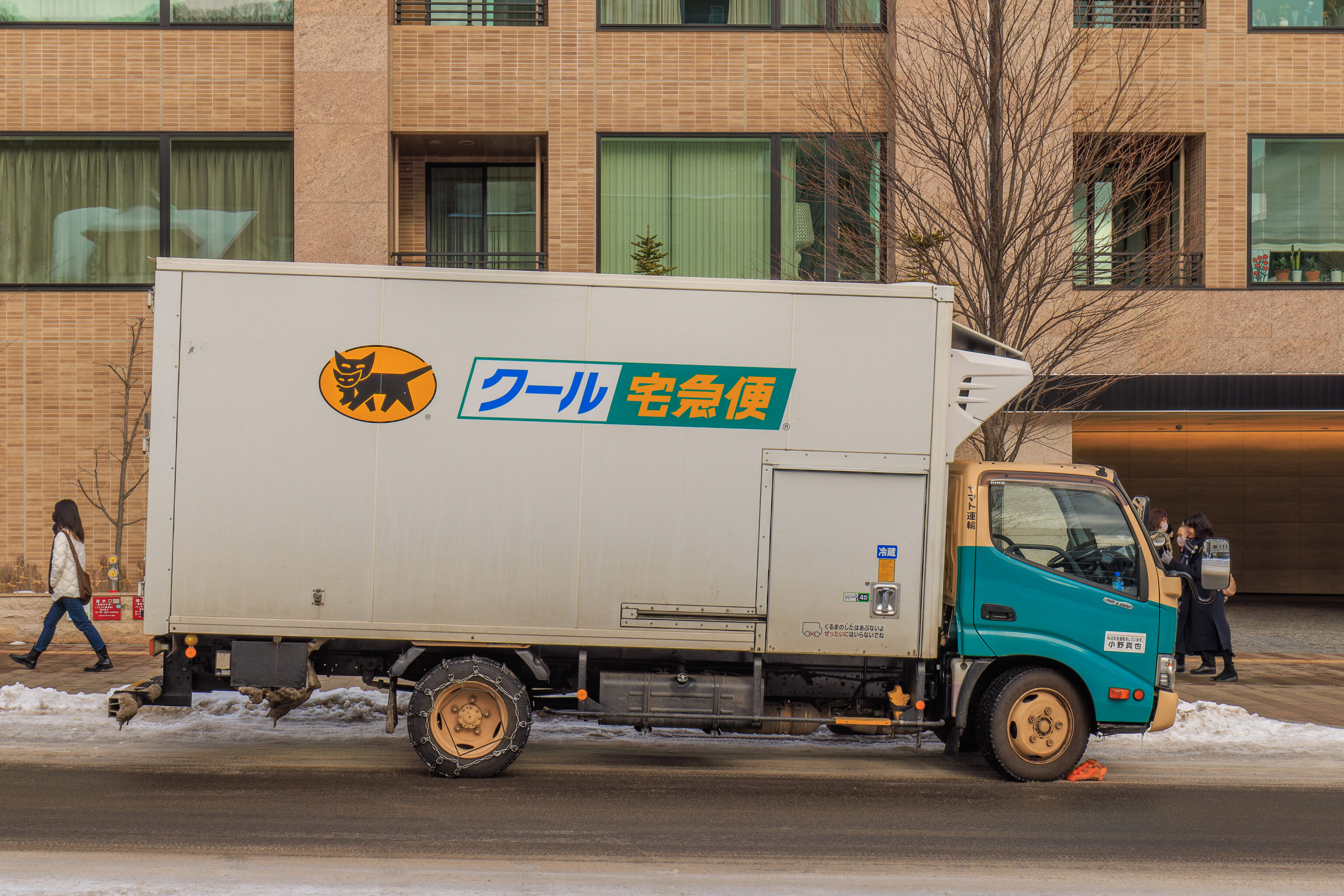
We passed by a Yamato Transport truck with its cat carrying cat logo.
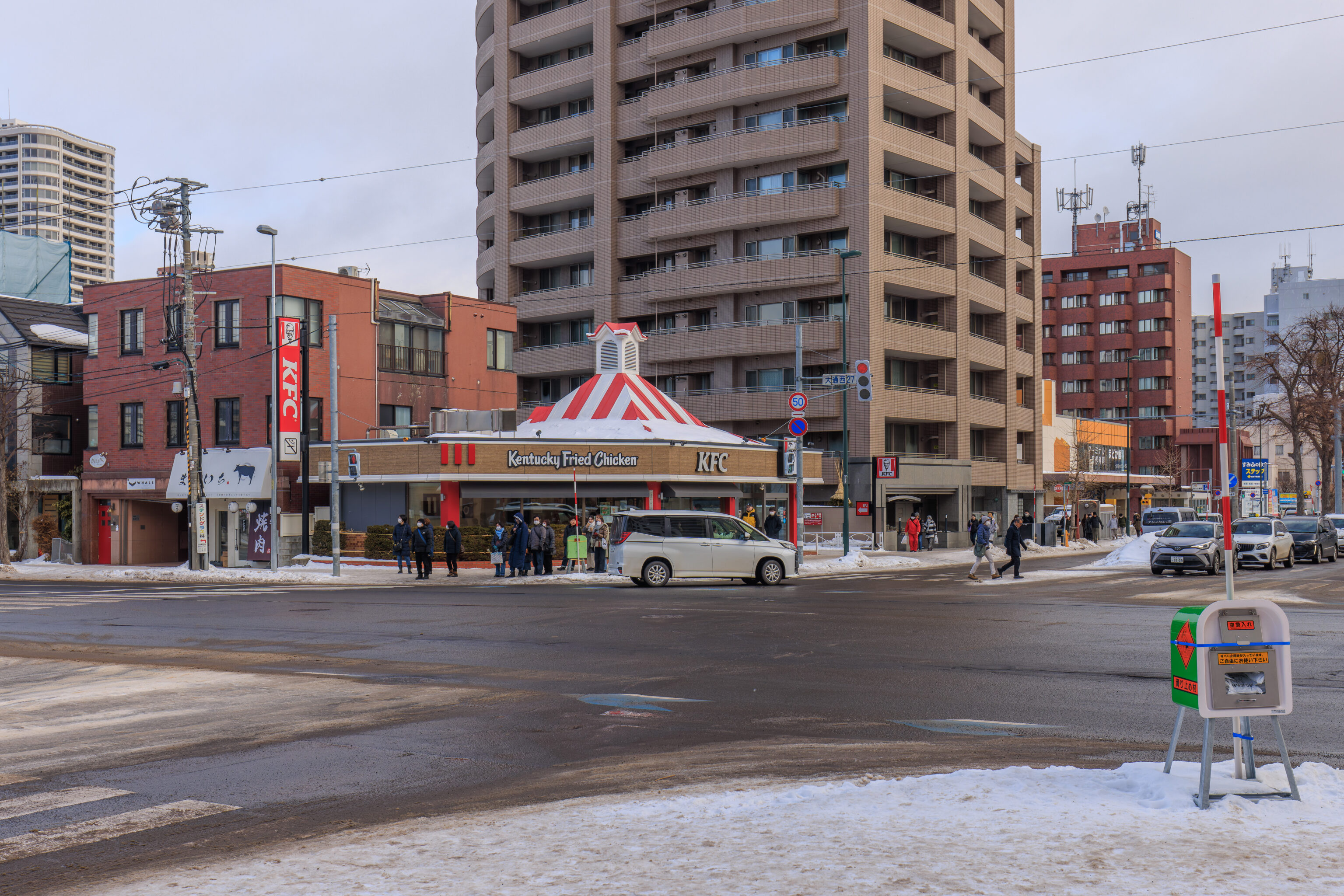
There was a very American looking Kentucky Fried Chicken across the street.

We noticed these dispensers at many intersections in Sapporo. They contain free sand for traction purposes.
Odori Park
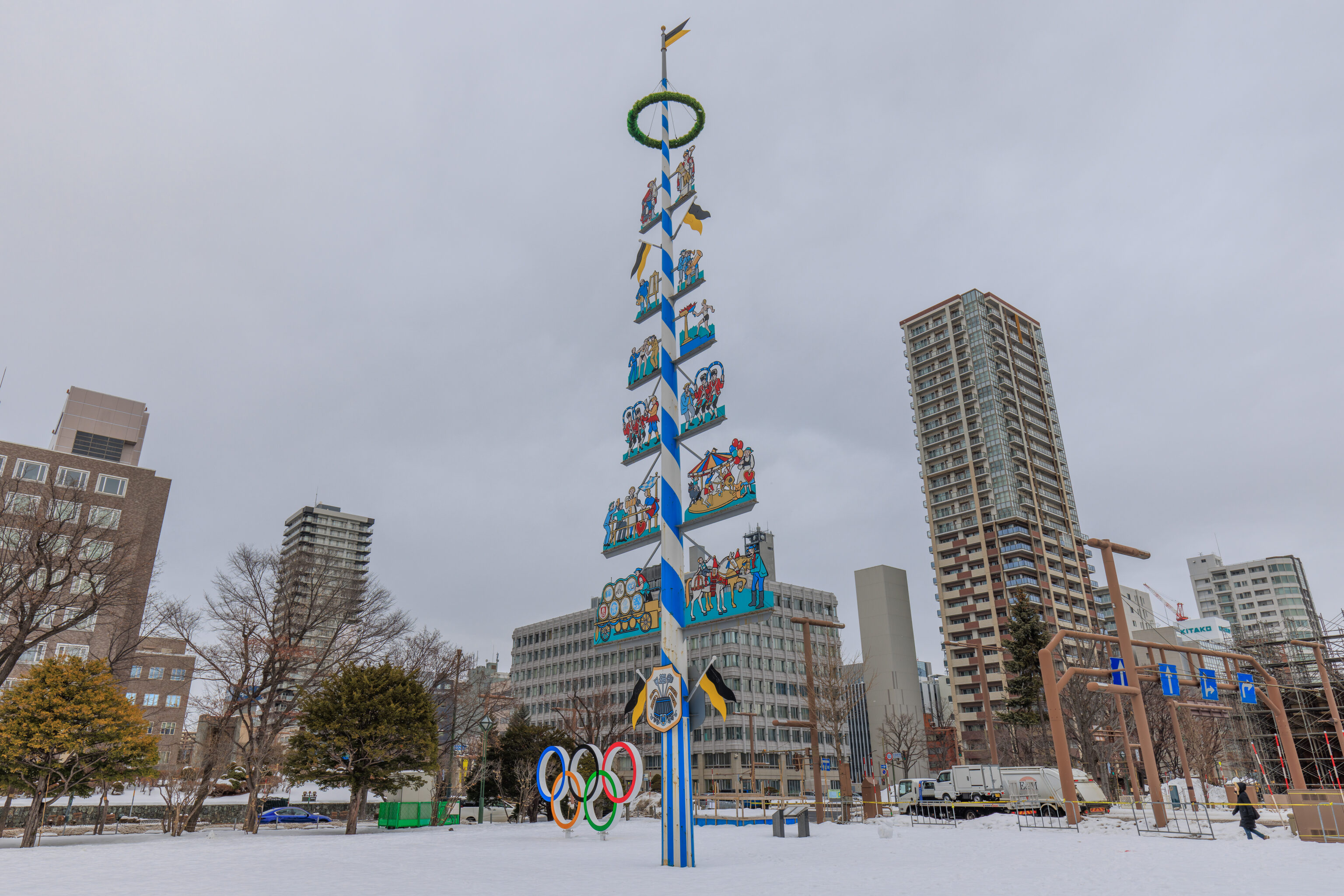
We took the subway two stops to 西11丁目駅 Nishi-Juitchome Station on the south side of the western portion of 大通公園 Odori Park. We thought this pole looked quite a bit like a Maypole and, upon closer examination, that’s exactly what it was! It was donated by the city of Munich in 1976, as explained by a nearby sign:
Maibaum
This Maibaum was donated by the sister city of Munich in May 1976 after the sister city affiliation was signed in 1972, but was removed in 2000 due to deterioration. After that, restoration work was carried out mainly by students of Sapporo Municipal College of Technology, and was completed in November 2001. Maibaum means "May tree" in German, and symbolizes the joy of welcoming spring. In Munich, it stands at the Viktualienmarkt market. The Maibaum in Sapporo is 23m tall.
1976 (Showa 51)
Donated by the City of Munich
Renovated in 1982
1992
Paint renovation
2000
Decorations temporarily removed due to deterioration
Restored in 2001
2010
Paint renovation
Bunwa 2nd year (2020)
Large-scale painting and repair work carried out by the Sapporo Paint Industry Cooperative Association as a volunteer project to commemorate the 60th anniversary
The sign mentions the Maypole at the Viktualienmarkt, which we’ve been to and have seen!
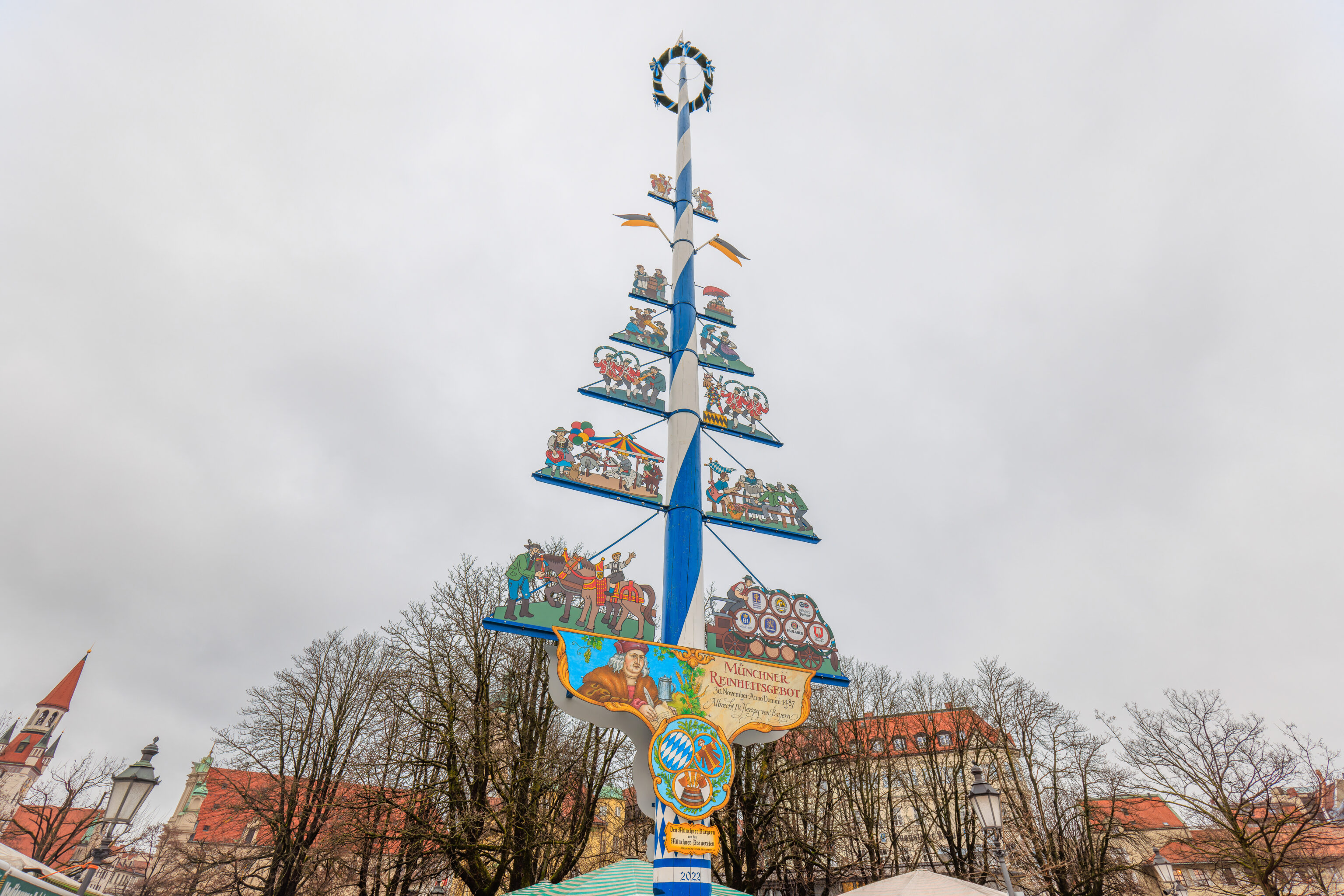
The Maypole that we saw last March in Munich at the Viktualienmarkt isn’t quite the same, however, there are sources on the Internet with photos that show a Maypole that looks more like what we saw here today. The one here in Odori Park was donated in 1976 so it is very well possible that it was an exact replica of whatever stood in Munich at the time.
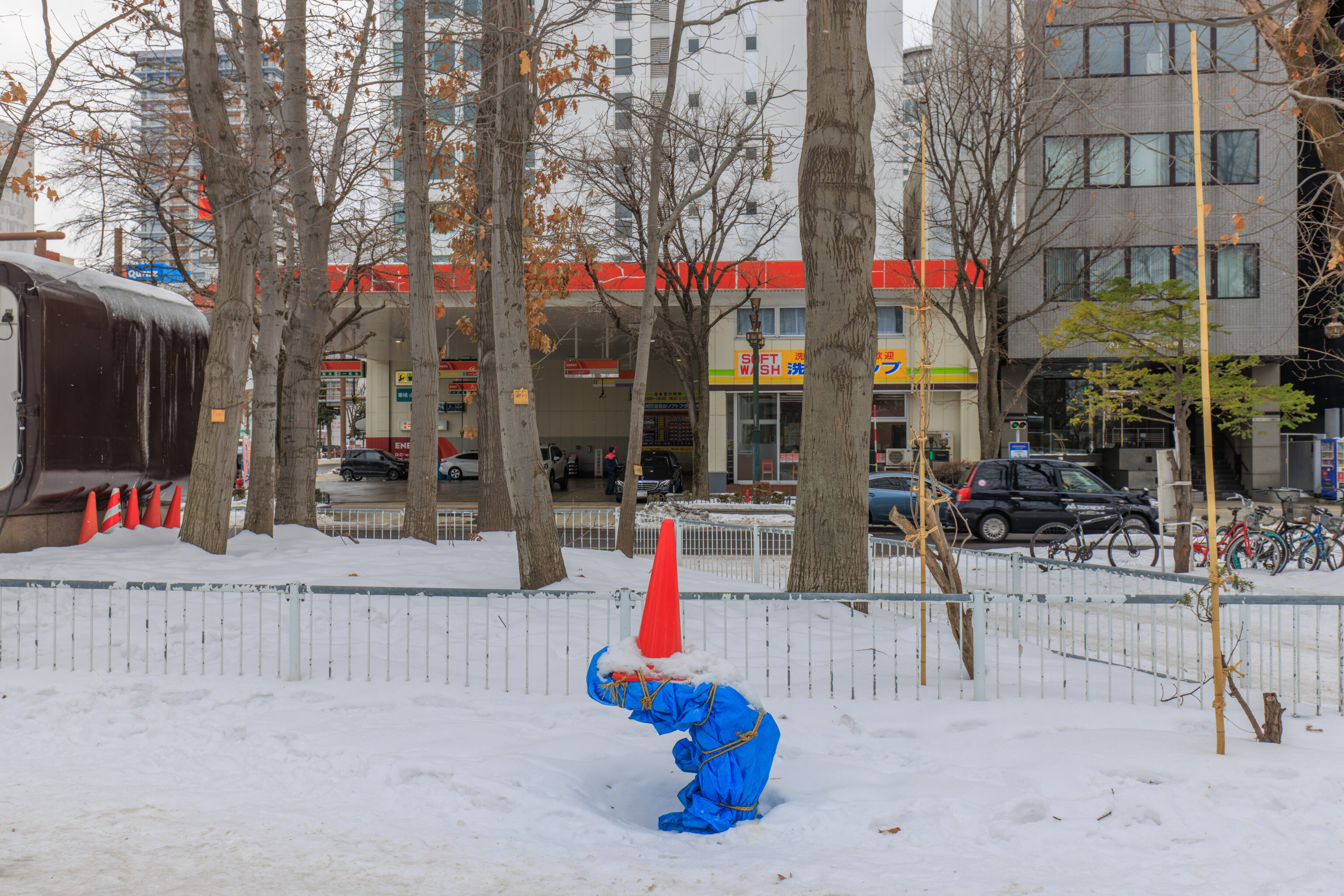
This water fountain, bundled up and with a cone atop to be able to locate it in deep snow, looks a bit like someone bowing!
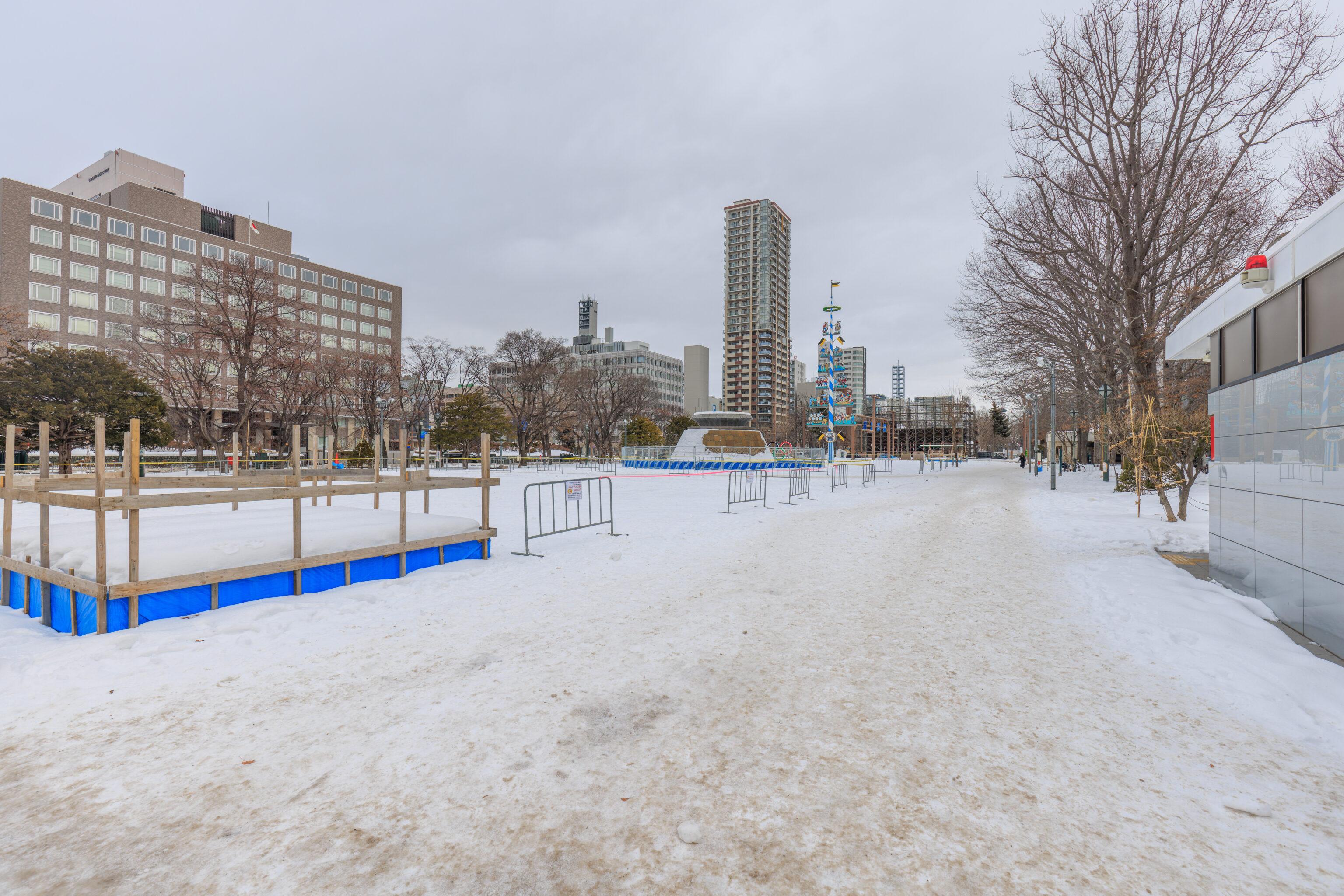
We walked to the west, away from the Maypole, to reach the western end of the park which was less than two blocks away. This was the view looking back at the Maypole.
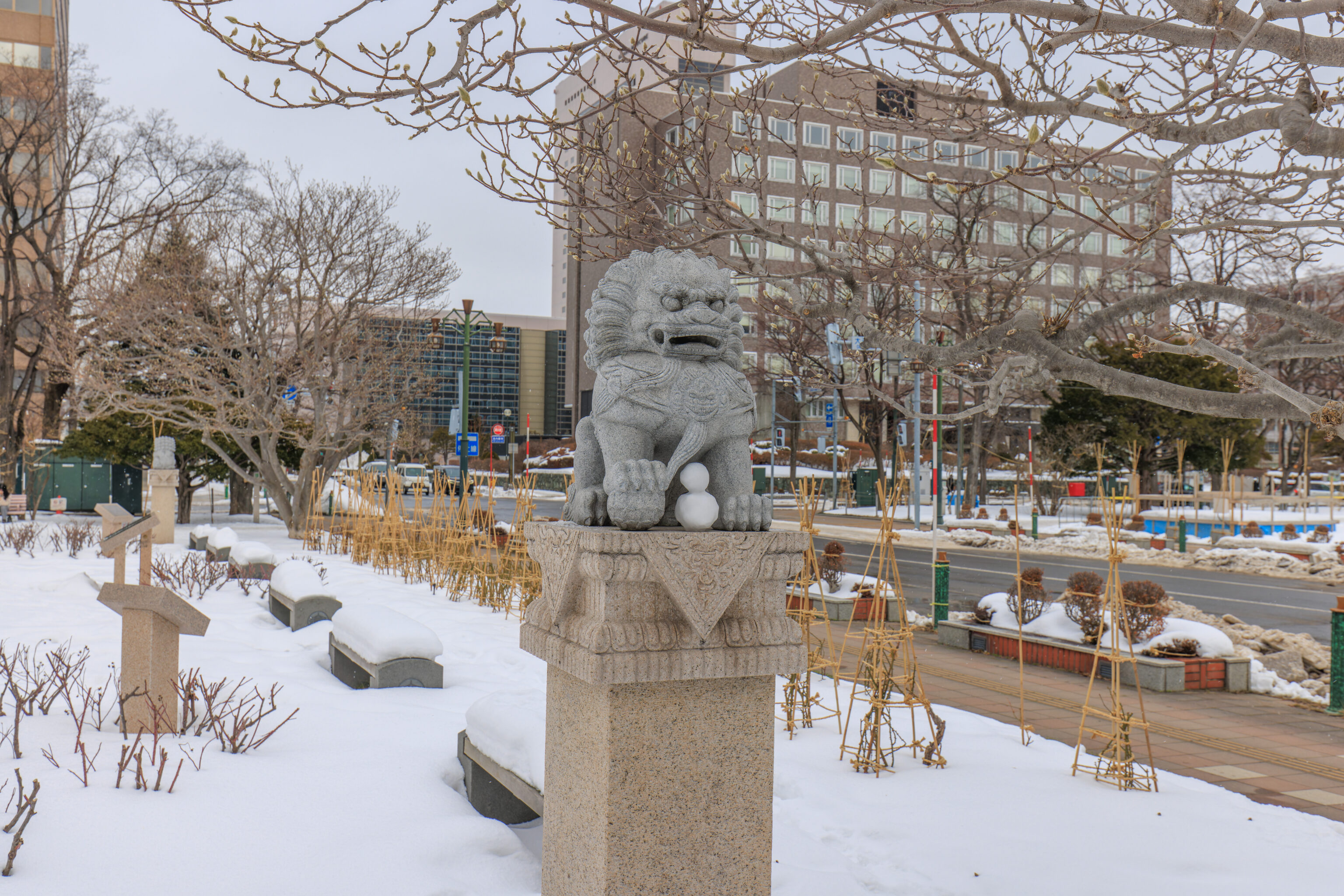
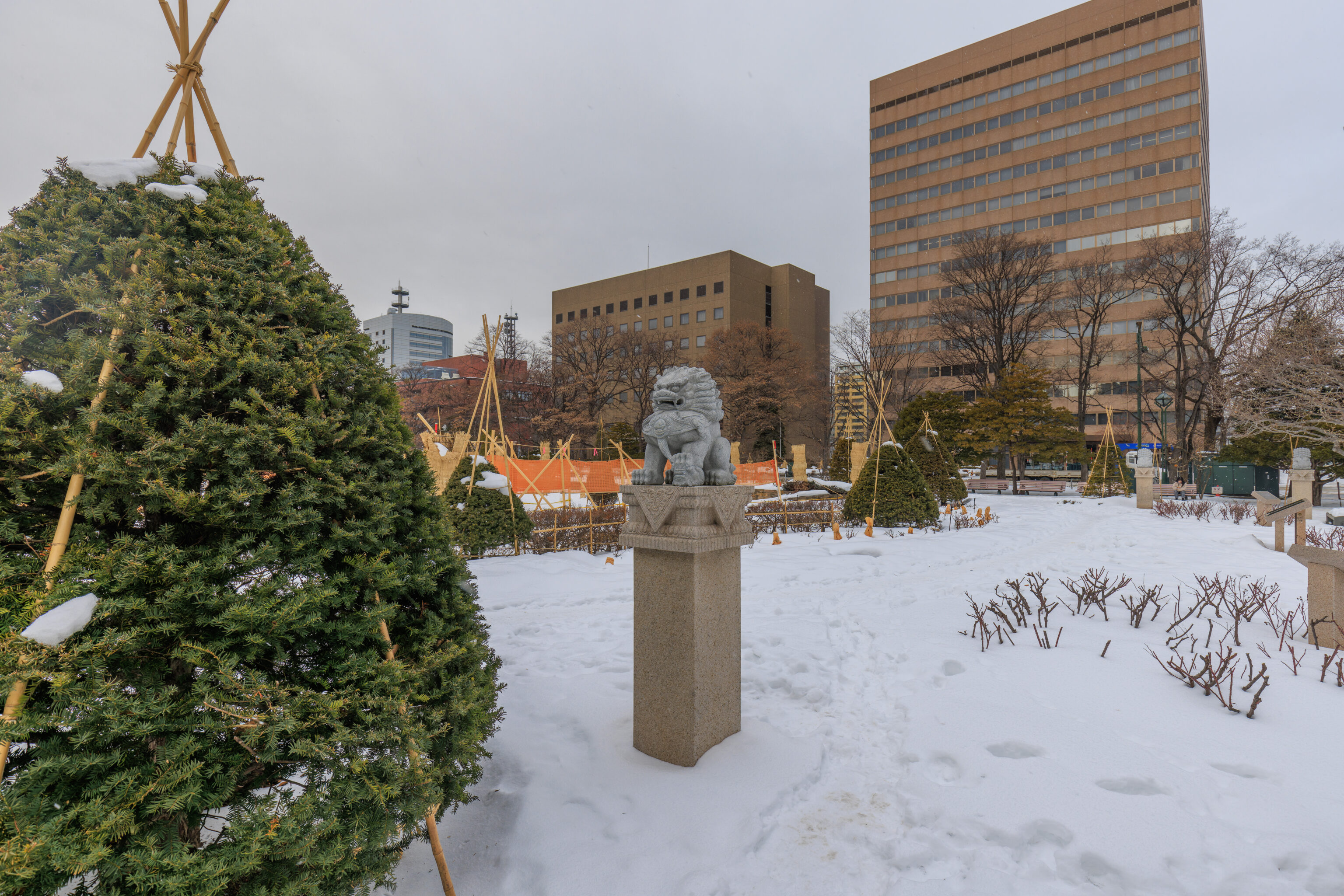
Two very similar but not identical sculptures, one with a tiny snow man!
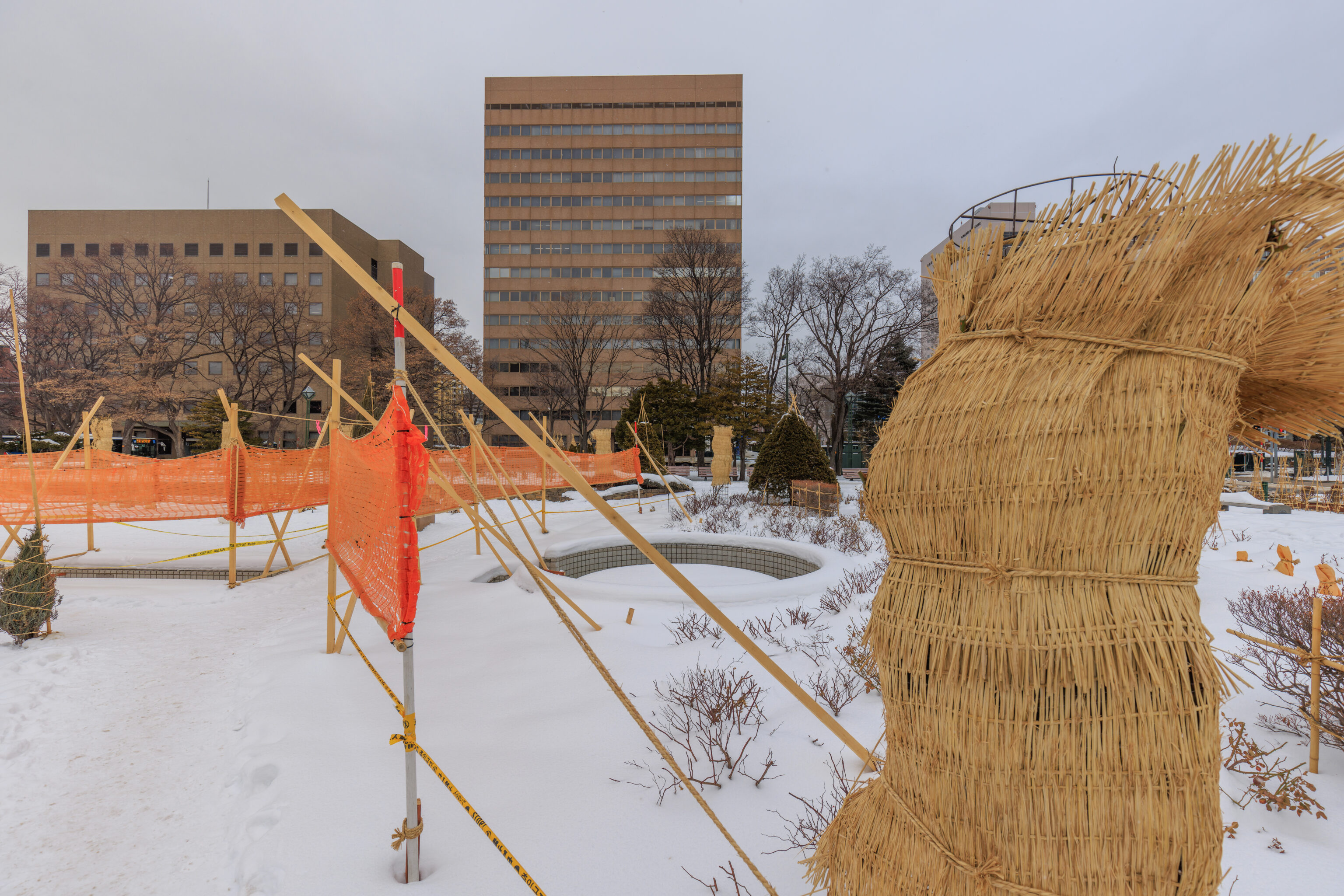
The westernmost block of the park contains a western-style sunken garden with water and roses. Many of the plants are covered during the winter to protect them. Presumably the orange fencing is for construction and renovation activities?
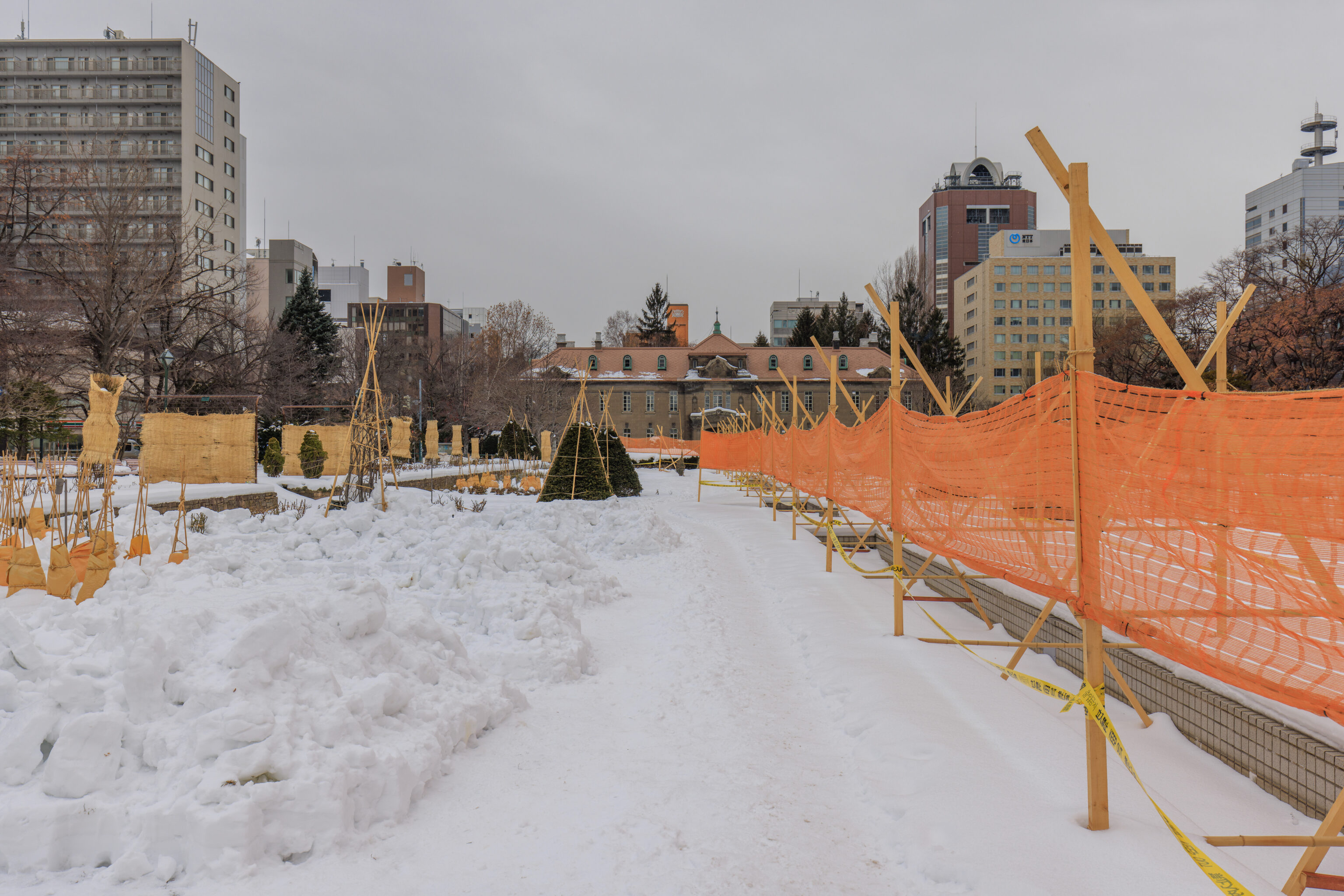
A sign by the southern half of the sunken garden explains Sapporo’s Sister City relationship with Munich, translated from the Japanese half of the sign using Google Translate:
Sapporo's sister city - Munich
Sapporo and Munich became sister cities on August 28, 1972.
Munich is the capital of Bavaria, the largest state in Germany. It originated as a settlement established by Benedictine monks in the 10th century, and its name comes from the phrase "place where monks live." Since the 12th century, it has flourished as the royal castle of the Wittelsbach family, and many luxurious palaces and works of art remain to this day.
During World War II, the city suffered devastating damage from repeated air raids, but it was rebuilt magnificently after the war and is now the economic, political and cultural center of southern Germany.
The sign also indicates that the roses in this section, or possibly just a part of this section, are popular in Germany.

The northern part of the garden is dedicated to Sapporo’s sister city relationship with Portland, Oregon:
Sapporo's Sister Cities Portland
Portland in the United States was the first city with which Sapporo officially established a sister-city affiliation, signing the agreement in 1959.
The largest city in the state of Oregon, Portland is a center of trade and commerce on the West Coast of the United States. Laid out in a grid pattern of streets like Sapporo, Portland is well known for its harmony between urban function and abundant greenery. The city has focused heavily on environmental policy, and Portland consistently ranks as one of the most livable in the U.S. in domestic surveys. The lofty, perennially snow-capped Mt. Hood stands on the outskirts of the city. D
Portland is affectionately known as the "City of Roses," and the Rose Festival, which is the city's largest public celebration, is held every year in June.
The roses in this section of the garden are ones that are popular in the US.
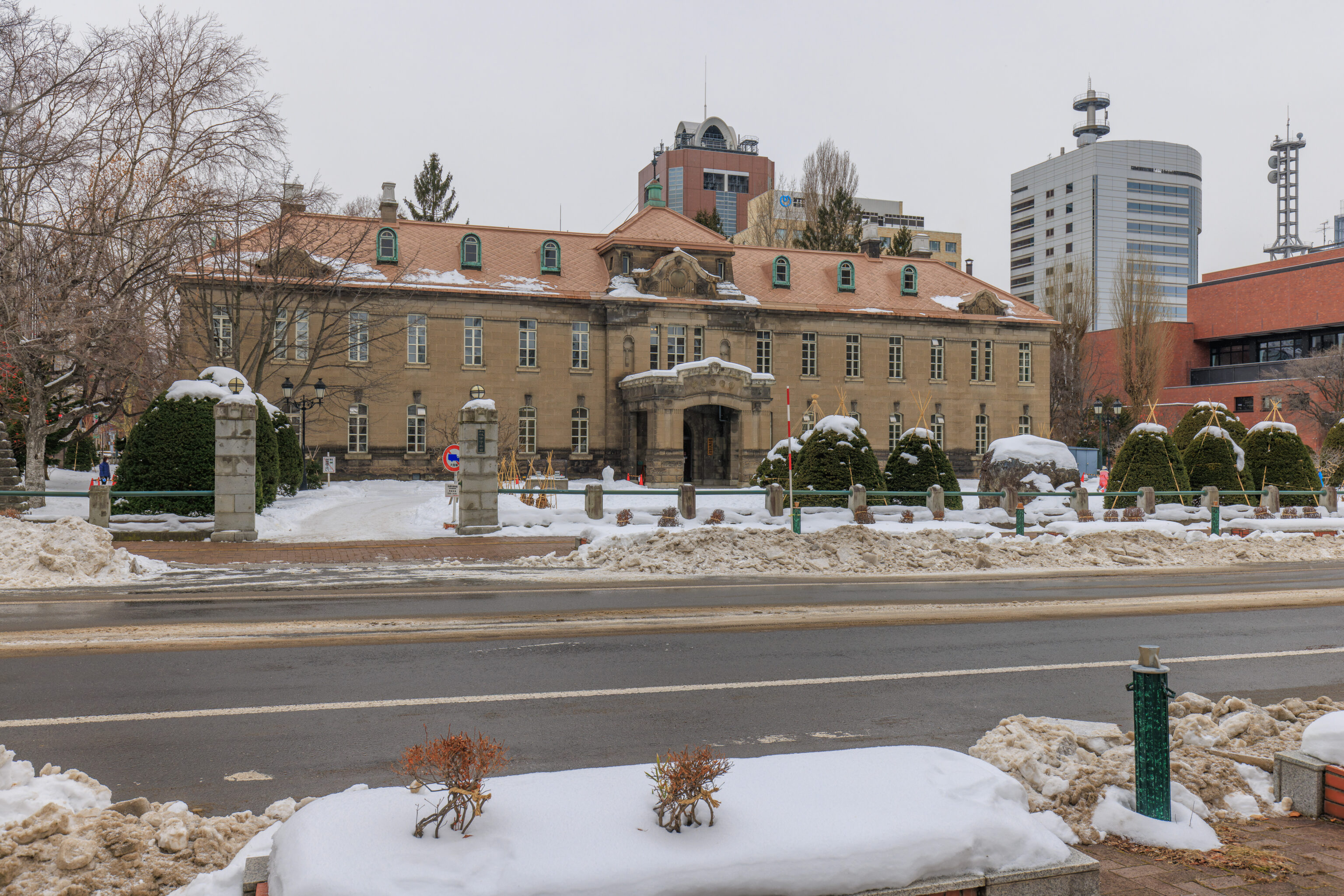
The 札幌市資料館 Sapporo City Museum is across the street from the western end of Odori Park. This historic building is the former Court of Appeals.
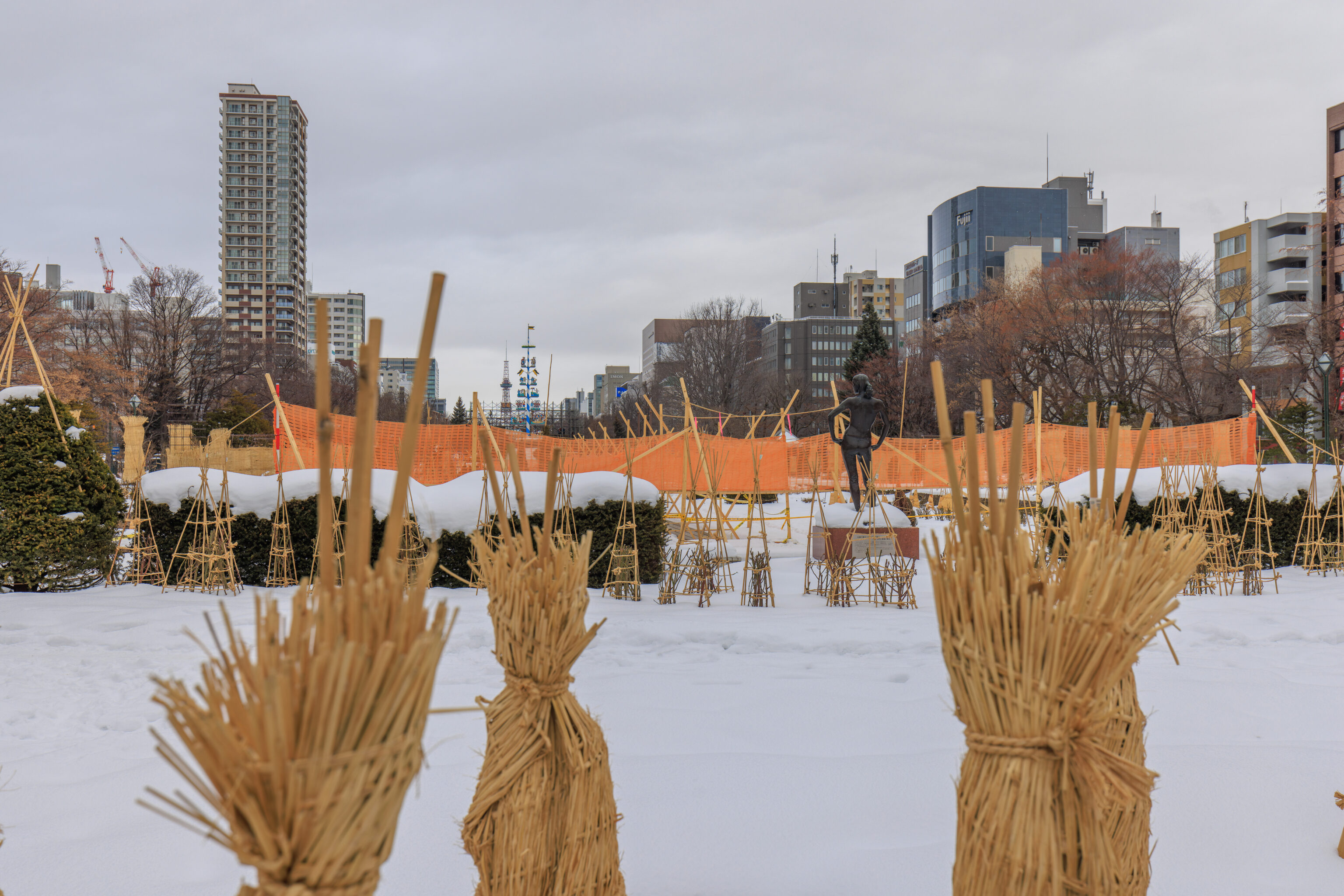
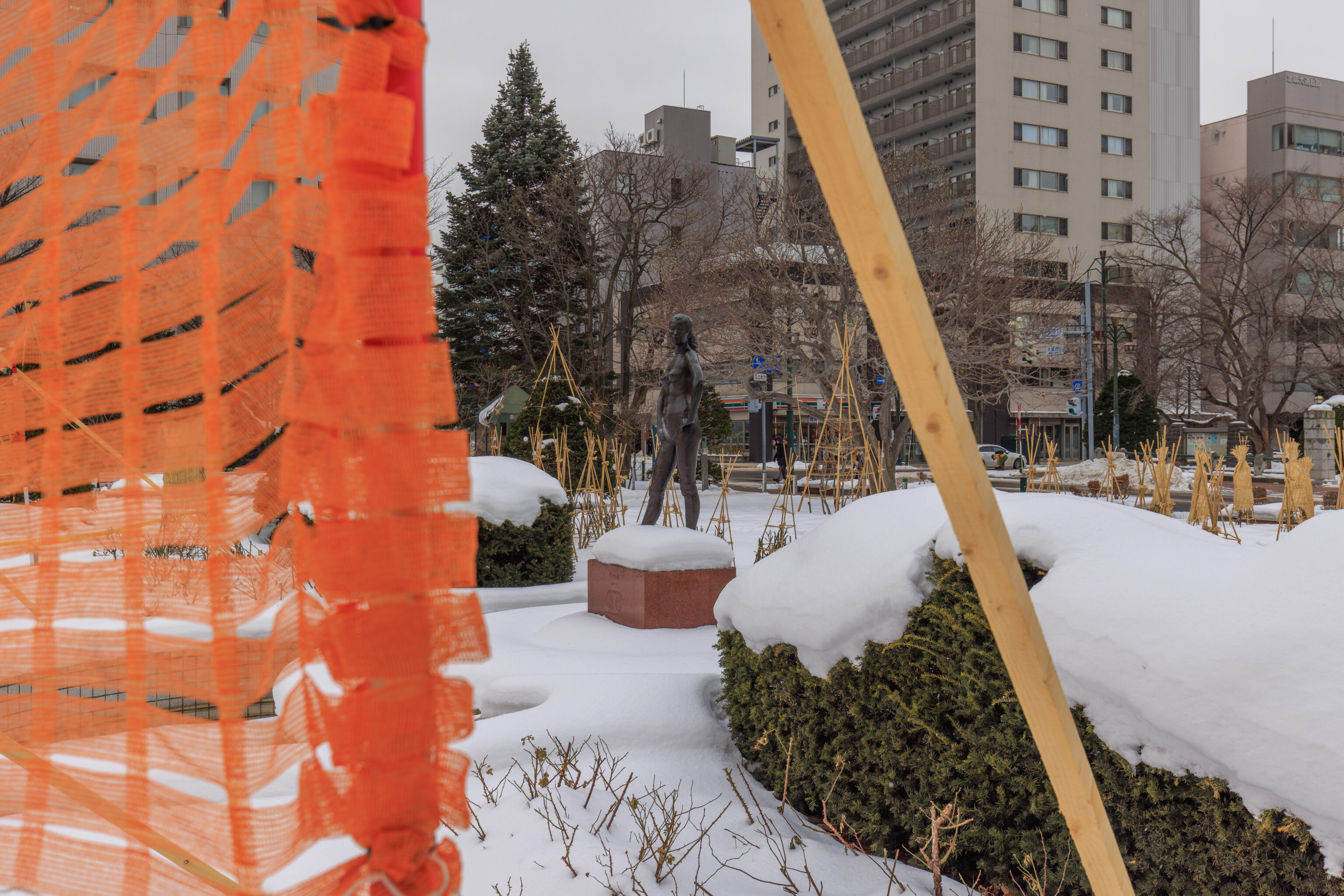
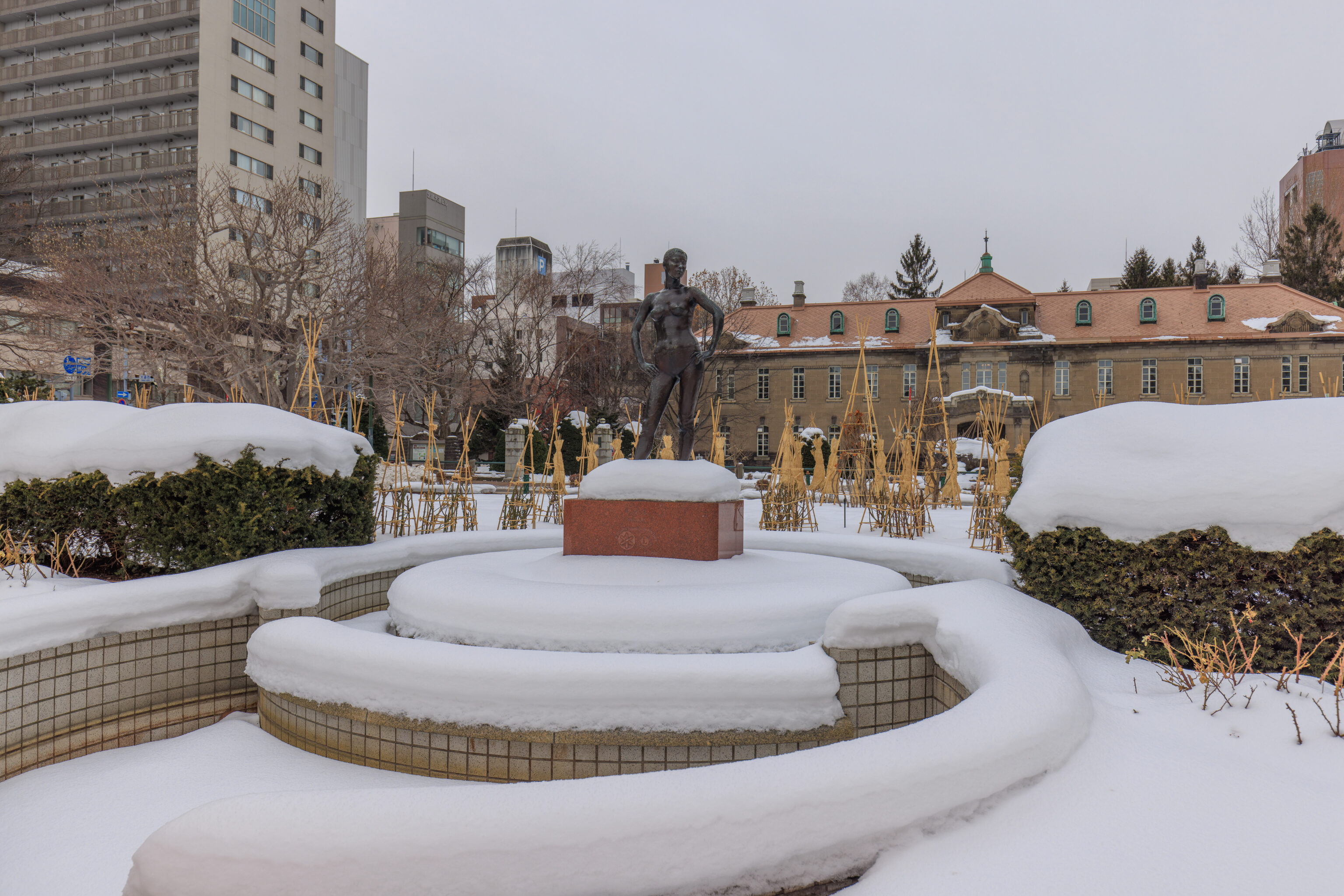
This statue was at the very western end of the garden and stands in the middle of a water feature. It seems likely that water comes out from around the statue and flows down into the long basin that runs through the length of the garden. The park’s Park Guide page describes this simply as the Statue of a Young Woman.
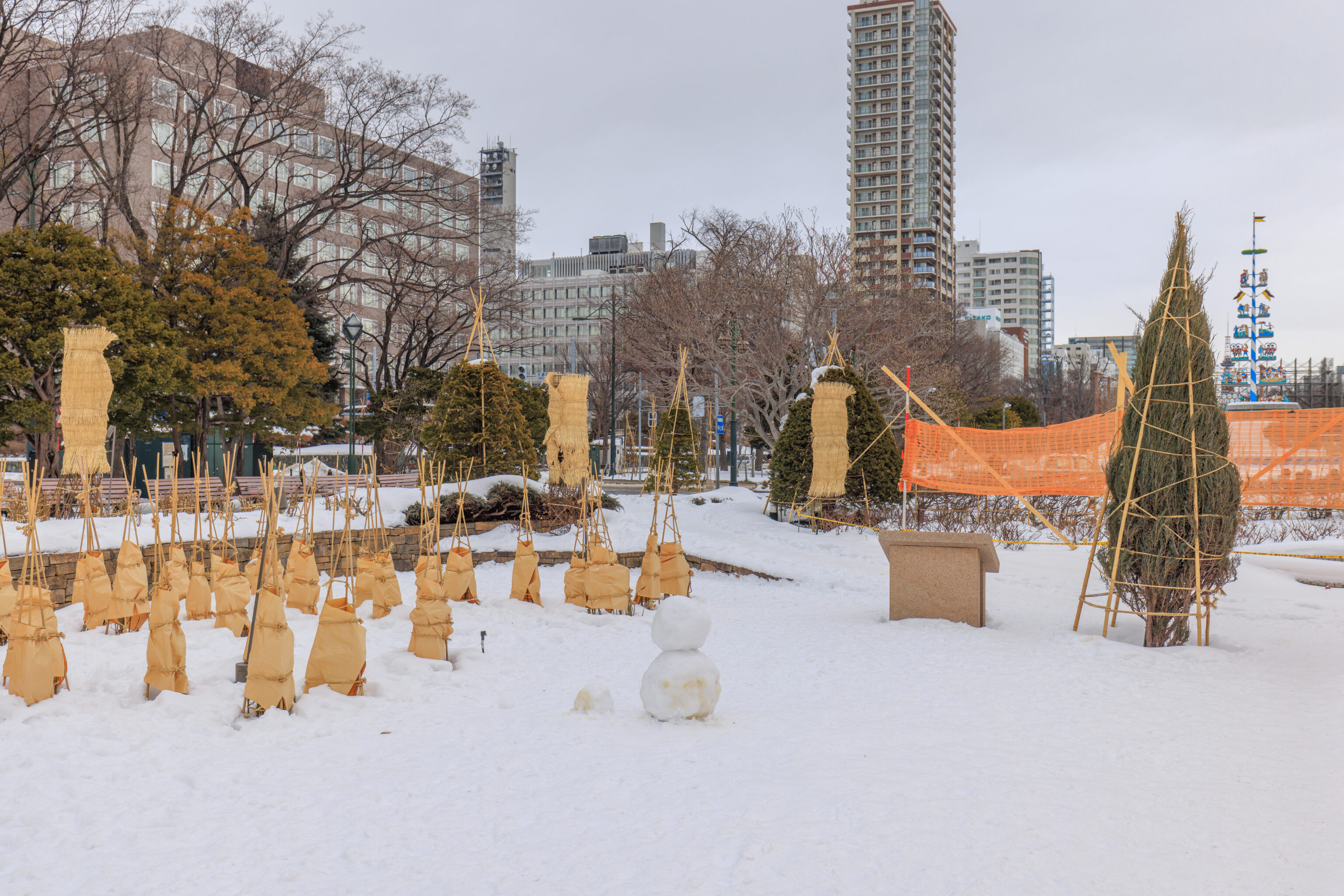
Having reach the western end of Odori Park, we started walking to the east. The park is about 11 blocks long and 1 block wide.
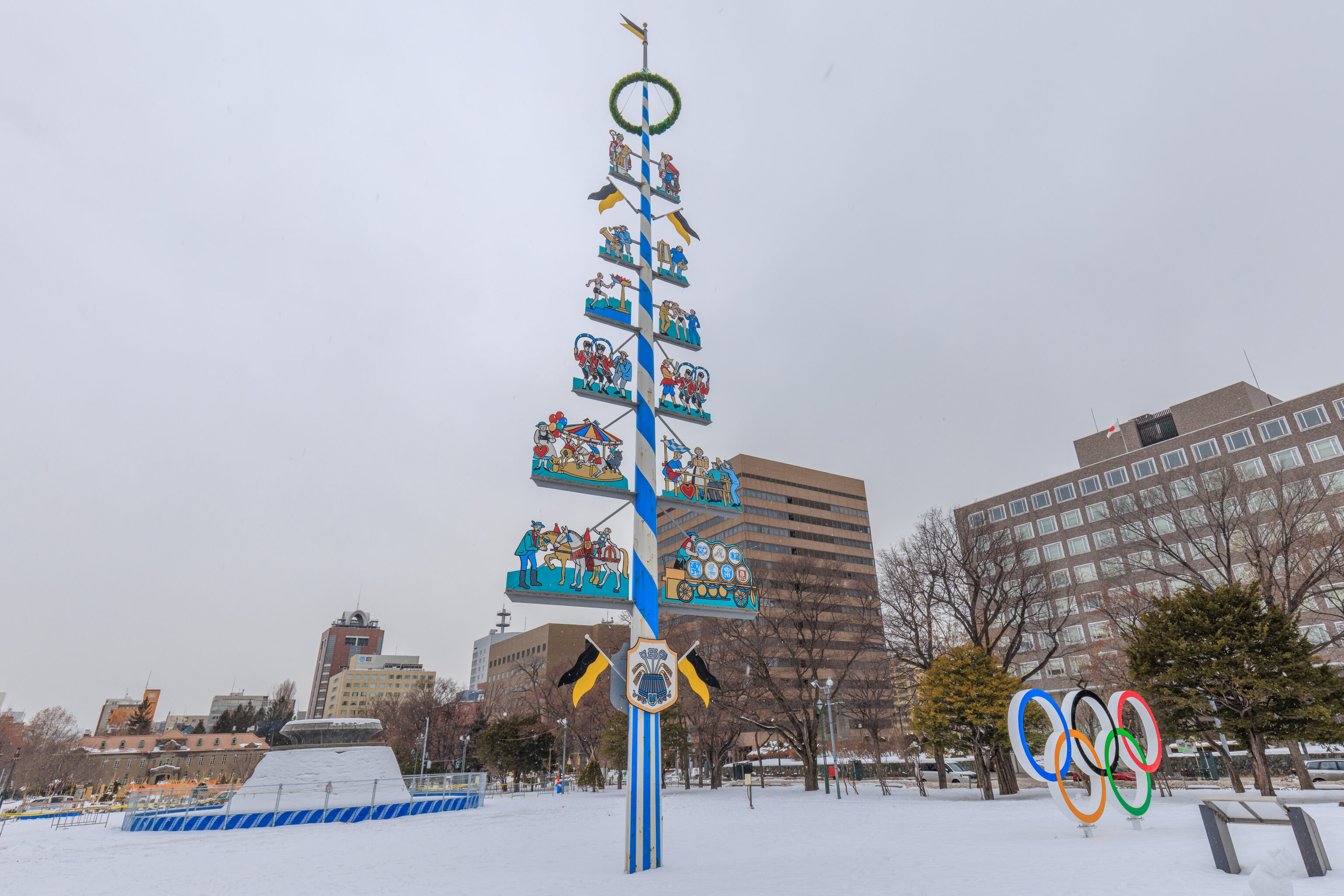
We walked past the Maypole again. The presence of the Olympic Rings seems pretty appropriate as the sister city agreement with Munich was signed in 1972, the year that Sapporo hosted the Winter Olympics. The Maypole was donated in 1976, the year that Munich hosted the Summer Olympics.
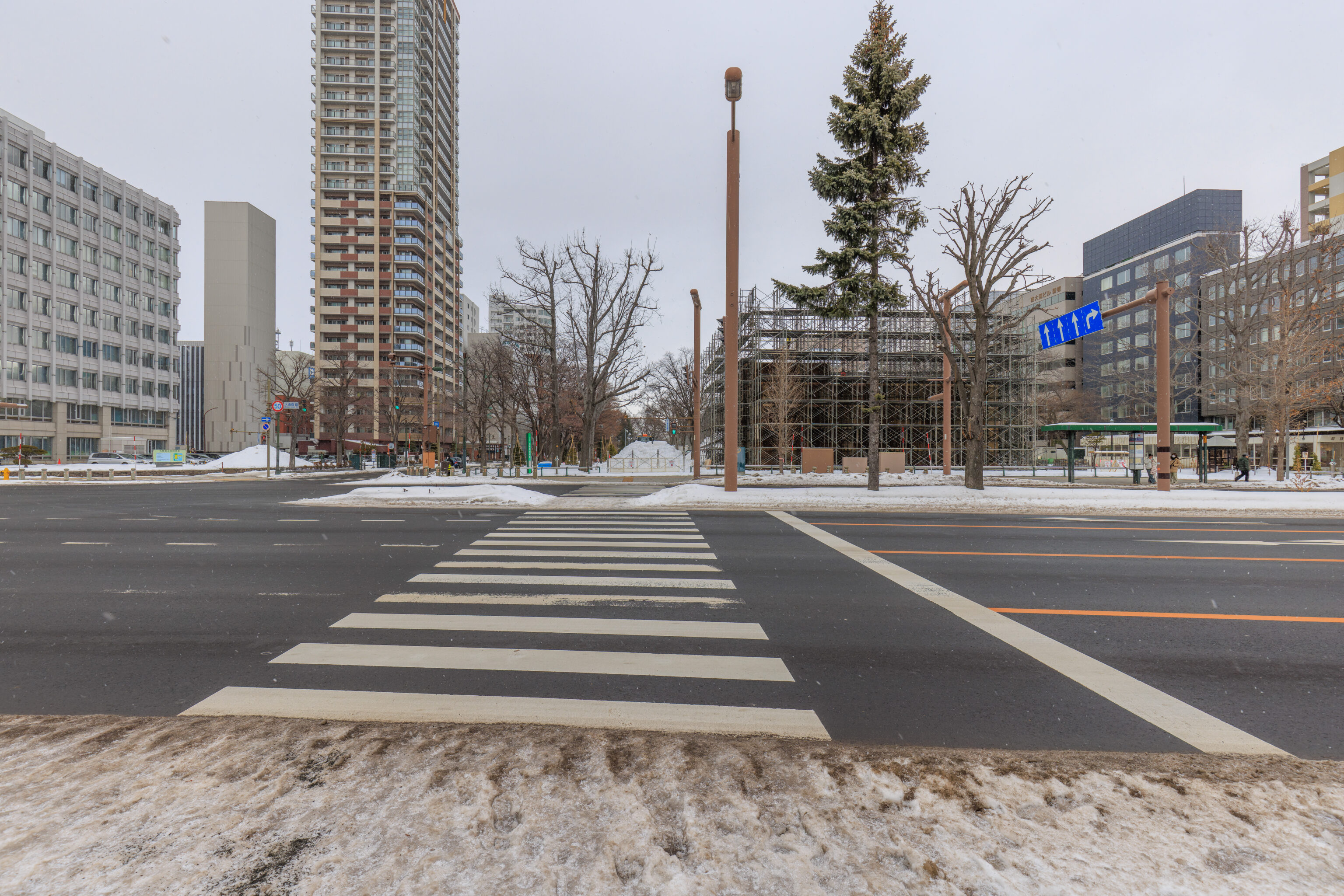
As we crossed the street, we noticed large scaffolding in the next section of the park.
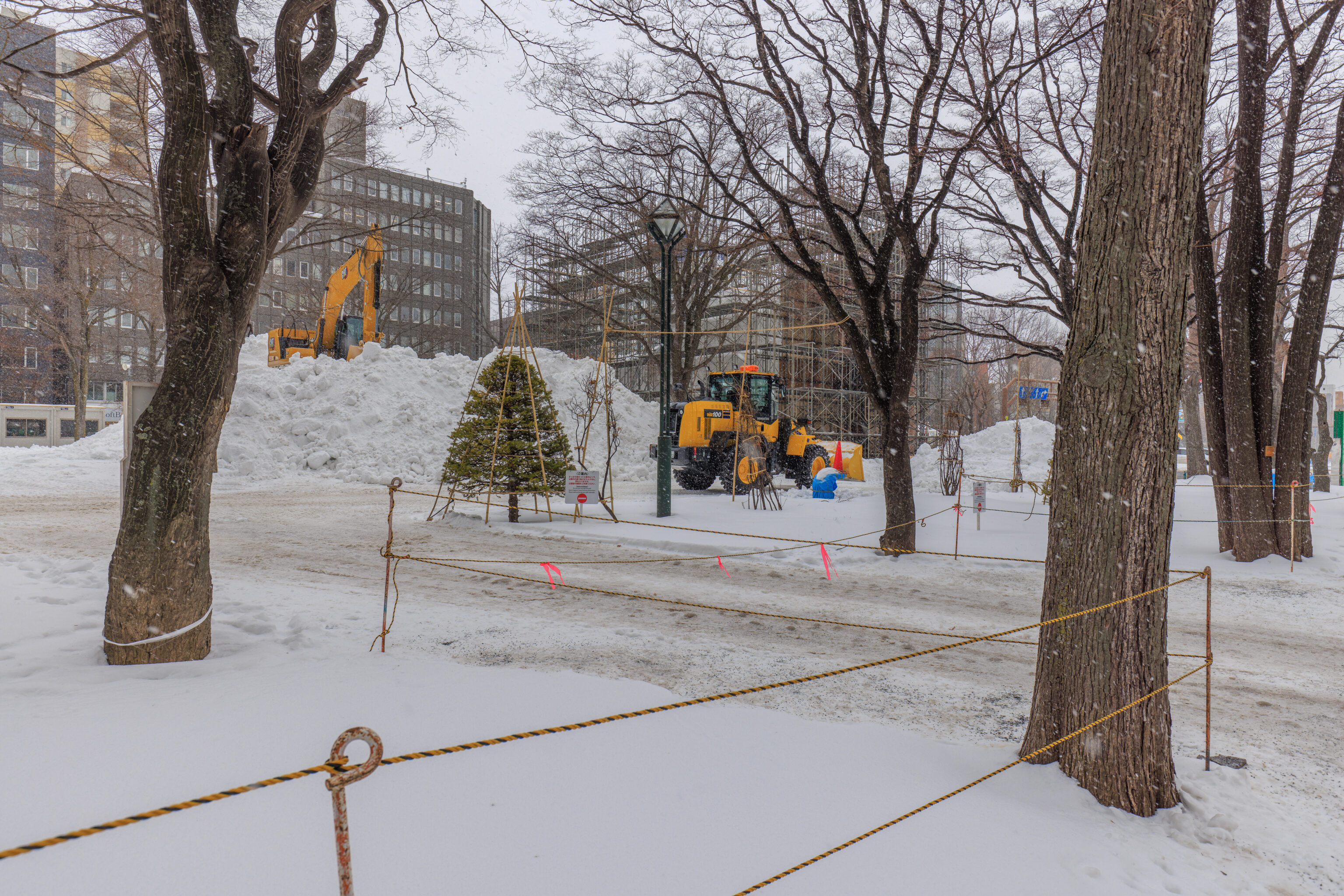
The scaffolding is here for the preparations that are taking palace for the さっぽろ雪まつり Sapporo Snow Festival, scheduled for February 4th to 11th. Huge sculptures are constructed in Odori Park for this yearly event.
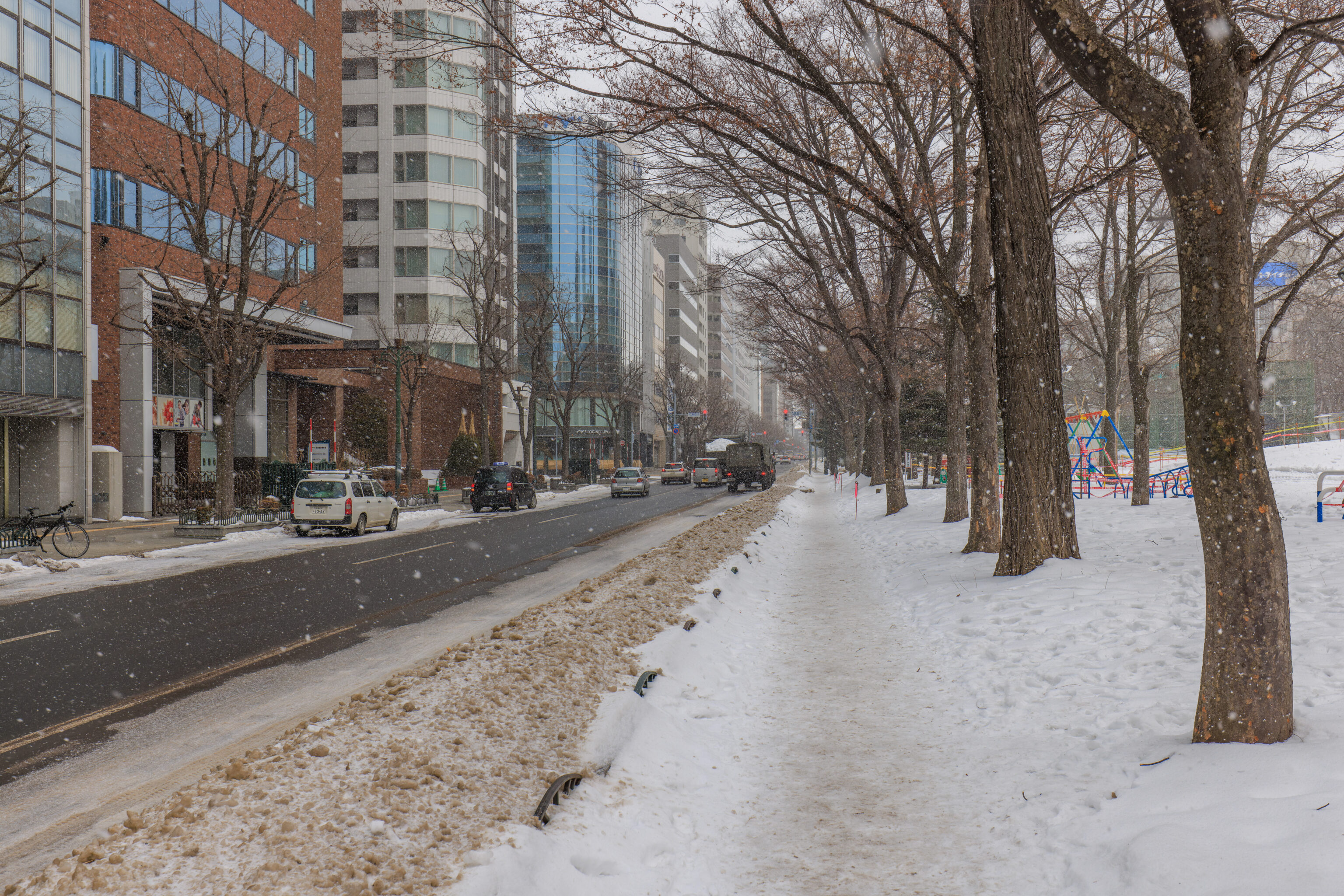
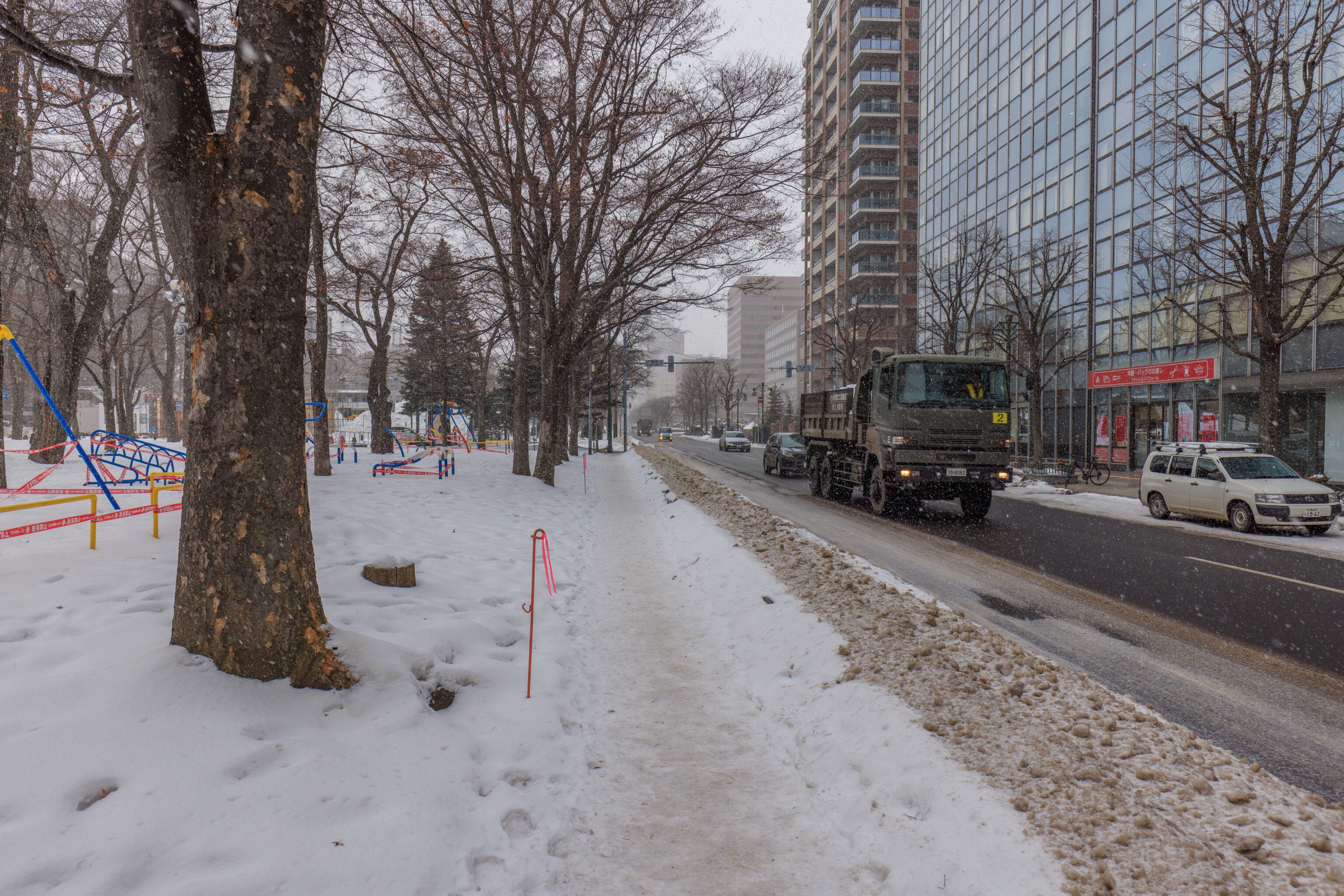
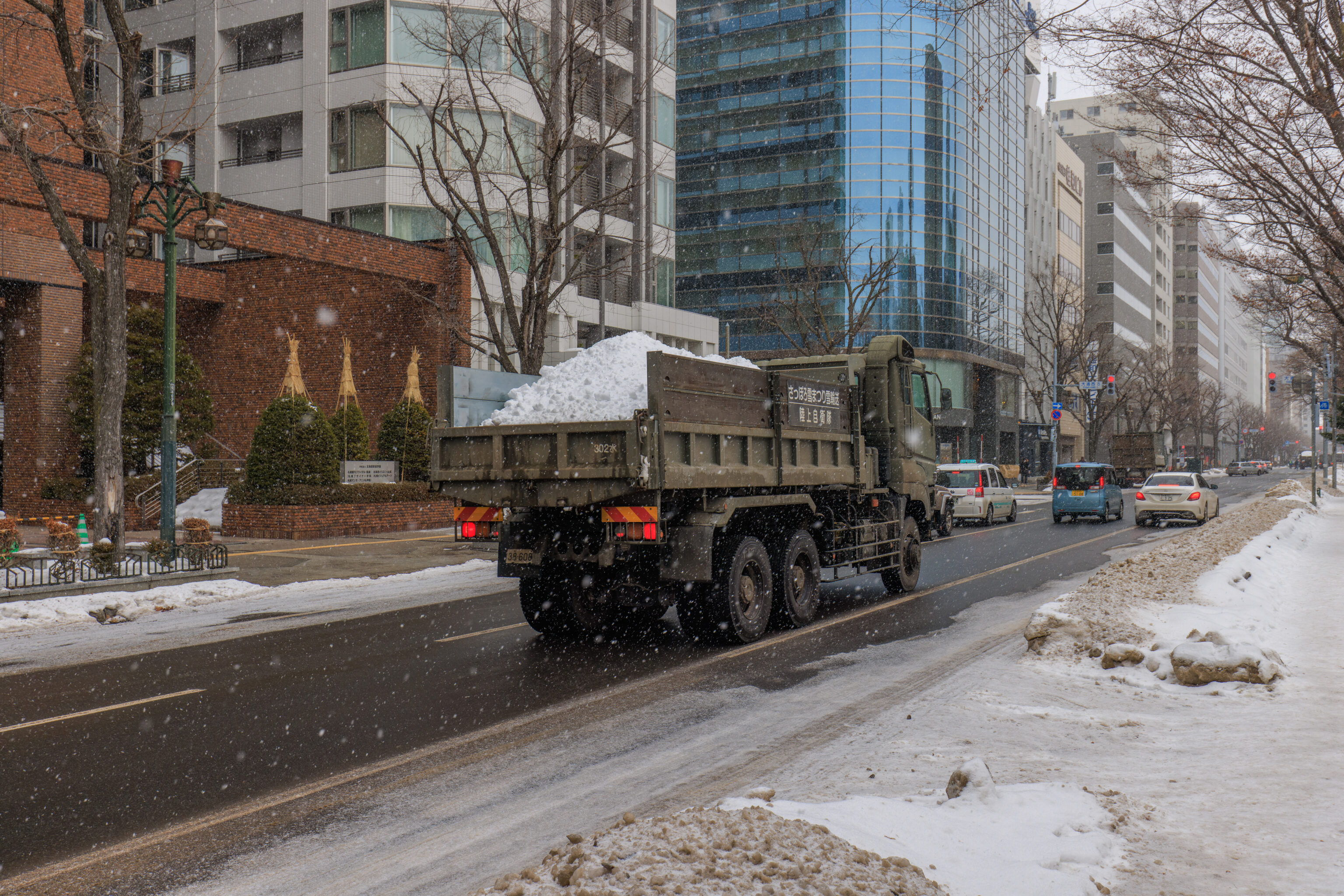
While in Niseko, we saw on TV during the News that the JSDF was involved in moving snow for the Sapporo Snow Festival. Snow is trucked in from other locations to build the massive sculptures! And indeed, we saw military trucks carrying snow!

It was snowing a bit more heavily as we continued walking east through the park.
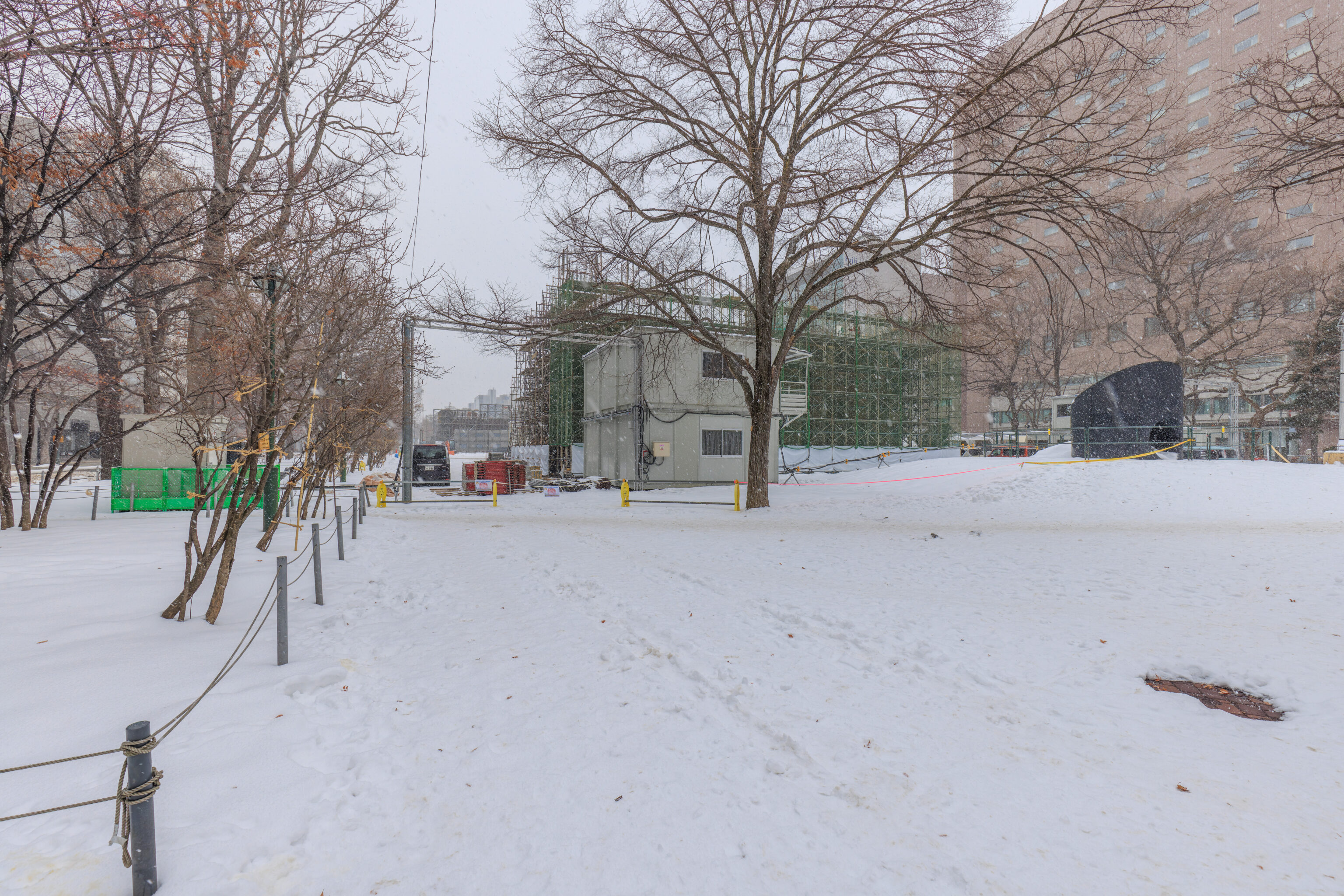


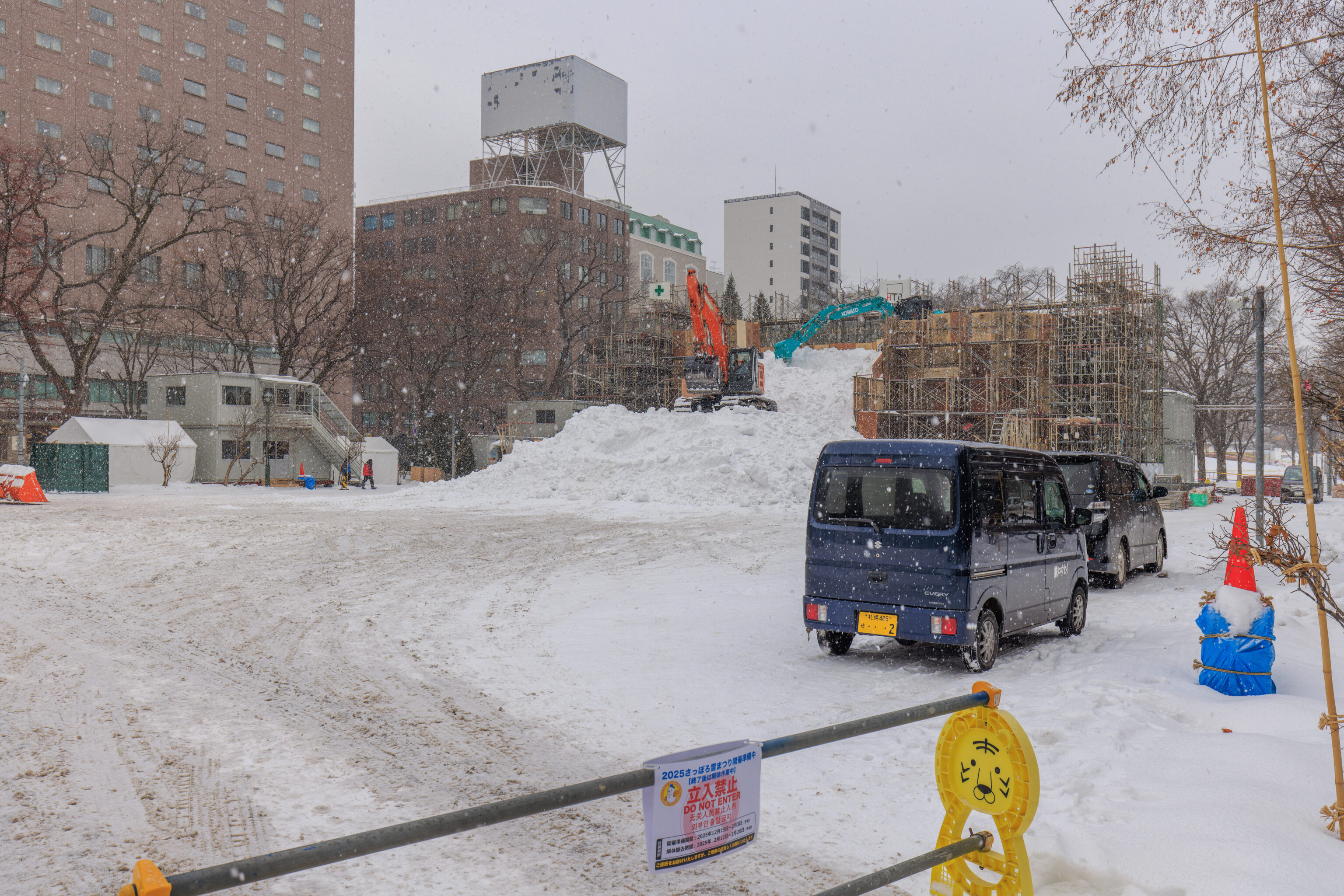
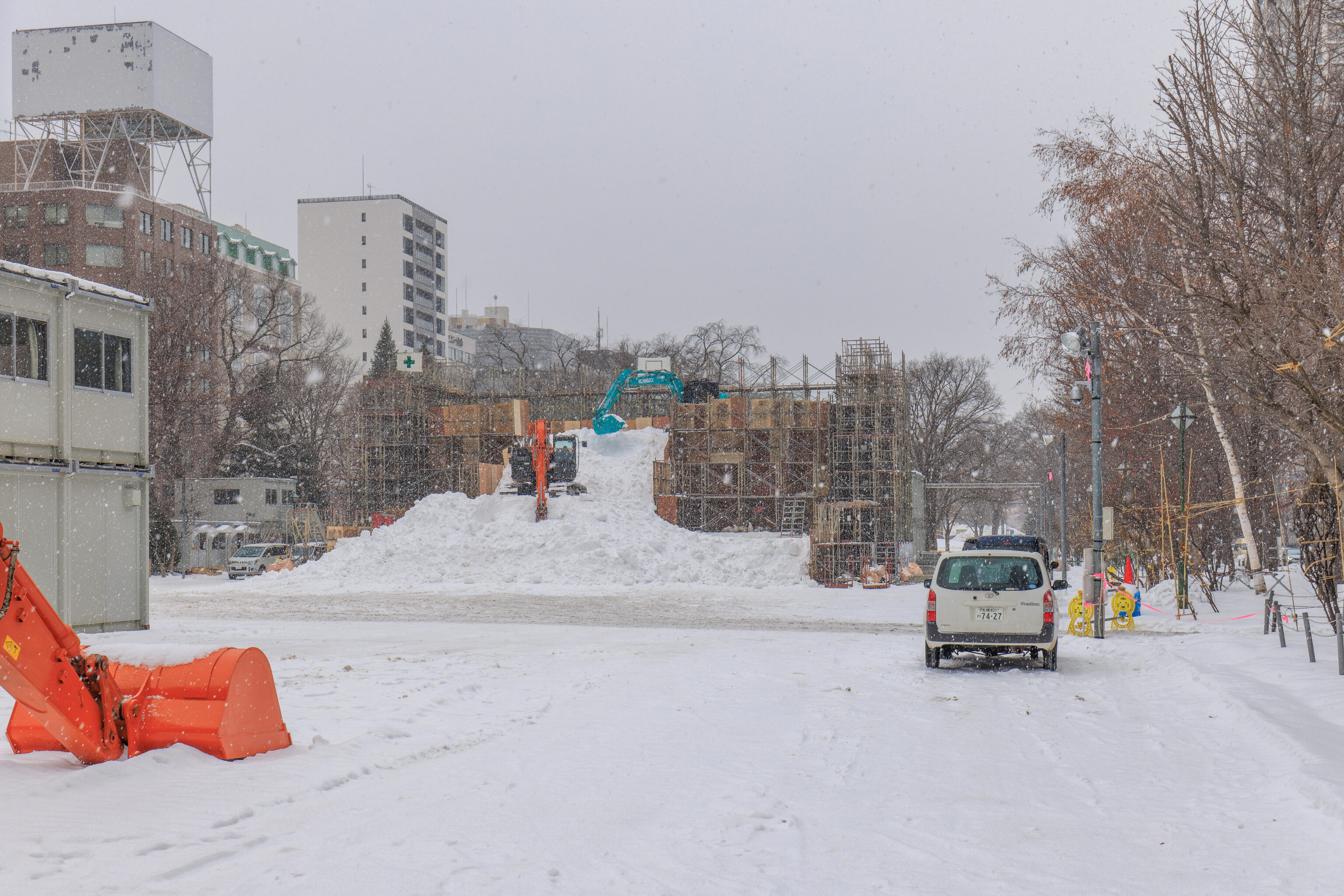
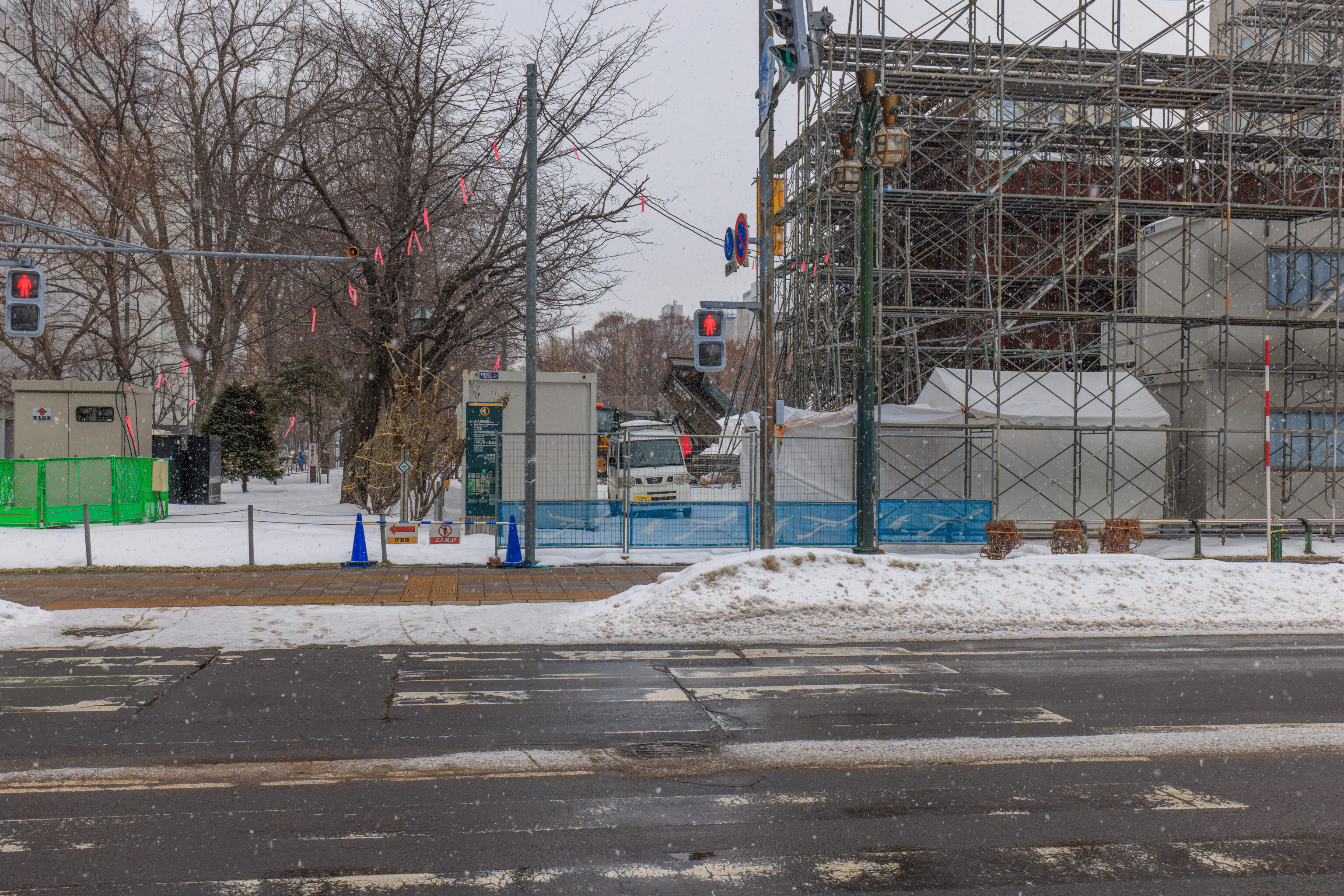
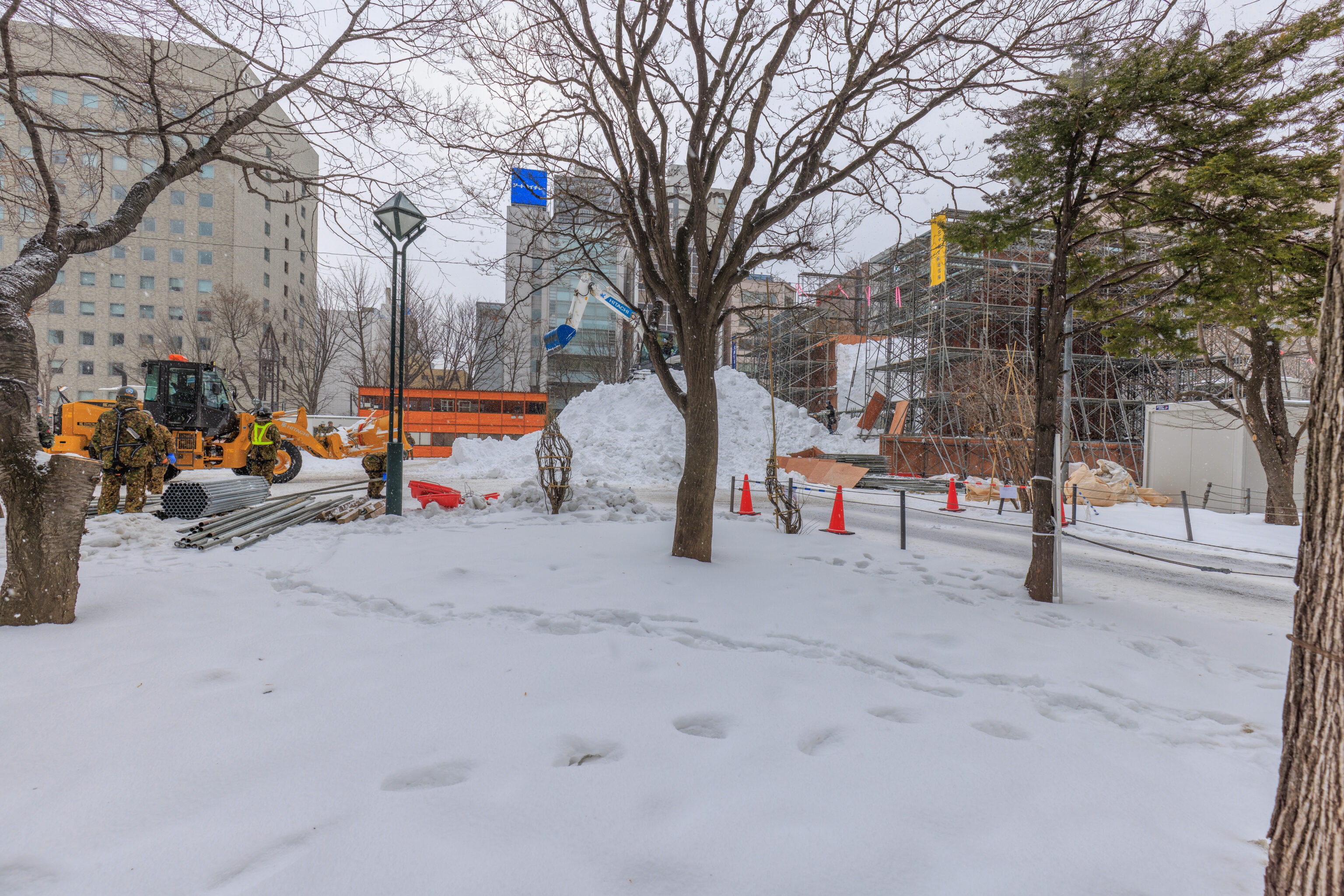
There are multiple blocks with huge sculptures being constructed! It seems to be pretty early in the building process as they are still just piling up snow.
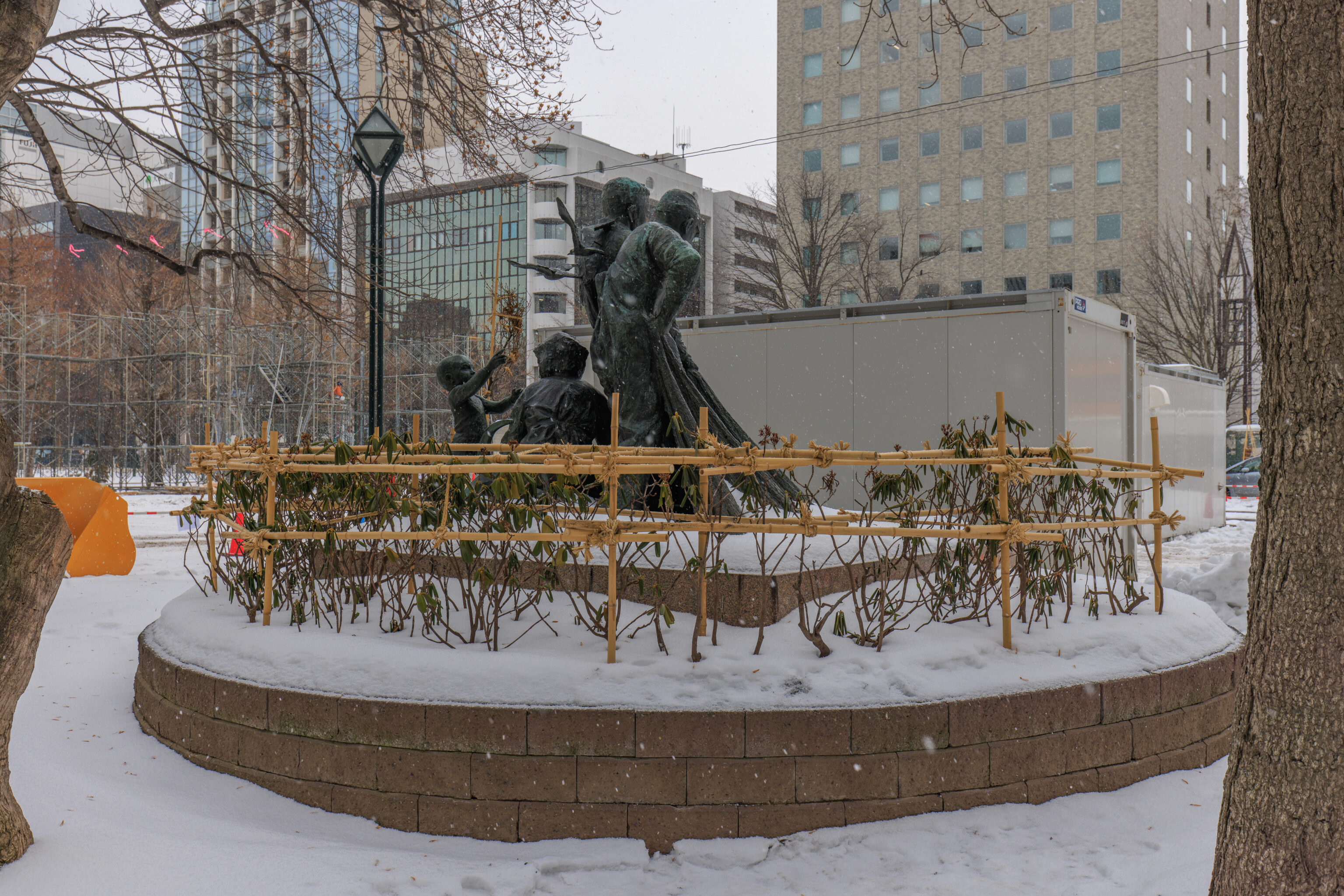
This sculpture, which we could not access due to the festival construction, includes flying birds!
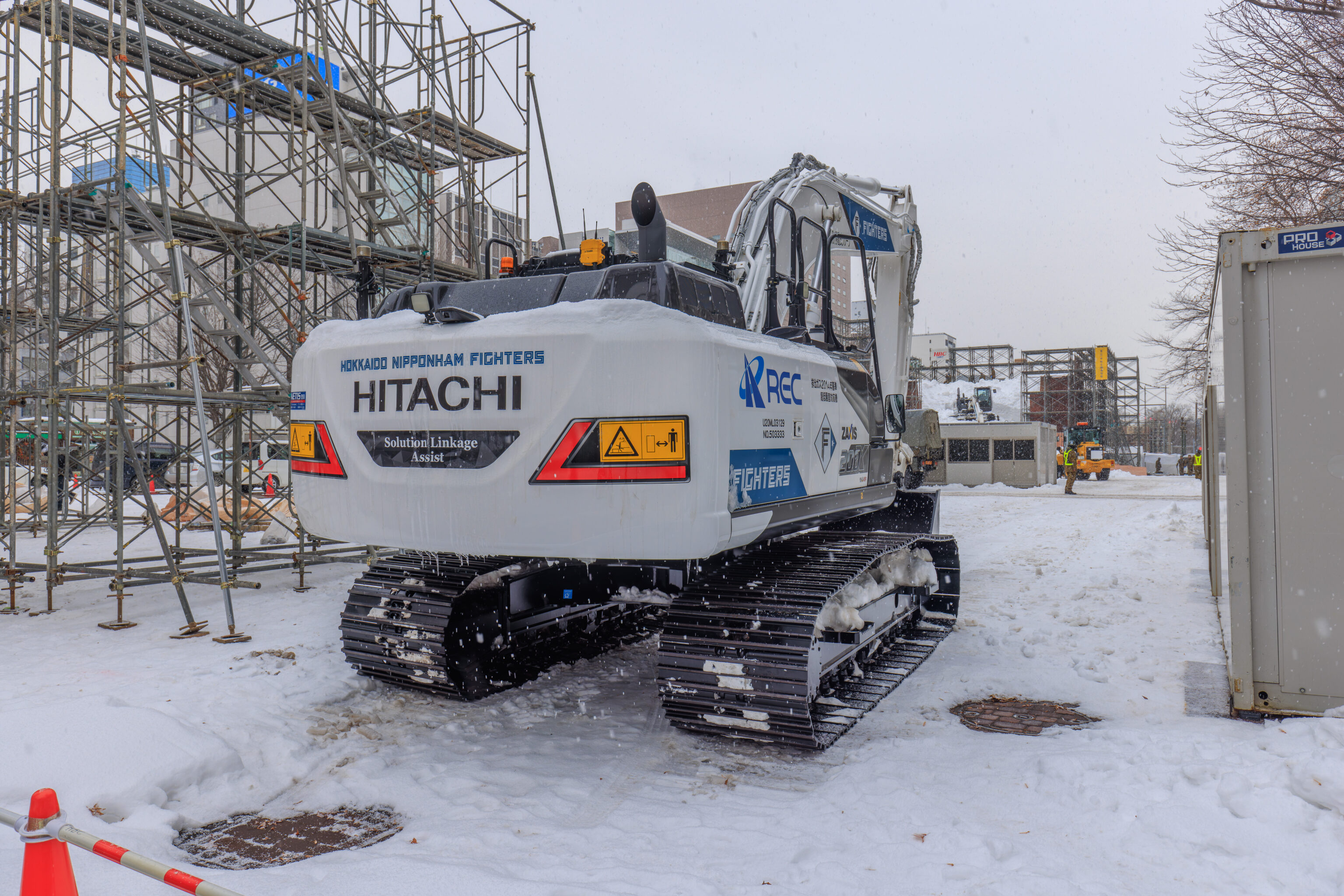
The Sapporo Nipponham Fighters are apparently Nippon Ham‘s baseball team!
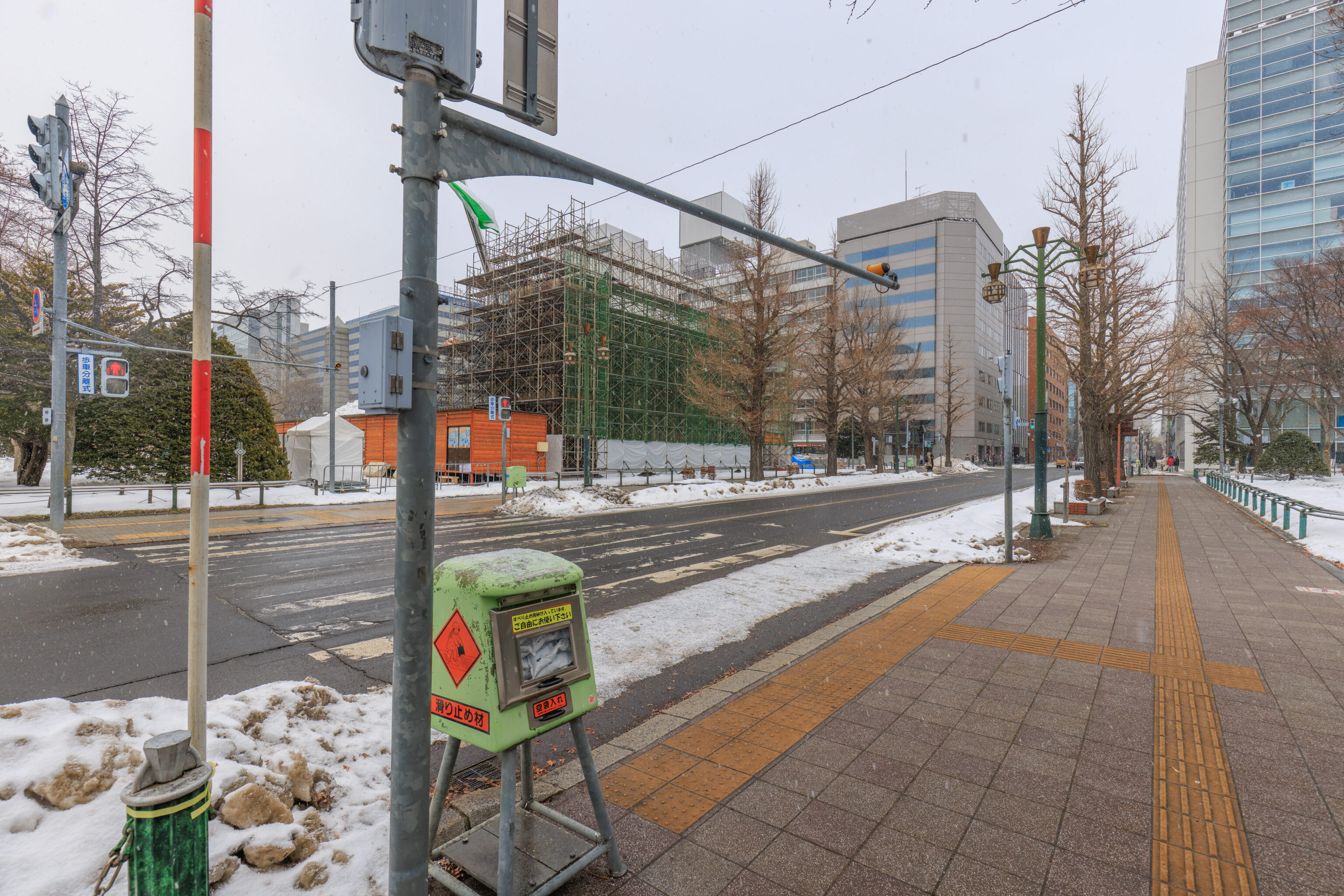
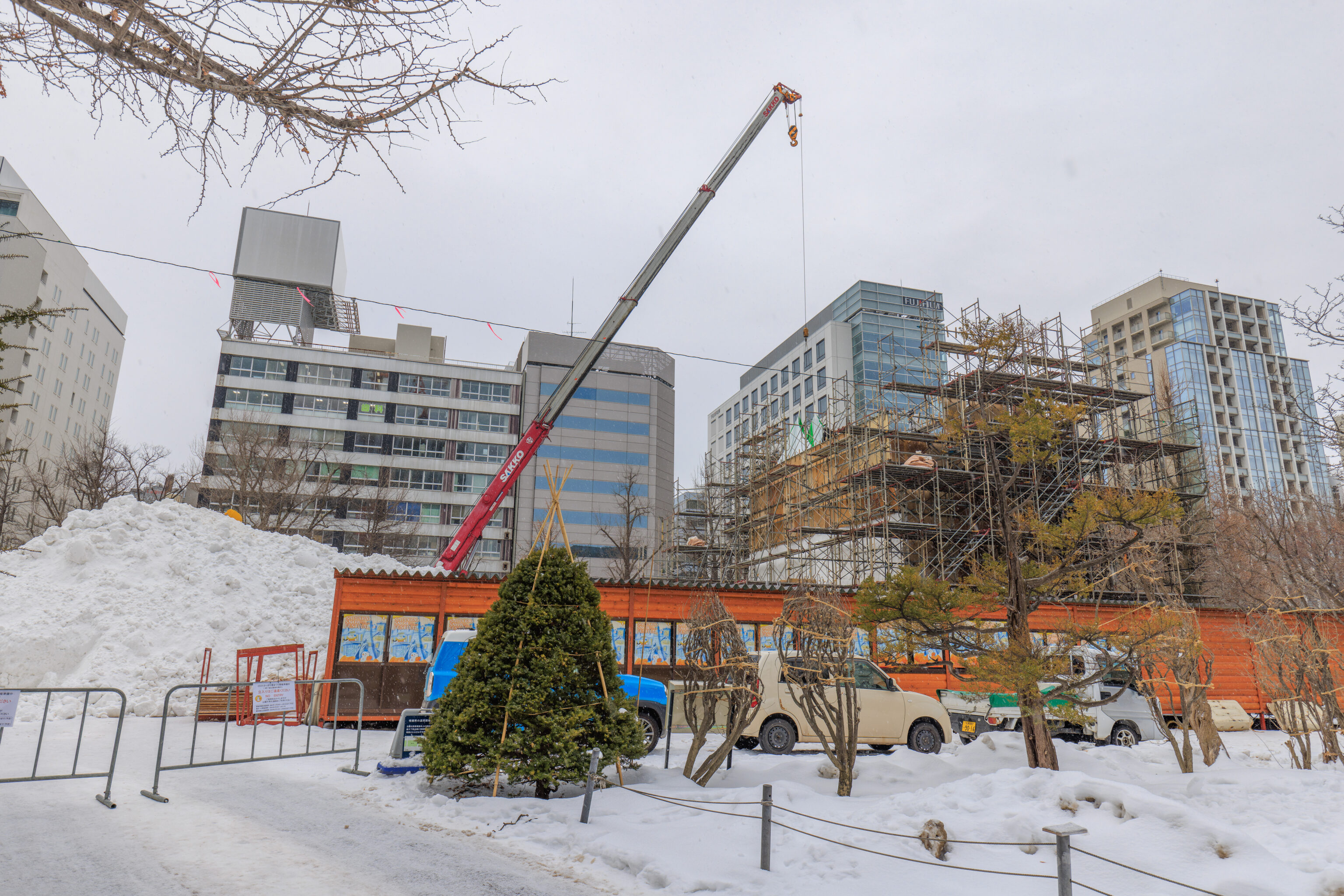
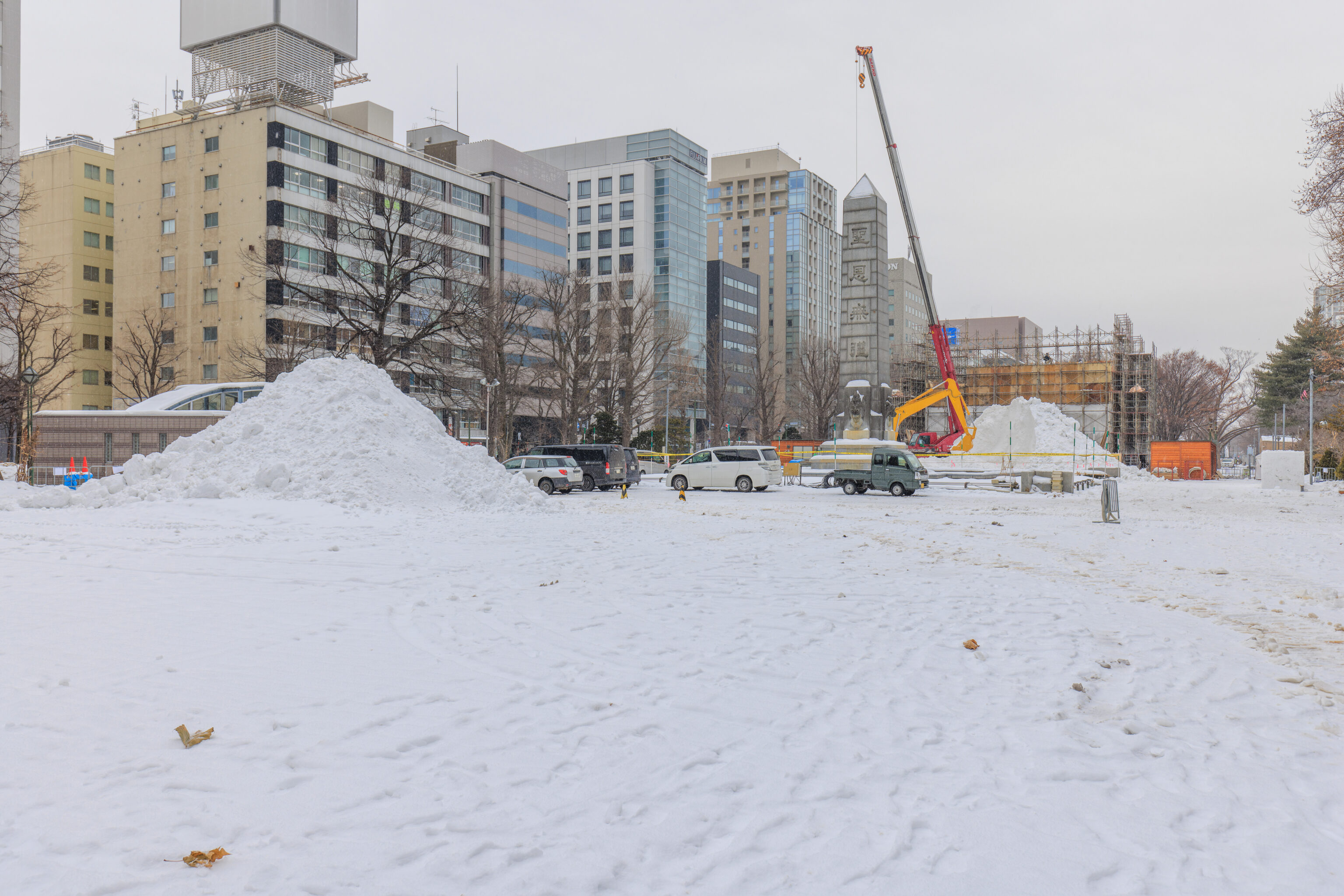
We continued on…
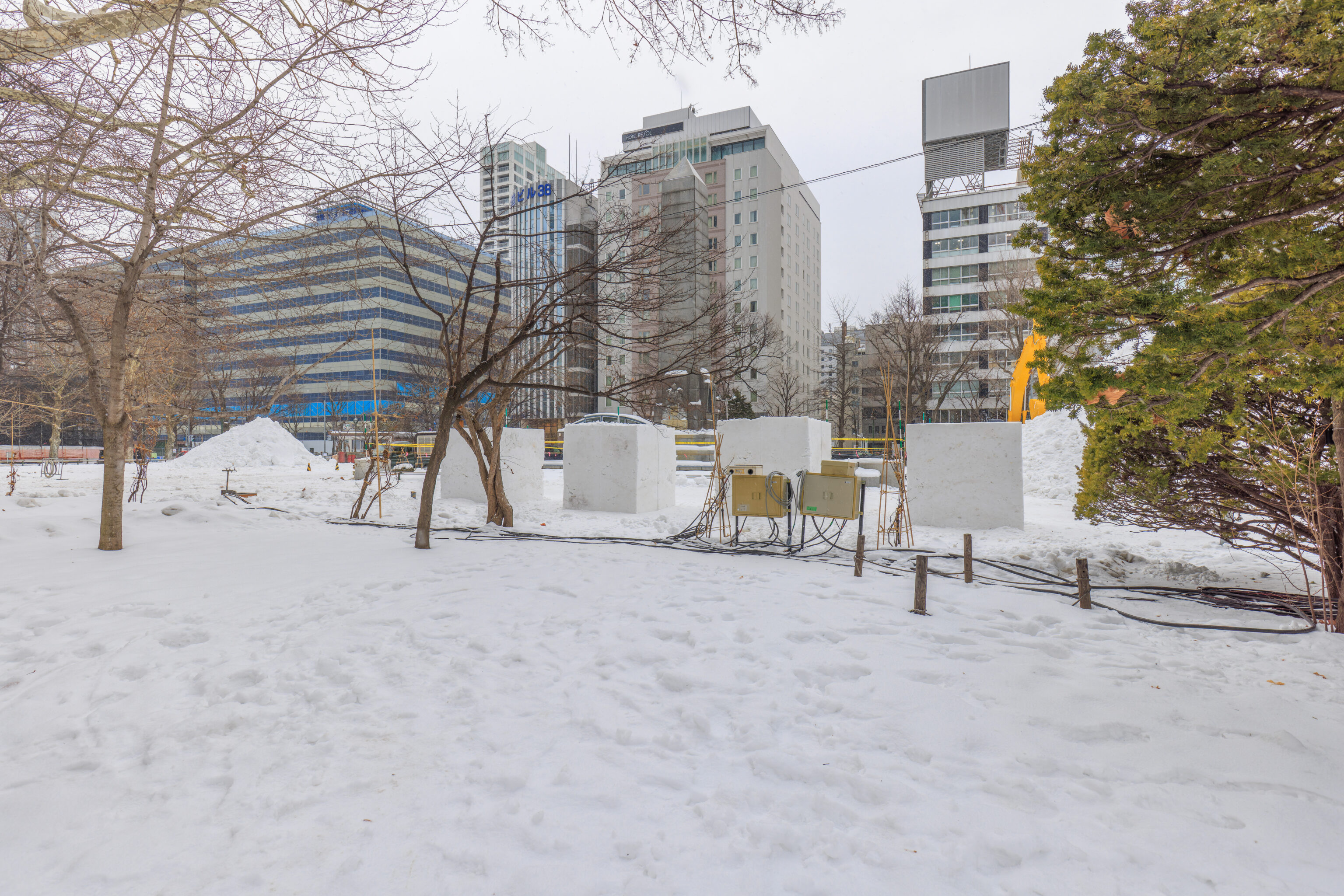
We passed by a few rather perfect looking blocks of snow that are probably for smaller sculptures.
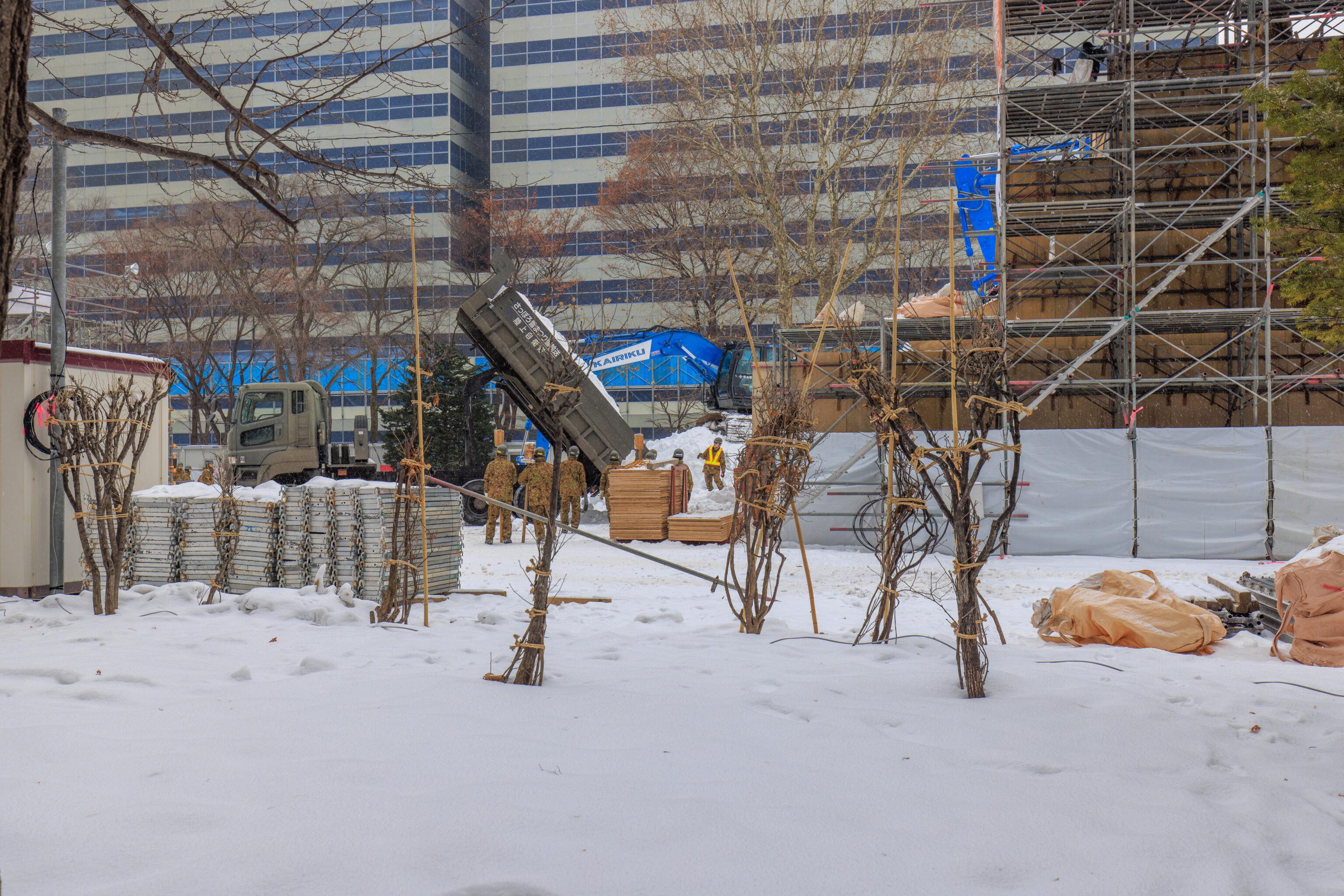
We saw the JSDF unloading snow.
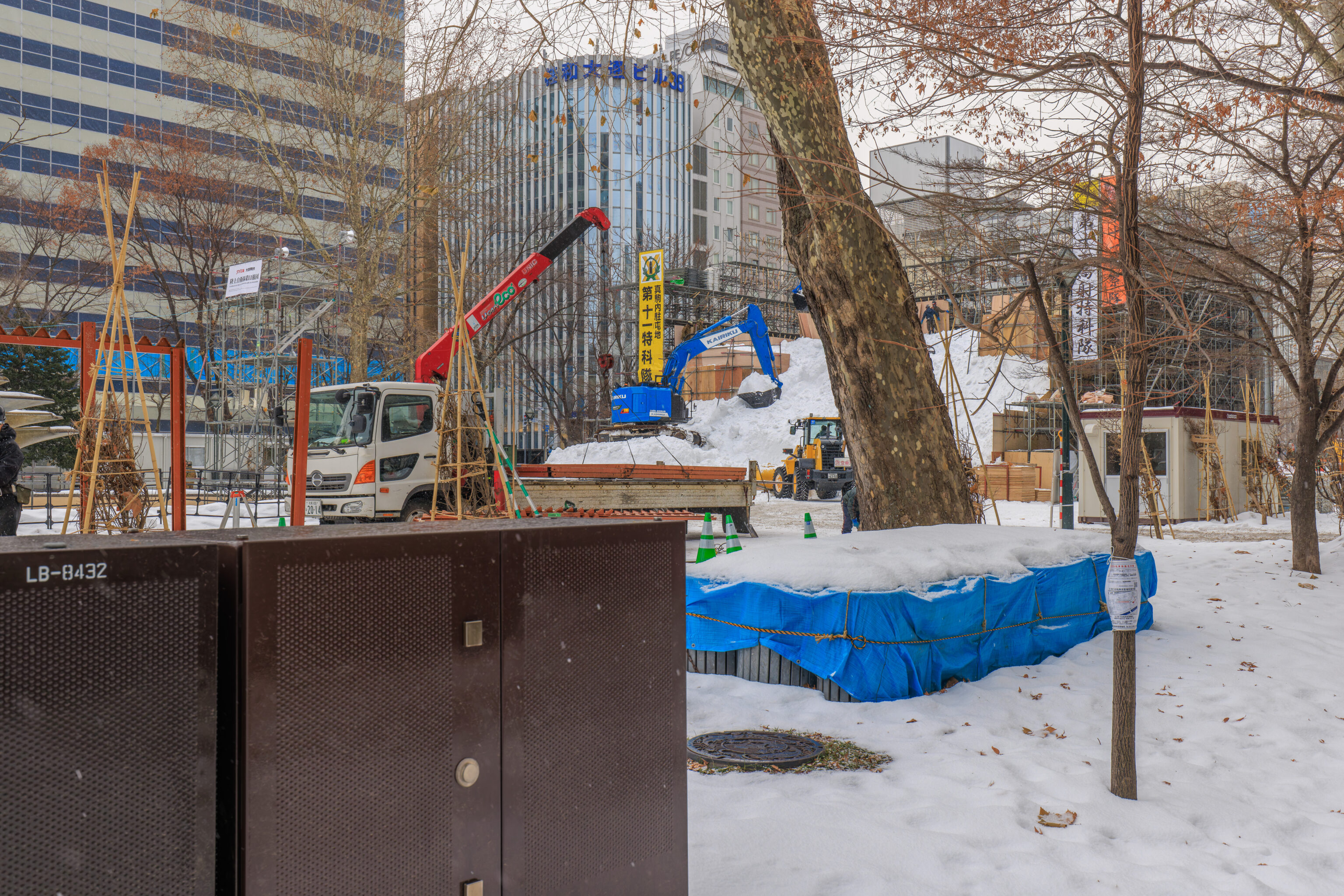
There is quite a bit going on at each of the sites!
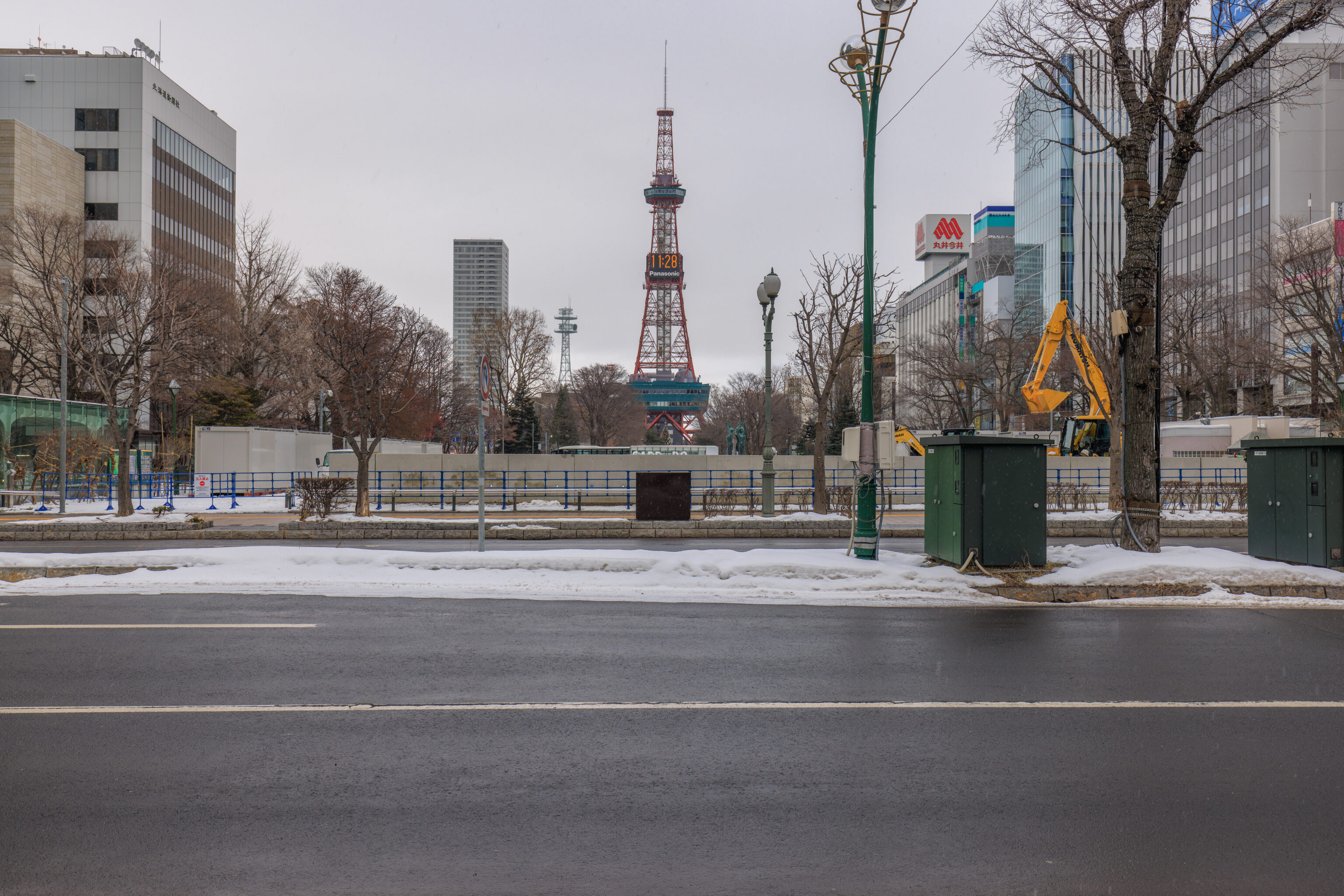
We approached the final two segments of the park before the さっぽろテレビ塔 Sapporo TV Tower. It was designed by 内藤 多仲 Tachu Naito, the same architect responsible for the 東京タワー Tokyo Tower! The large digital clock was donated for the tower in 1961 by Matsushita, now known as Panasonic.
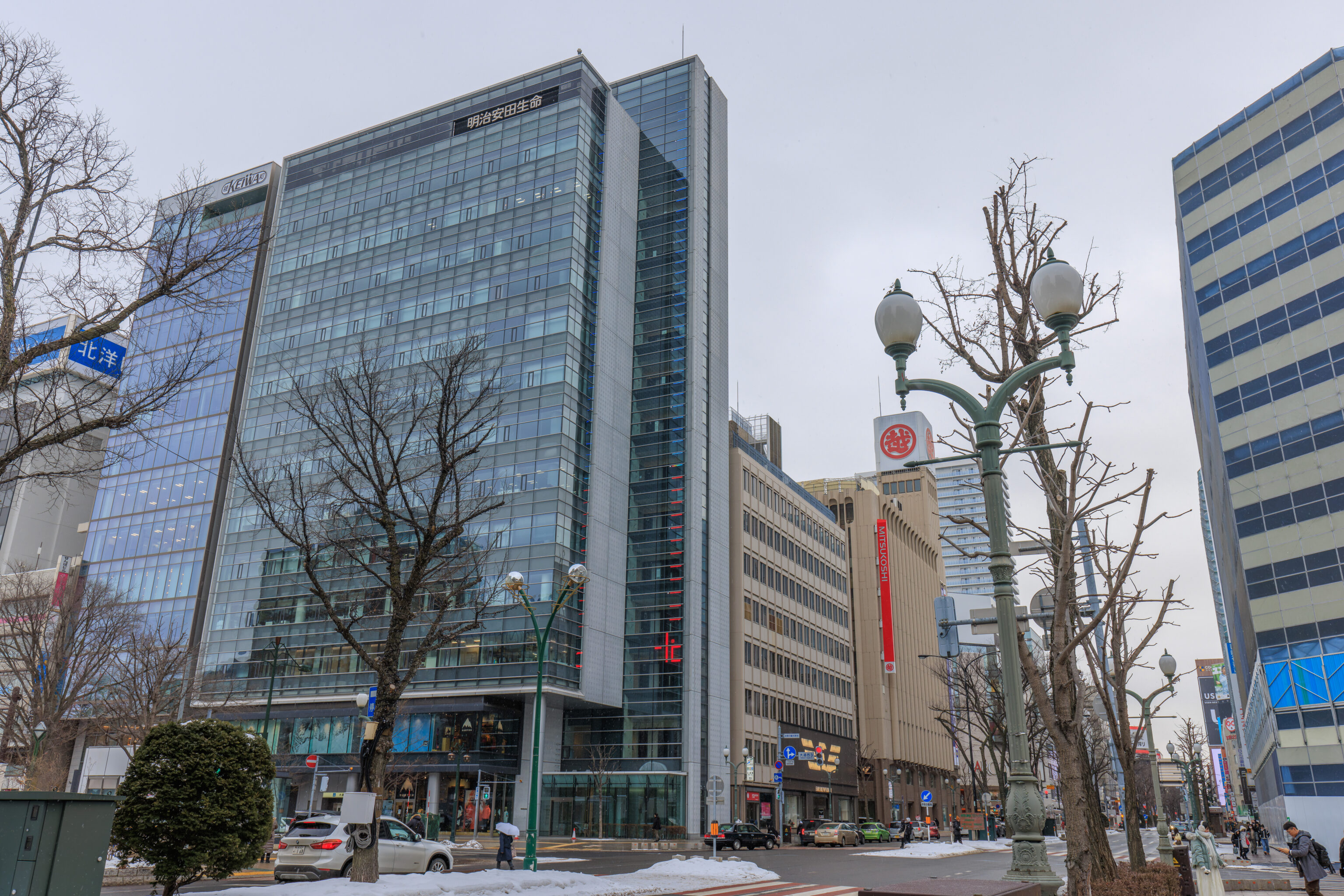
We noticed this building has a thermometer display built into its side!
Lunch
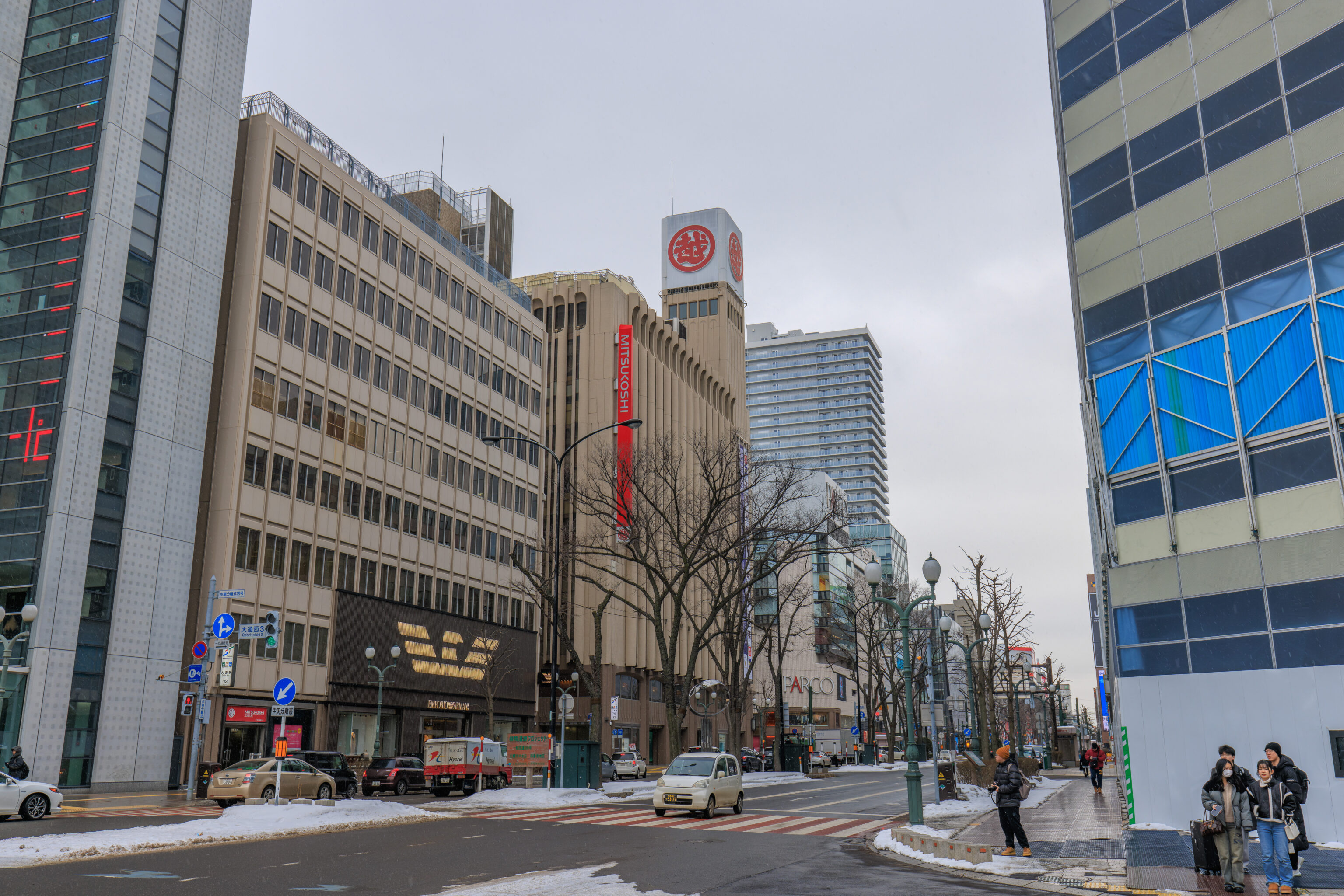
We decided to take a detour from here for lunch. We turned to the right at this intersection.
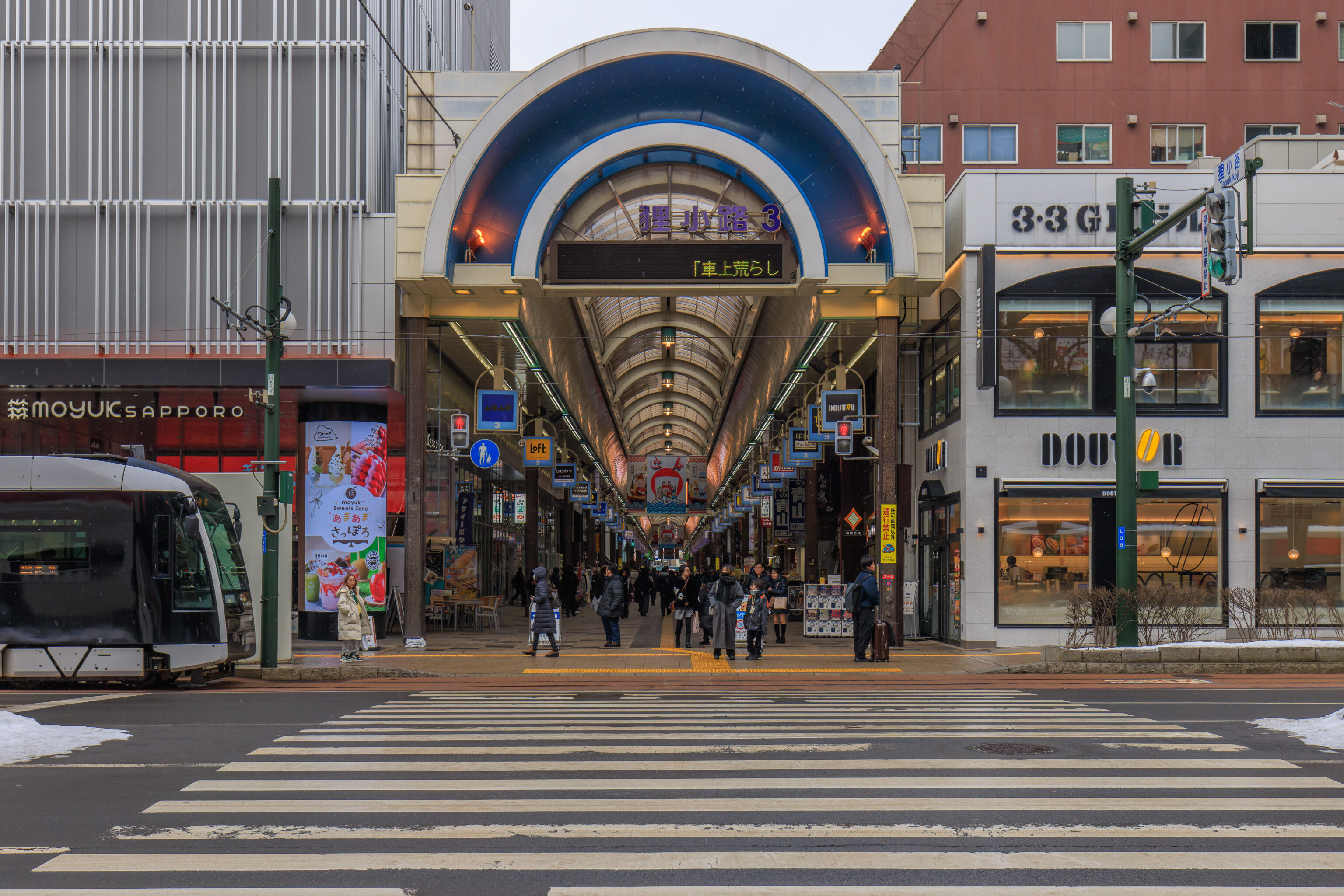
We passed by a large shopping arcade.
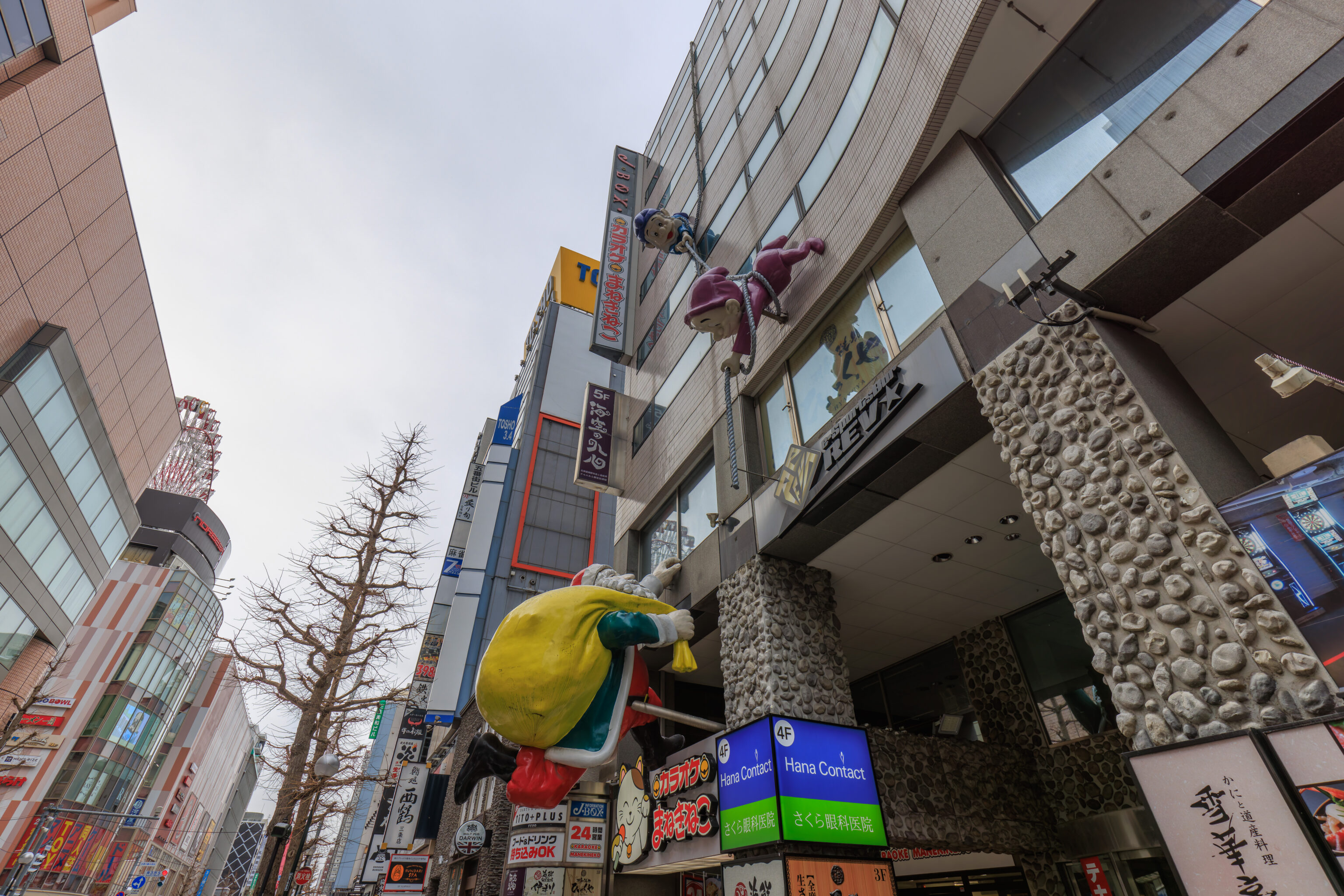
We saw Santa Claus being helped with a delivery by some elves. Apparently Japanese Santa does not fly on a sleigh pulled by reindeer? We waited by here for about 20 minutes as the restaurant we wanted to eat at, 北の風 Kita no Kaze (North Wind), does not open until noon.
Kita no Kaze is a ジンギスカン Genghis Khan restaurant. In Japan, the use of Genghis Khan’s name in a restaurant refers to yakiniku with sheep as the meat. This style of yakiniku is very popular here in Hokkaido but not that prevalent in other parts of Japan.
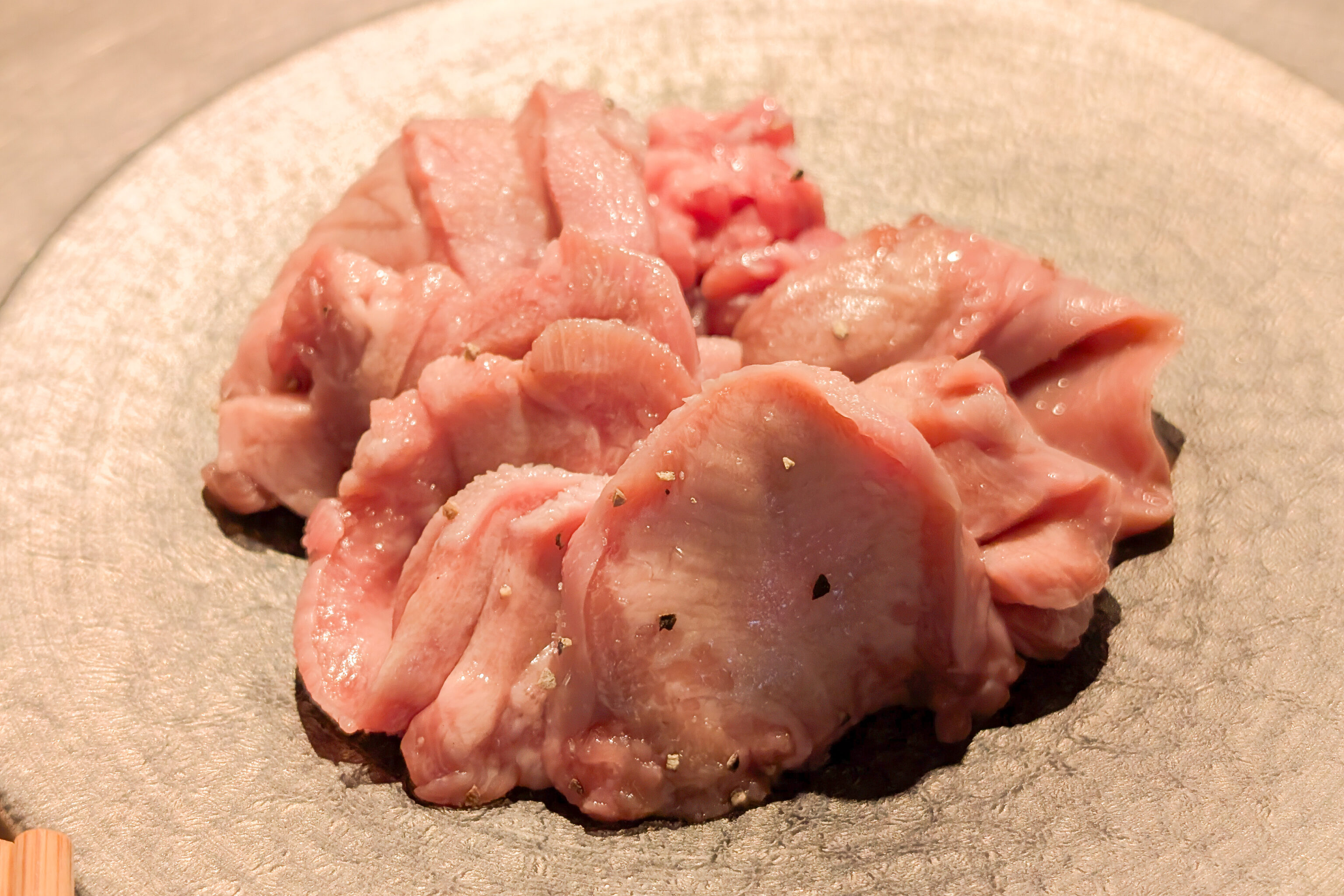
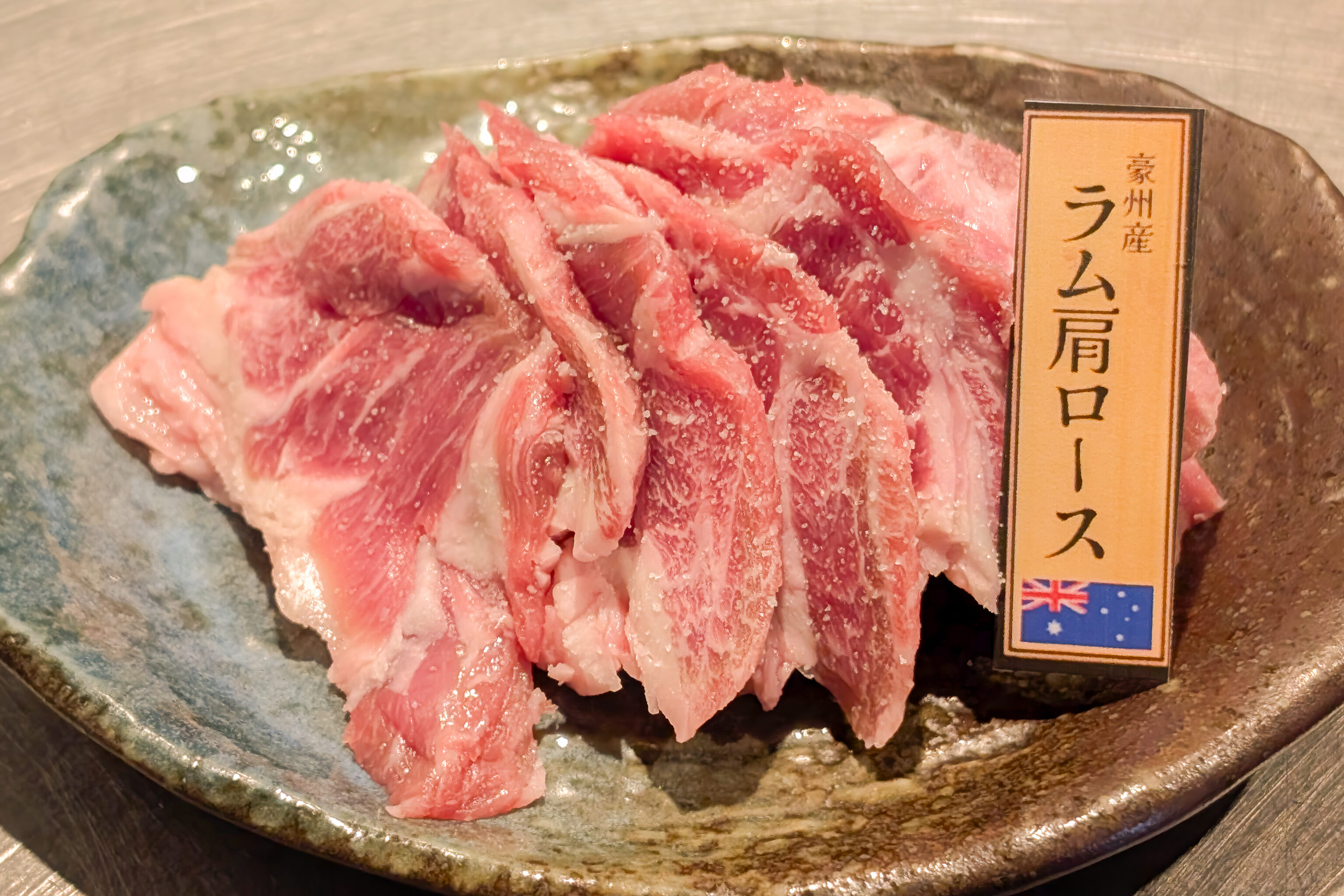
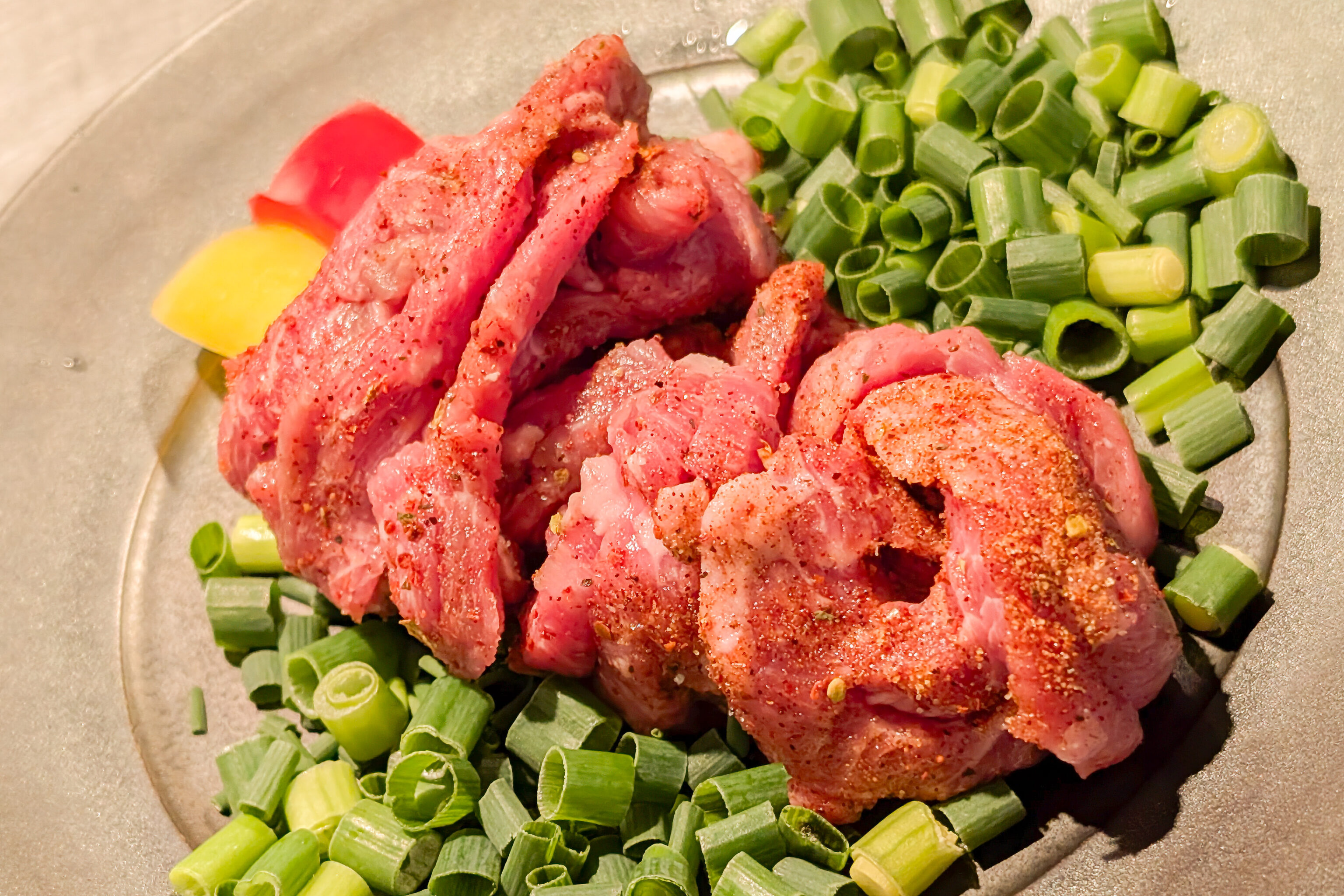
We ordered three different cuts of lamb – tongue, chuck, and spicy dragon rump roast. Unfortunately, we found out when ordering that they only serve local Hokkaido lamb during dinner! The lamb available for lunch is from Australia and is not supposed to be as good. That was a disappointment as we wanted to try Japanese lamb!
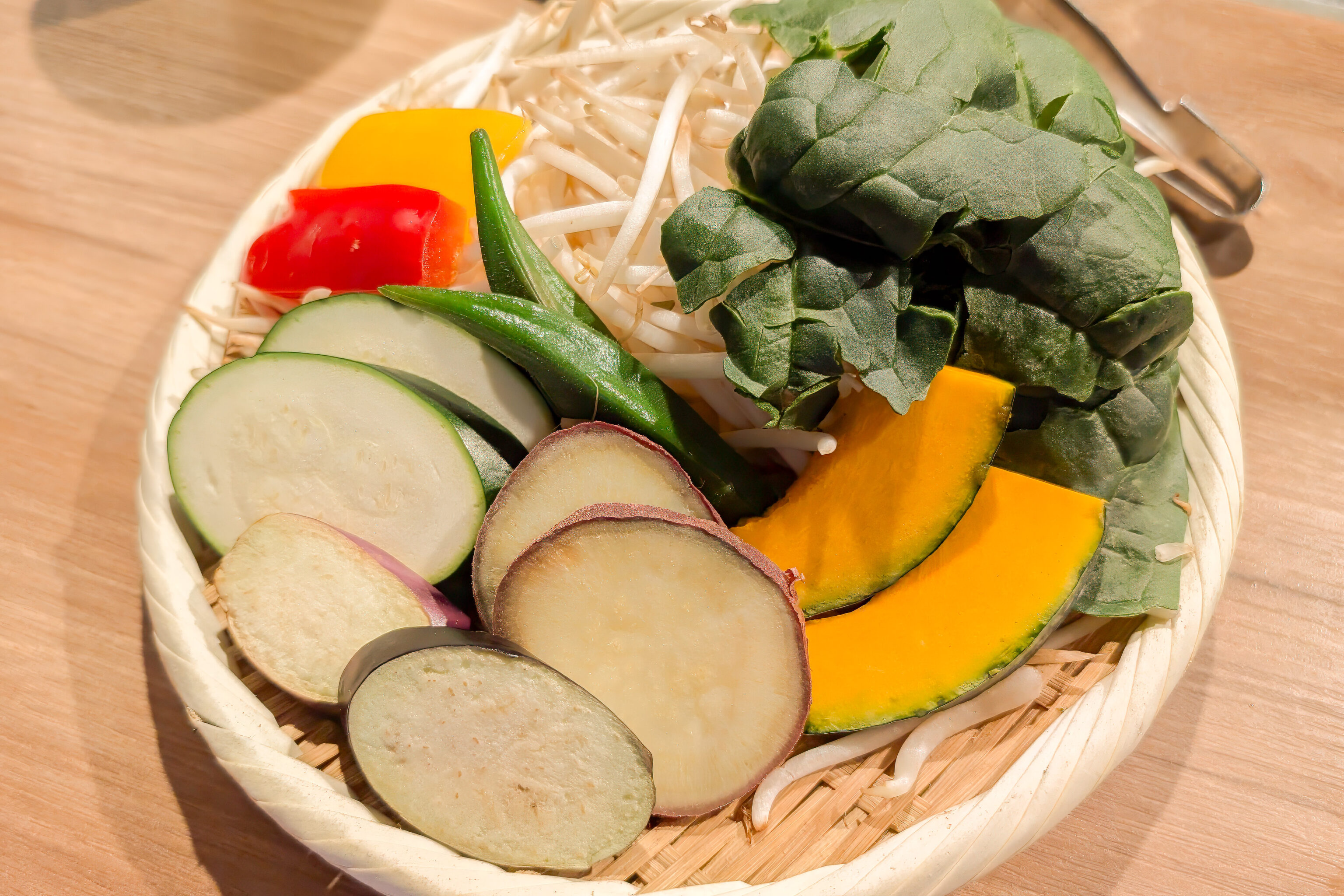
Vegetables are also provided to be grilled.
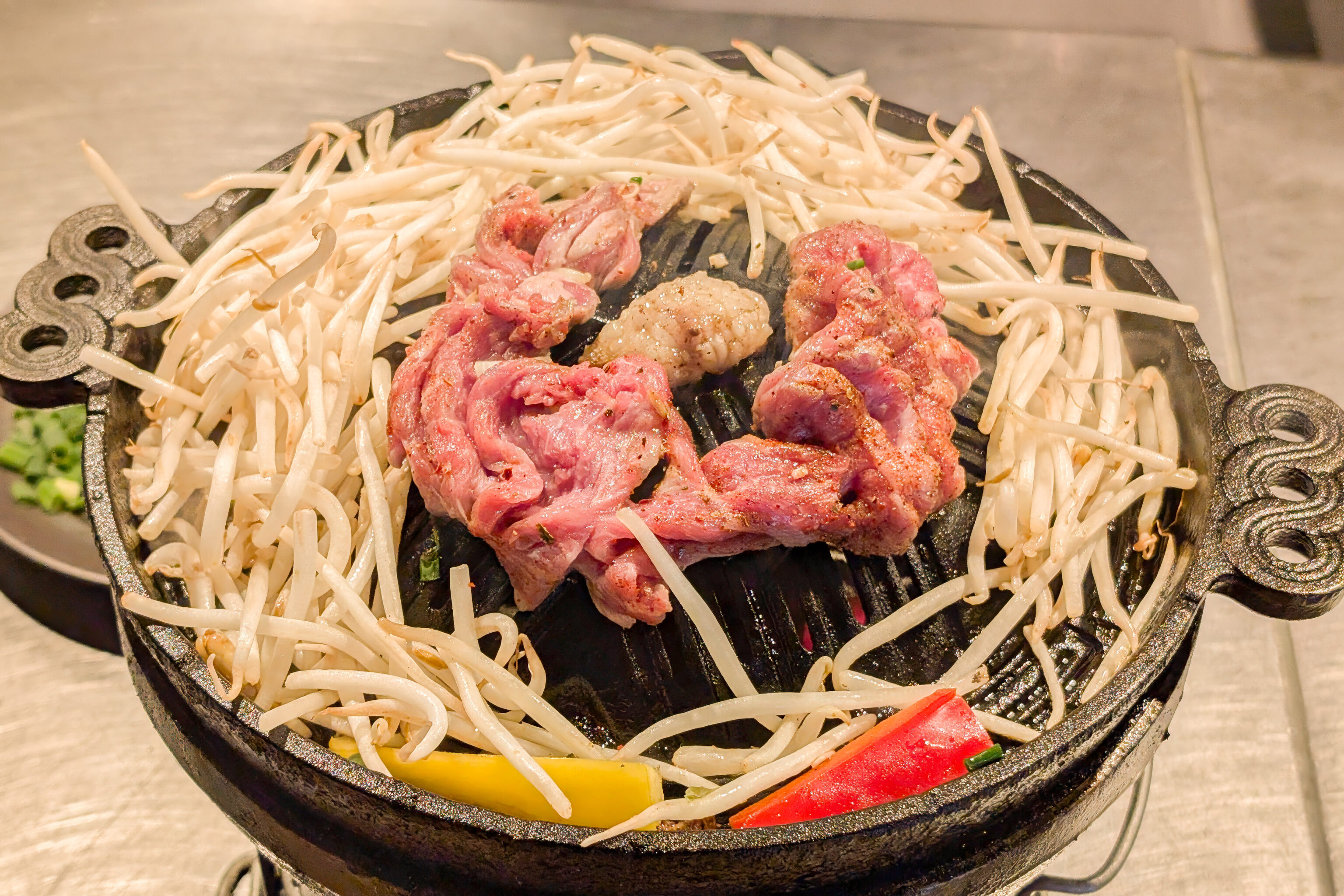
All of the different cuts that we ordered were pretty decent and tasty when grilled. The spicy cut was not spicy which was to be expected given that few things in Japan are actually spicy.
Central Sapporo
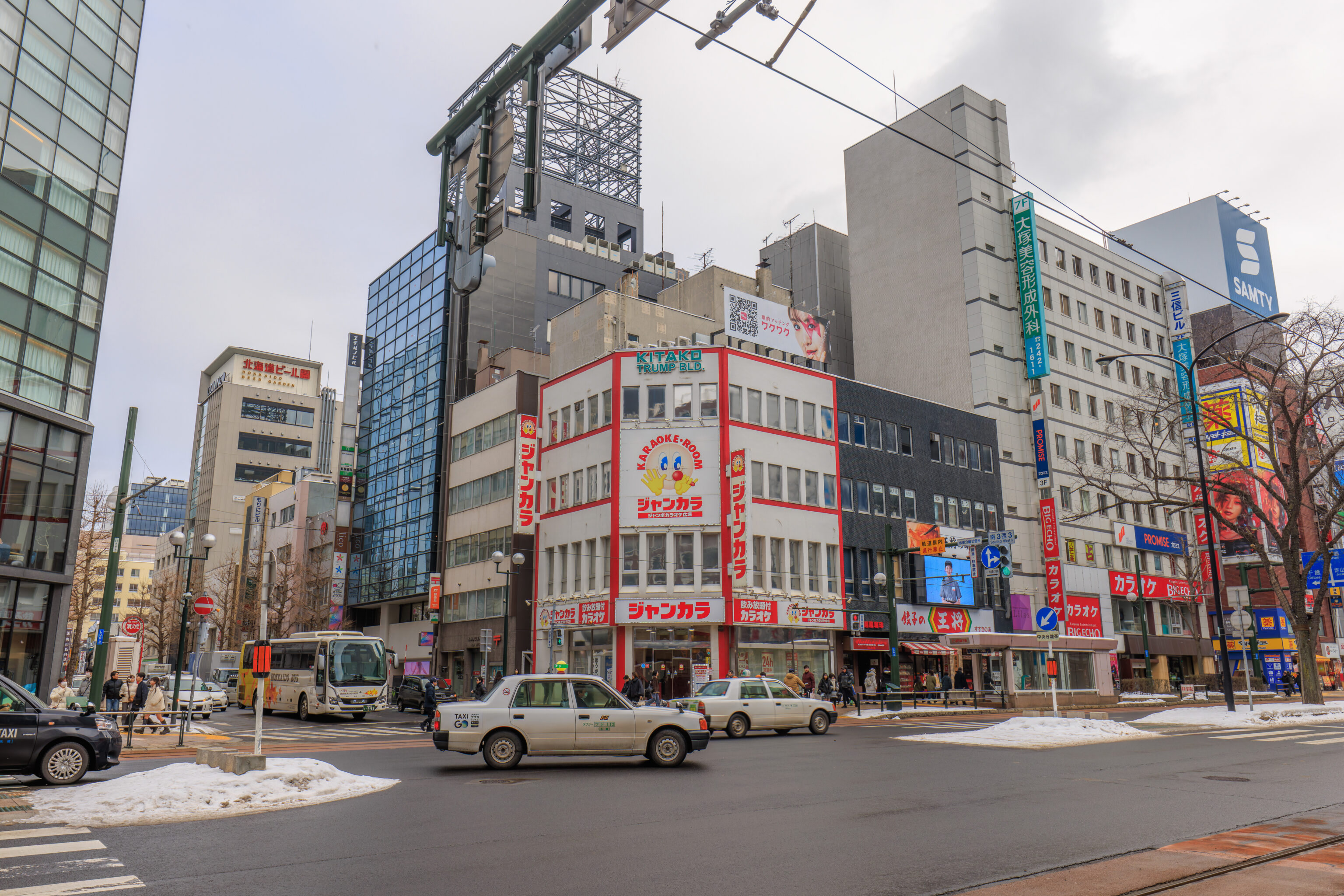
After lunch, we continued walking around the area.
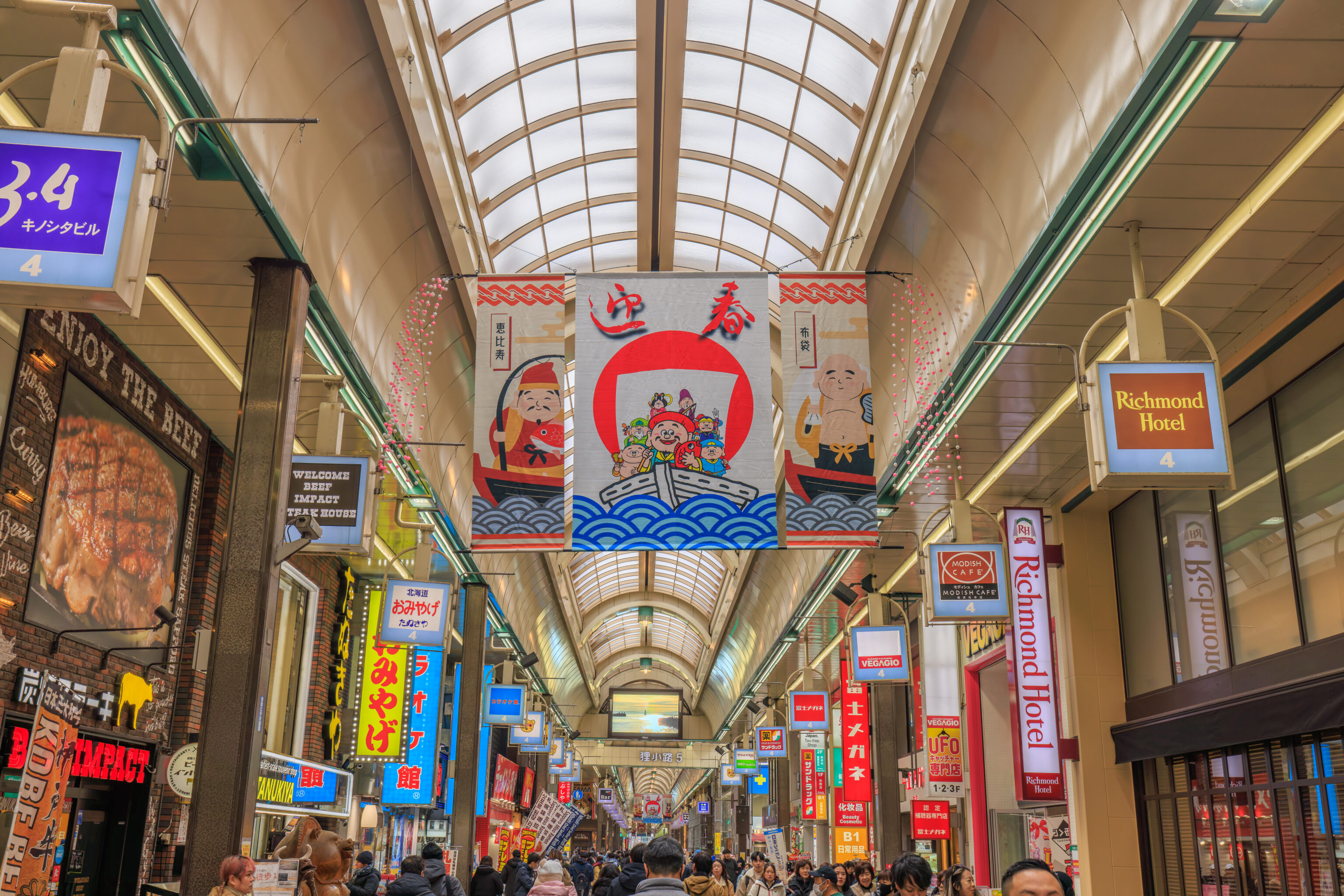
We walked through the shopping arcade that we saw earlier. There were many stores and restaurants inside. The entire thing spans around seven blocks.
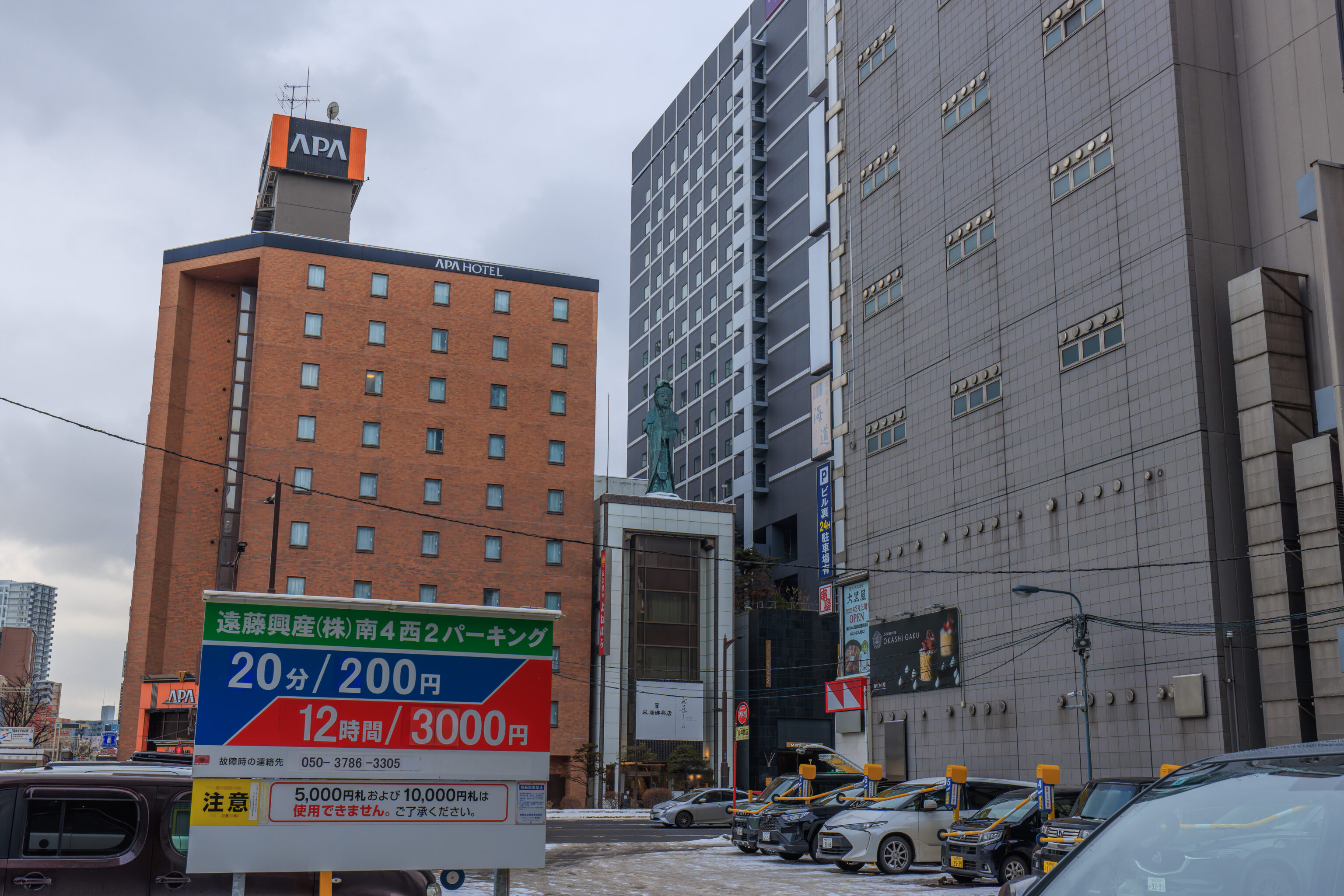
Although it looks like there is a modern urban Buddhist temple ahead, it is actually よねはら Yonehara, a Buddhist supply store! They sell both Buddhist and Shinto altars as well as gravestones.
We didn’t go to take a look but we did browse through a nearby Patagonia outlet store!
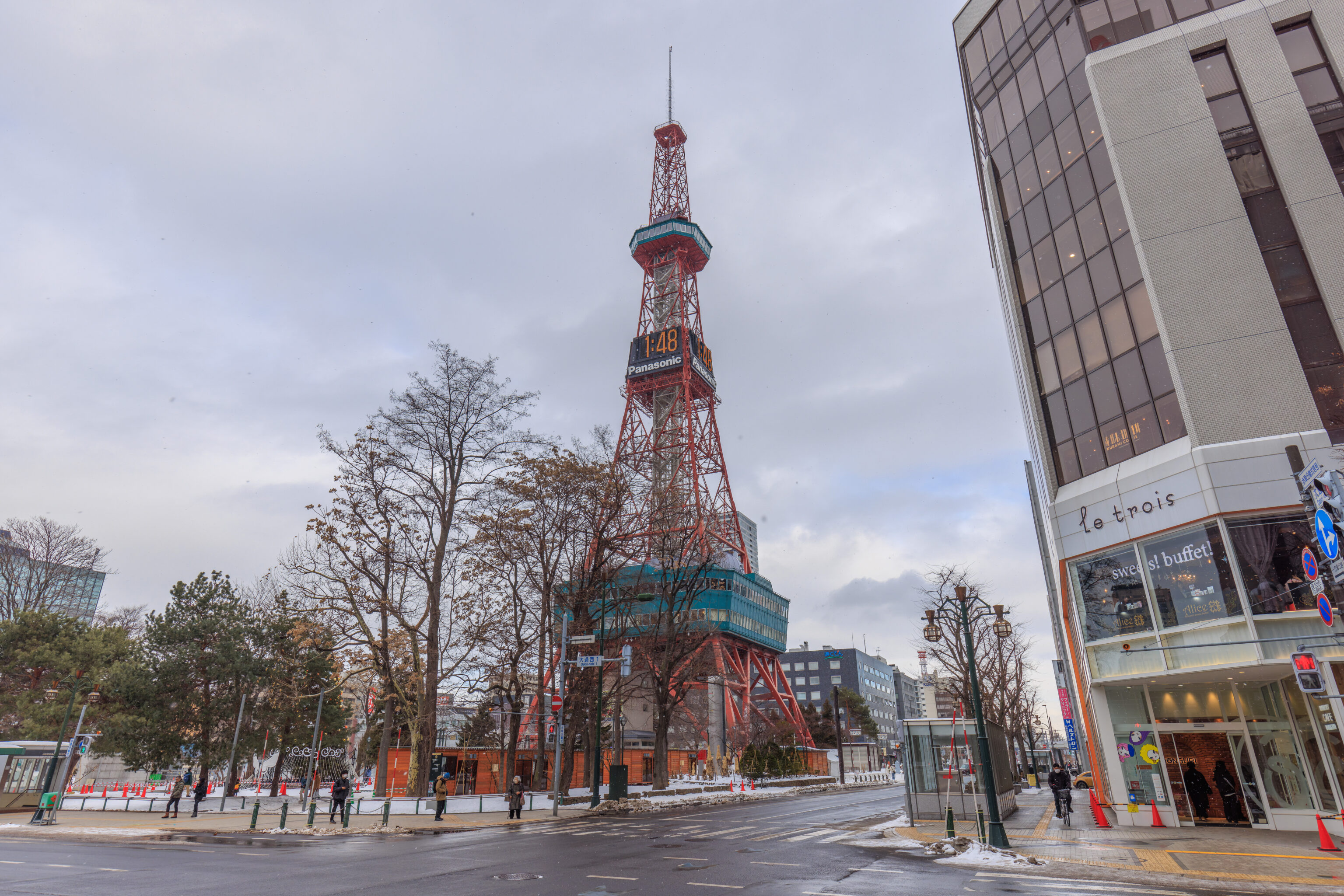
We walked back to Odori Park to get a closer look at the Sapporo TV Tower.
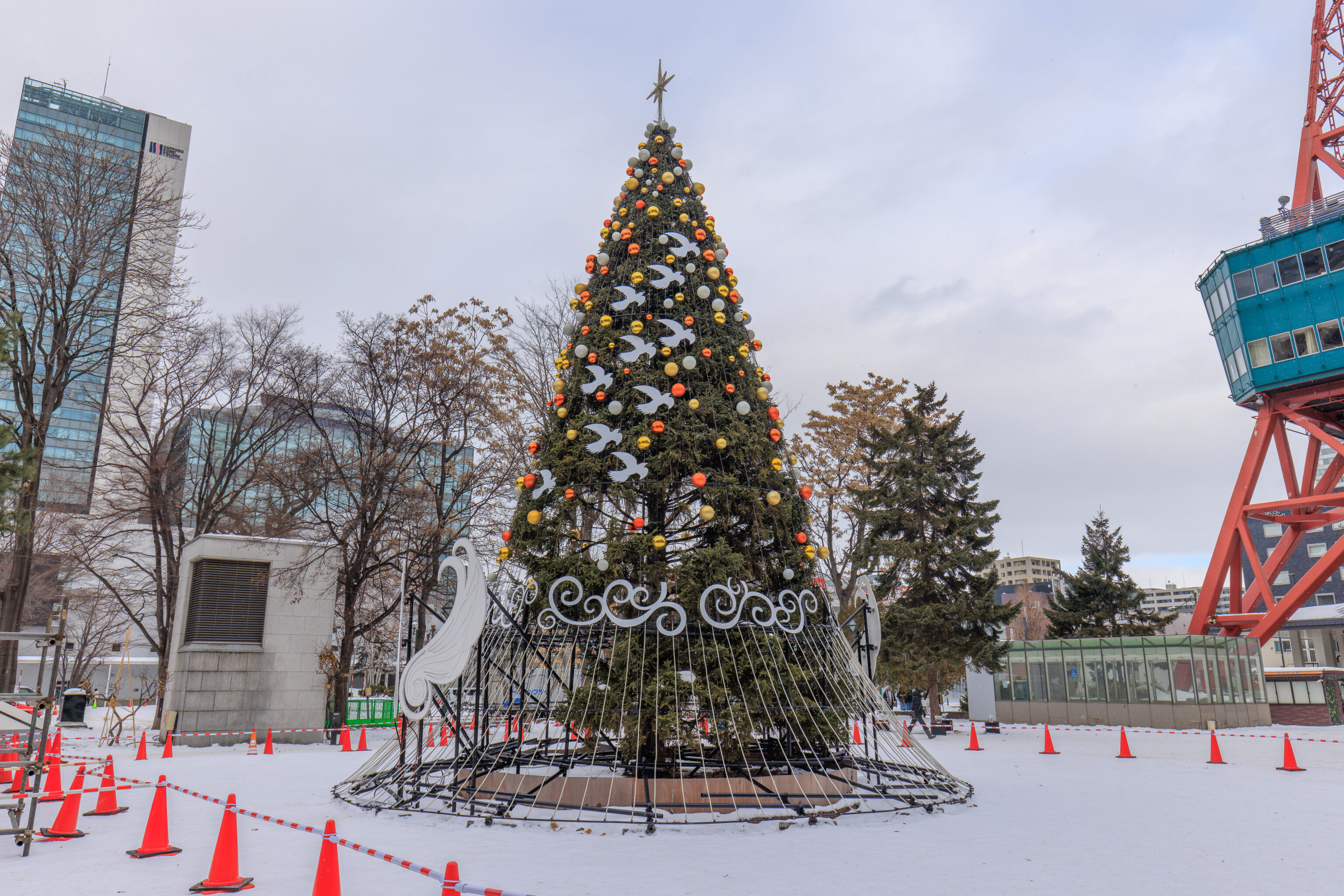
A large Christmas tree was nearby, although access to it was blocked off.
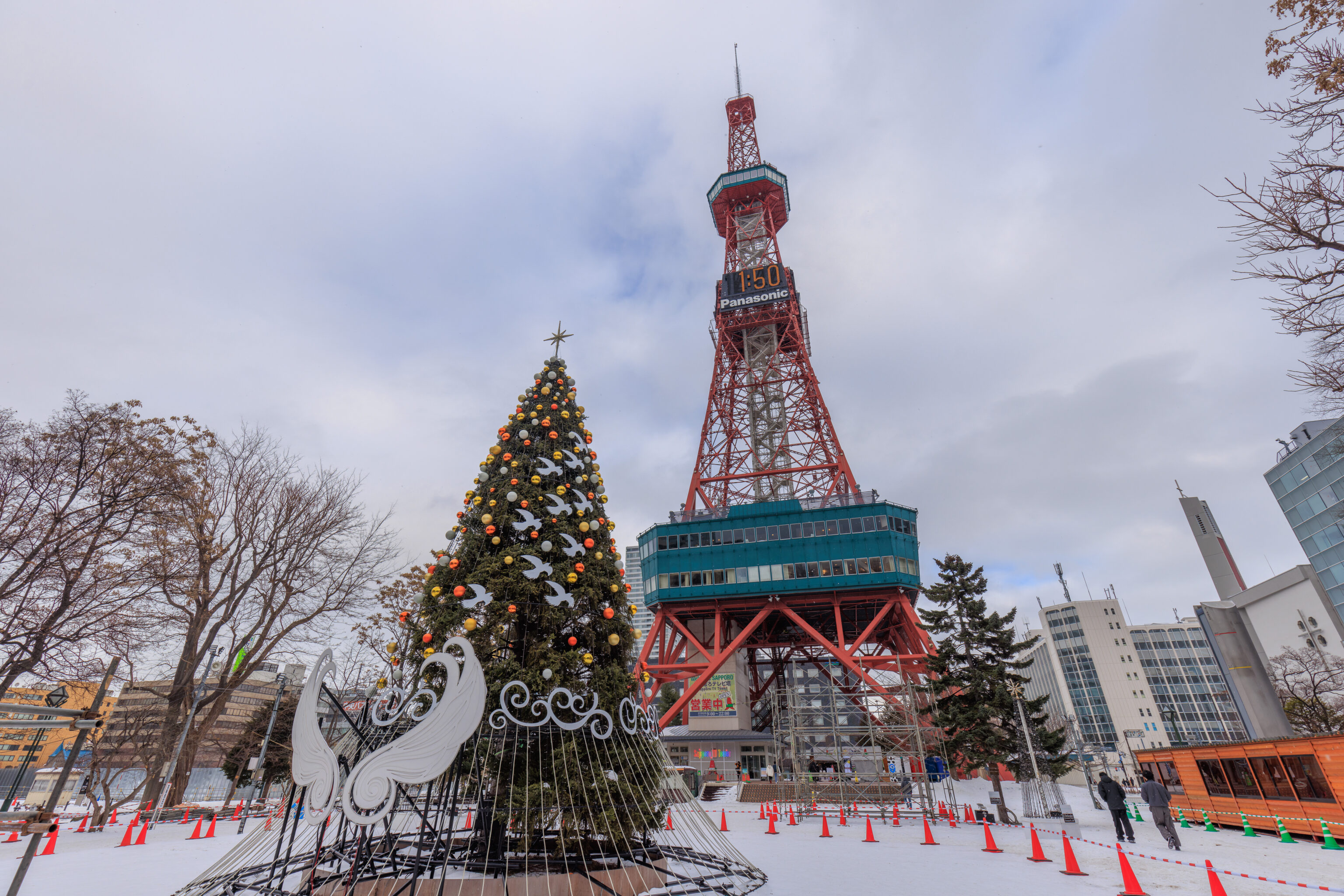
The wings in front of the Christmas tree are probably intended for Instagram, TikTok, and all that.
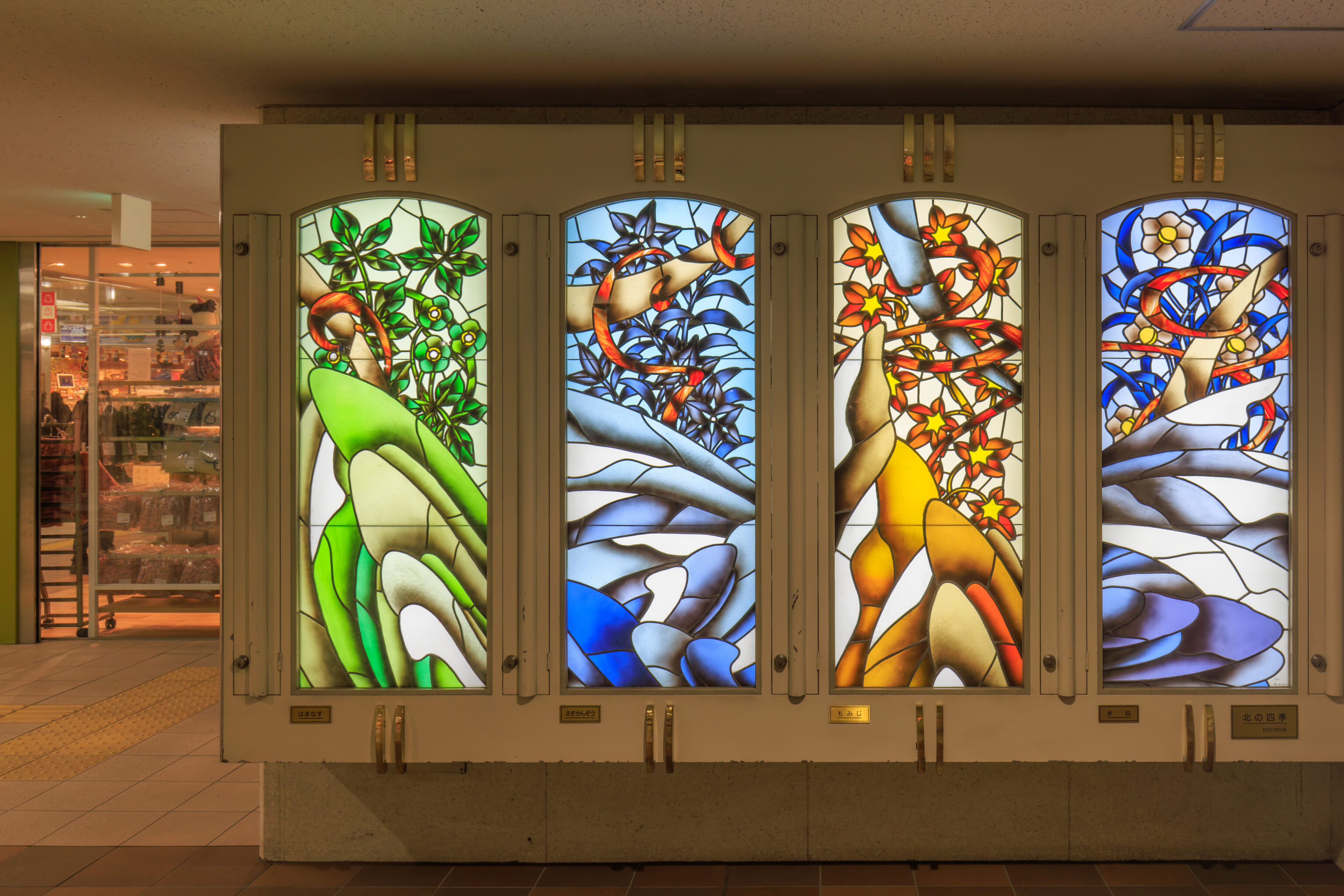
We descended into one of the underground shopping malls near the park. We came across this display by 松田日出雄 Hideo Matsuda titled the 北の四季 Four Seasons of the North.
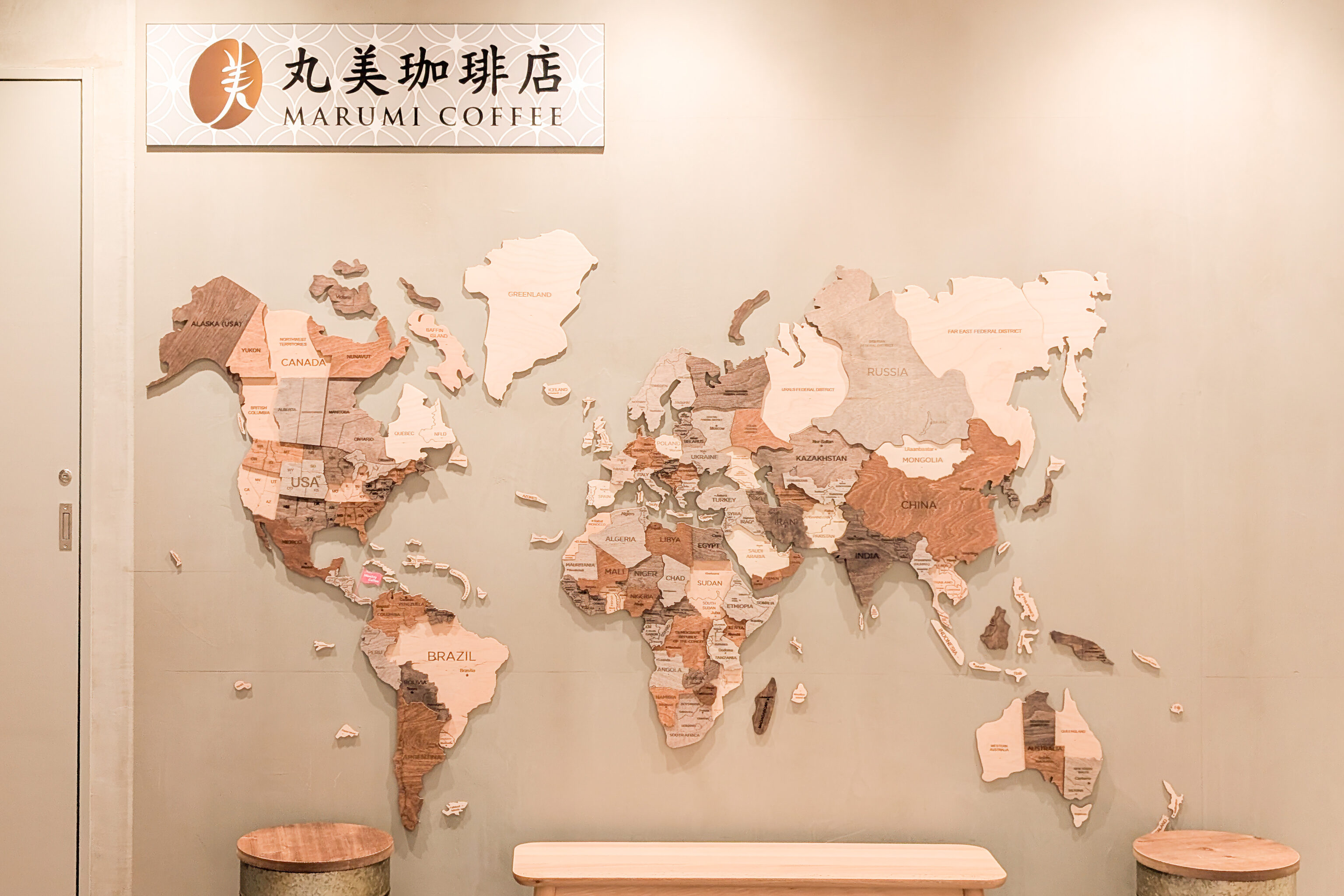
We ended up visiting Marumi Coffee’s cafe on the 3rd floor of the Marui Imai department store. Yesterday evening, we had visited their coffee stand in the nearby underground passageways.
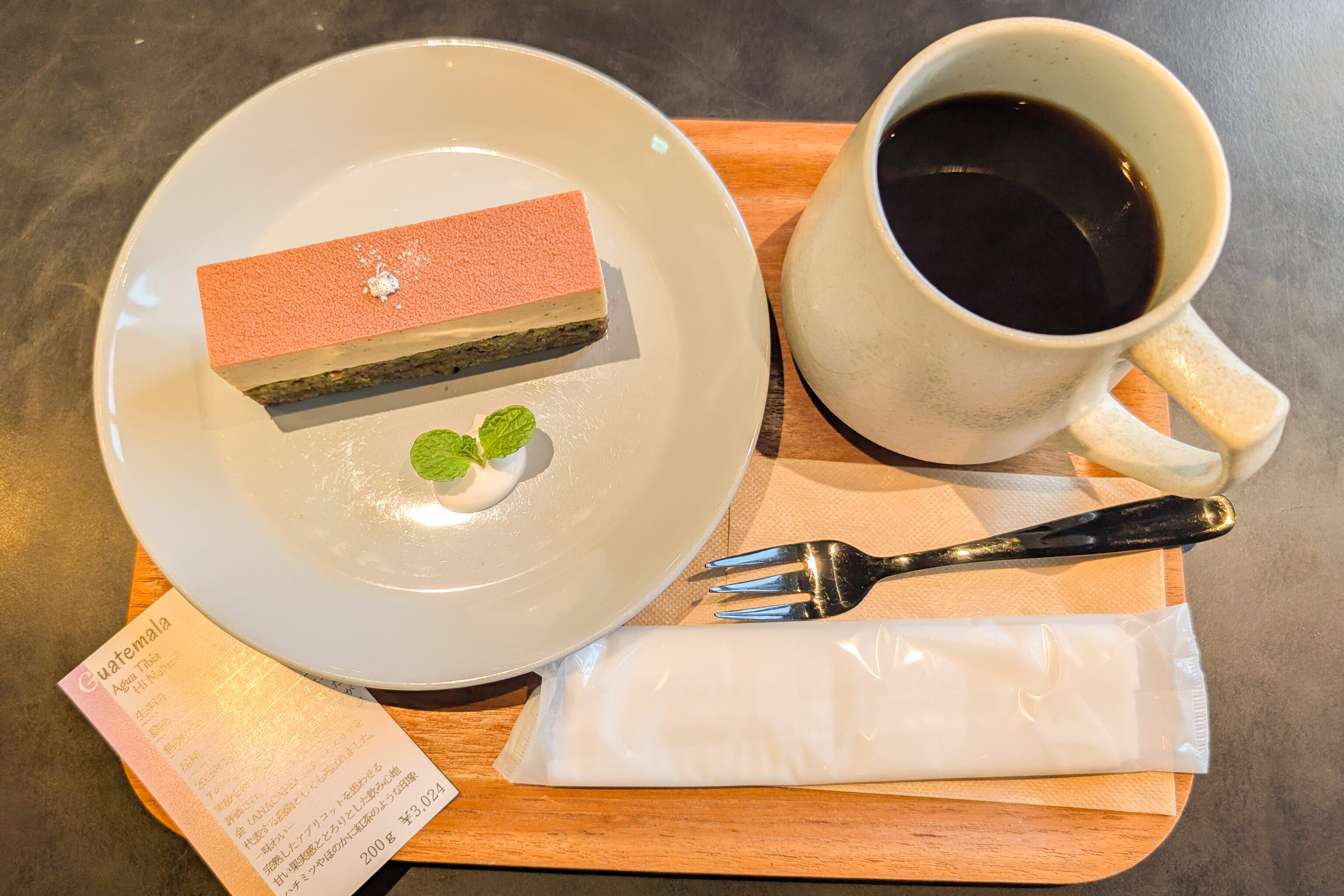
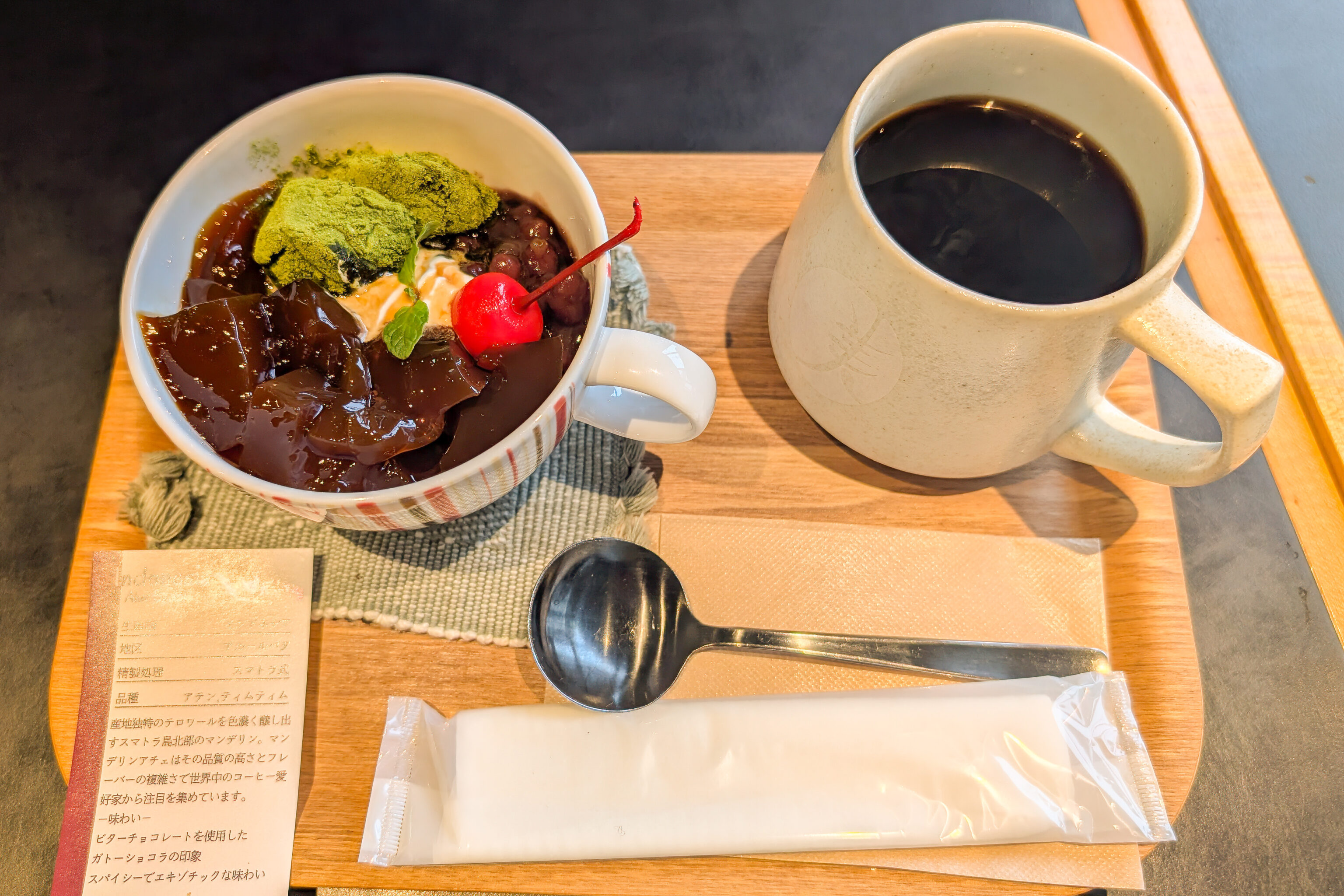
We got two coffees with different beans as well as some snacks. So far, our favorite coffee is still the coffee we had at % ARABICA in Seoul. We need to get those beans! The two snacks we ordered were pretty good.
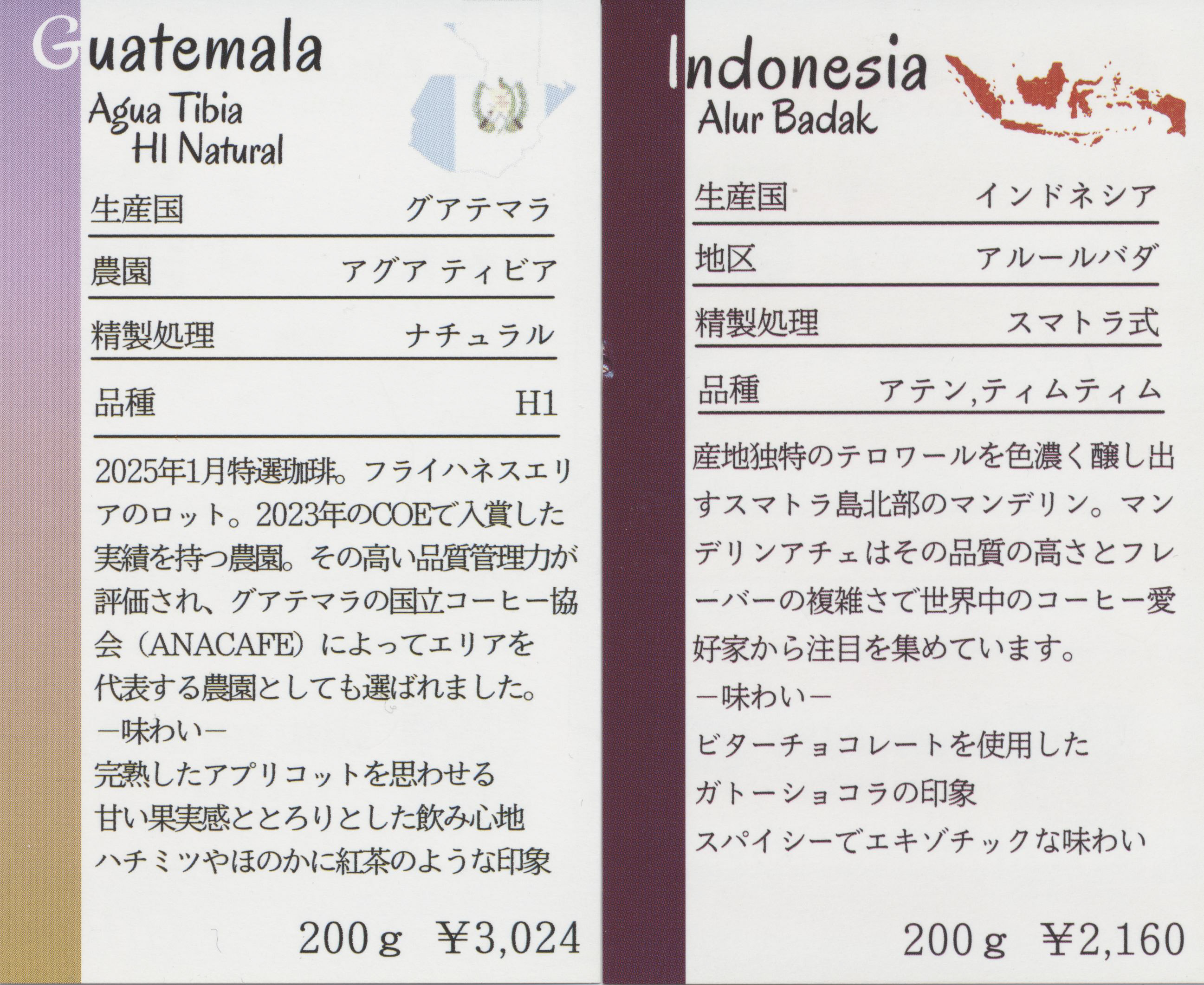
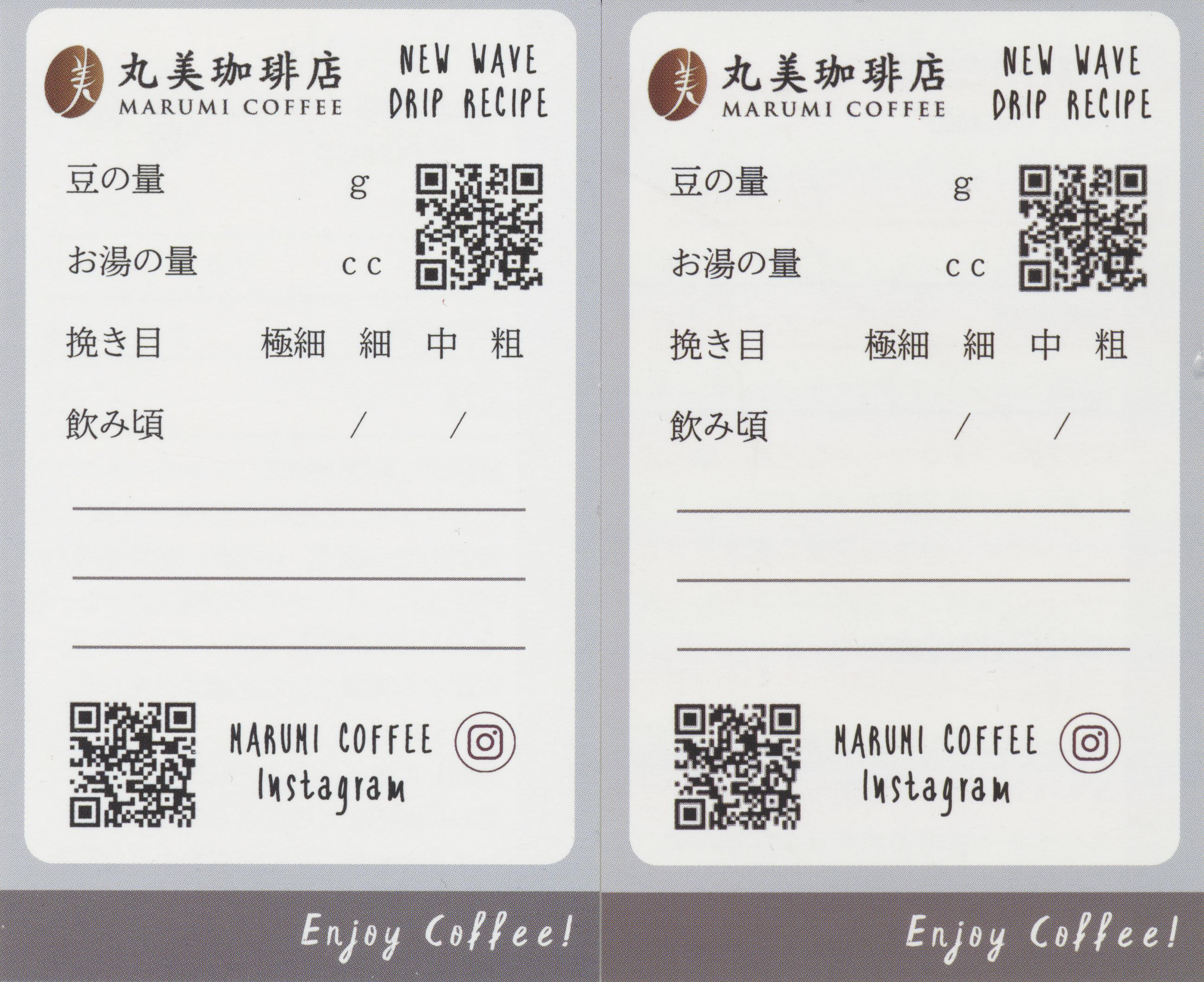
These business card sized cards provided information about the beans used in the coffees that we ordered.
Guatemala:
Guatemala
Agua Tibia H1 Natural
Country of Origin
Guatemala
Farm
Aguatibia
Purification Treatment
natural
Variety
H1
January 2025 Special Selection Coffee, a lot from the Fraihanes area. This farm won an award at the 2023 COE. Its high quality control has been recognized and it was also selected as the farm representing the area by the Guatemalan National Coffee Association (ANACAFE).
-Taste-
Sweet fruitiness reminiscent of ripe apricots and a smooth taste, with hints of honey and black tea.
200g ¥3,024
Indonesia:
Indonesia
Rhino Groove
Country of Origin
Indonesia
Area
Alur Bada
Purification Treatment
Sumatra style
Variety
Aten, Tim Tim
Mandheling in northern Sumatra is a region that strongly exudes the unique terroir of its production area. Mandheling Aceh is attracting attention from coffee lovers around the world for its high quality and complex flavor.
-Taste-
Made with bitter chocolate
Impression of Gateau Chocolat
Spicy and exotic flavour
200g ¥2,160
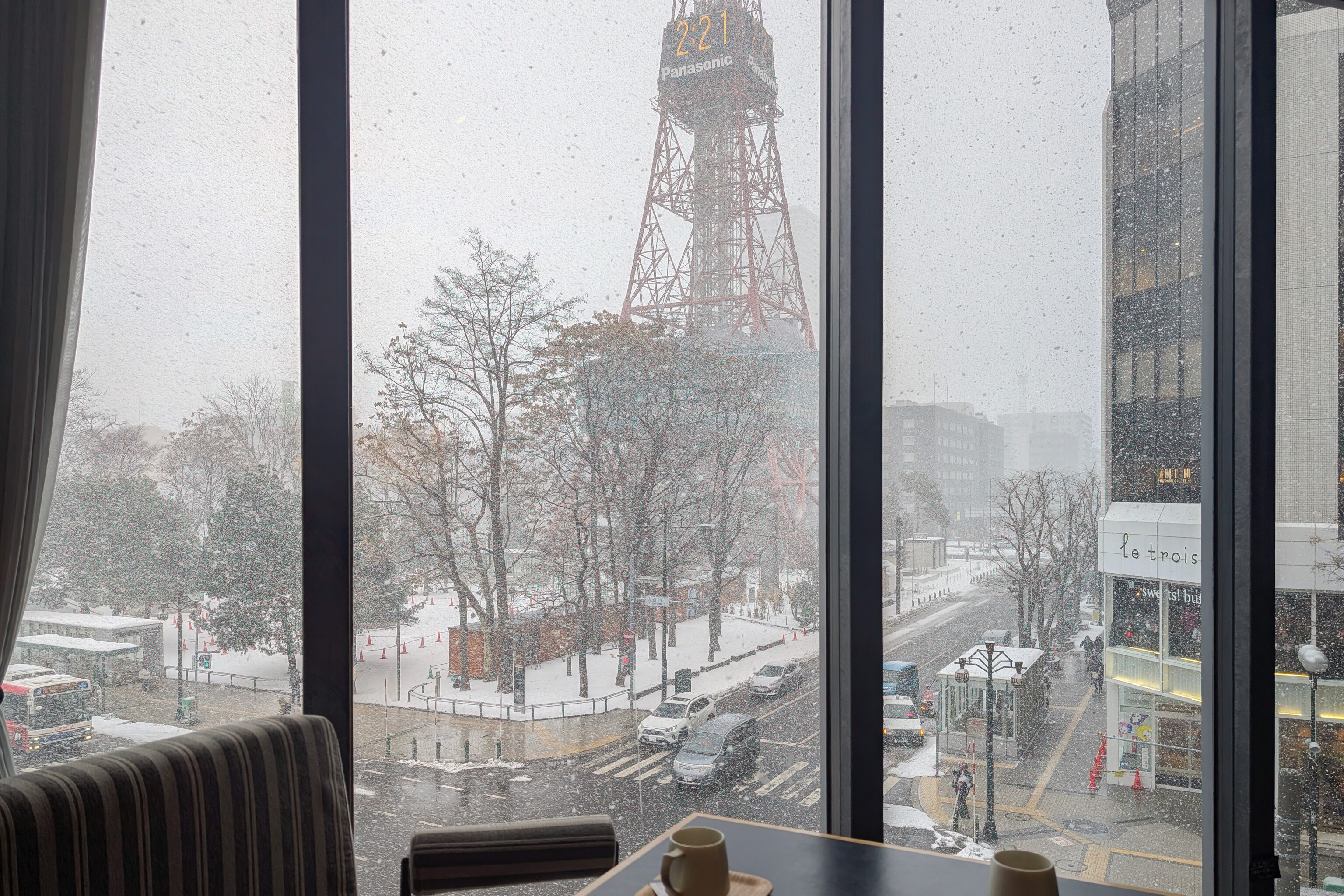
Outside, we could see the Sapporo TV Tower from the windows. It snowed heavily for a few minutes while we were at the cafe.
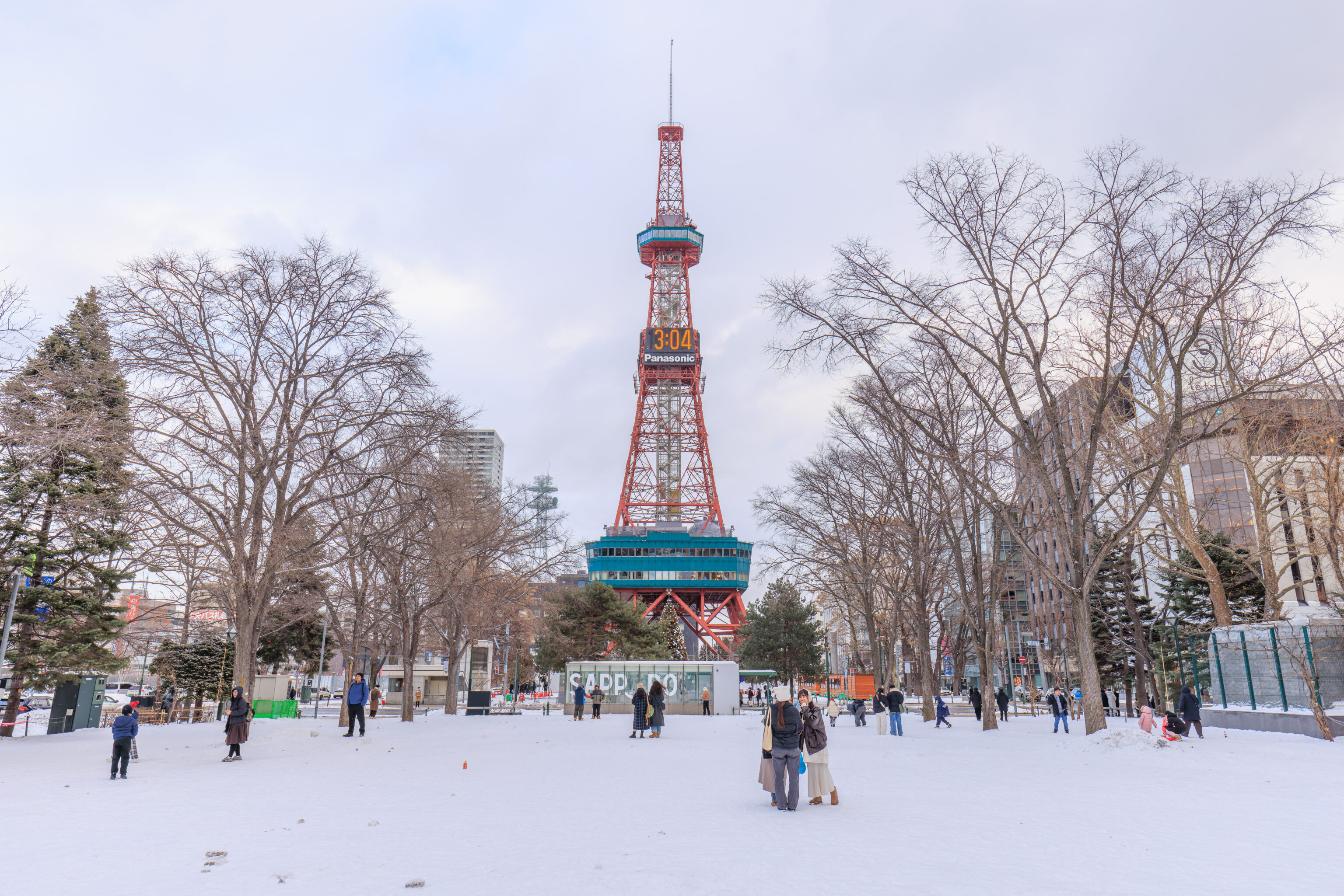
We ventured back outside, passing by the Sapporo TV Tower as we headed to the north side of Odori Park.
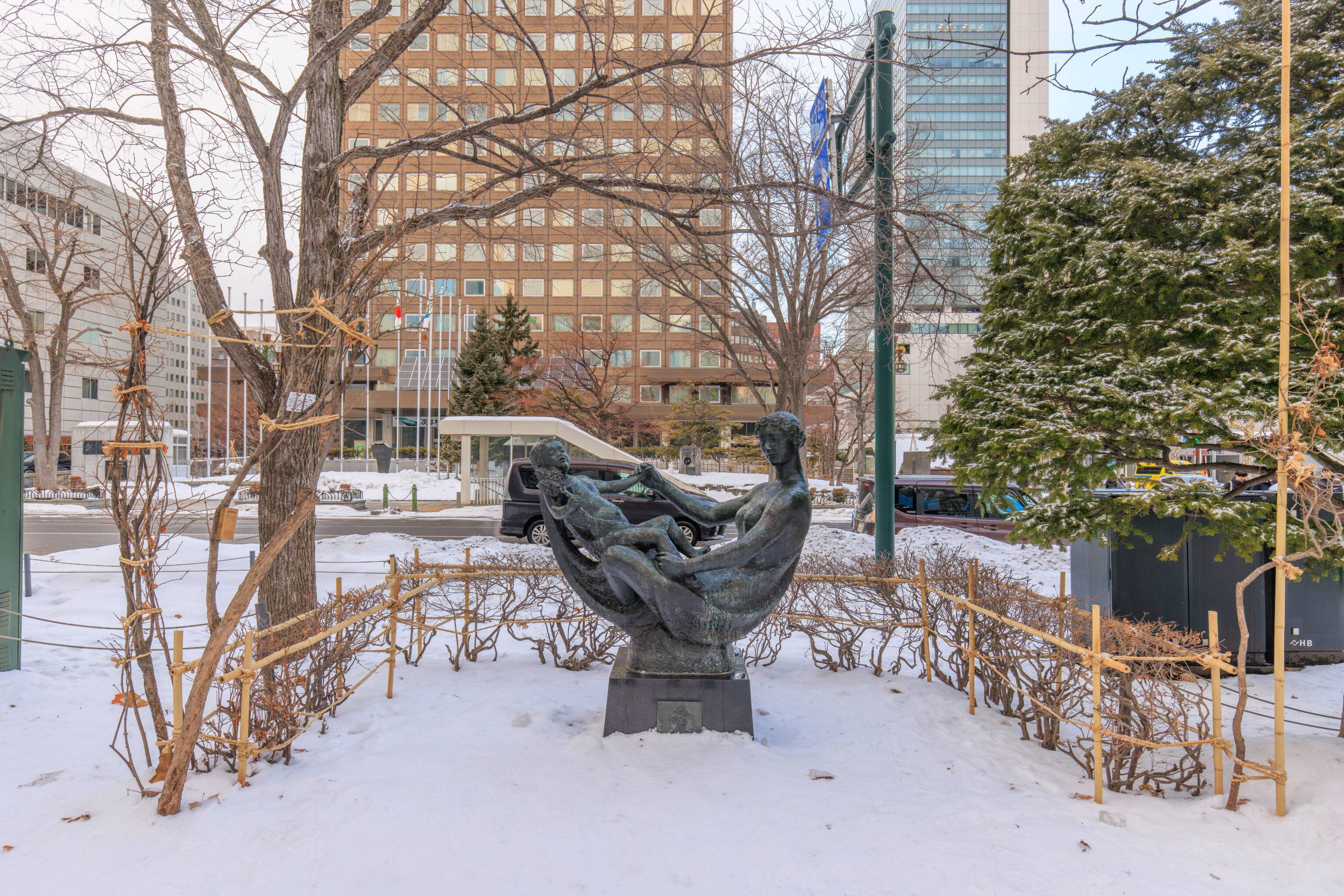
We walked by this sculpture.
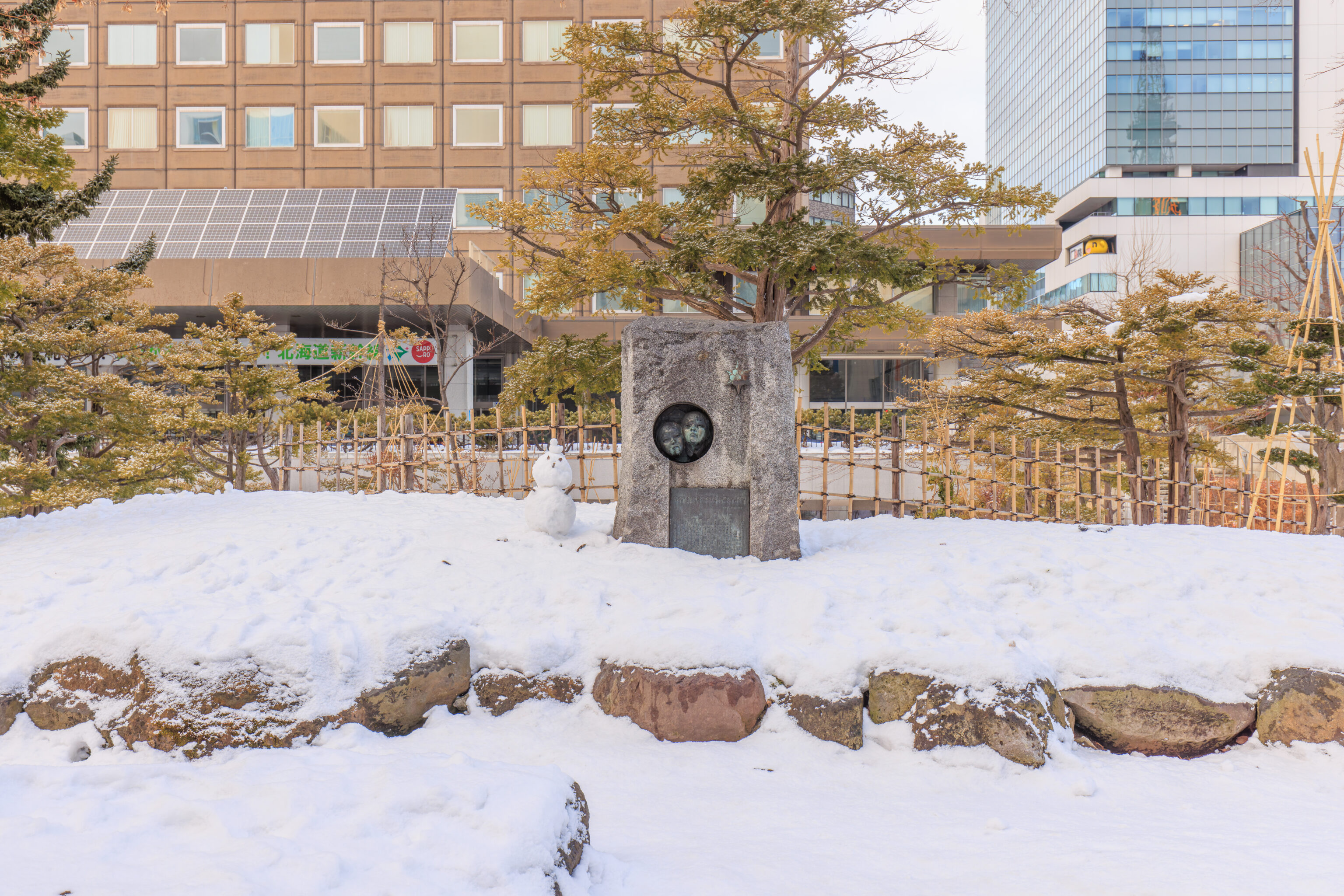
This is a monument to the former Sapporo Municipal Chuo Sosei Elementary School. The two children’s faces on the monument are a bit creepy. Many reviewers on Yahoo Maps agree! According to one of the reviews, the very hard to read text inscribed on the plaque is was the school’s song.
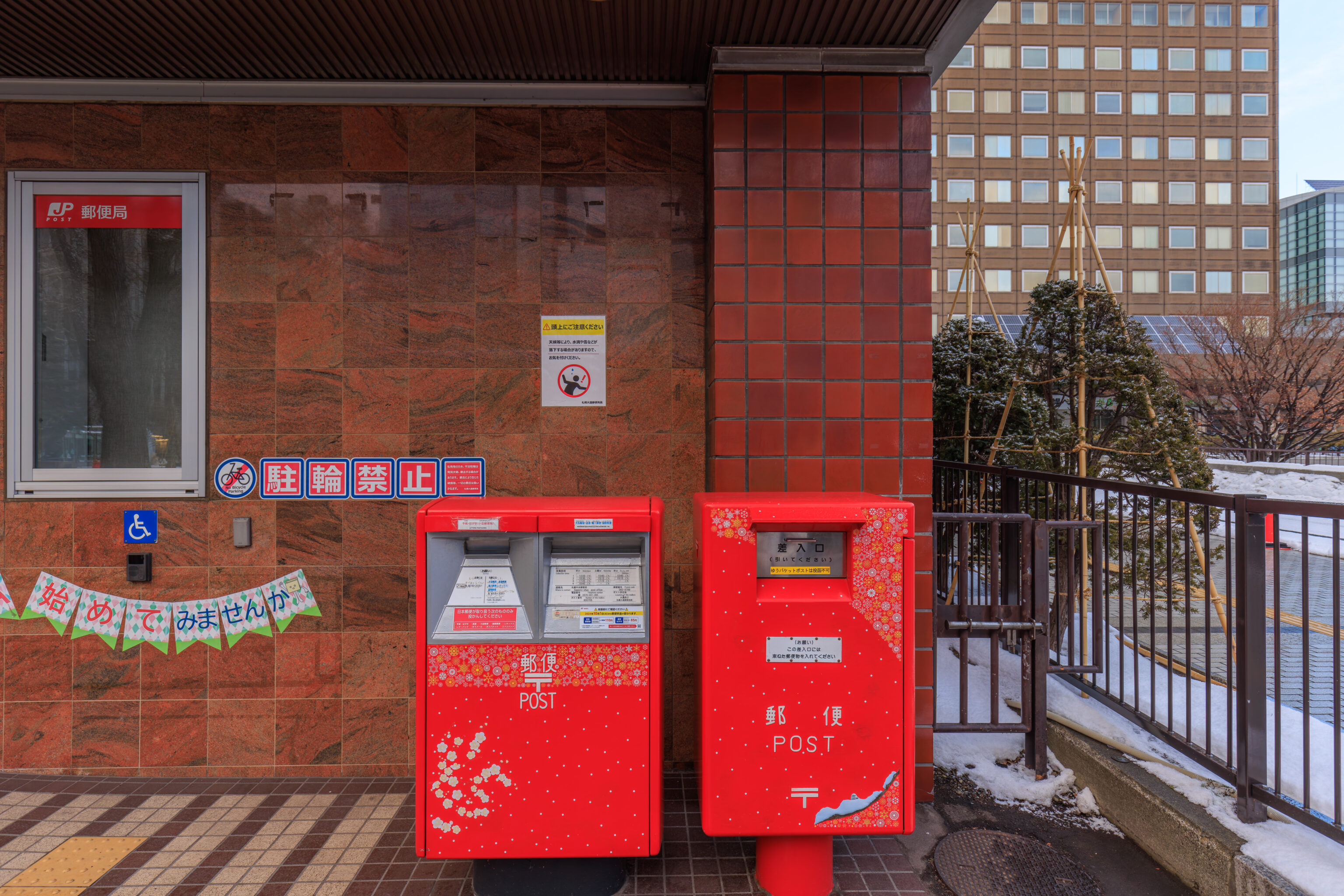
We came across these two decorated post boxes! There is even a tiny シマエナガ Shimaenaga (Long-Tailed Tit) at the bottom right on the snow covered branch!
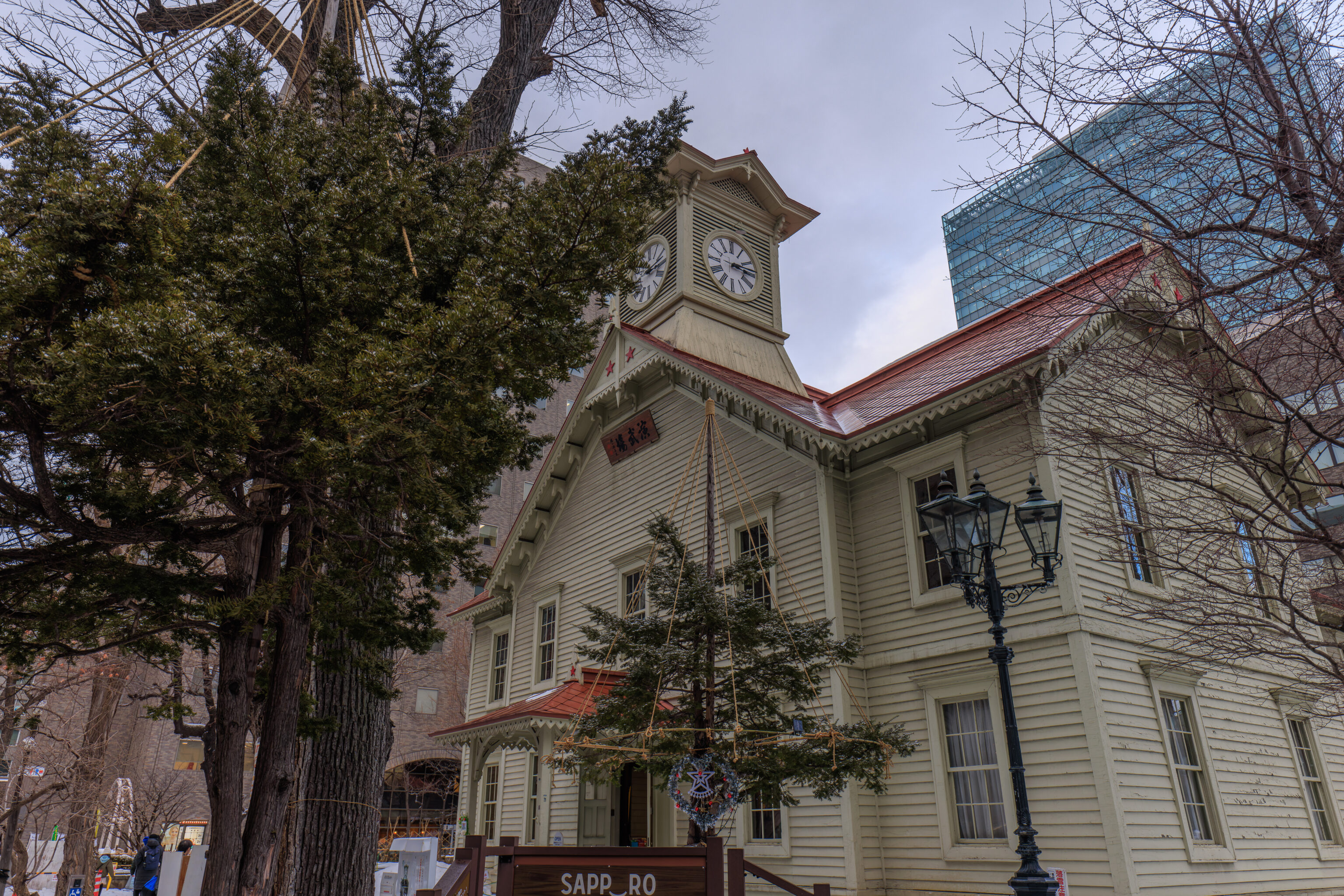
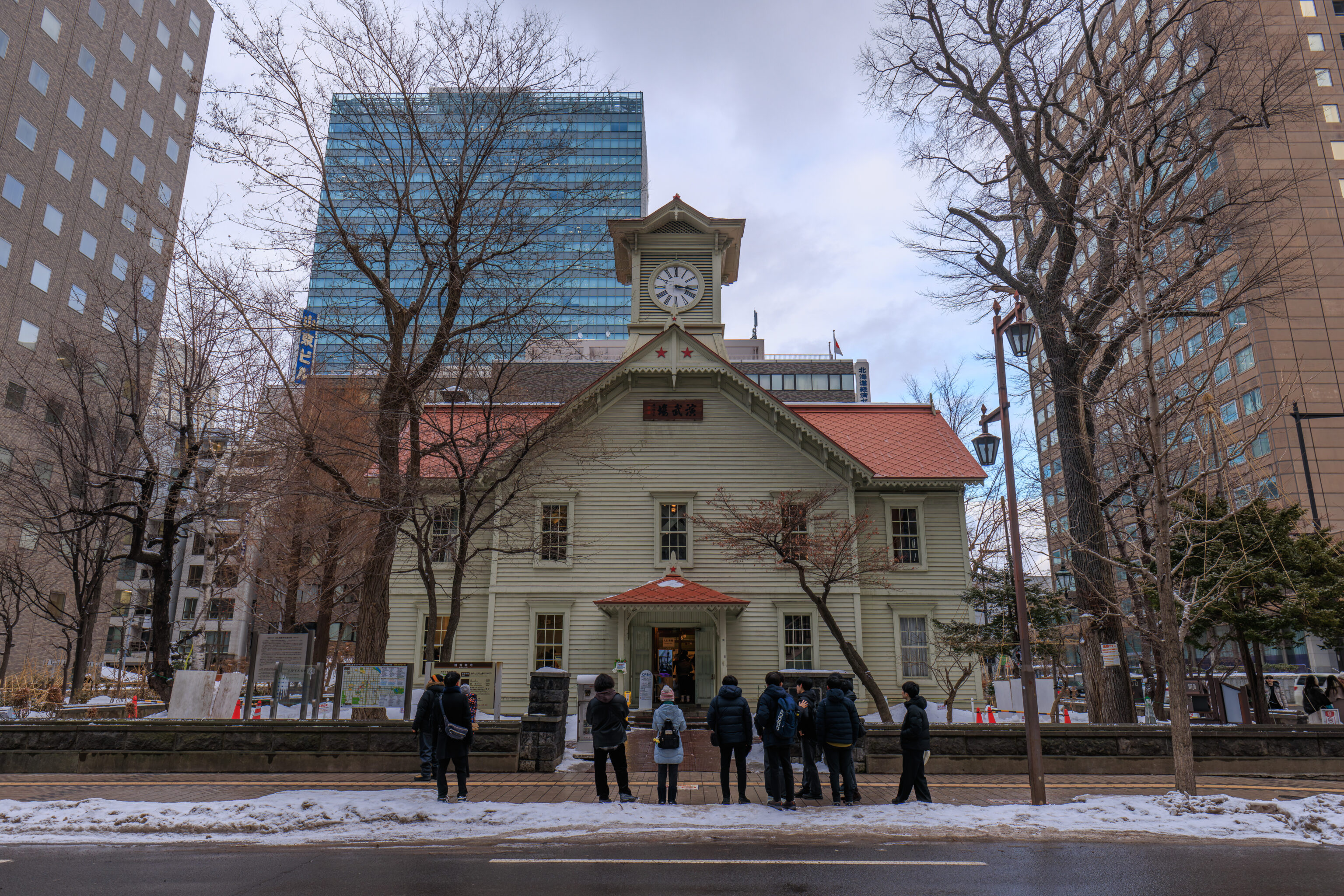
We walked to the 札幌市時計台 Sapporo Clock Tower, just a block away from Odori Park. This building was formerly part of the Sapporo Agricultural College, now Hokkaido University, and was built in 1878. This is the oldest remaining building in Sapporo, which was founded in 1868. It has become one of the symbols of Sapporo.
Dinner
We decided to have dinner at Nemuro Hanamaru, a kaiten sushi chain with a location nearby in the basement of the Miredo building. Nemuro Hanamaru is from Nemuro, the easternmost city on the Japanese main islands. It is about 7 hours away by train!
Although we haven’t been to Nemuro Hanamaru here in Hokkaido as this is our first time to Hokkaido, we have been to two Nemuro Hanamaru restaurants in Tokyo! While we enjoy their restaurants as they have excellent sushi at a very reasonable price point, they are always packed with long queues.
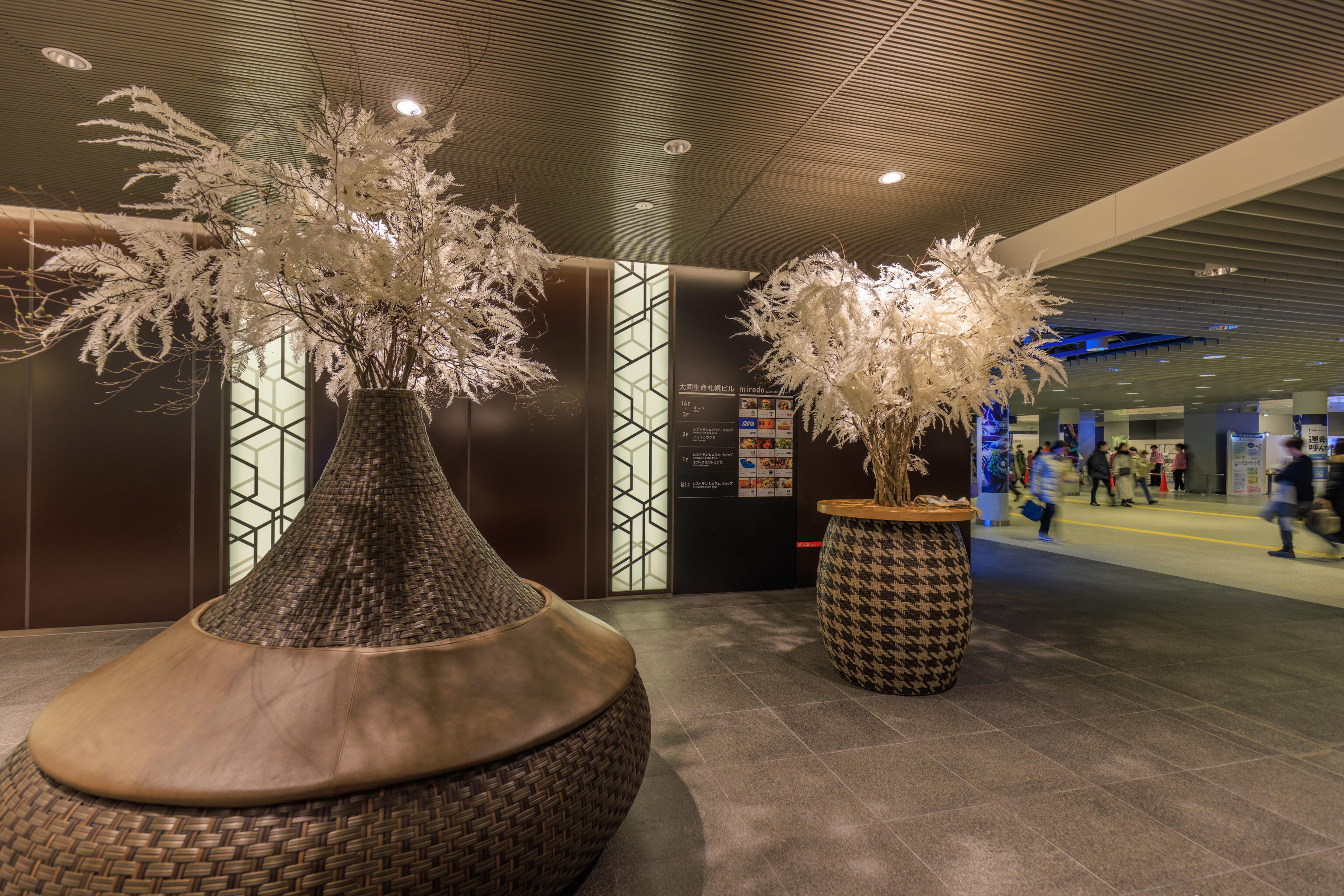
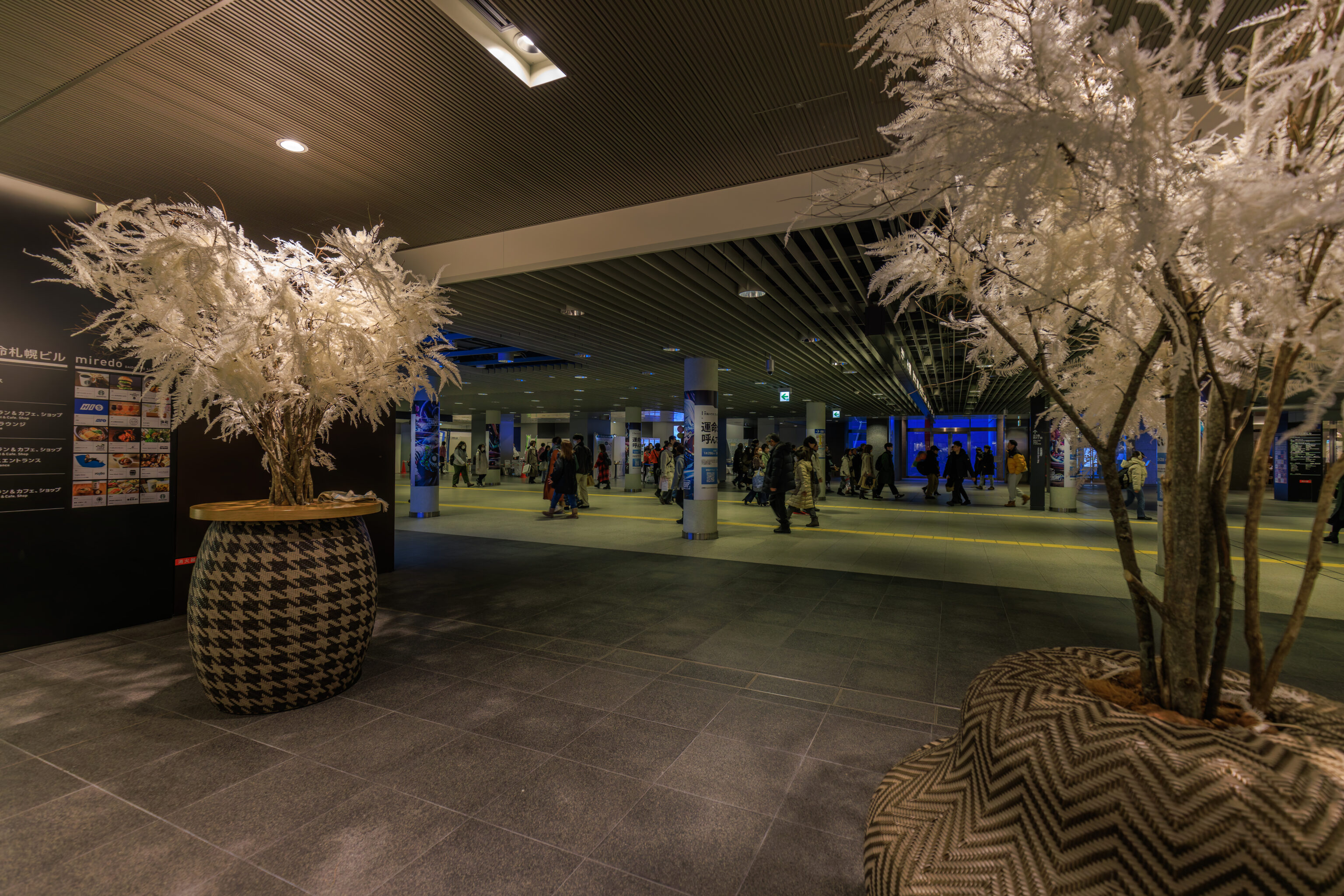

We did have to wait for around 40 minutes or so. We walked around a bit and then sat here at the underground entrance to the Miredo building for awhile.
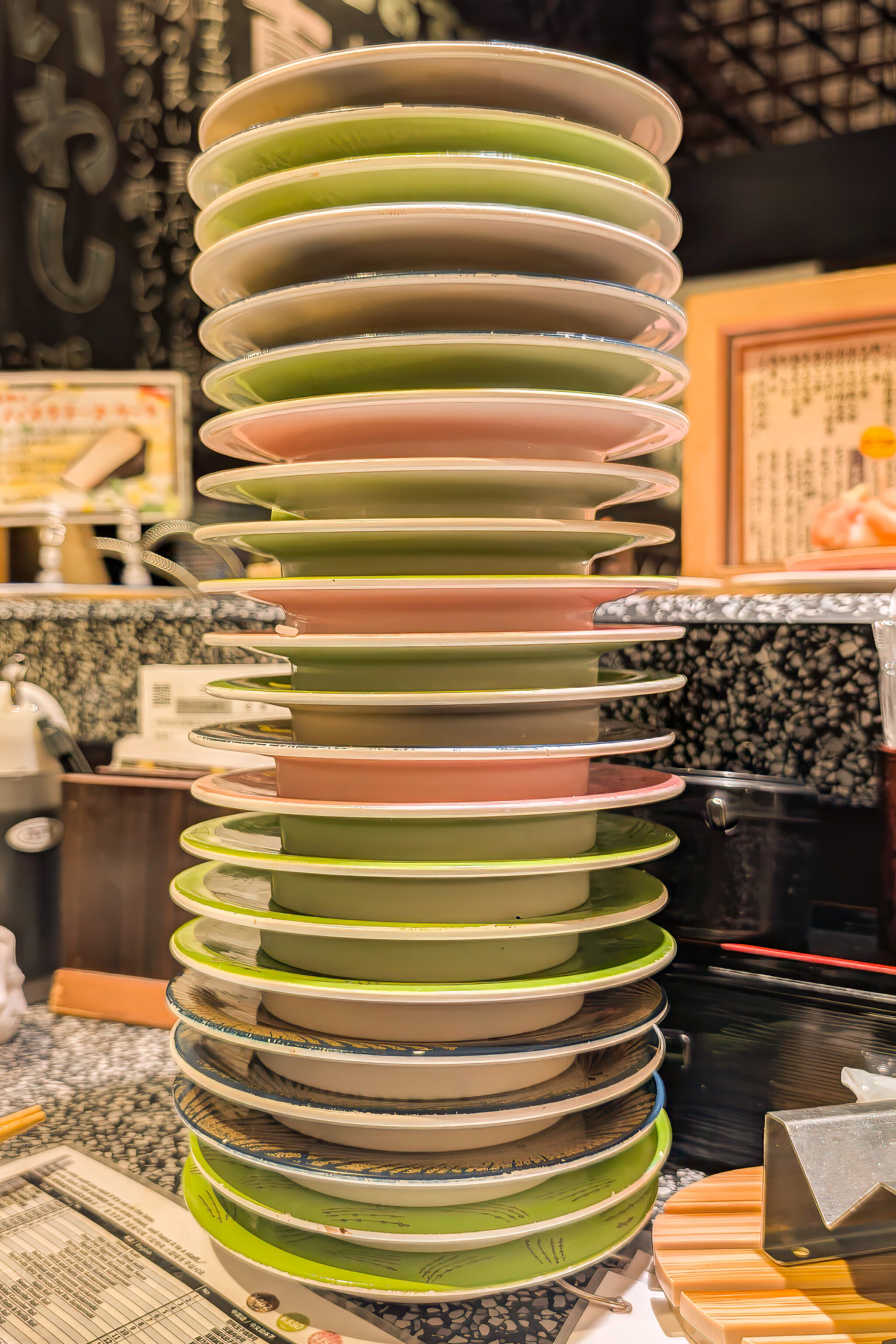
We ended up consuming 22 plates! This location was pretty good and felt better than the two Tokyo locations that we’ve visited. There are some Hokkaido specialties here but overall the chutoro, a medium fat cut of tuna, is still the best balance between price, taste, and texture. This huge feast only cost about $51 USD. We don’t really bother trying to eat sushi in the US anymore because there’s no comparison, sushi of this quality would be ridiculously expensive. And this isn’t even close to the best sushi in Japan.
Winter Illuminations
After dinner, we decided to walk around a bit to get a better look at the city’s winter illuminations.
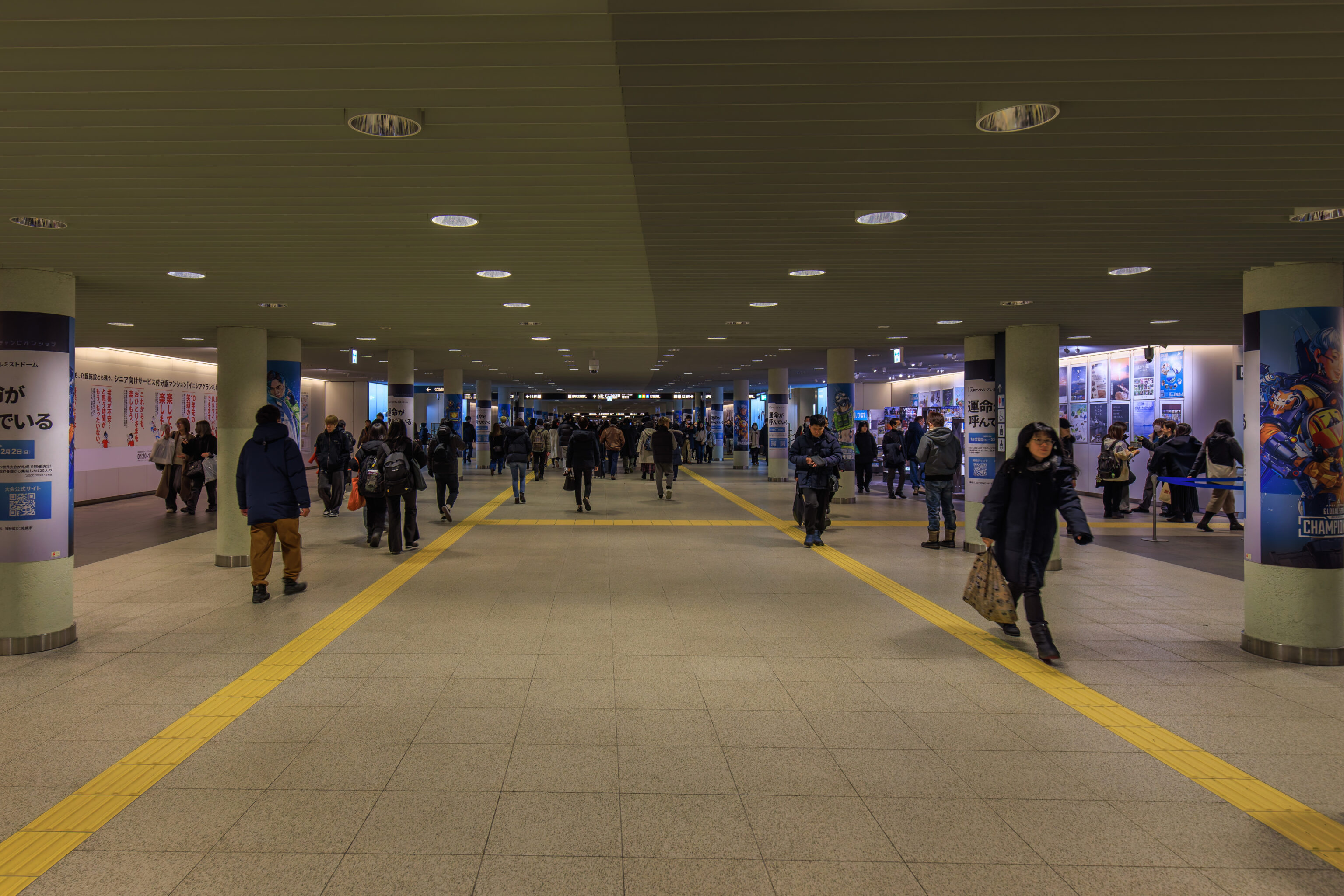
The underground passageway was pretty busy. Not Shinagawa Station during rush hour busy, but there were definitely more people walking around down here than at street level.
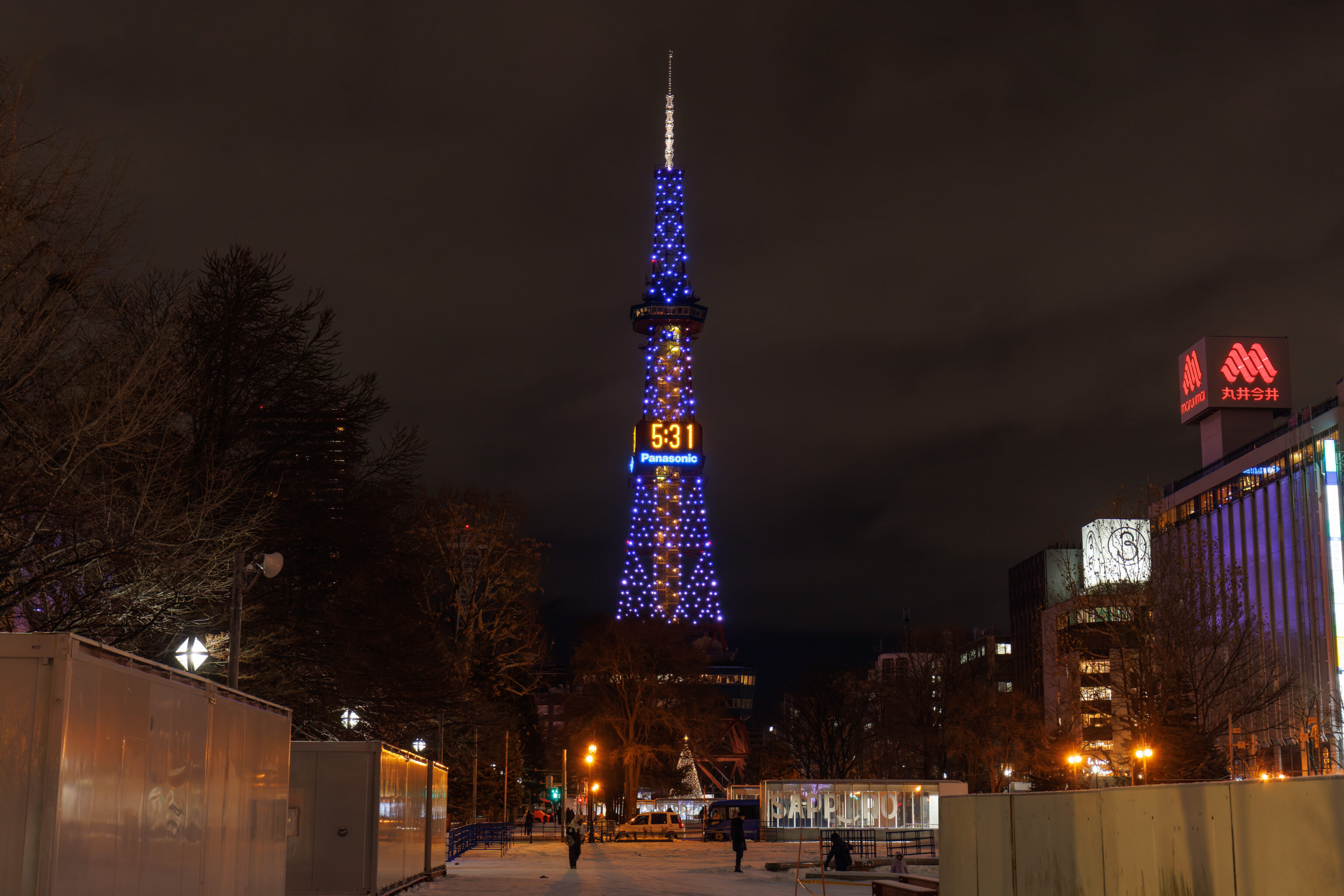
The Sapporo TV Tower is nicely illuminated at night! The digital clock turns out to look pretty nice at night.
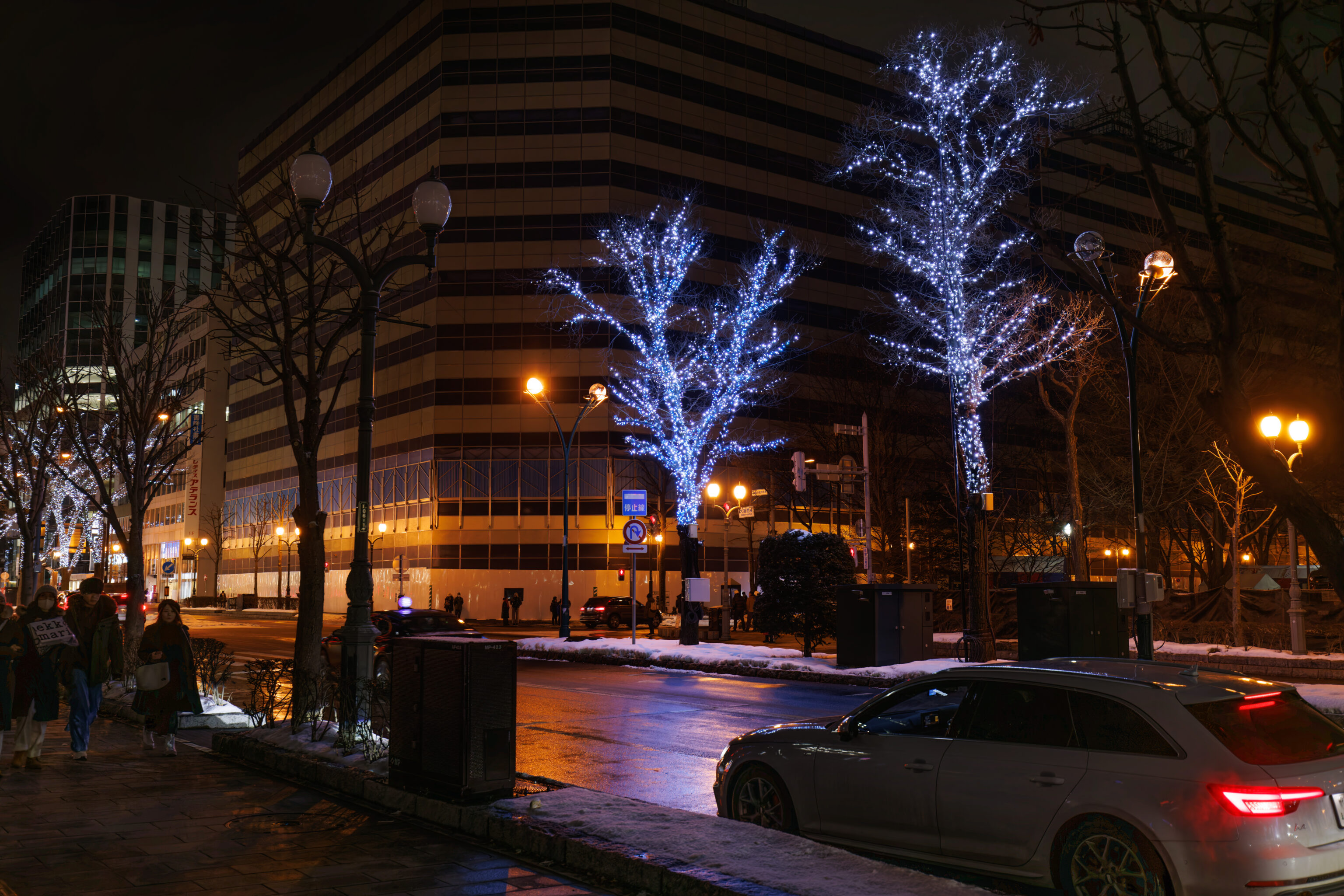
There were some illuminated trees on the nearby streets.
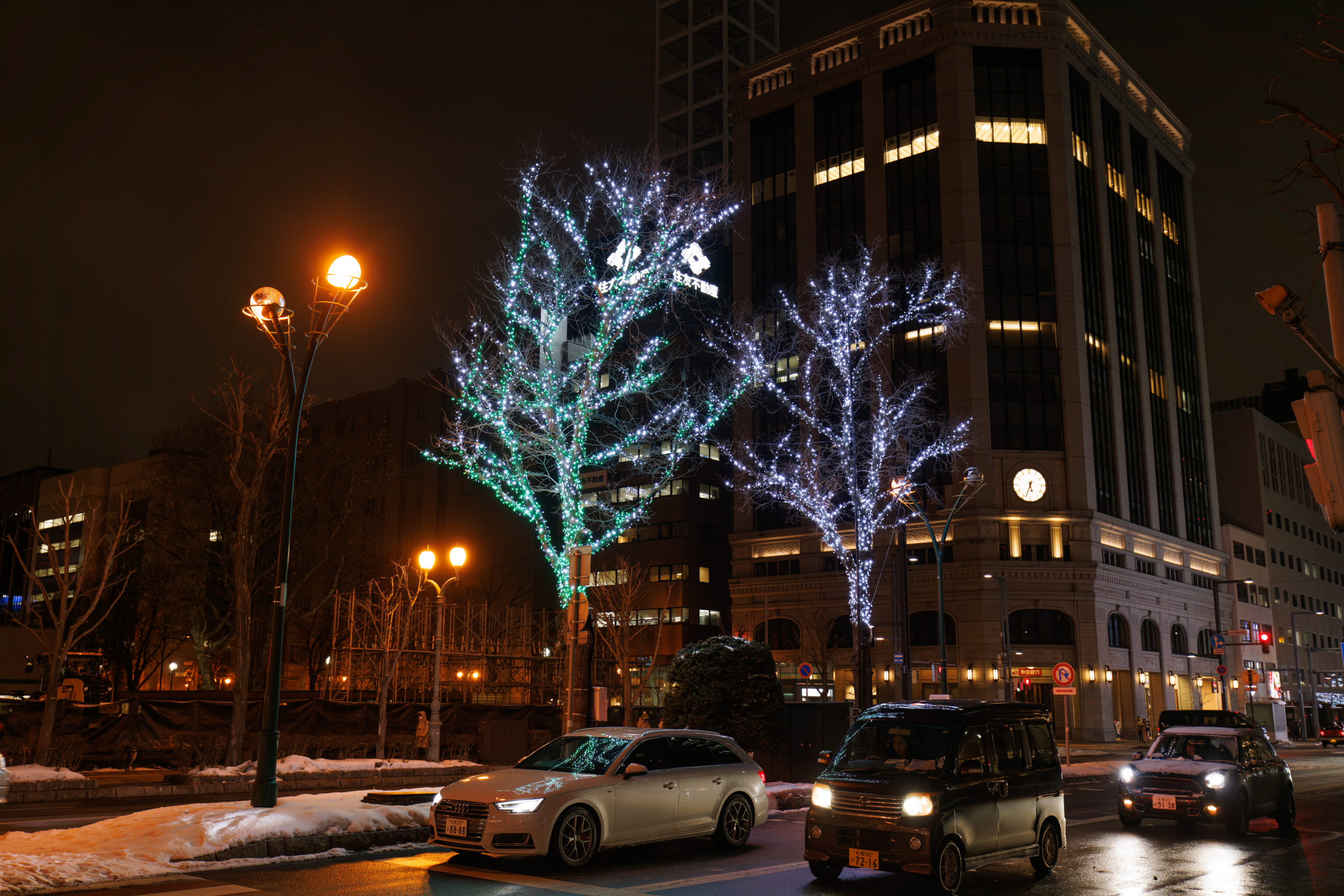
This one illuminated tree on the left was interesting because its lights changed colors. We didn’t see any other ones that had that feature.
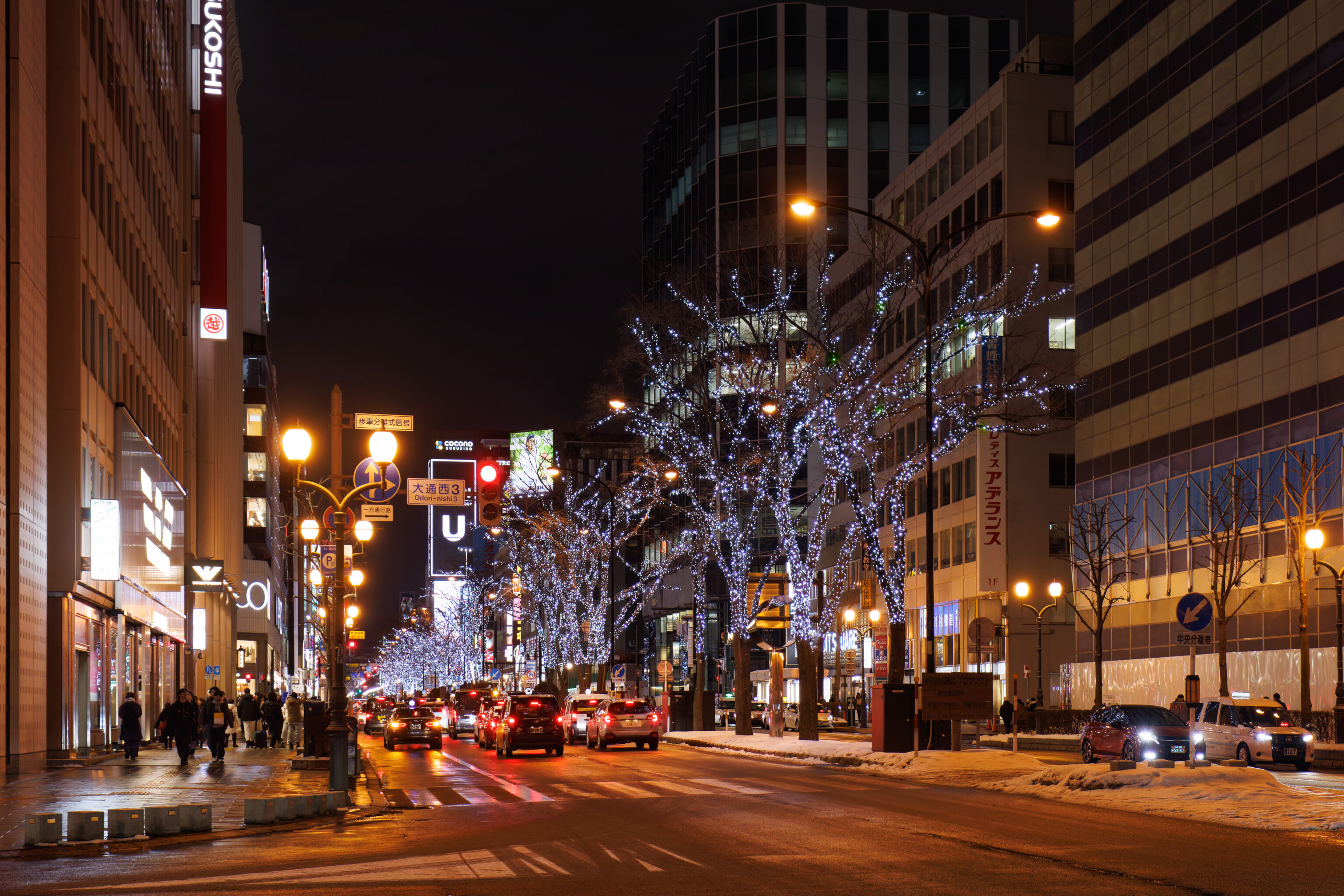
We were on the northern section of this illuminated street yesterday evening.
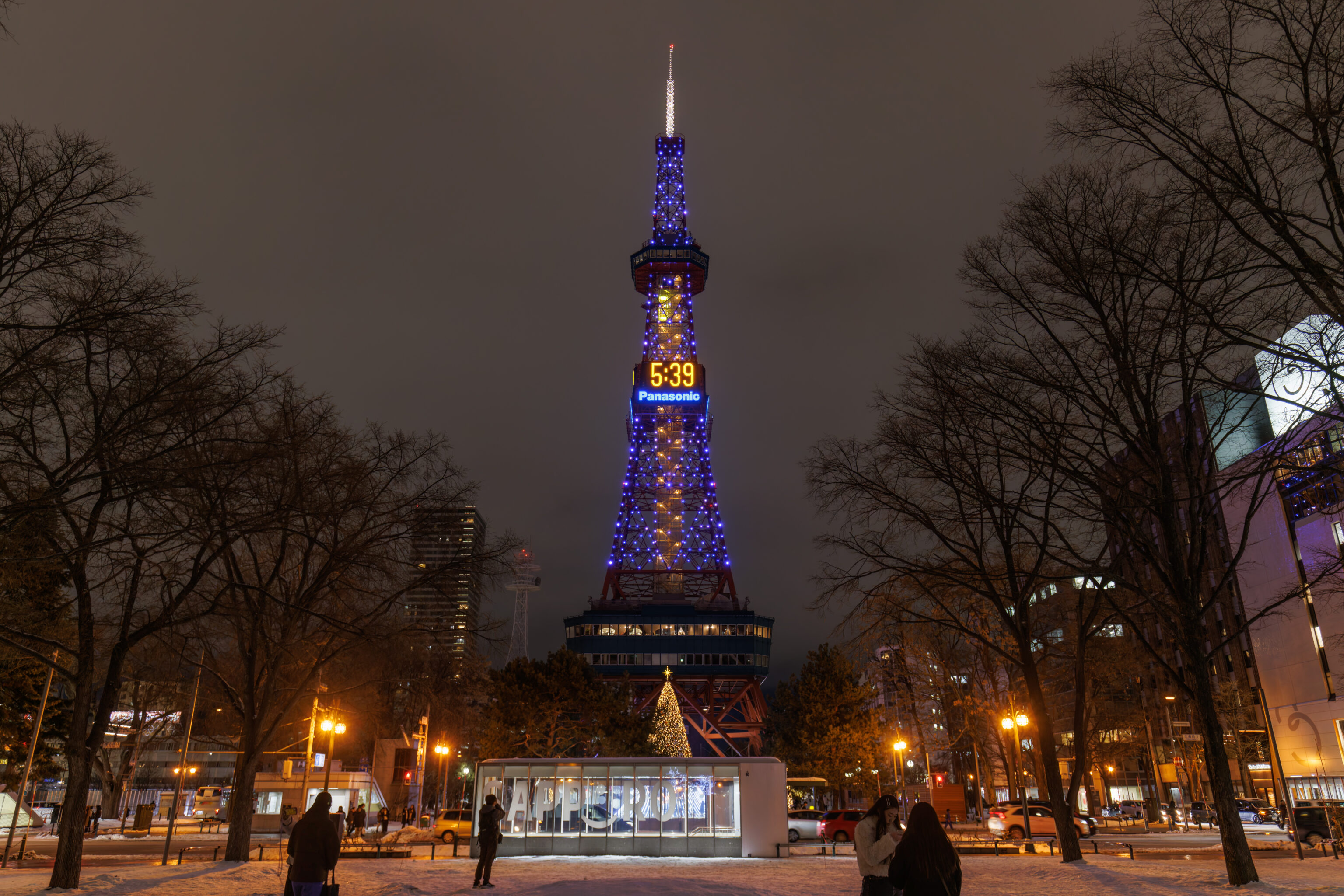
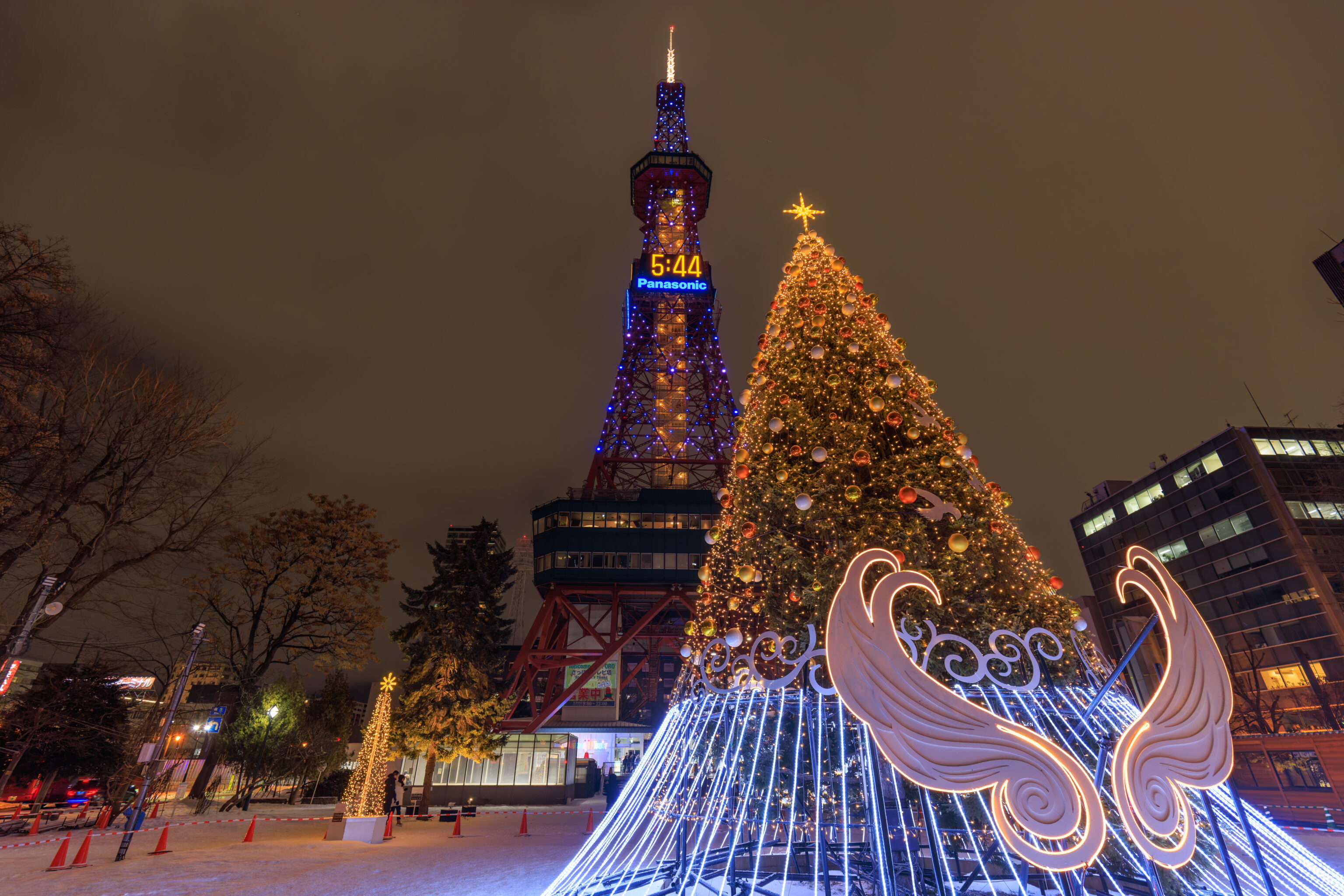
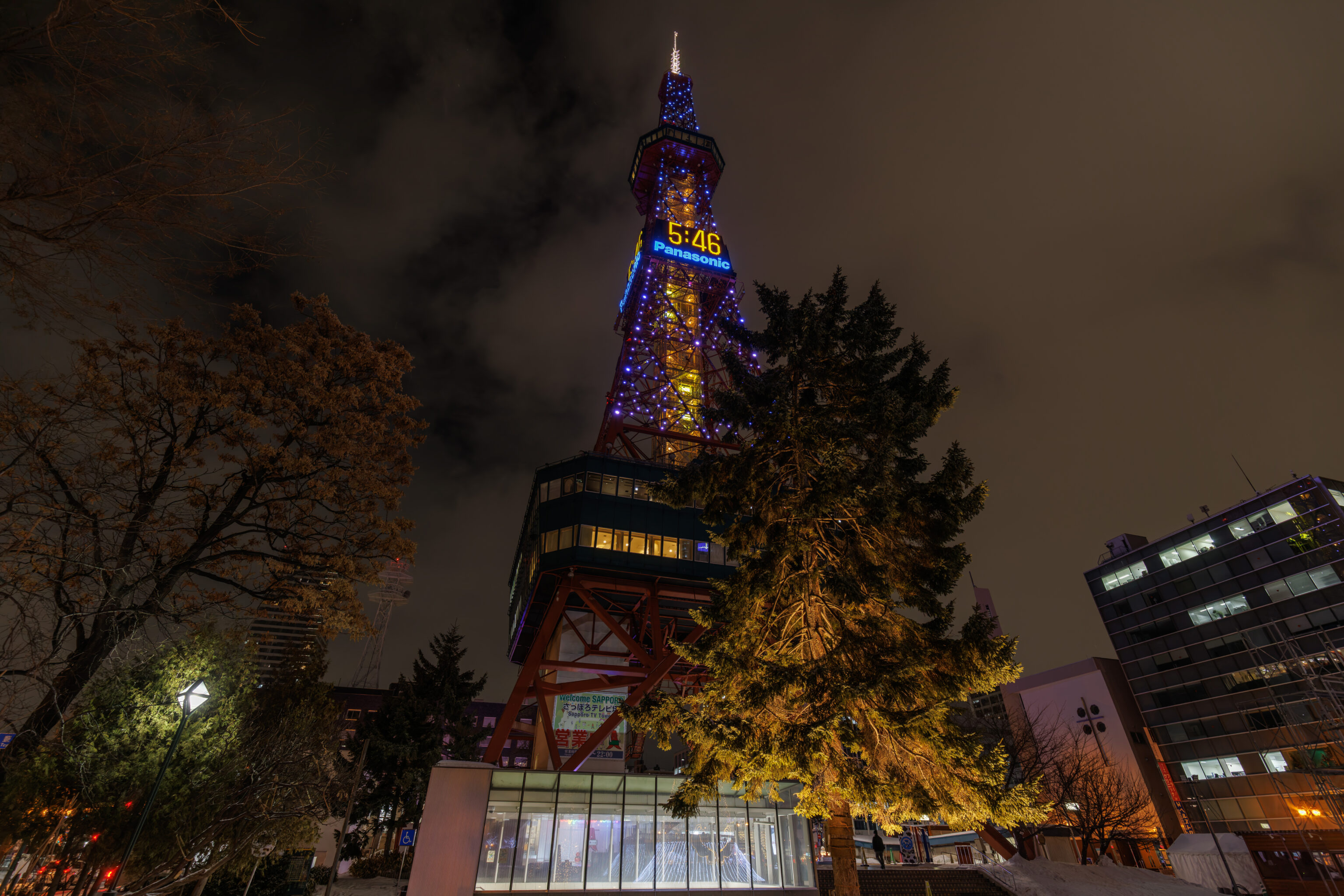
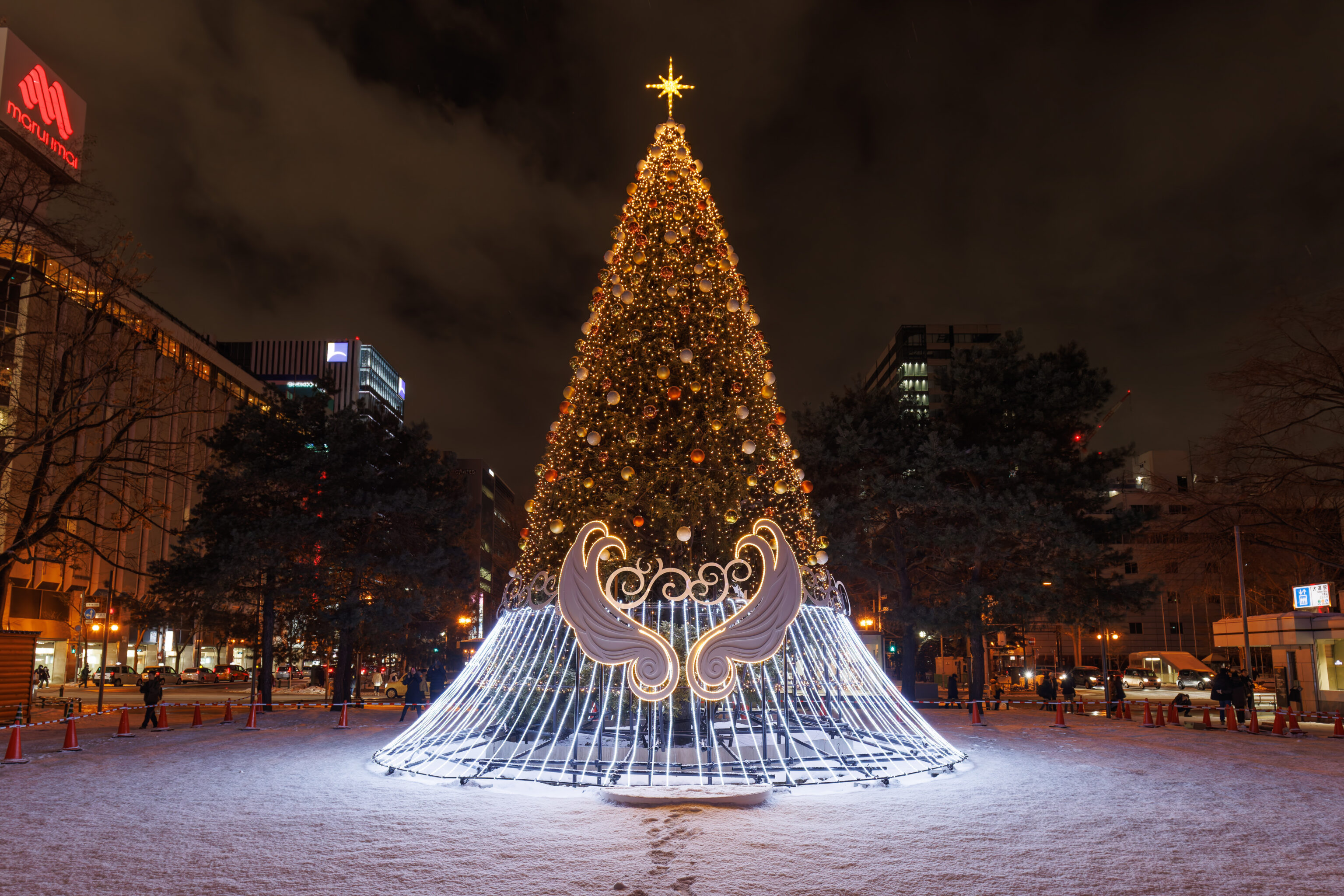
We walked around the Sapporo TV Tower a bit.
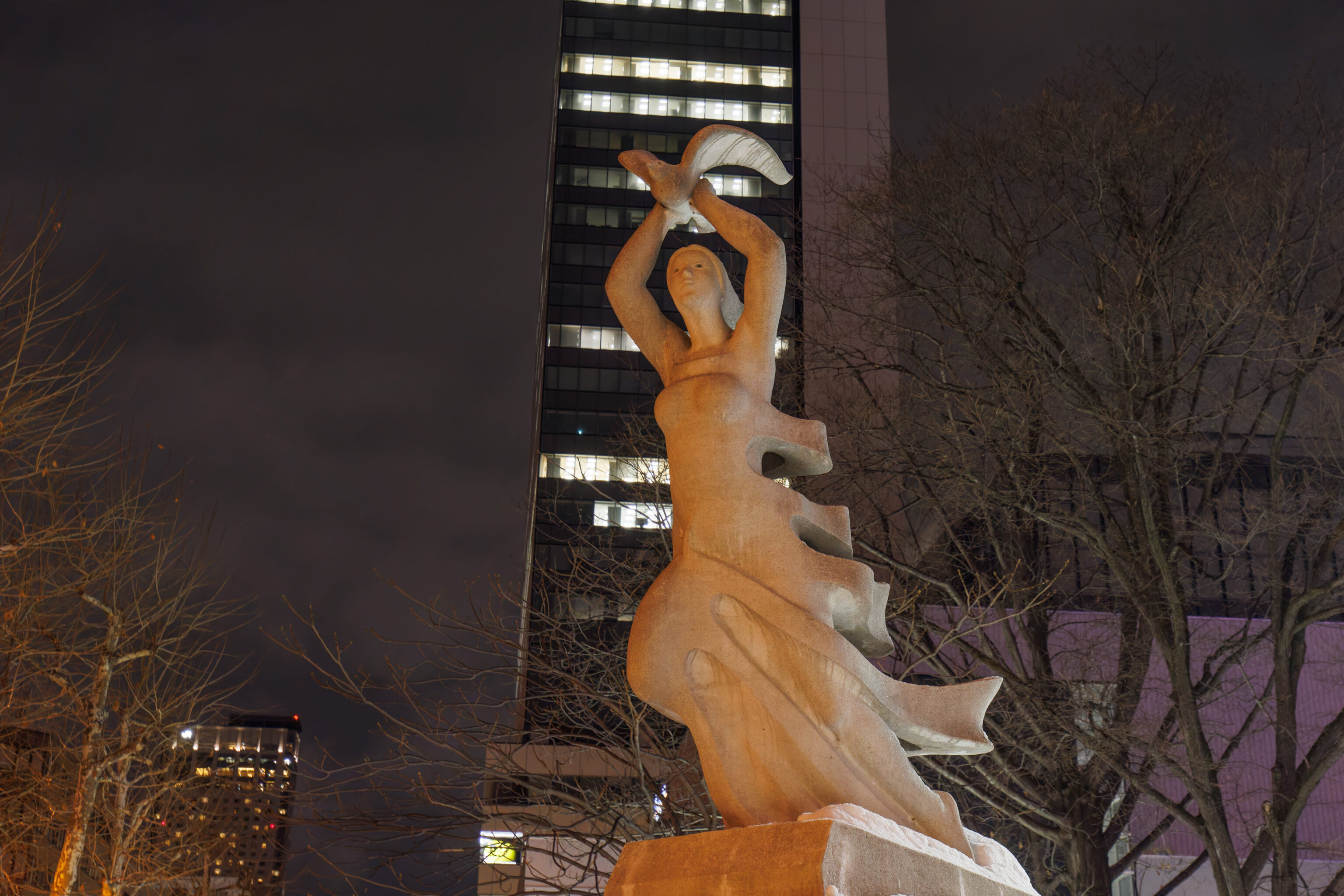
This statue appears to depict a woman tossing a bird into the sky! That’s probably not the depiction the artist was intending.
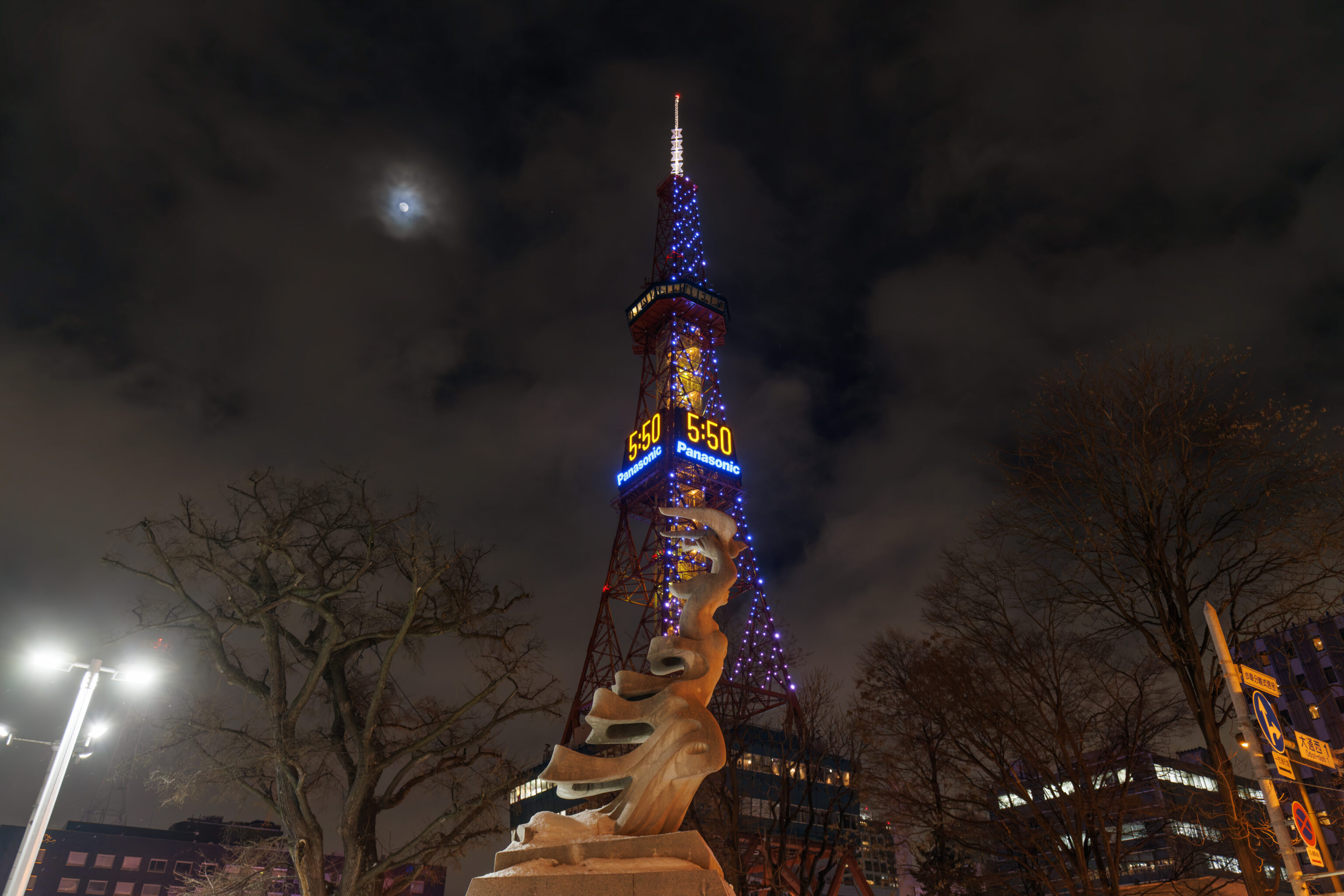
We realized that the moon was pretty close to the top of the Sapporo TV Tower from this perspective. Could we get it to be at the very tippy top of the tower?
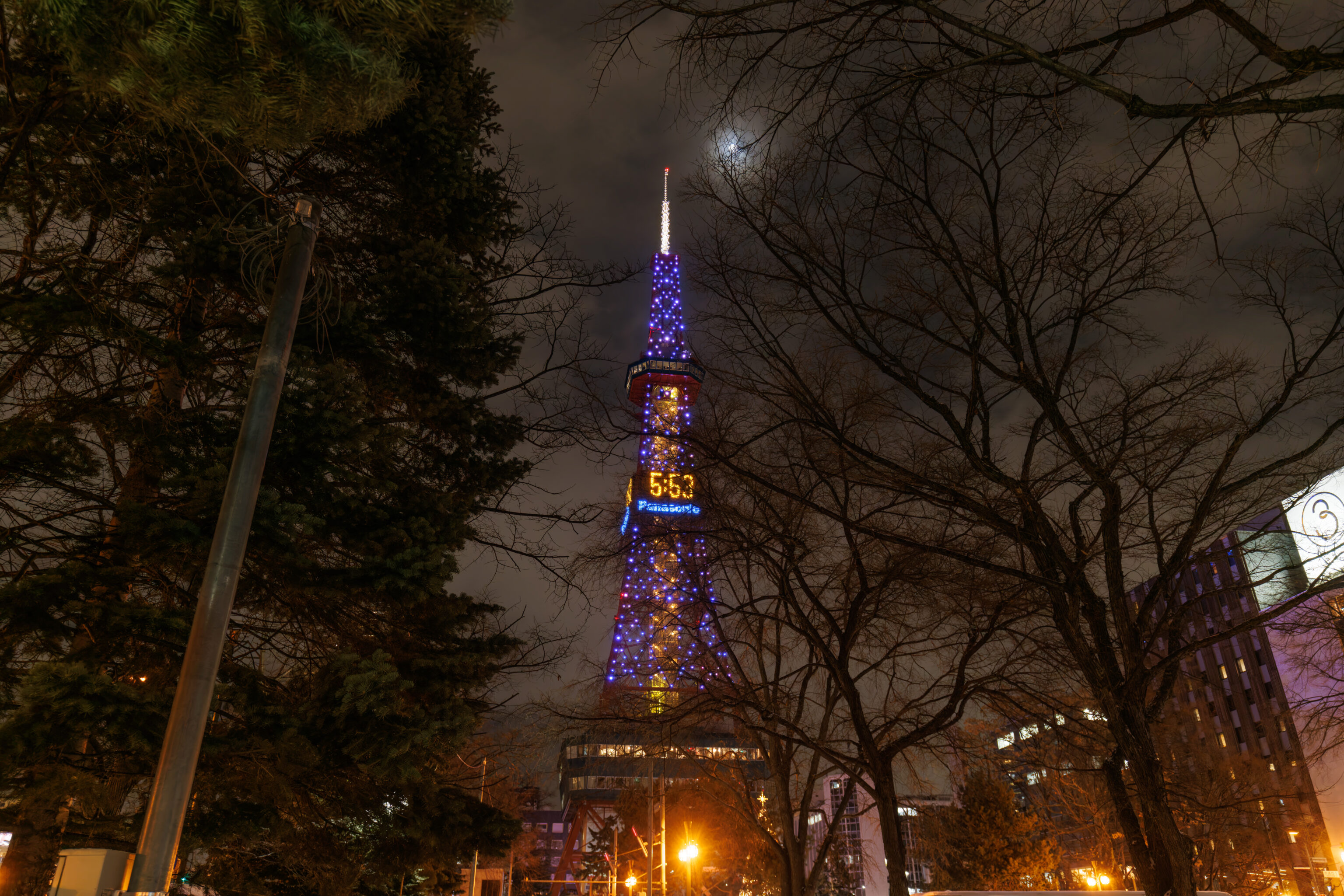
Unfortunately, it wasn’t possible without standing in the middle of a street! This was as close as we could get.
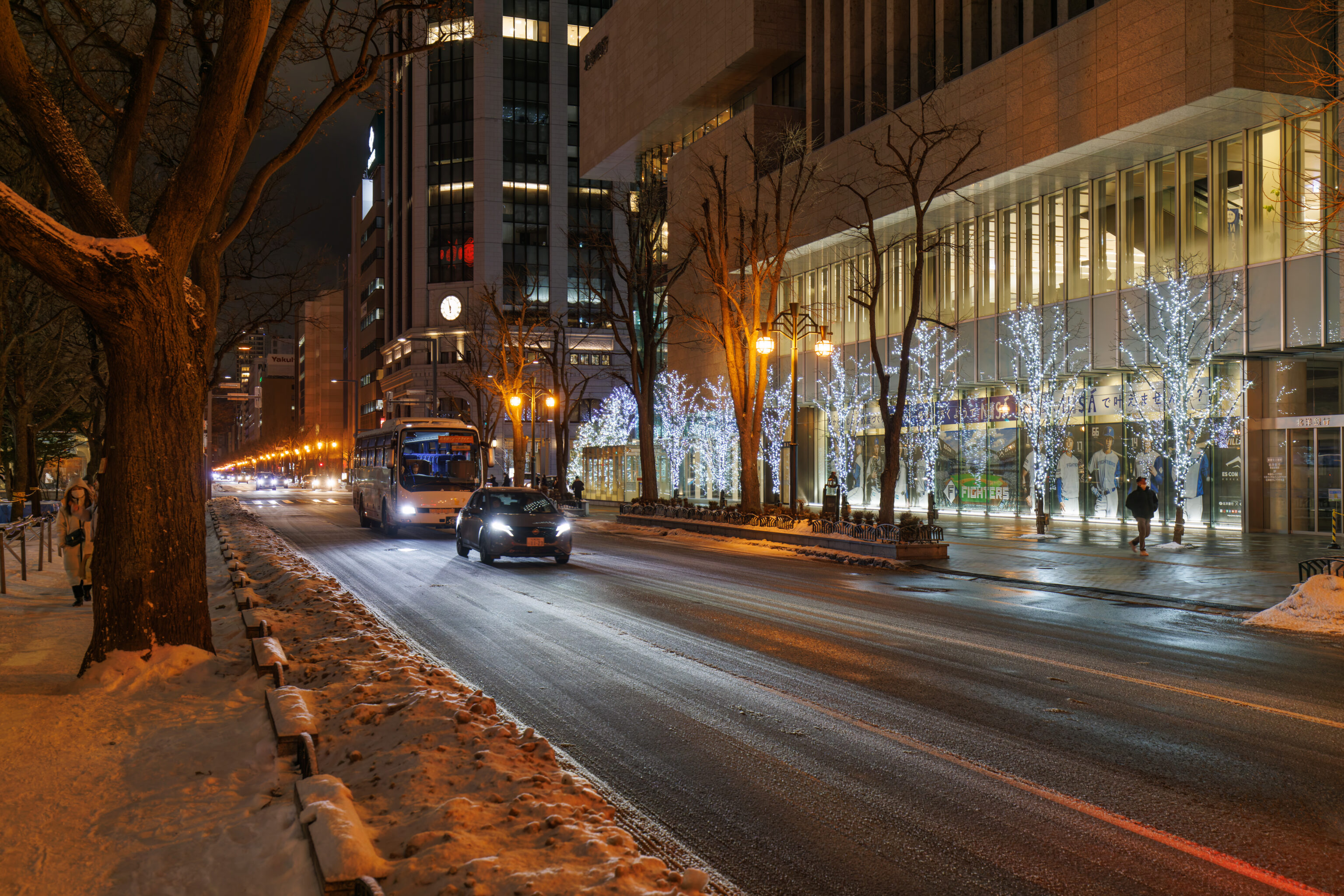
We noticed that this building across the street, which has illuminated trees in front of it, has a large display for the Sapporo Nipponham Fighters! This is the same baseball team that we saw advertised on construction equipment earlier in the day.
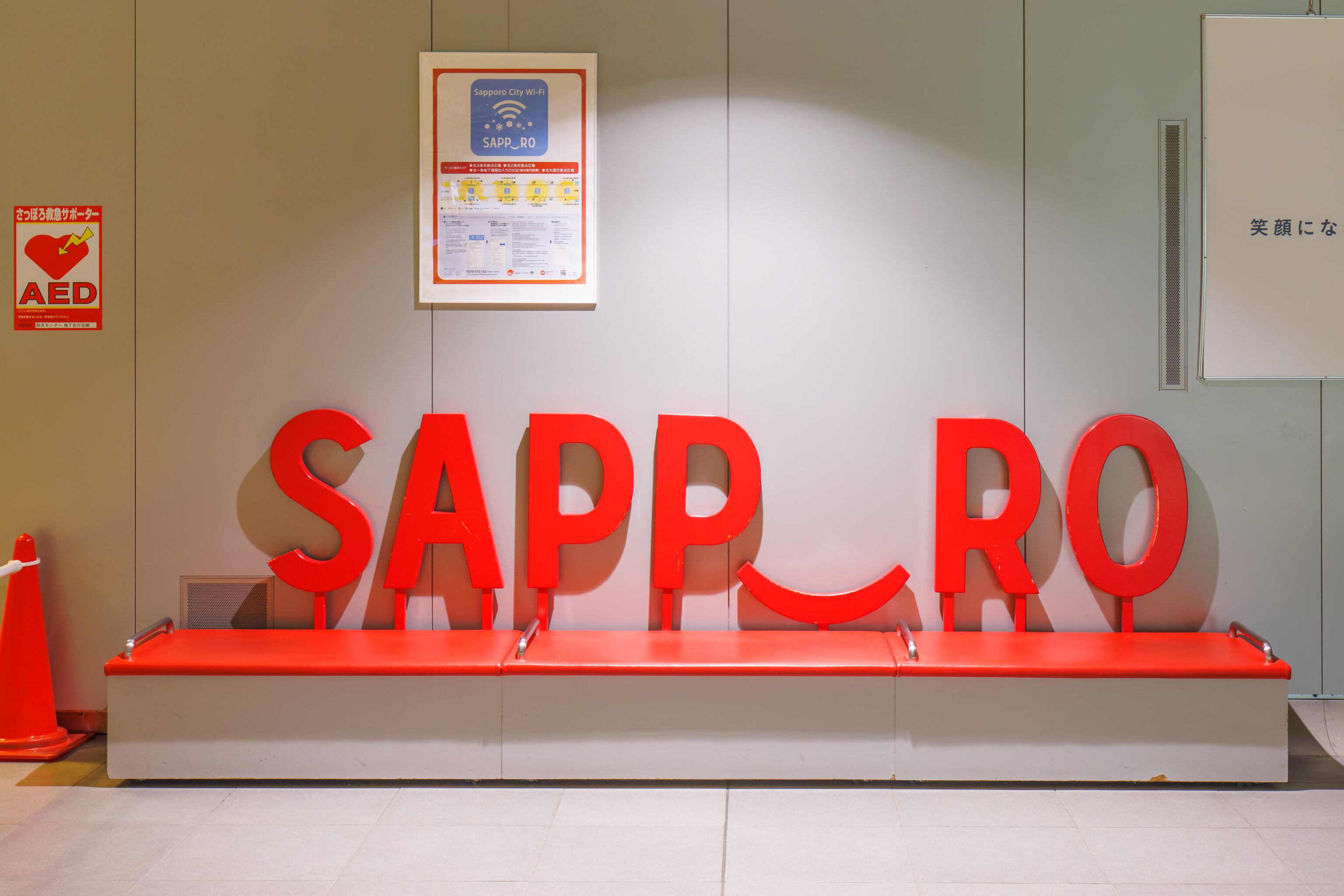
We decided to head back down into the underground passageway and started to walk to the north.
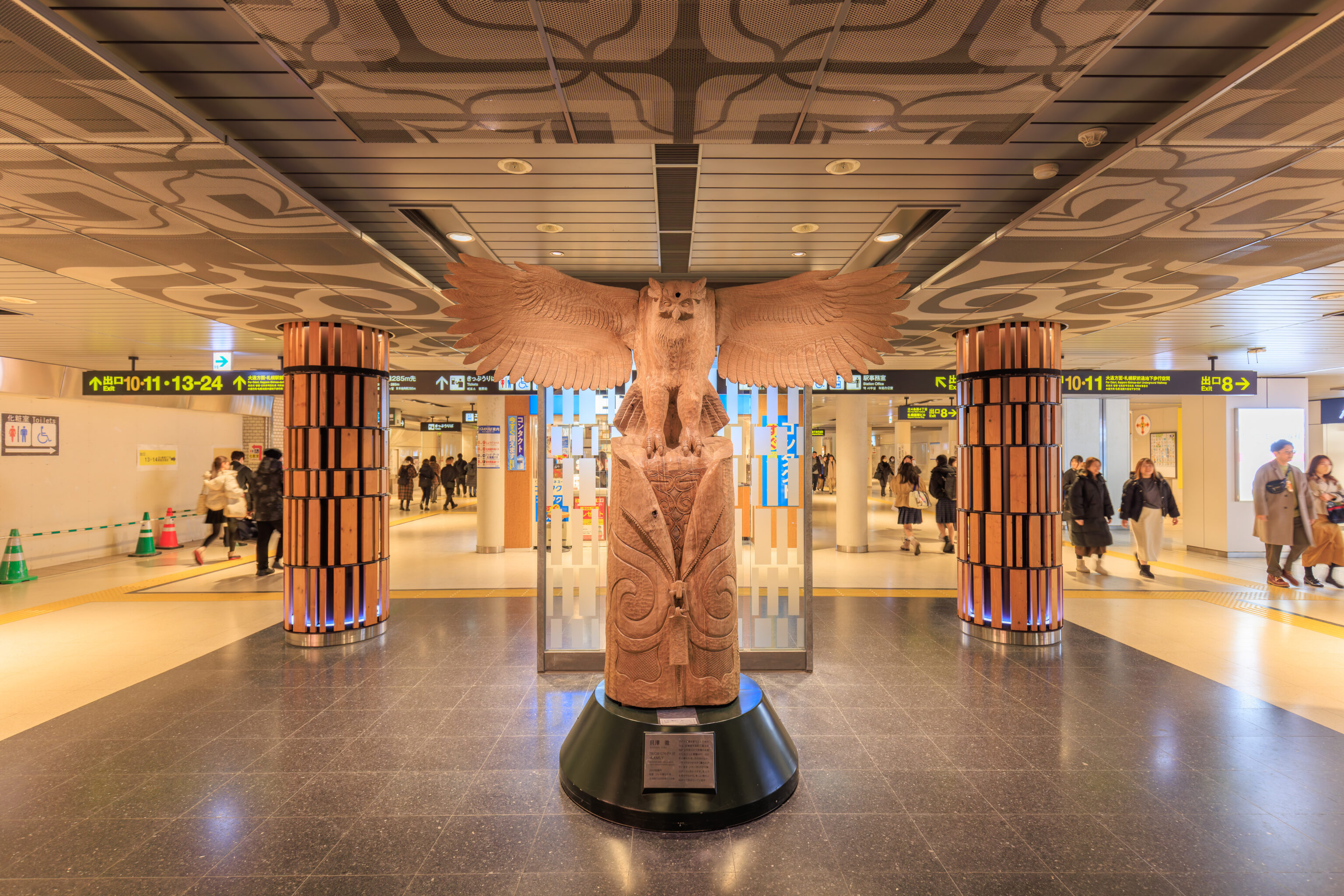
We came across a display of Ainu art. The sign below the wood carved sculpture by Koru Kaizawa explains, translated using Google Translate:
KAIZAWA TORU
IWOR-UN-PASE-KAMUY
(Revered deity who protects each person's sacred spaces)
Produced in 2019
Material: Buried elm wood (Lower reaches of the Saru River, Hidaka Town, Hokkaido).
The wooden pillar with Ainu patterns carved into it is a 400-500 year old buried tree that was excavated from a rice paddy in the downstream basin of the Saru River that flows through Nibutani, Biratori Town, Hokkaido. On top of the tree, a Blakiston's fish owl has its wings spread wide. It is Kotankorokamuy, the guardian deity of the kotan (village). It is watching over us as it spreads its wings and heads into a new era.
We continued walking to the north, reaching Sapporo Station. It was incredibly busy! We found our way outside to return to the Crowne Plaza.

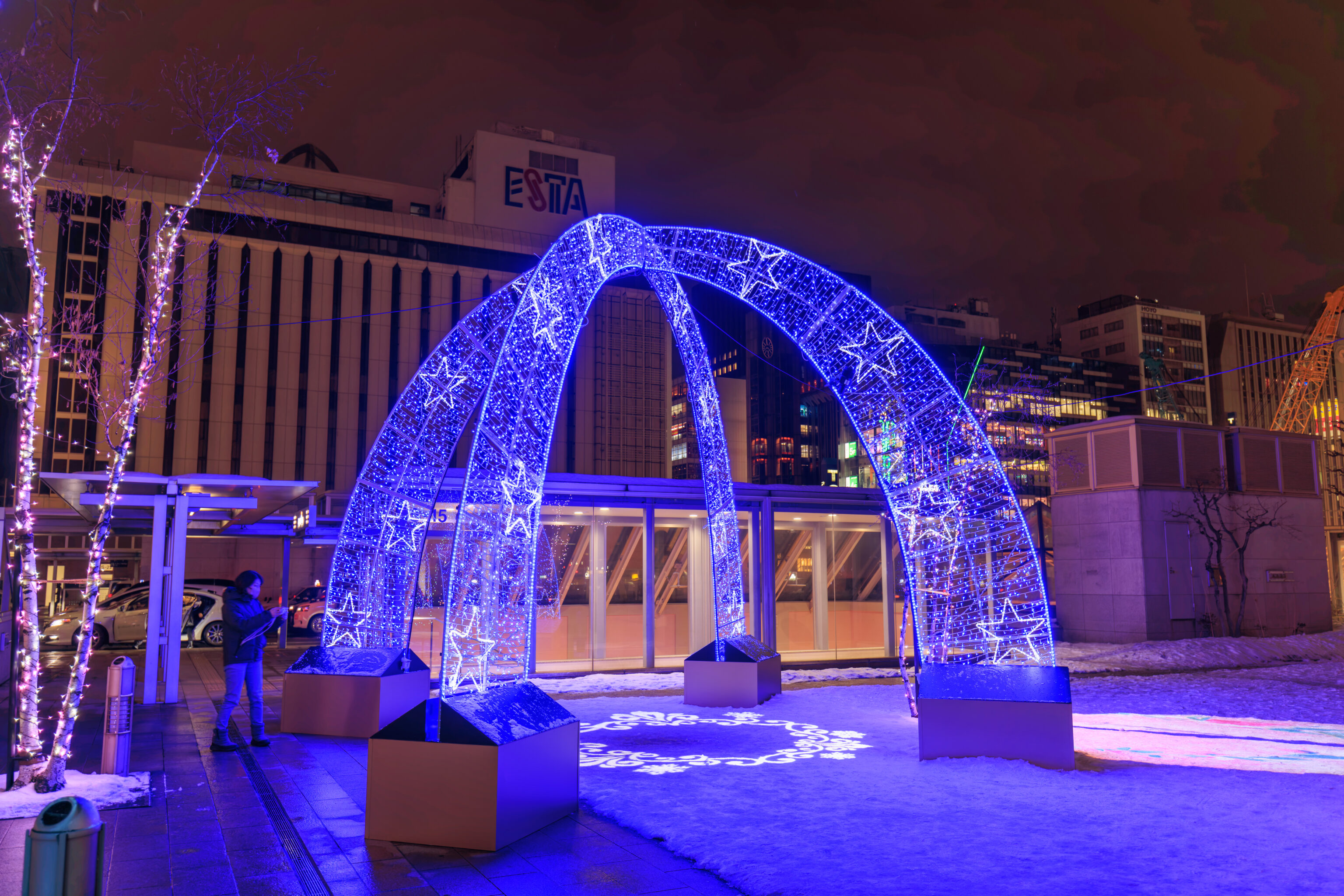
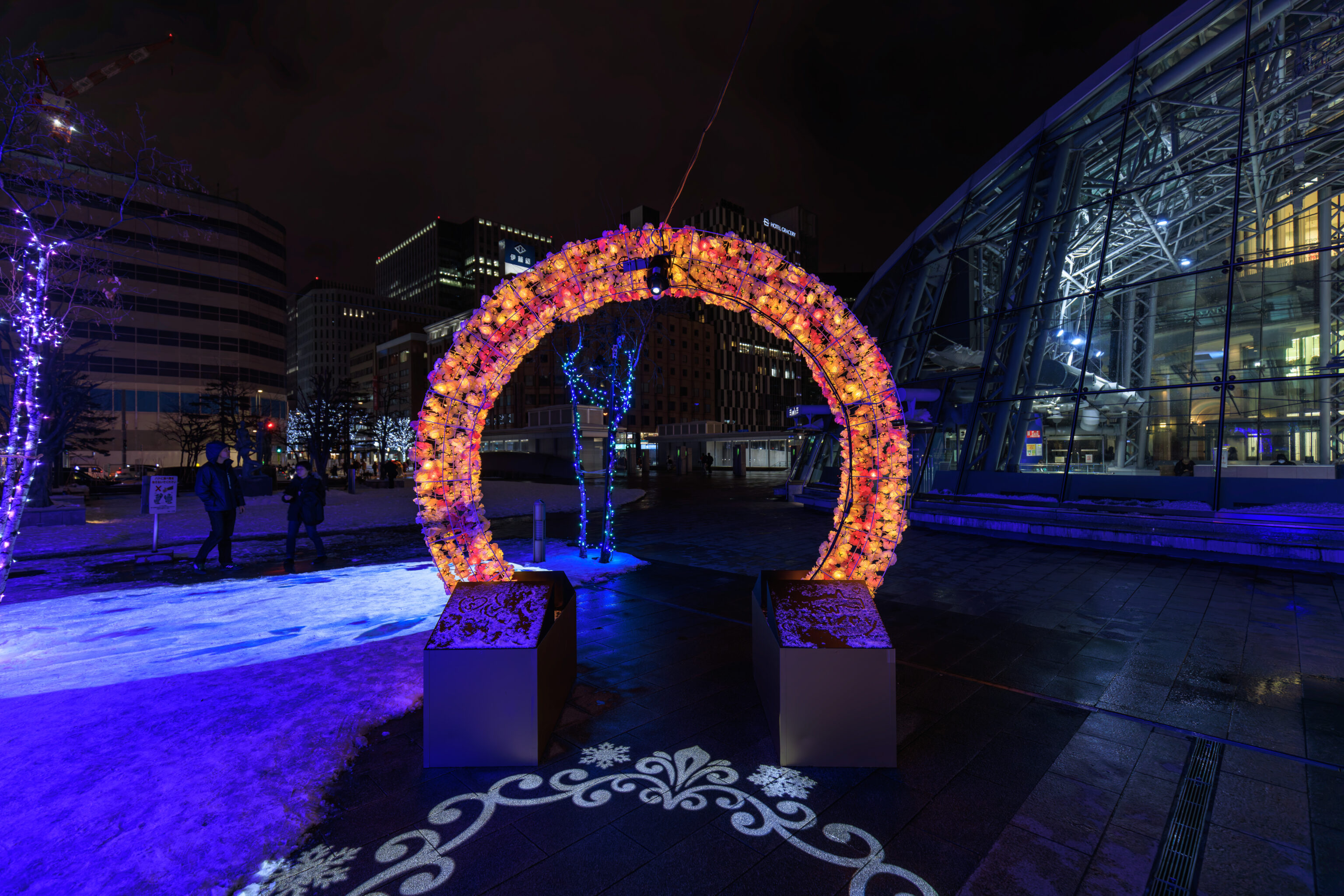
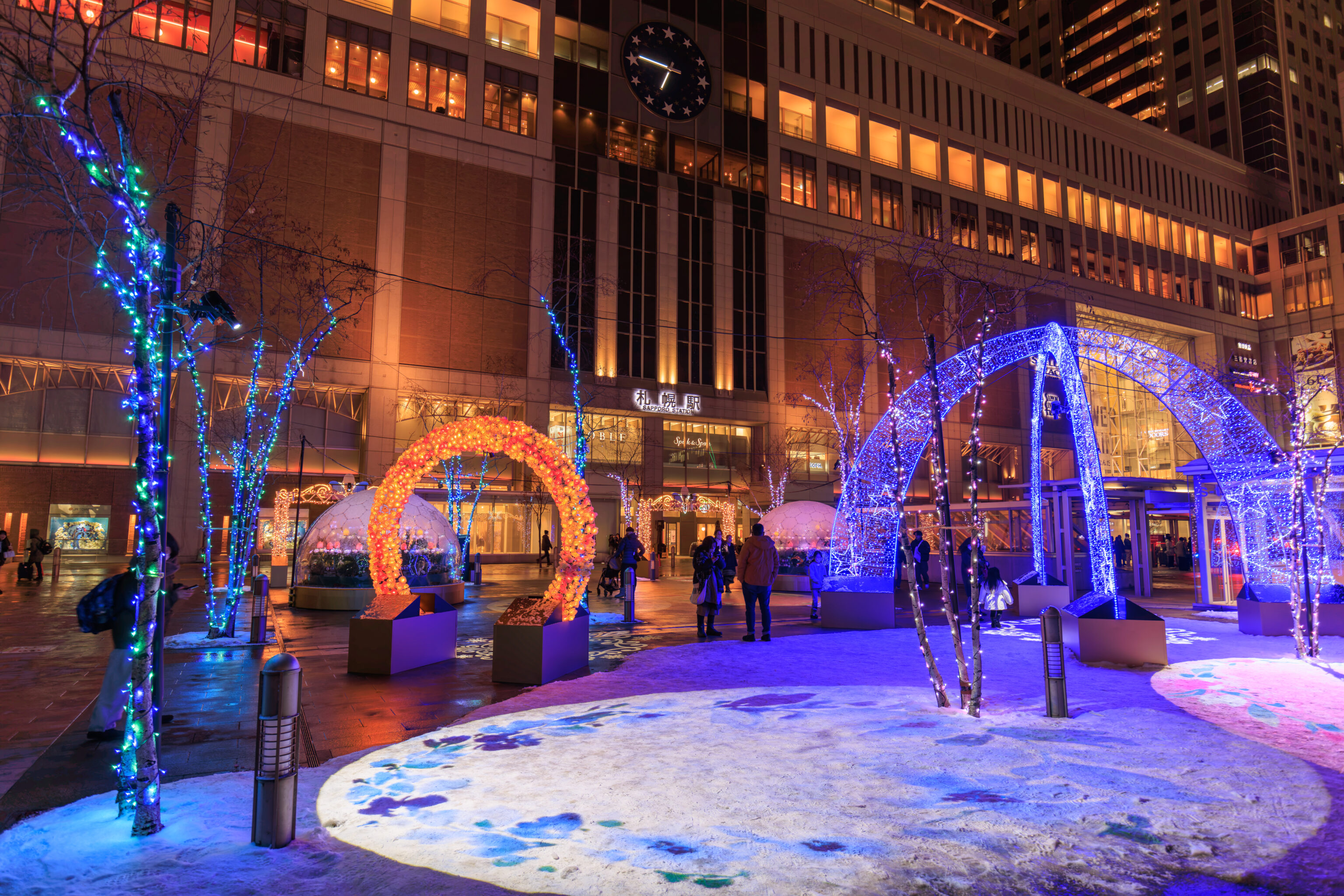
We happened to exit near this illuminated outdoor winter display!
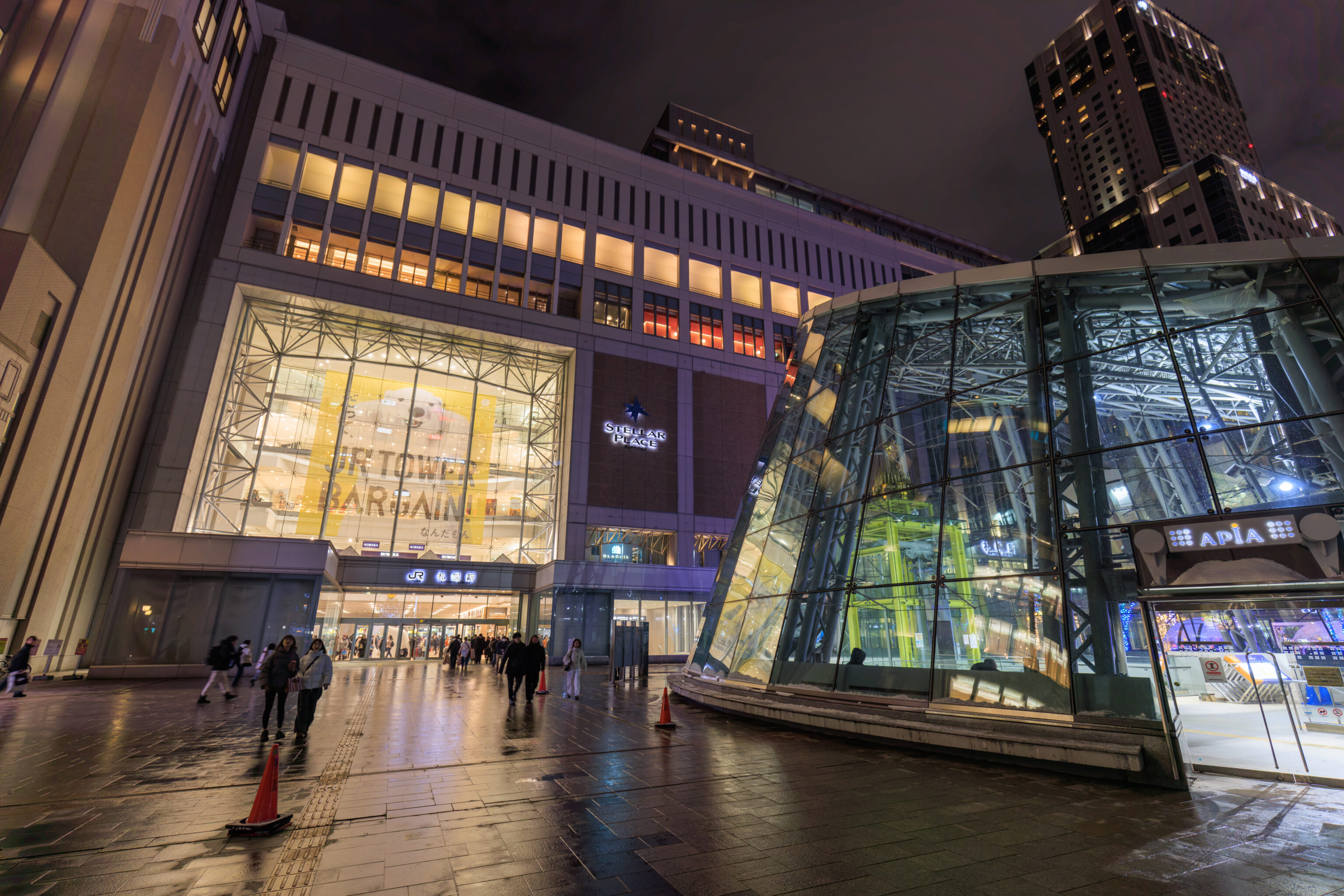

Sapporo Station is contained within a large and modern looking building.
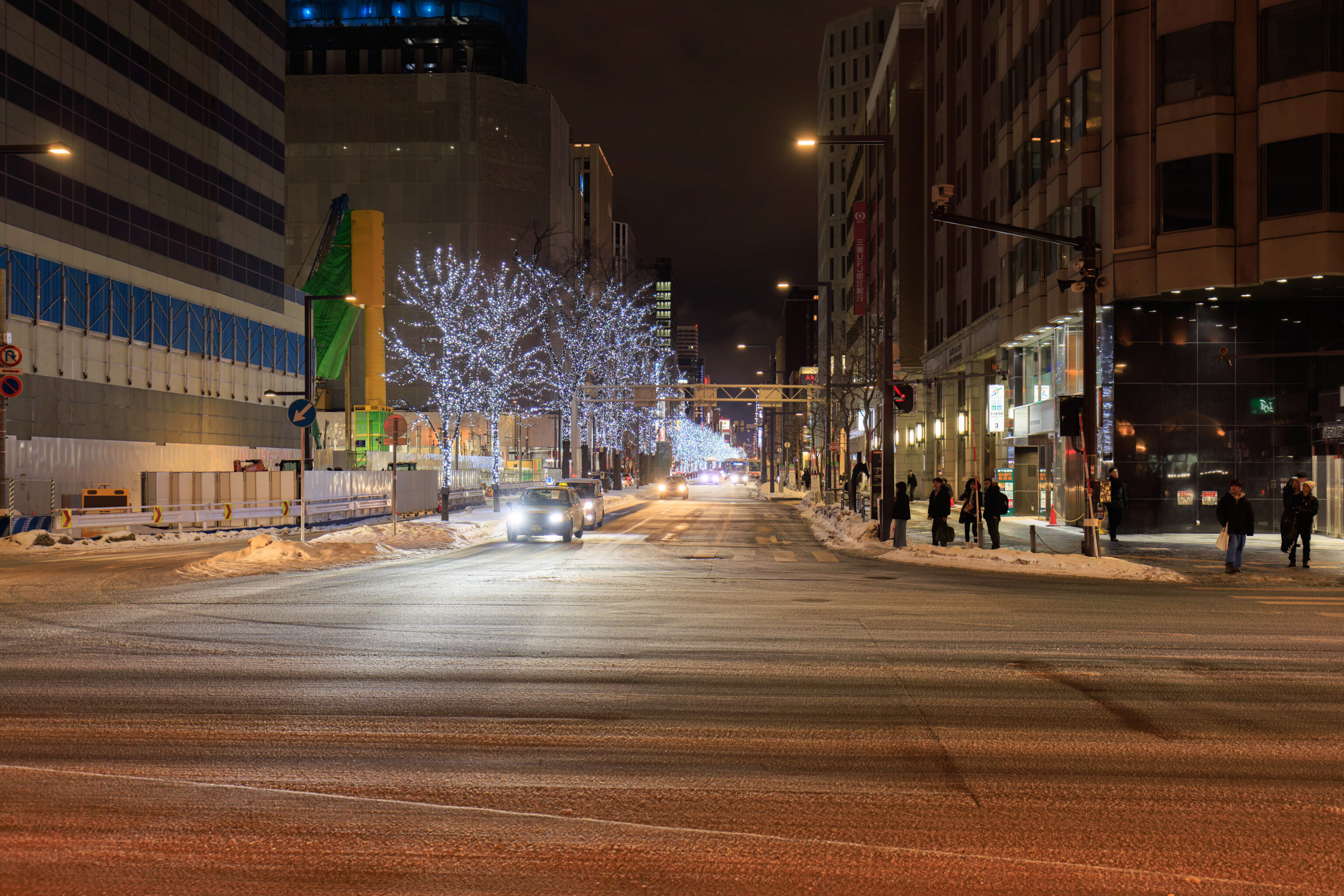
We walked back to the Crowne Plaza to end our only full day here in Sapporo. Tomorrow, we will be leaving quite early!

